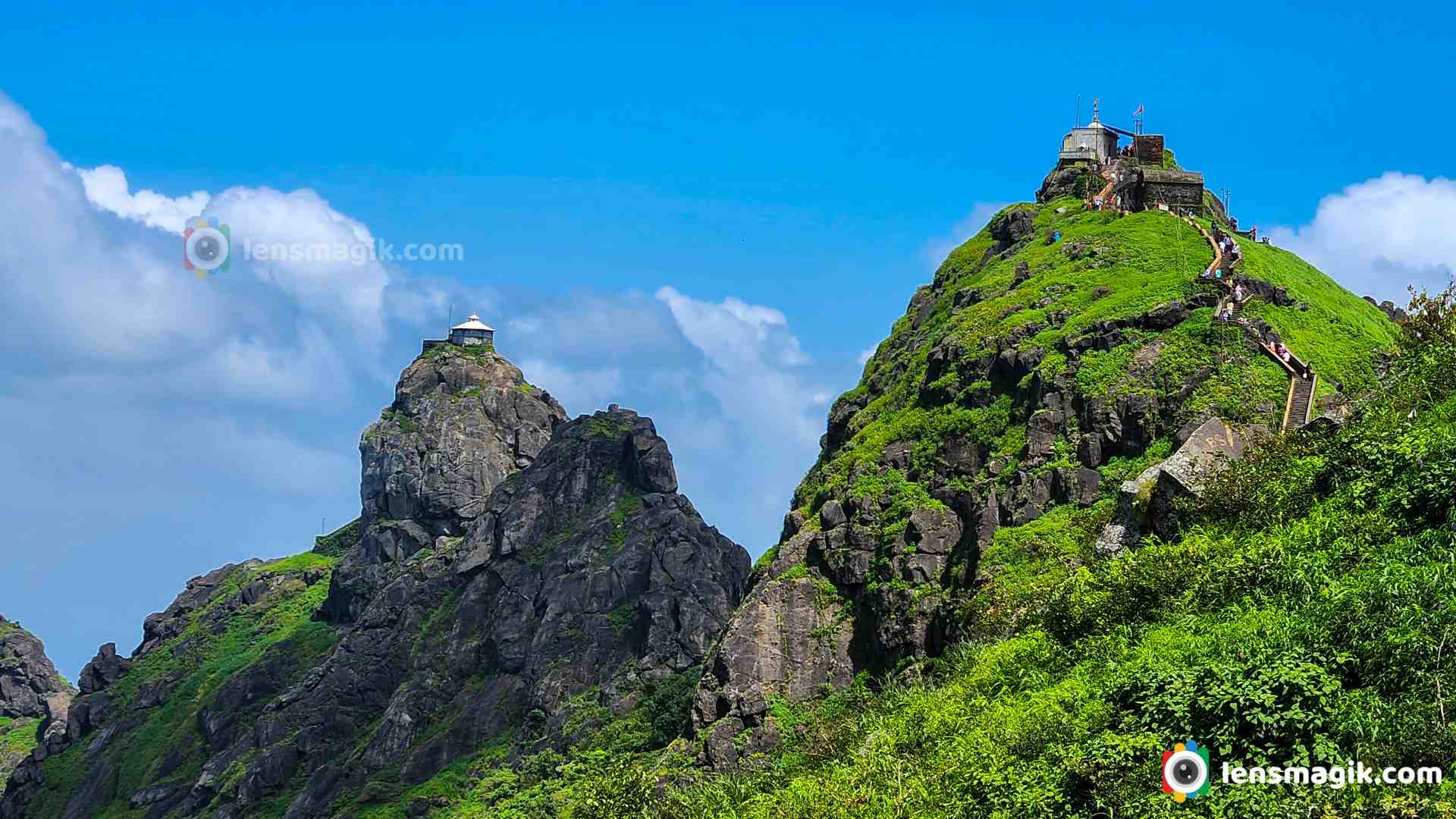
Girnar mountain is prominent hill range located in Junagadh district in Gujarat. Mount Girnar is highest peak of Gujarat. Girnar is known for its natural beauty and rich religious significance. It is popular pilgrimage site for Jains and Hindus. Mount Girnar is major Igneous plutonic complex which intruded into basalt towards the close of deccan trap period. In this complex of rock types identifies are Gabbros diorites , alkali- syenites , lamprophyres and rhyolites. Girnar is one of the five major Thirthas attributed to Panch kalyanakas of various Jain Tirthankaras.
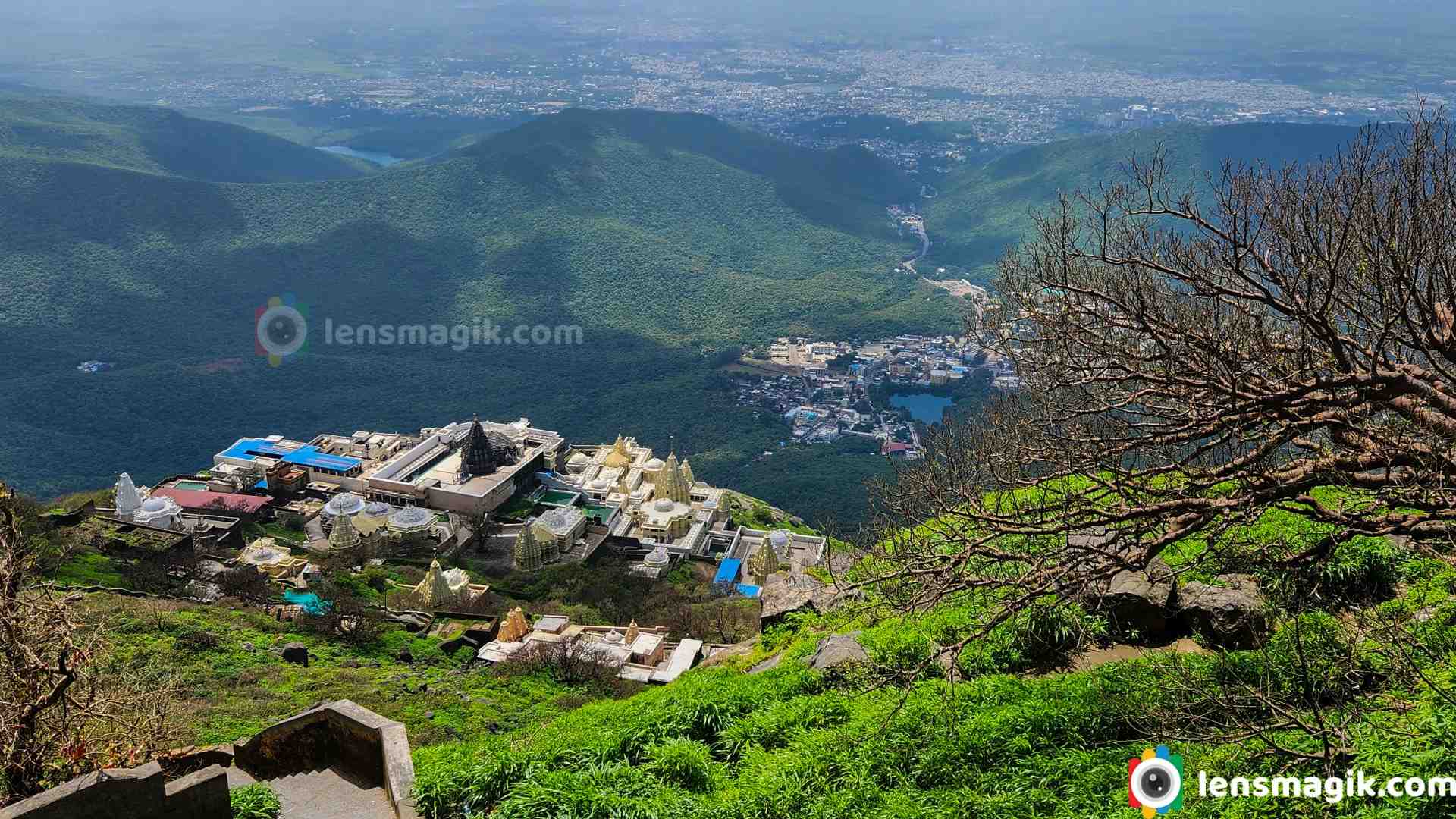
Key Features and Attractions of Girnar Mountain :
Jain Temples : Girnar mountain is home of several Jain temples. Neminath temple which is believed to be Nirvana site of the 22nd Tirthankar.
Hindu Temples : On Girnar mountains there are also Hindu temples as Dattatreya Temple and Ambaji Temple.
Religious Significance : Girnar is considered as scared site for Hindus and Jains.
Natural Beauty : Girnar is surrounded by Gir Forest. So it offers stunning landscape view from hill of Gir National Park and surrounded areas of hills.
Pilgrimage : During a year lots of Pilgrims visit Girnar during religious festival season .
Trekking : Girnar mountain offers challenging but worthy trekking experience.
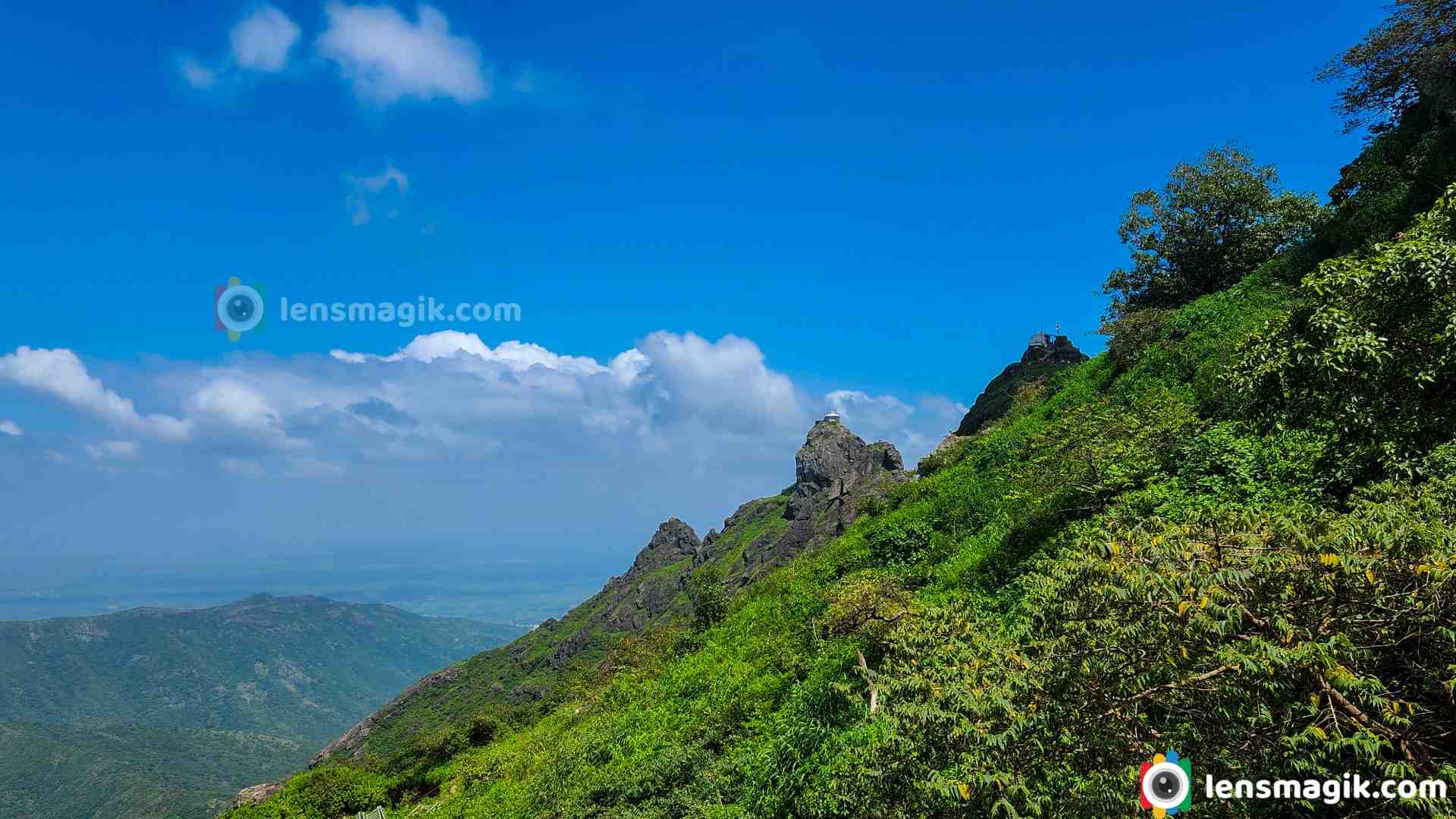
Temples At Girnar Mountains :
- Neminath Temple : Neminath Temple is Jain Temple dedicated to the 22nd Tirthankar Neminath.
- Dattatreya Temple : It is a Hindu Temple which is dedicated to Hindu Deity Dattatreya.
- Ambaji Temple : It is also a Hindu temple dedicated to Goddess Amabaji.
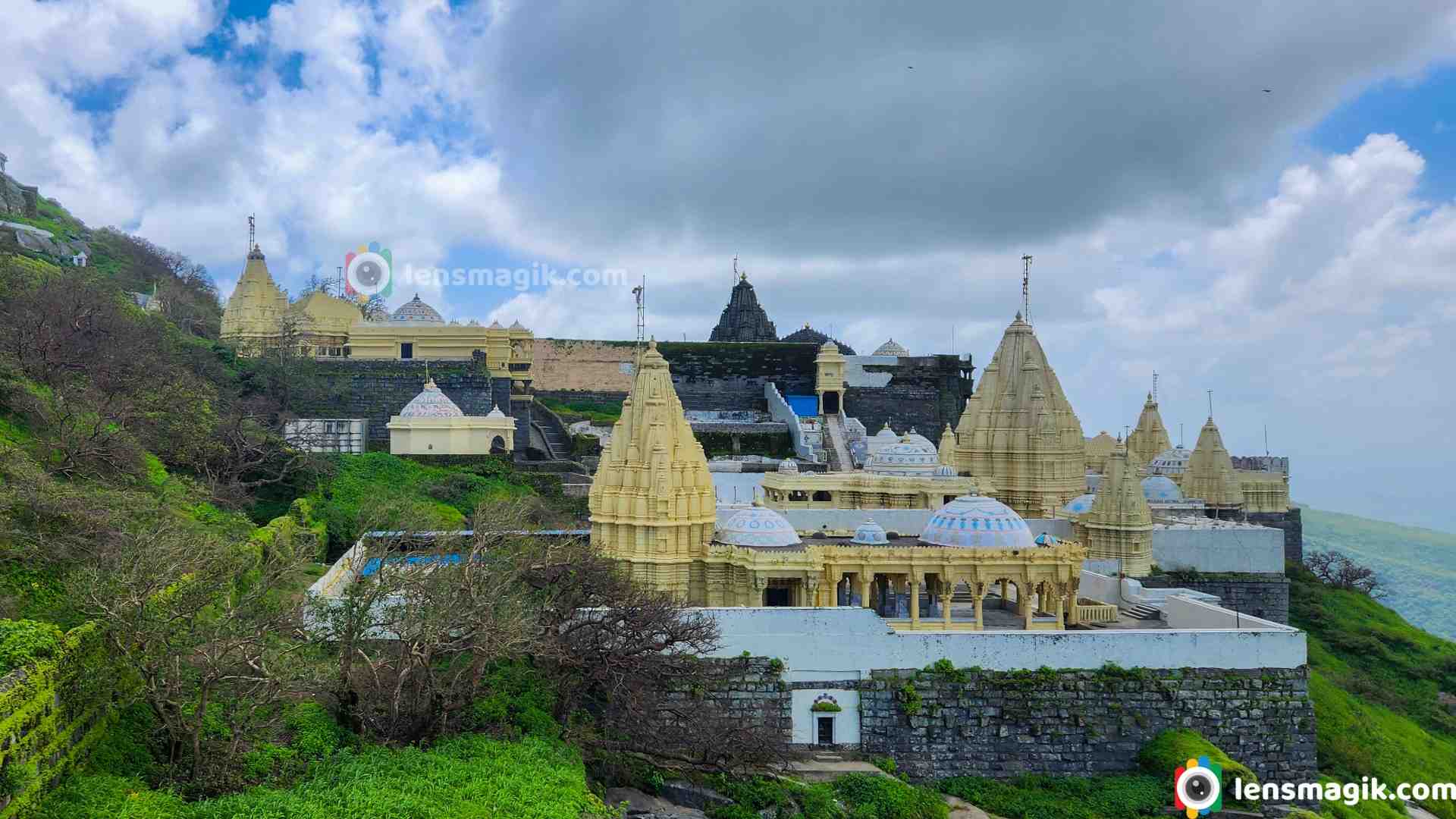
About Girnar Mountain :
- There are total 5 main peaks of Girnar Temple : Amba Mata, Gorakhnath, Augadh, Guru Dattatreya and Kalika .
- Total 9999 steps to reach peak of Girnar mountain. As per Route map of Girnar posted near Ambaji temple there are total 7514 steps. So steps may be vary but if you want actual steps then climb and count , lol... Also may be some shortcut developed by peoples.
- If you want to climb Girnar then you have to physically fit and also it will take at least 4 hours to climb.
- It is medium to trisome difficulty level climb of Girnar.
- Best Season to climb Girnar is Winter season.
- Ropway Cost at Girnar is approx. 700-800 INR for Two way. price may change. Child from 5-10 age ticket price is approx 350 INR.
- The Oldest part of present Jain temple was built in 1129 CE.
- Many people do Girnar Parikrama .
- Girnar is also known as Girinagar or Revatak Parvata.
- Girnar is highest peak of Gujarat.
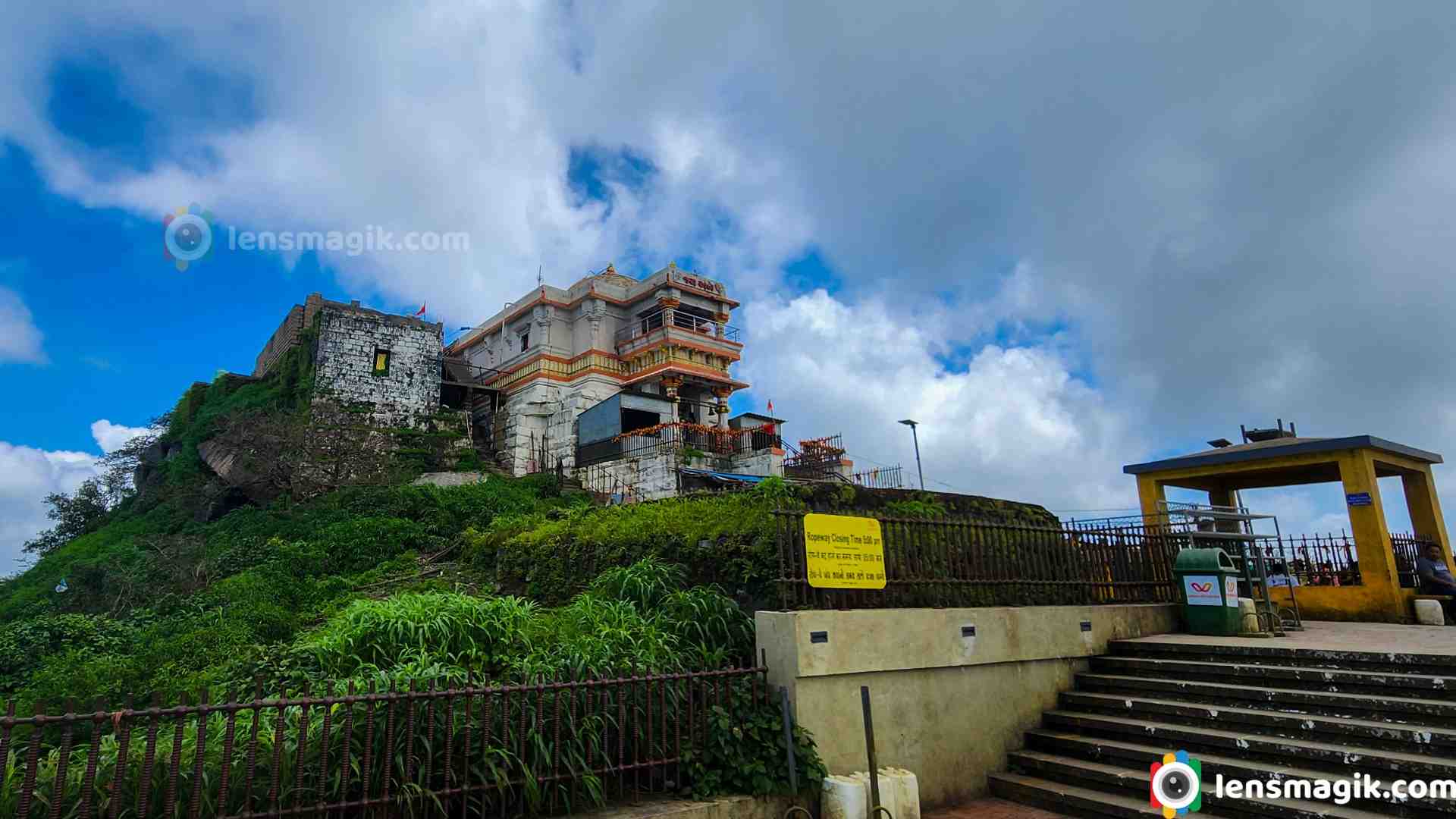
Places to Visit Near Girnar :
Gir National Park : Girnar is surrounded by Forest . Gir National Park is around 80 km from Girnar which is the only land of Asiatic Lions.
Somnath Temple : Somnath temple is around 99 km from Girnar takes approx 2 hours by car. It is one of the most famous temple of Lord Shiva . Also it is one of the 12 Jyotirling of Lord Shiva in India.
Sakkarbaug Zoological Gardens : Zoo is located in Junagadh and you can see Asiatic Lion and Lioness also international endangered spices captive breeding program for critically endangered spices.
Uperkot Fort : Fort located east side of the Junagadh. It begins in 319 BC during illustrious region of Chandragupta Maurya.
Madhavapur Beach : It is located on Porbandar and Veraval highway
Mahabat Maqbara :
Jatashankar Mahadev Temple : It is located near Mount Girnar. You can go their by trekking and have good view from the top.
Girnar Ropeway : Girnar Ropeway is one of the beautiful experience. Ropeway is very nice and from it you can see full 360 view of Girnar mountain range and also a dense forest around it. Most scenery panorama view can see from ropeway
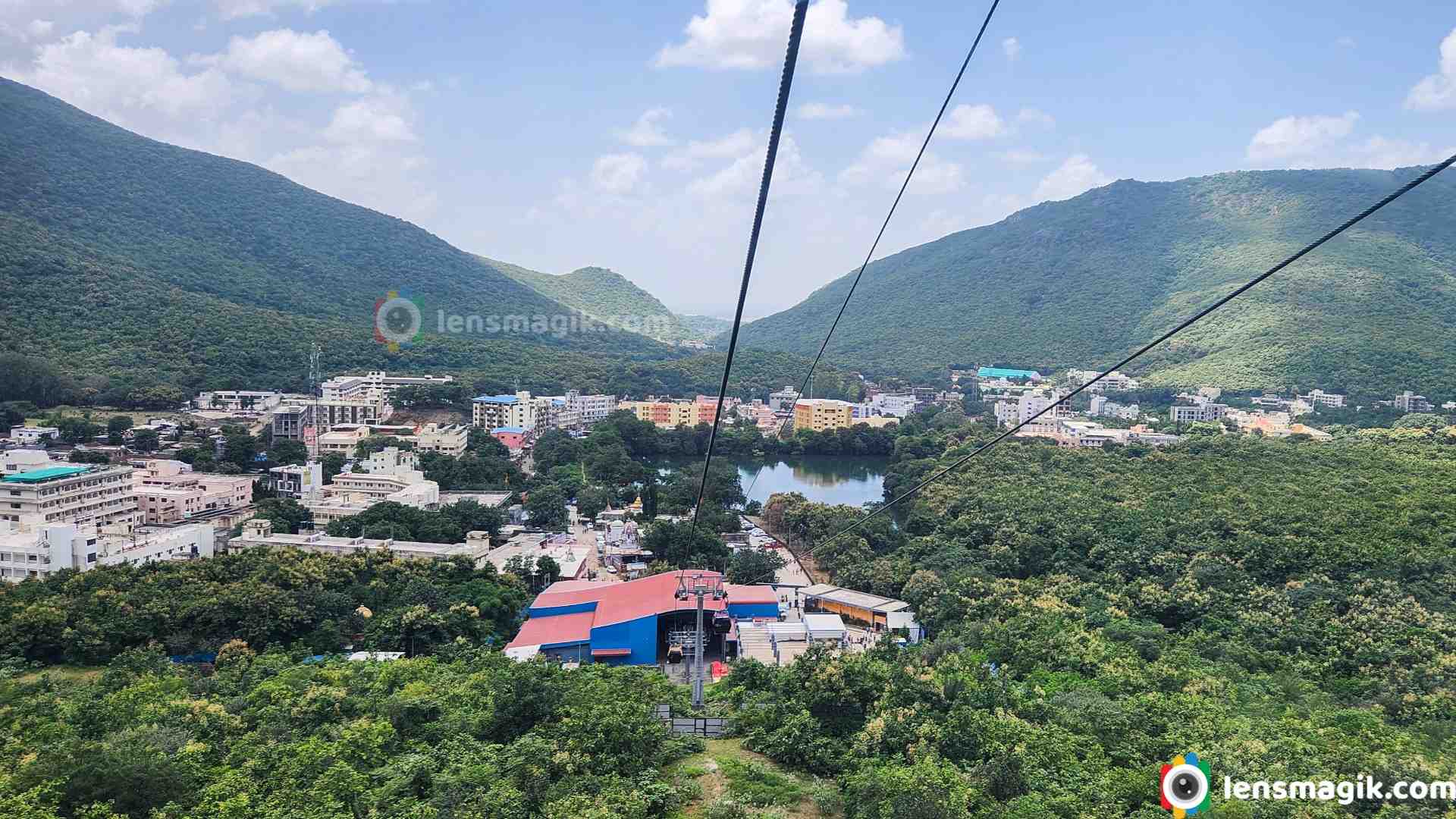
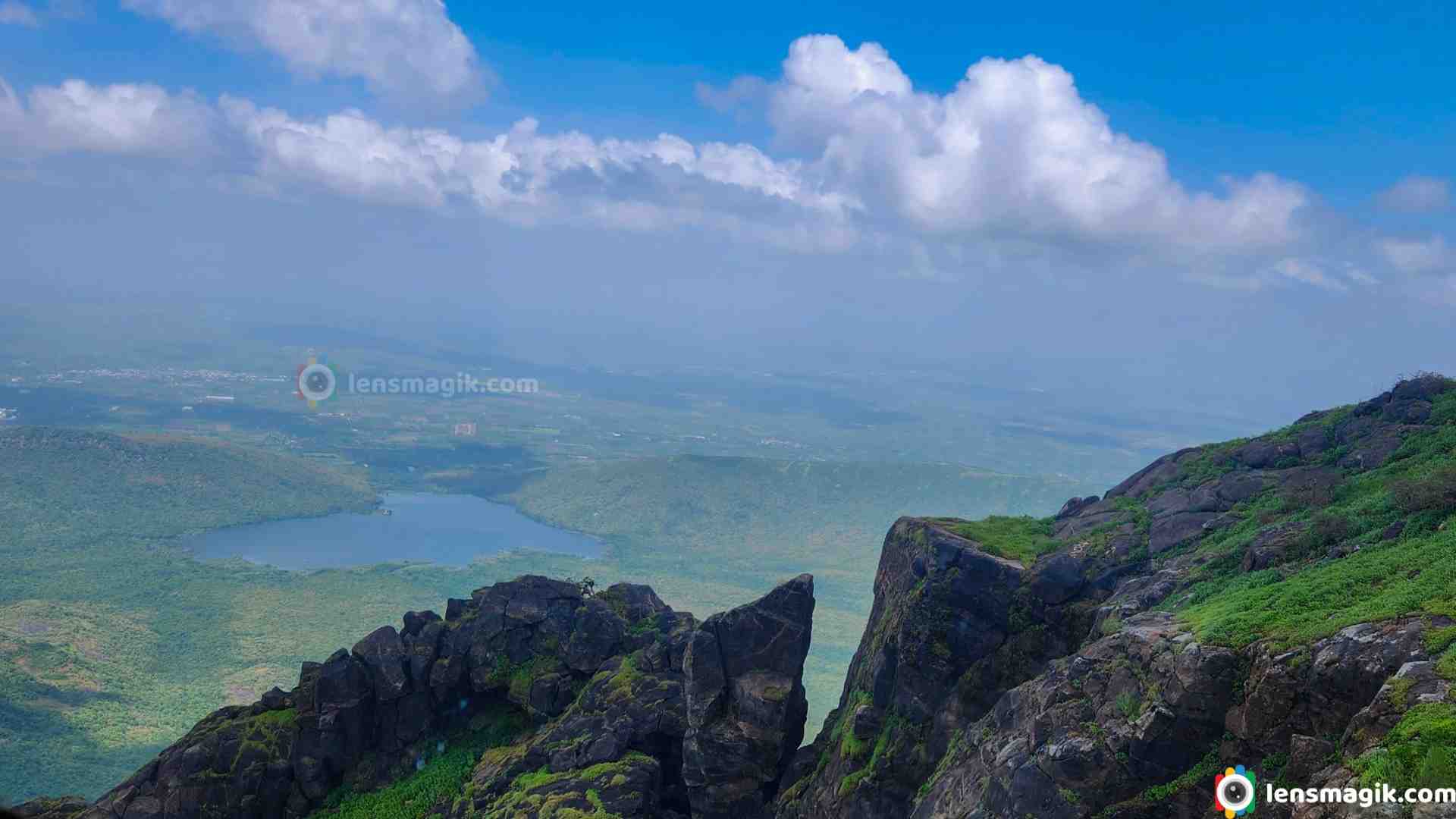
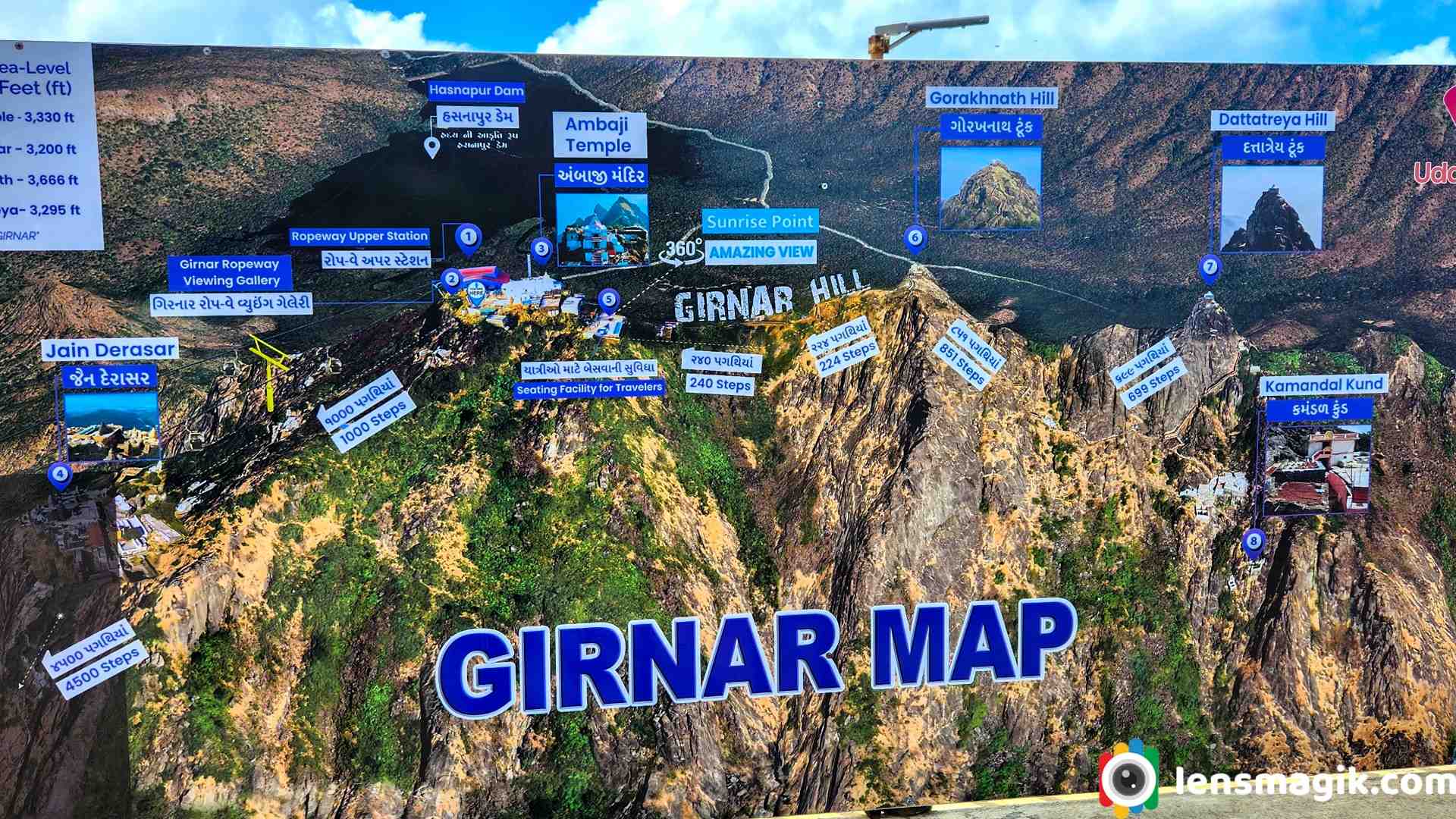
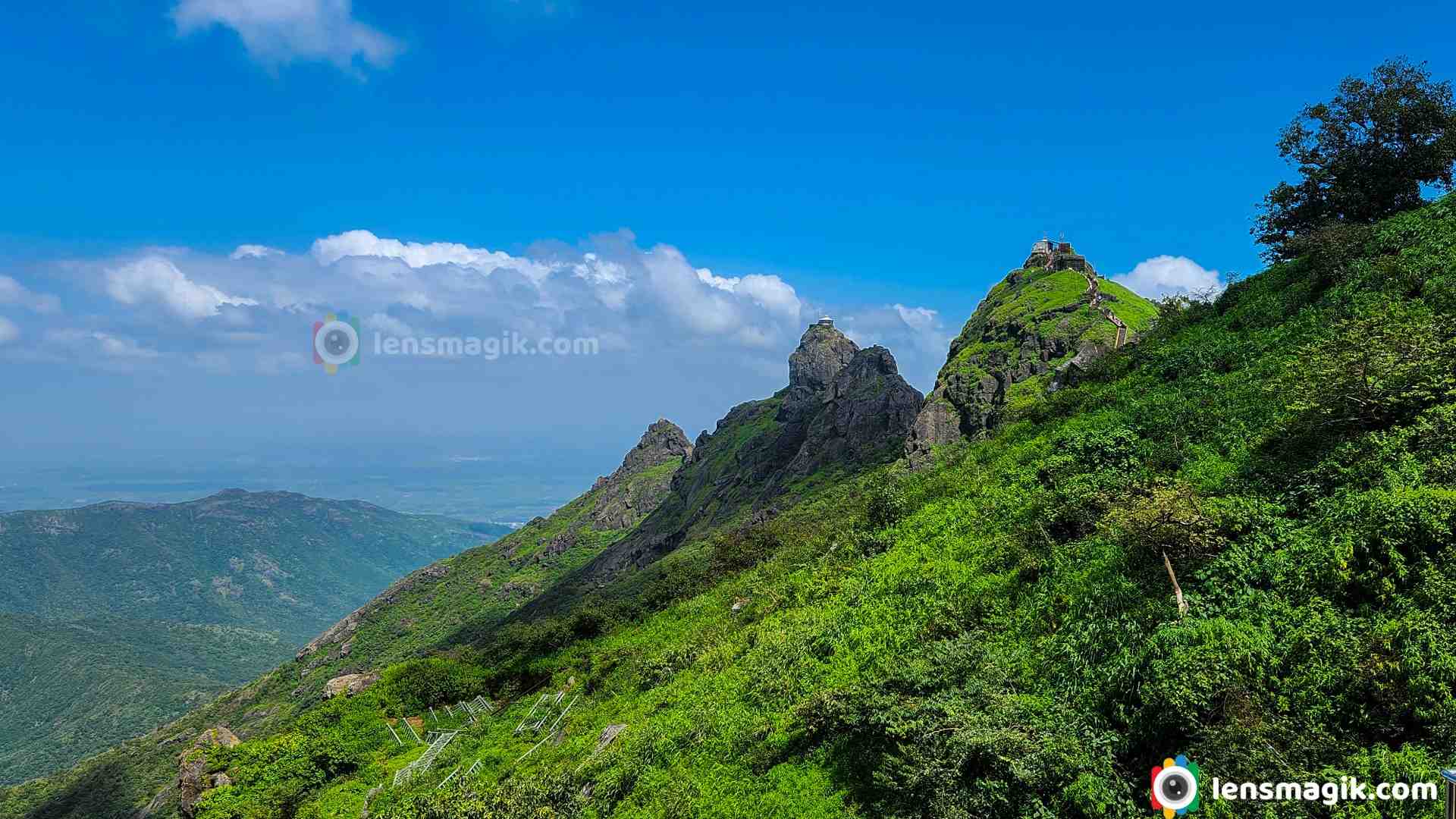
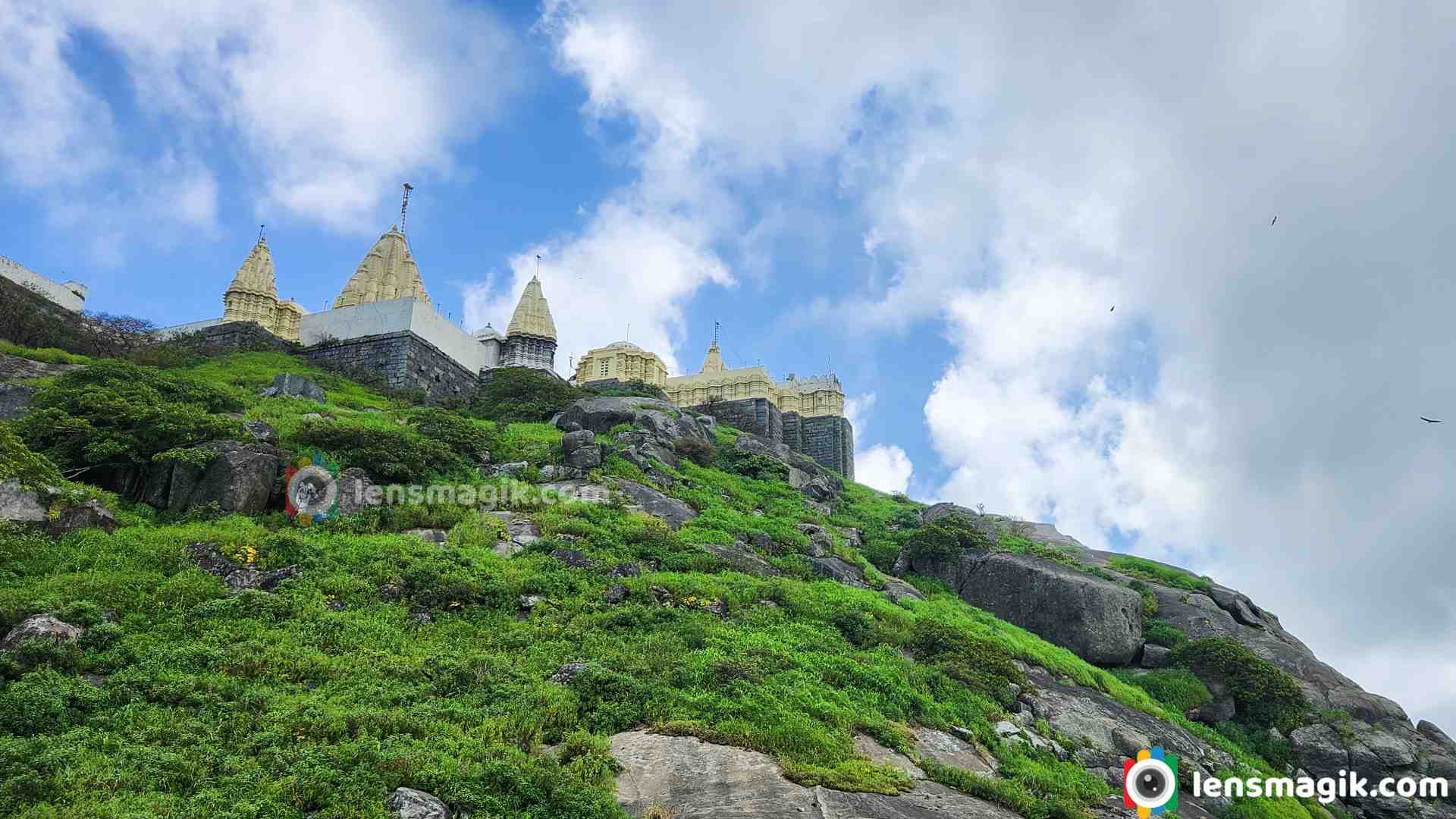
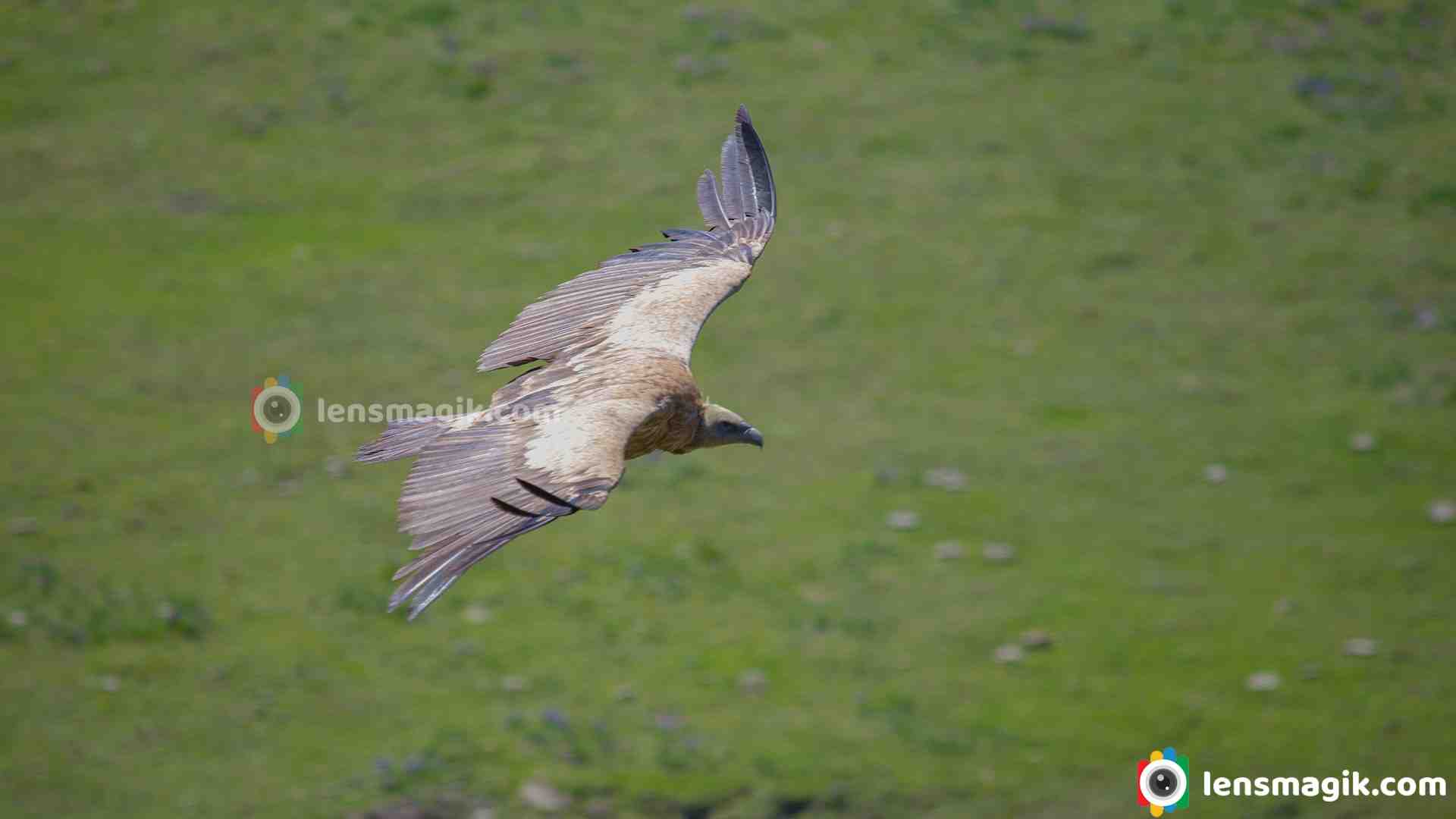
Himalayan Vulture is an Old World Vulture which is also known as Himalayan Griffon Vulture. It is a magnificent bird of prey which is play a important role for ecosystem at high altitude range of Himalayas. It is native at Himalayas and Northeastern India and Tibetan Plateau. In Old world vulture spices it is the second largest vulture. It is listed in nearest threatened IUCN red list. I capture Himalayan Vulture twice in different state of India. First time i capture at Chandrakhani pass during manali trekking in Himachal Pradesh. Second time i capture at Uttarakhand during Har Ki Dun Trek. I also capture endangered spices of Egyptian Vulture at Gujarat.
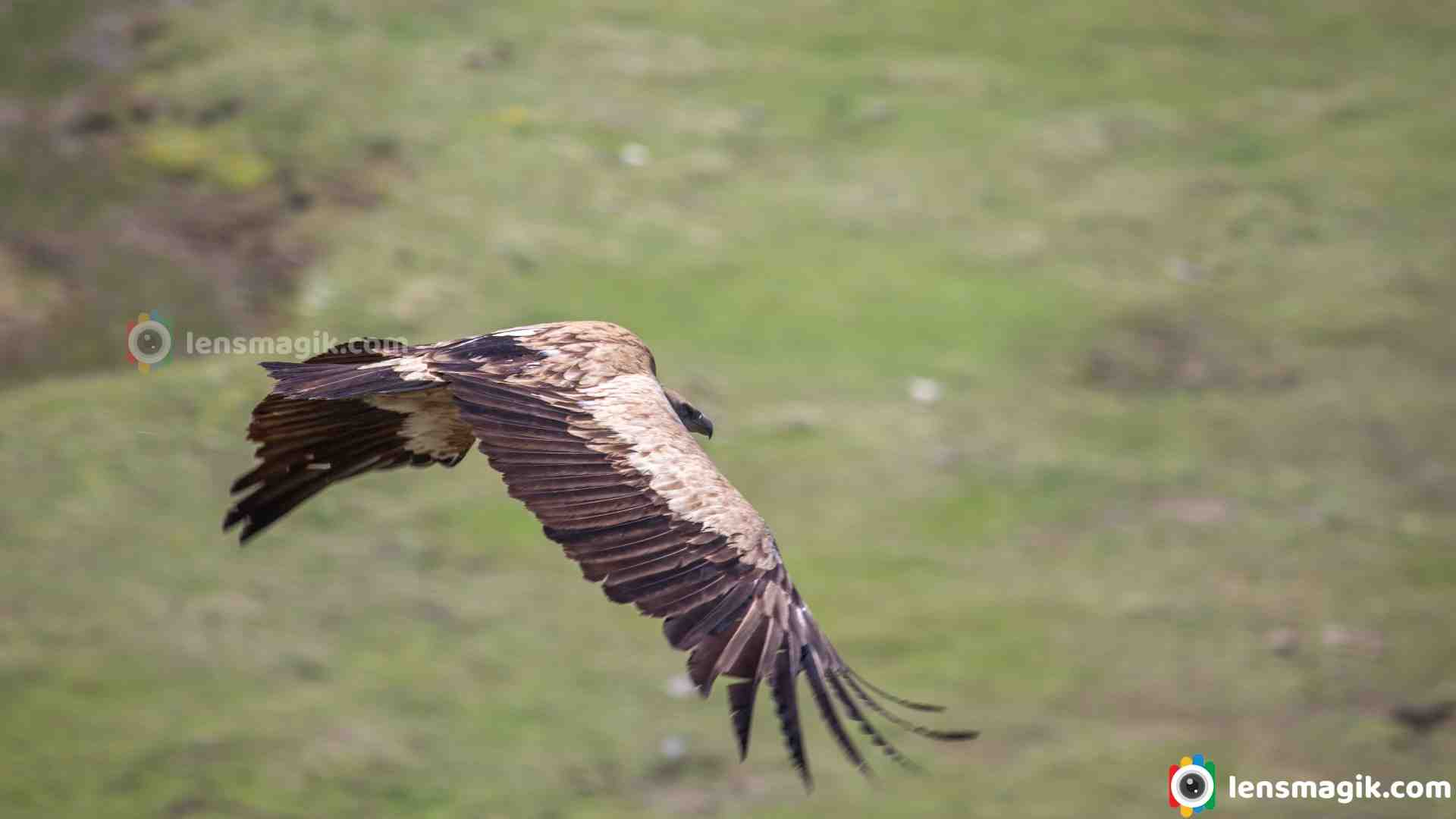
Description of Himalayan Vulture :
- Himalayan Vulture has dark brown feathers.
- It has massive wingspan about 10 feet.
- Weight of Himalayan vulture is around 6-12 kgs.
- Himalayan Vulture have a bulky build, with a stout bill and a loosely feathered ruff around their neck.
- Adult Himalayan Vulture has yellowish bill and pale blue facial skin. Their plumage is typically brown, with paler areas.
- The whitish down on the head of immatures changes to yellowish in adults who have a long and pale brown ruff with white streaks and long spiky ruff feathers
- Himalayan Vulture lives in Himalayan range and higher regions of elevation of 1200-5500 meter range.
- It is distributed from Kazakhstan, Tajikistan , Afghanistan , Iran and Pakistan to India, Nepal, Bhutan , Mongolia and western China.
- Himalayan Vultures are primarily scavengers and they feed on carcasses of large mammals.
- Vultures play crucial role to maintain ecosystem by removing dead animal decaying which is helpful for not spreading diseases.
- Himalayan Vulture is listed in nearest Threatened in IUCN red list.
- They are treated because of habitat loss, poisoning from veterinary food and food scarcity. Diclofenac , Aceclofenac and ketoprofen are dangerous drugs for them.
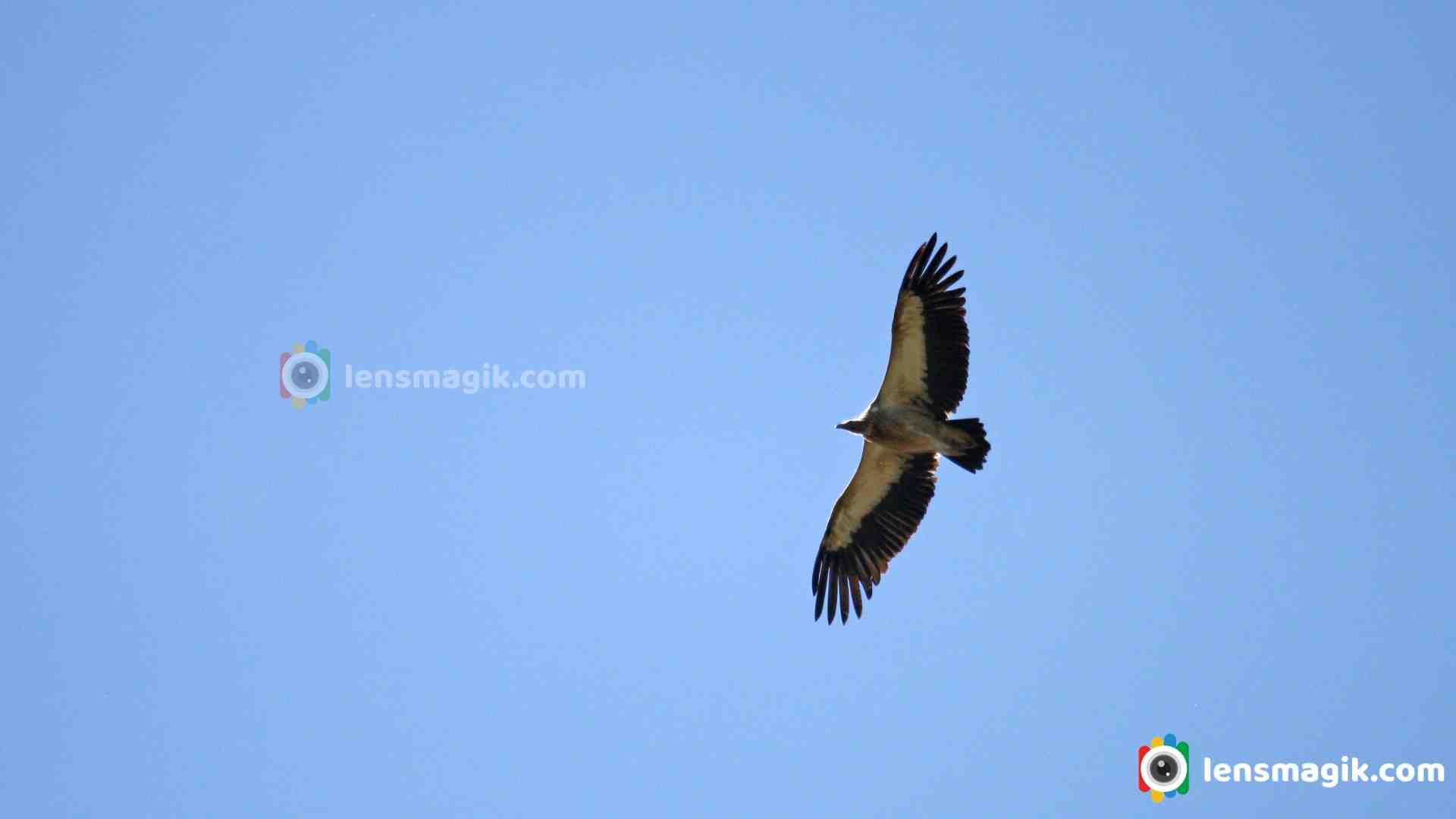
Himalayan Vultures adapted high altitude environment. They have ability to soar on thermal. They have played historical role in " Sky Burials " in Tibetan Buddhist tradition. Their breeding season starts from January. They lay single white egg with red spots during December to March. Their main cause of threatened is habitat loss and poisoning from veterinary food. In India lots of vulture spices are in endangered due to habitats. Government and bird lovers and NGO's are try their best to survive them. People also need awareness about it too.
I clicked first time Himalayan Vulture at Manali Trek to Chandrakhani Pass. At that time i am not good photographer and also they are at too much height so can't got good quality photos. Second time i clicked it at Har Ki Dun trek in Uttarakhand. This time also they are at good height but got some good quality photos of them to identify easily.
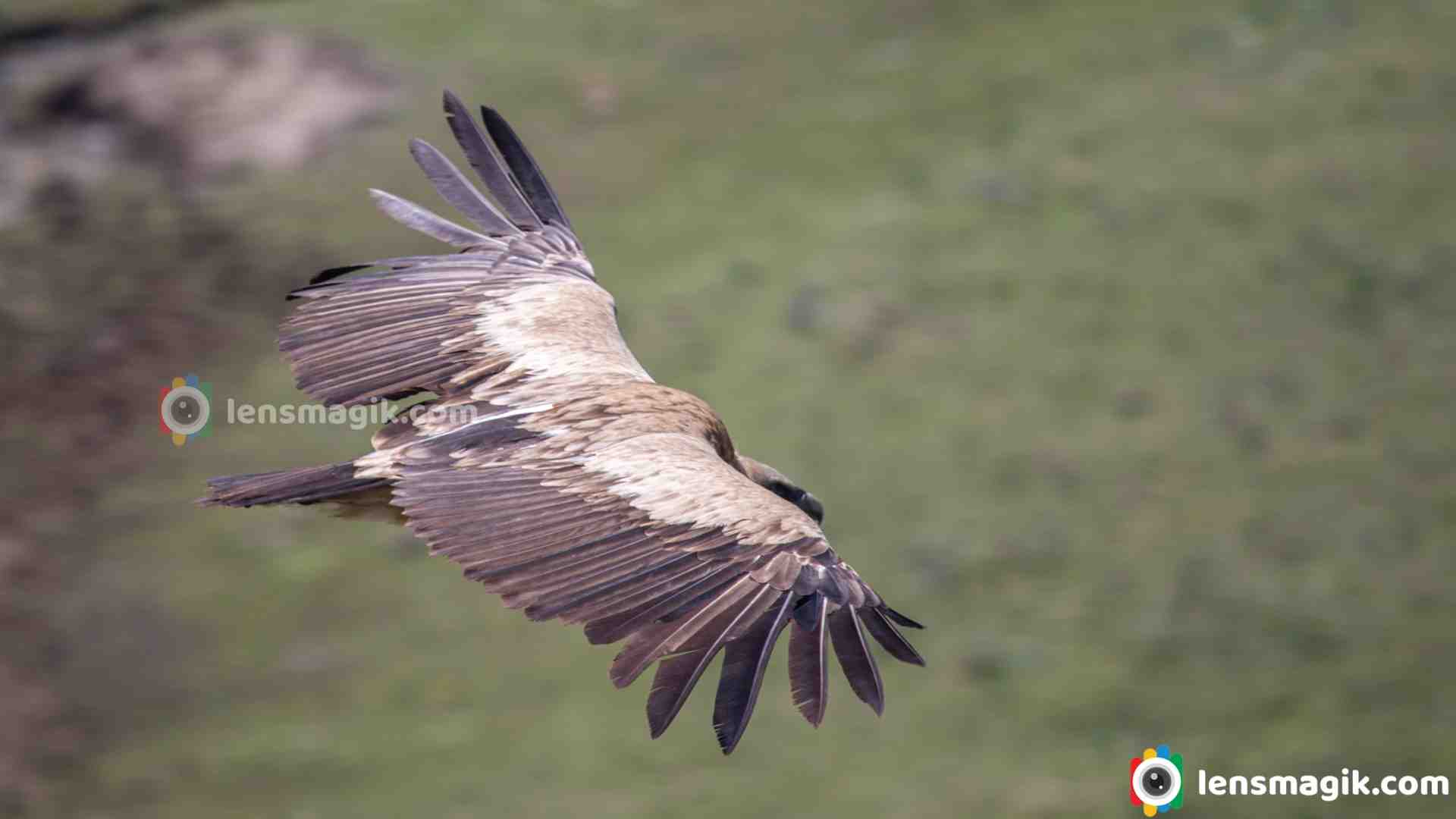
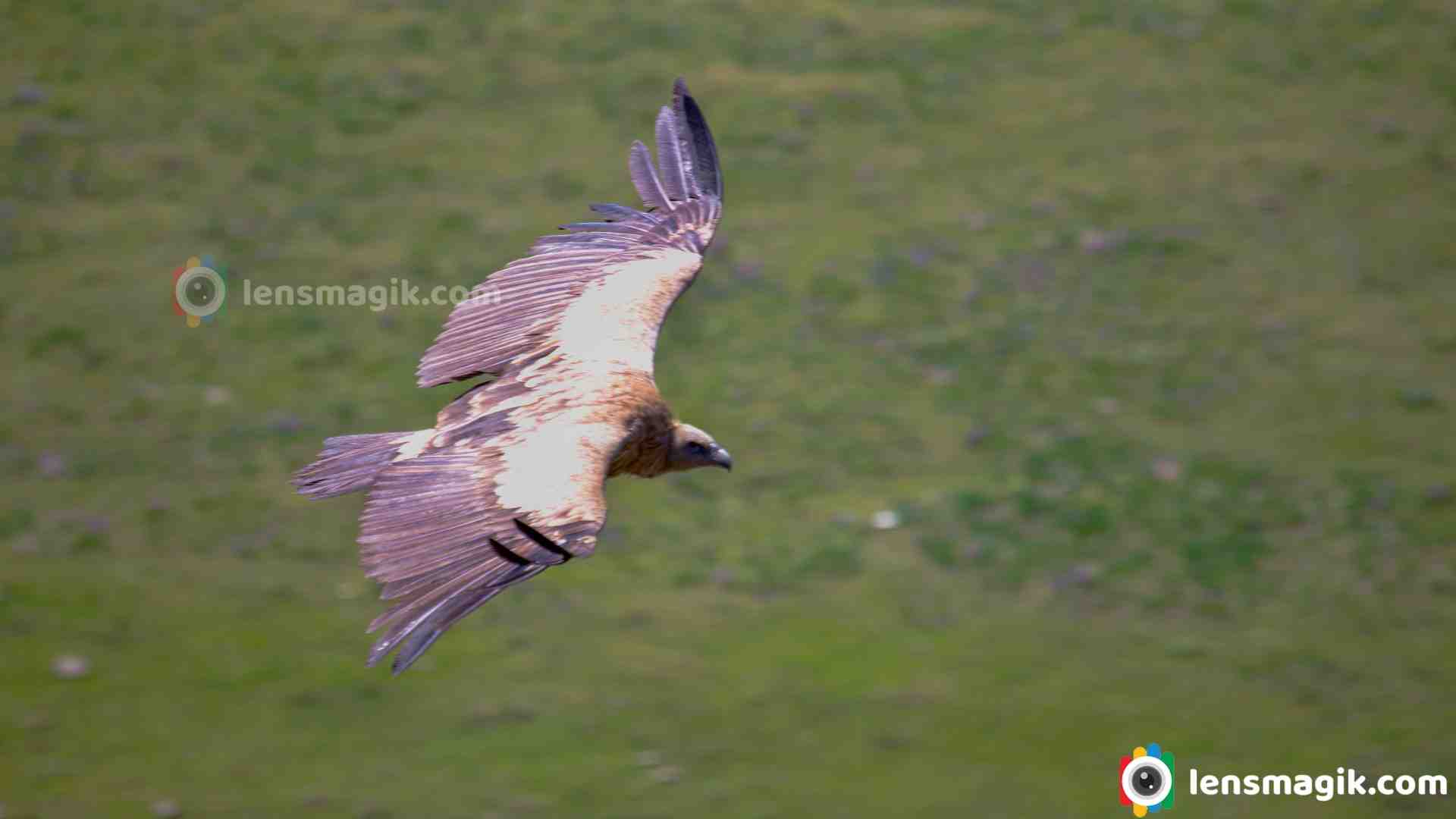
Gear used : Canon 6D, Canon 1000D, Canon 100-400mm lens
Location : Har ki Dun trek , Manali trek To Chandrakhani pass
Read more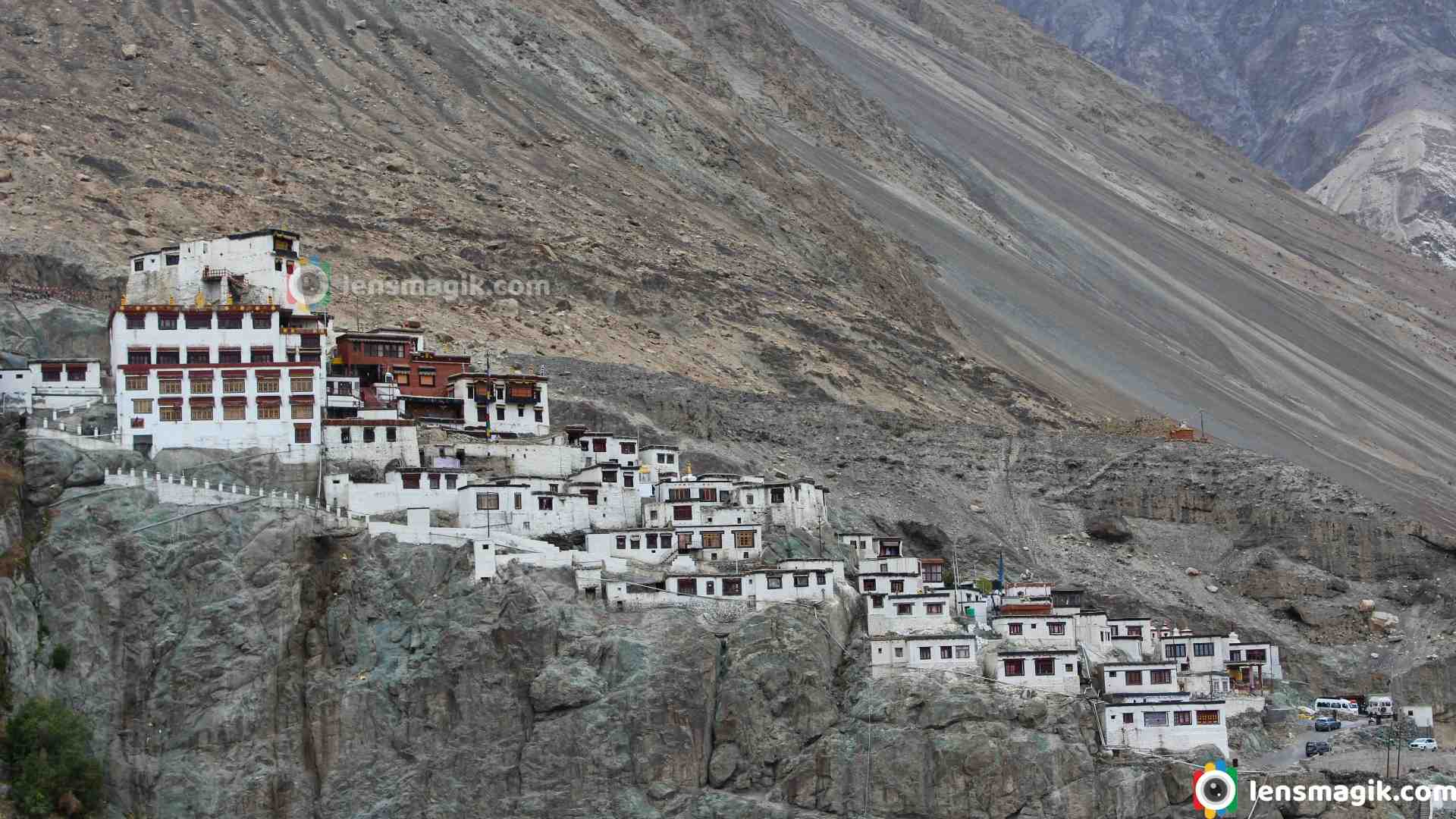
Diksit Gompa is also known as Deksit Gompa and Diksit Monastery. It is situated in Nubra valley in Leh District in Ladakh. It is also a largest and oldest monastery in Nubra. Monastery belongs to Tibetian Buddhism sect Gelugpa. It was founded by Changzem Tserab Zangpo. There is a large statue of Crowned Buddha ( Cho Rinpoche ) at monastery in prayer hall. Diksit Gompa is located near Nubra Valley. You can visit Diksit monastery when you visit Nubra valley or return back from nubra valley. From the monastery you can see beautiful scenery of mountains, clouds and Shyok rivers and a slot a valley. Ladakh is a cold desert mountain in India. So weather condition may change anytime. Also it is very cold due to High altitude so you can face some altitude sickness too.
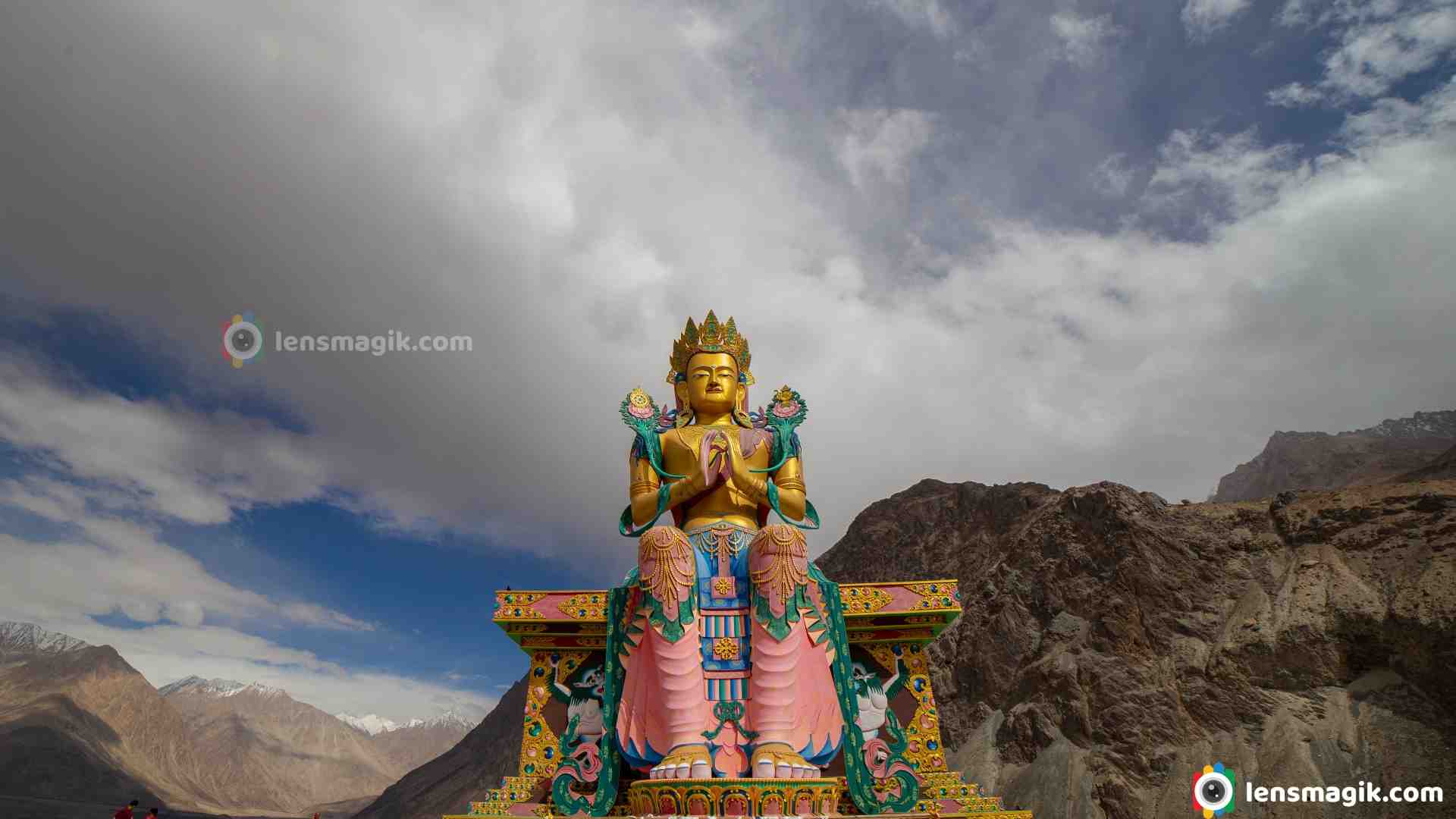
Key Features of Diksit Monastery :
- From Diksit Monastery you can see beautiful panoramic view of Nubra Valley.
- Monastery is famous for big statue of Maitreya Buddha and its about 106 feet ( 32 meters ) high.
- Monastery features Tibetan Buddhist Architecture with carving , Thangkas and colorful murals.
- Diksit monastery founded in 14th century.
- Diksit monastery playing important role for saving Tibetan Buddhist Culture in this region.
- You can visit Diksit monastery in Nubra valley by passing Khardung la pass which is situated at 5359 meters height.
- The monastery administration runs school with the help of Tibet Support Group which is non Government organization.
- Desmoche Festival held in february which is known as a "Festival of The Scapegoat".
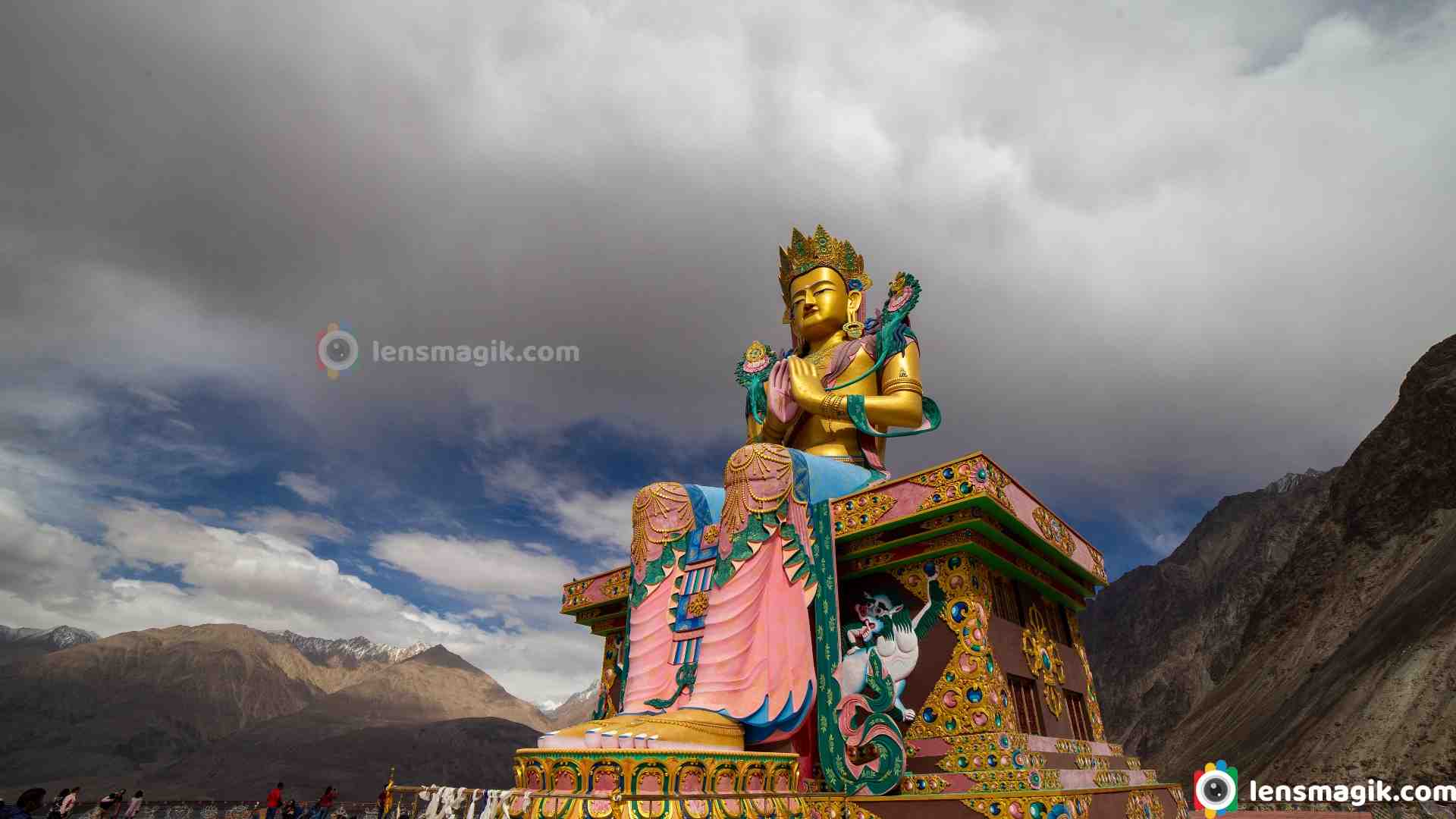
Diskit monastery is located above flood plains on hills near to Shyok River in Nubra valley. Village and valley is on low elevation so climate is mild compare to the Leh and Pangong Lake. Valley is called Orchard of Ladakh because of creating lush vegetation in the valley. It is also a home of Double Humped Bactrian Camal . Valley is also a caravan route between Tibet and China. Village is connected with Leh via Khardung La pass. During winter from October to may road may closed or disrupted because of snow. From Leh to Nubra valley road is also known as The Highest Motorable road in the World. At Nubra Valley and Pangong Lake you can see beautiful nightsky with huge number of sky and if you are luck you can see milkyway by your own eyes.
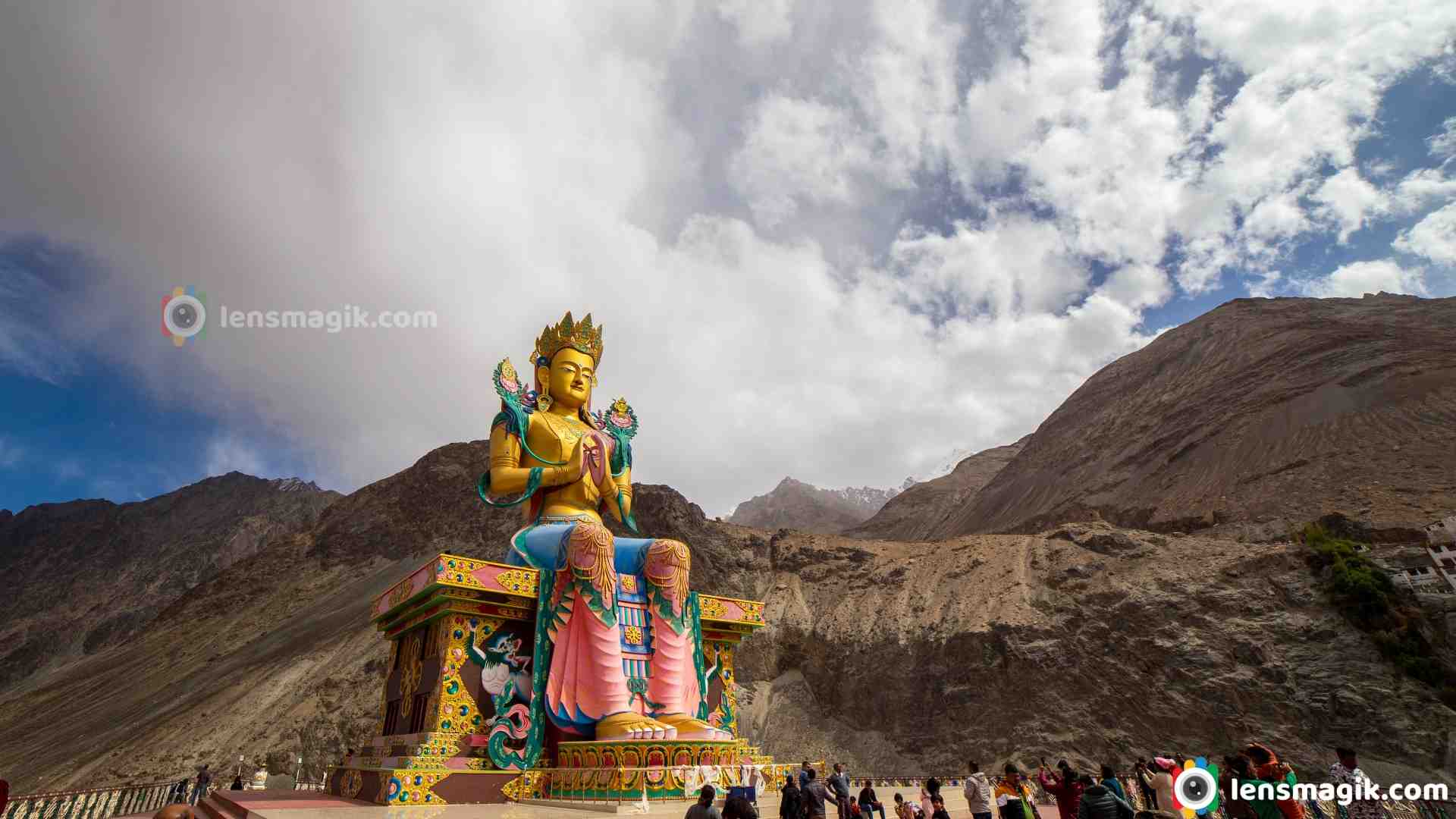
Best Time to Visit Leh Ladakh :May to September is the best time to visit Leh Ladakh. During winter roads are obstructed due to snowfall.
Places to Visit Near Diskit Monastery : Nubra valley is the place where Diskit Monastery located. In Nubra valley you can do Camal riding, ATV bike ride and also visit Turtuk Village ( No mans land between India and Pakistan ) with special permission of Indian Army. You can go to Pangong Lake from Nubra valley and also return back to Leh city too as per your itinerary.
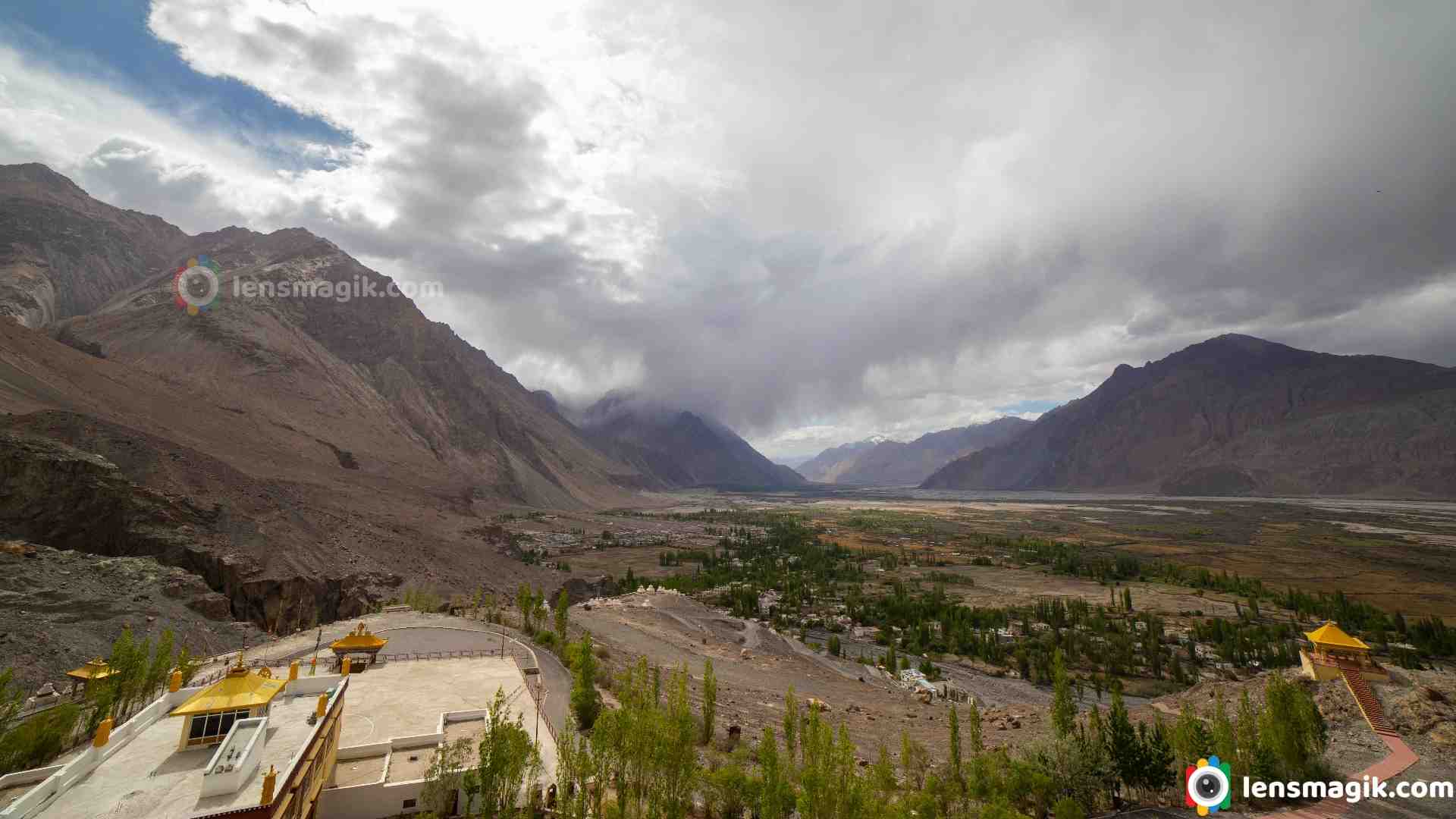
Do and Don't at Pangong Lake and Ladakh Trip :
- Leh Ladakh is at high altitude location so acclimatize your self first for a day. Stay atleast 1 night at Leh and do not walk much just acclimatize your body with wind and cold.
- During travel from Leh to Khardung La pass you can feel motion sickness and also altitude sickness too. Low oxygen level and altitude climbing make you feel not better.
- Headache, Dizziness, Vomiting Nausea, Isomnia and Appetite loss are common symptoms of Altitude sickness. So keep proper medicines with you and i also suggest keep Oxygen bottle with you while travelling from Leh. Your tour manager can manage it. If you feel not much better after that then reduce your altitude level back to hotel and rest or go to local hospital.
- Do not throw garbage on road or anywhere. Do not waste water. Listen to your guide instructions carefully and follow them.
- Children below 5 years are not suggested to visit Leh Ladakh.
- Do not drink alcohol during Leh ladakh Trip.
- Keep necessary medicines with you before Leh Ladakh Trip. Consult your doctor before visiting Ladakh if you are a patient of Blood pressure , Diabetic and lung diseases. Smoking is also avoid in Leh Ladakh trip.
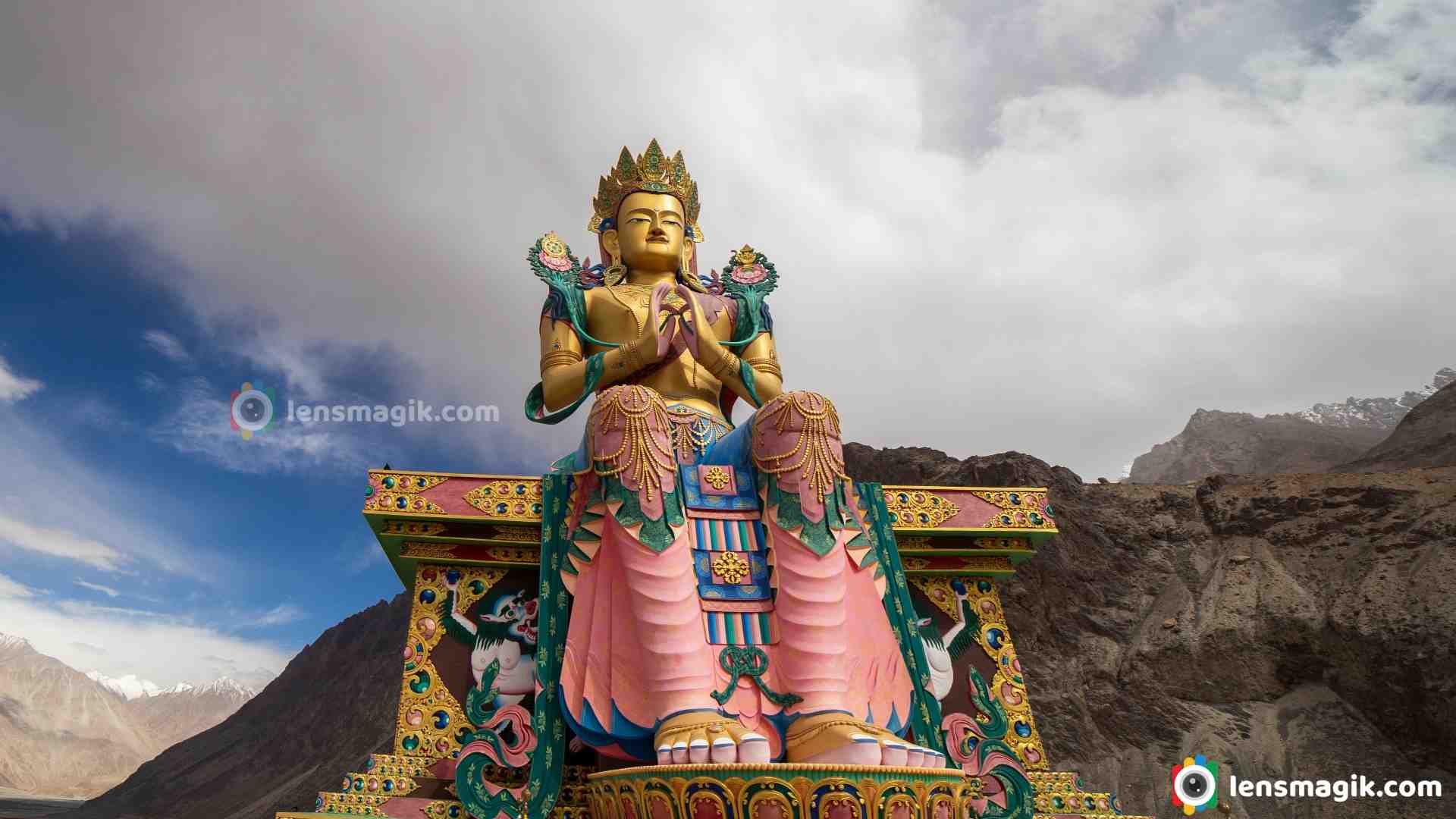
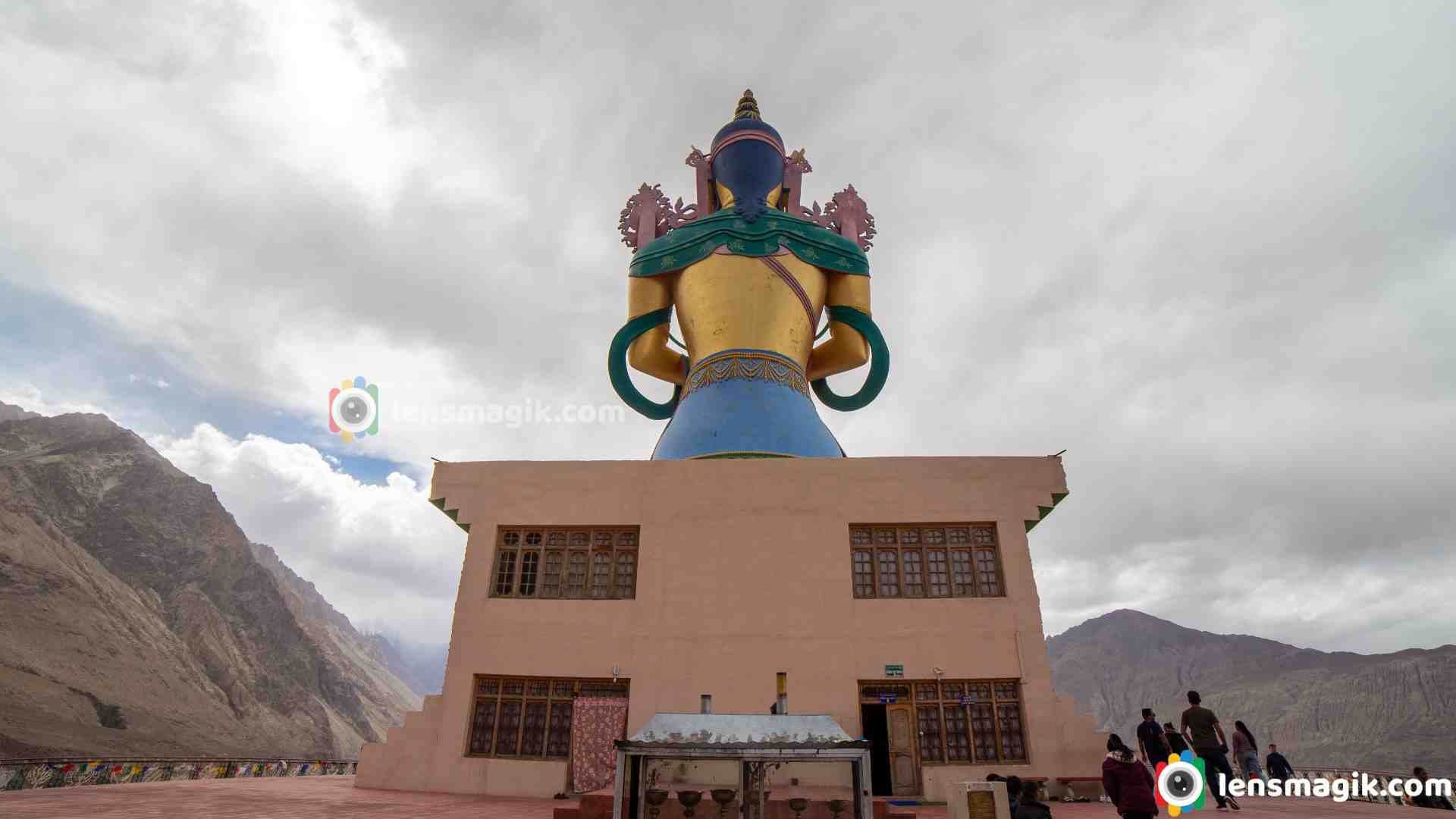

Camera Used : Canon 6D, Canon 14mm lens, Canon 1000D, Canon 18-55mm lens
Read more
Gurudongmar lake is one of the highest lake in the world. The Lake is at height of 5430 meter around 17800 ft. Gurudongmar lake is located in Sikkim state in India. The lake offering spiritual and serene experience. It is surrounded by snow covered mountains of Himalayas. You can visit Gurudongmar lake via visiting Lachen. From Lachen you can go via Thangu valley and then Gurudongmar lake . Lake distance from Lachen is around 2-3 hours drive by car and approx. 65 km. Gurudongmar lake is very near to Tibet border. The lake you visit with permission of Sikkim Tourism in advance. The Lake is named after Guru Padmasambhav ( Guru Rinpoche ) who is founder of Tibetan Buddhism . From Gangtok lake distance is 190 km.
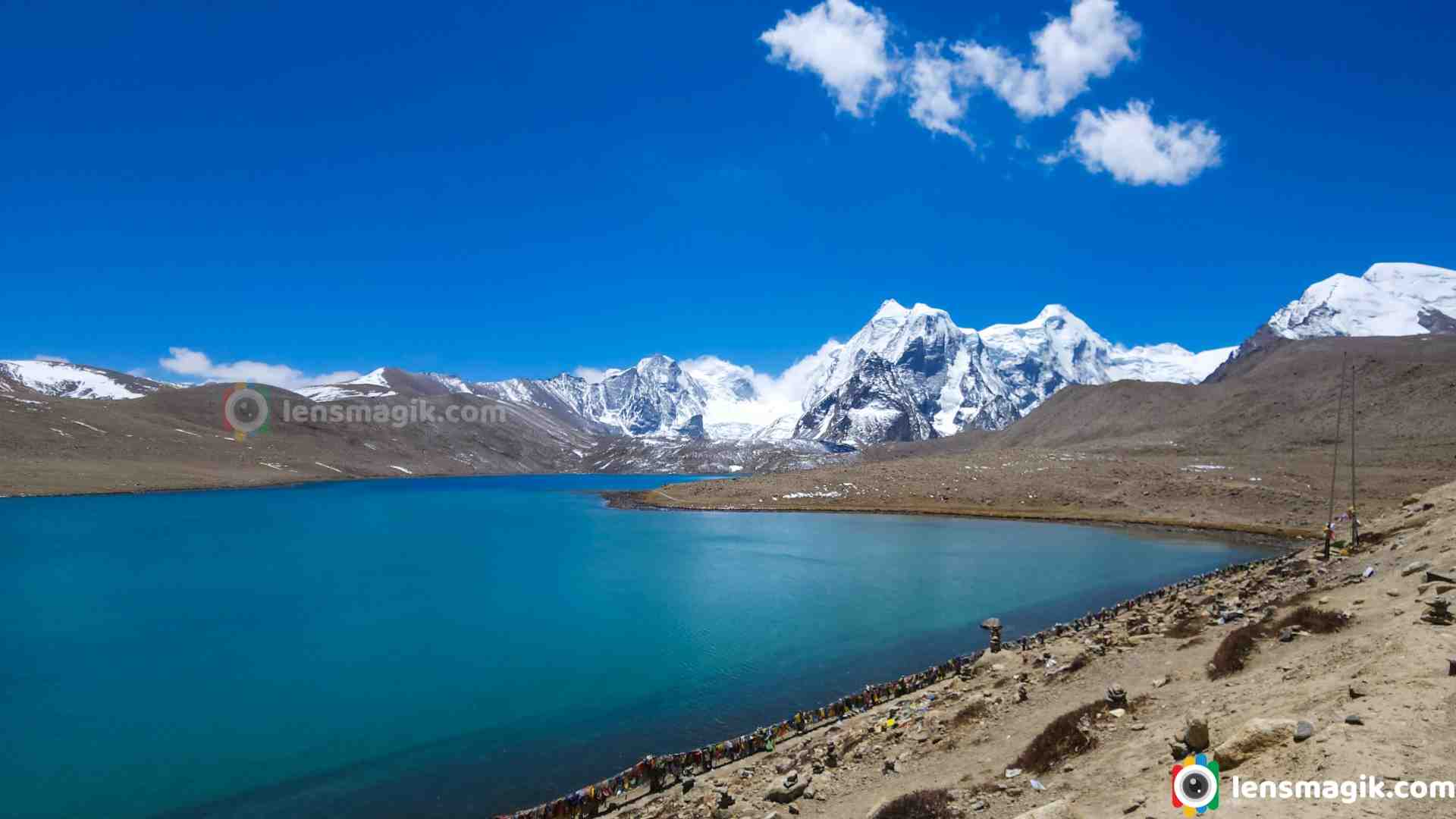
Things to Know about Gurudongmar Lake :
- Lake water is crystal clear and you can see the reflection of surrounded mountain in lake water. It makes lake stunning beauty and peaceful atmosphere.
- The Gurudongmar lake is at high altitude so it is challenging for trekkers and enthusiast but worthy and rewarding destination.
- The lake freeze in winter and also may be the route from Lachen to Gurudongmar Lake may not open. So if you want to visit lake then plan in summer.
- There are many wildlife animal you can see near lake like Yak, blue sheep and high altitude animals.
- A special permit required for visiting lake. You can obtain permit from Sikkim Tourism Department.
- Lake is very near to Indo Tibet border area so follow rules inform by your local guide.
- Acclimatize before visiting lake. You can stay at Lachen for a night and then next day visit Gurudongmar lake it will be very helpful to be acclimatize.
- At lake it is too windy and cold. So you may face some breathing problems and also low oxygen level so do not spend much time if it is too windy. You may face some altitude sickness.
- Weather can change in while so follow your guide instructions.
- Wear warm cloths and in layers to protect yourself from cold.
- Lake length is around 5.34 km and 290 acers of area.
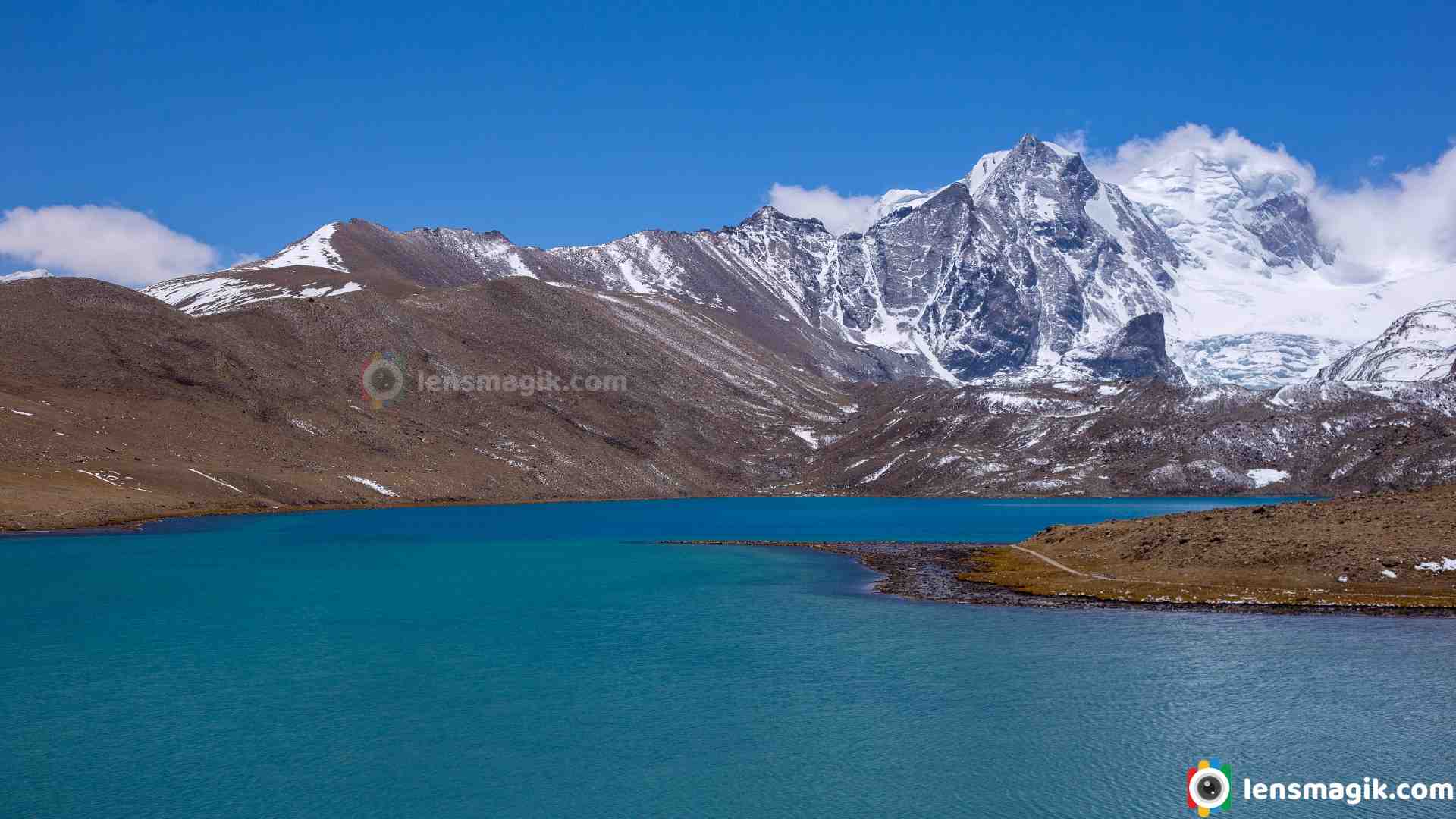
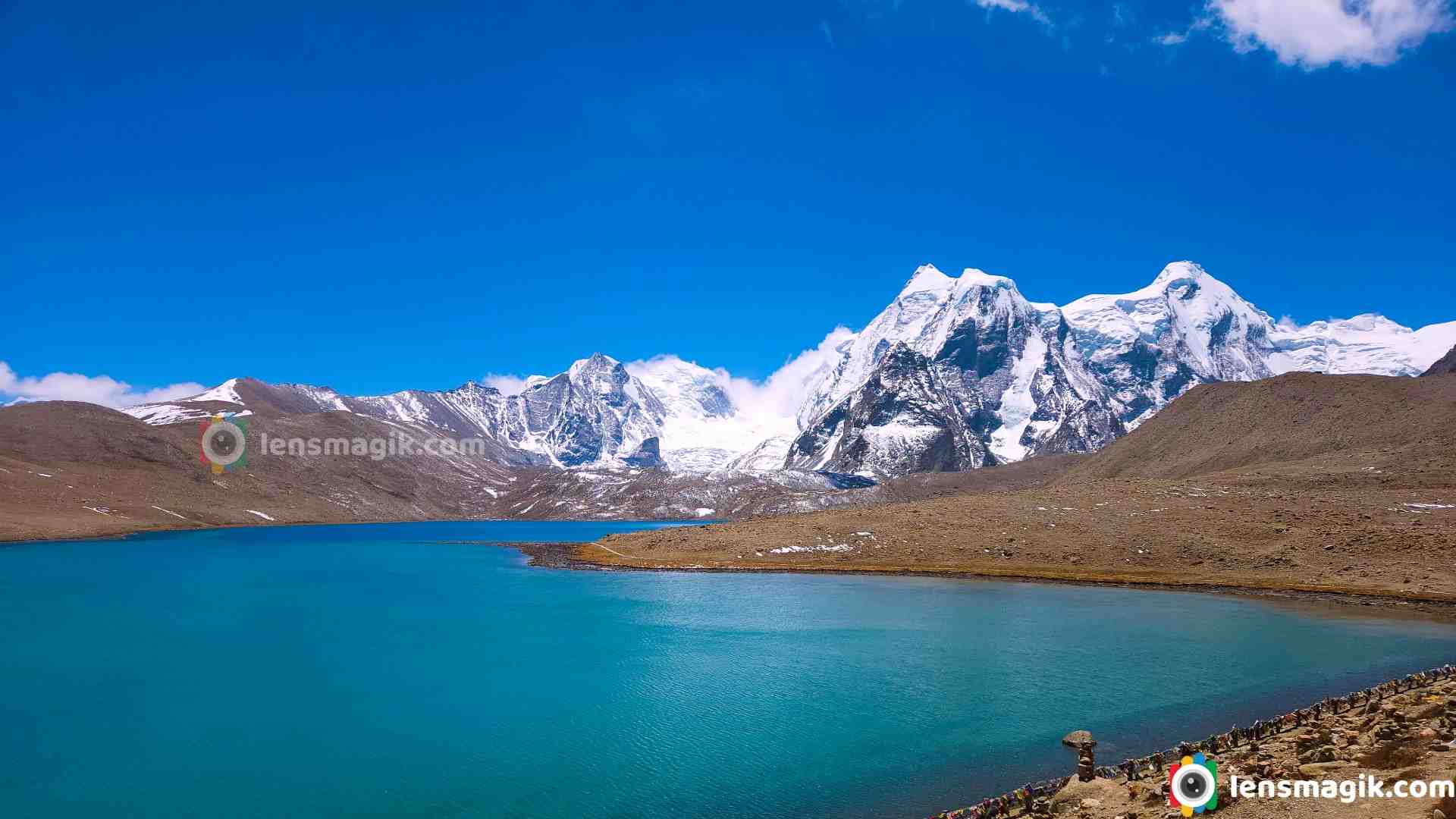
Gurudongmar Lake tour is unforgettable experience for trekkers and adventures. While visit Sikkim you must visit Gurudongmar Lake. Sometimes during your Sikkim Tour Lachen and Lachung roads are not open due to landslides or Avalanche . So i must suggest to listen your guide . One incident i must tell you while we are visiting Nathula Pass and visiting Baba Harbhajan Mandir sudden snow fall starts. The Army man told us leave immediately otherwise you will stuck here for a day. We leave as soon as possible and while returning roads are fully covered with snow and our cars are slides on snow. But we reach hotel safely. But we think who is above will stuck for a day in very cold situation. So do not be over smart with nature.
Best Time To Visit Gurudongmar Lake : May to October is best time to visit Sikkim and Gurudongmar Lake. During this time atmosphere is pleasant and lake accessible too. Roads are open from Lachen .
Do's and Dont's At Gurudongmar Lake :
- Gurudongmar lake is above 17000 ft height so breathing problem is very normal. So consult your doctor before visiting lake. Also keep necessary medicine with you during the trip. Motion sickness and altitude sickness is very normal during trip so keep proper medicine with you.
- Make sure you pack woolen cloths and cover your whole body to protect from cold, wind and also sunrays. UV index is high at Gurudongmar lake so cover your full body.
- Above 15000 ft oxygen level is low so when you go to lake walk slowly and don't jump and run around lake.
- Children below 5 years do not allow at Gurudongmar lake by the Indian Army.
- Keep permits and Photo ID's with you while visiting Gurudongmar Lake . Permits given by Sikkim Tourism department. You can also contact your tour agent or Hotel where you stay they can manage your permits.
- Keep all person Photo ID's every time with you and also 2-3 Passport size photographs sometimes need.
- As a responsible citizen do not lit and throw garbage near lake and anywhere on road.
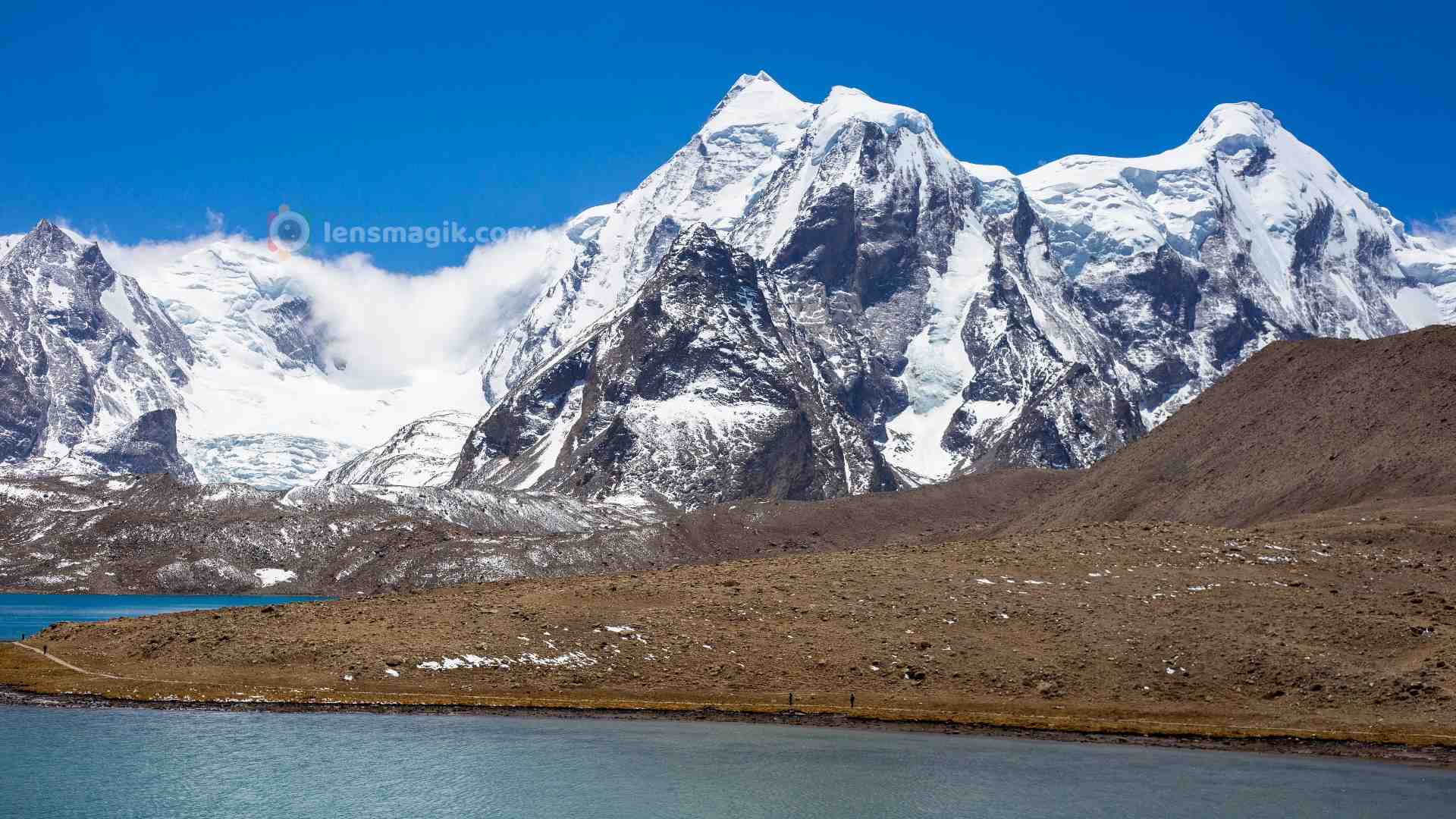
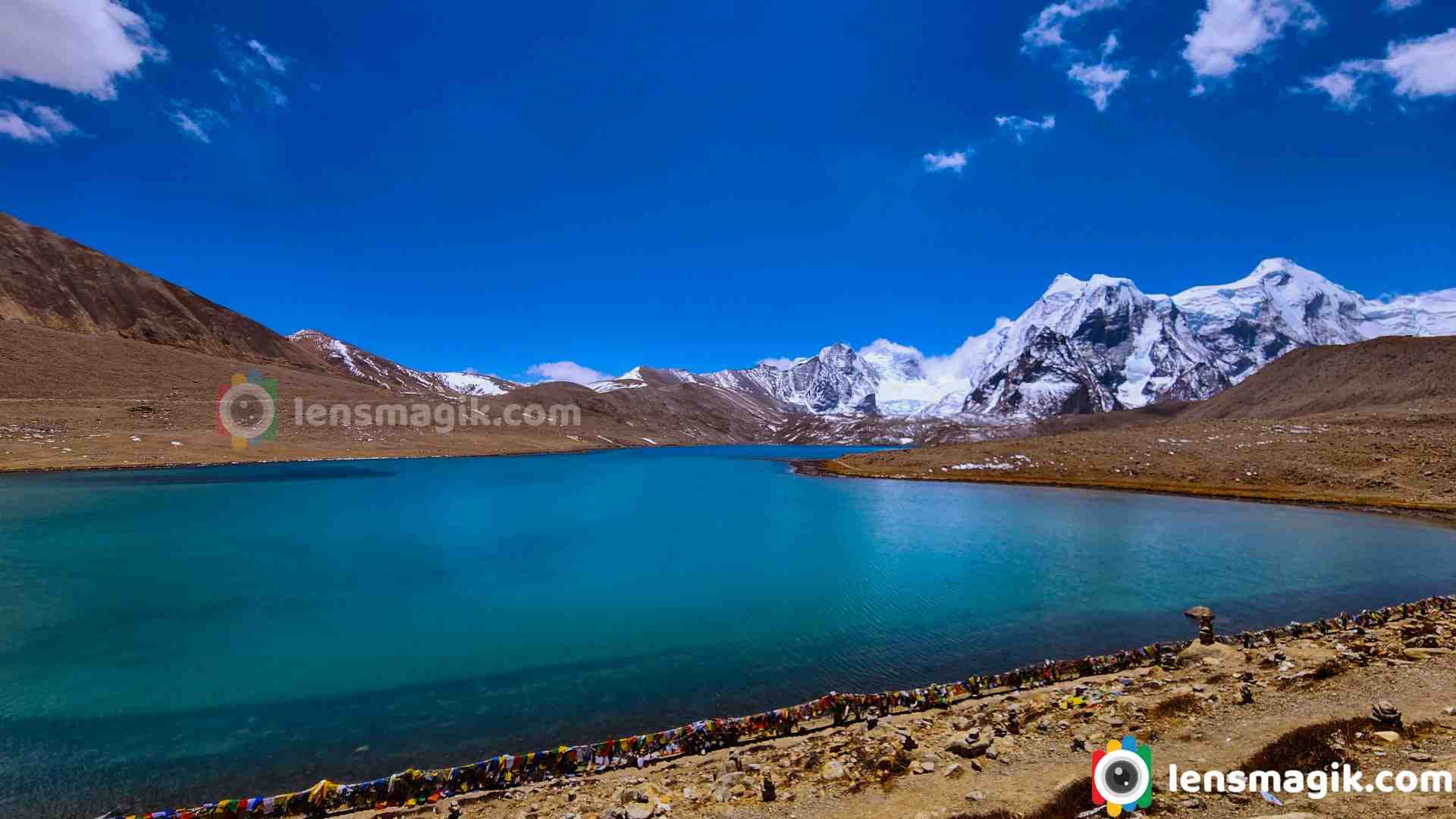
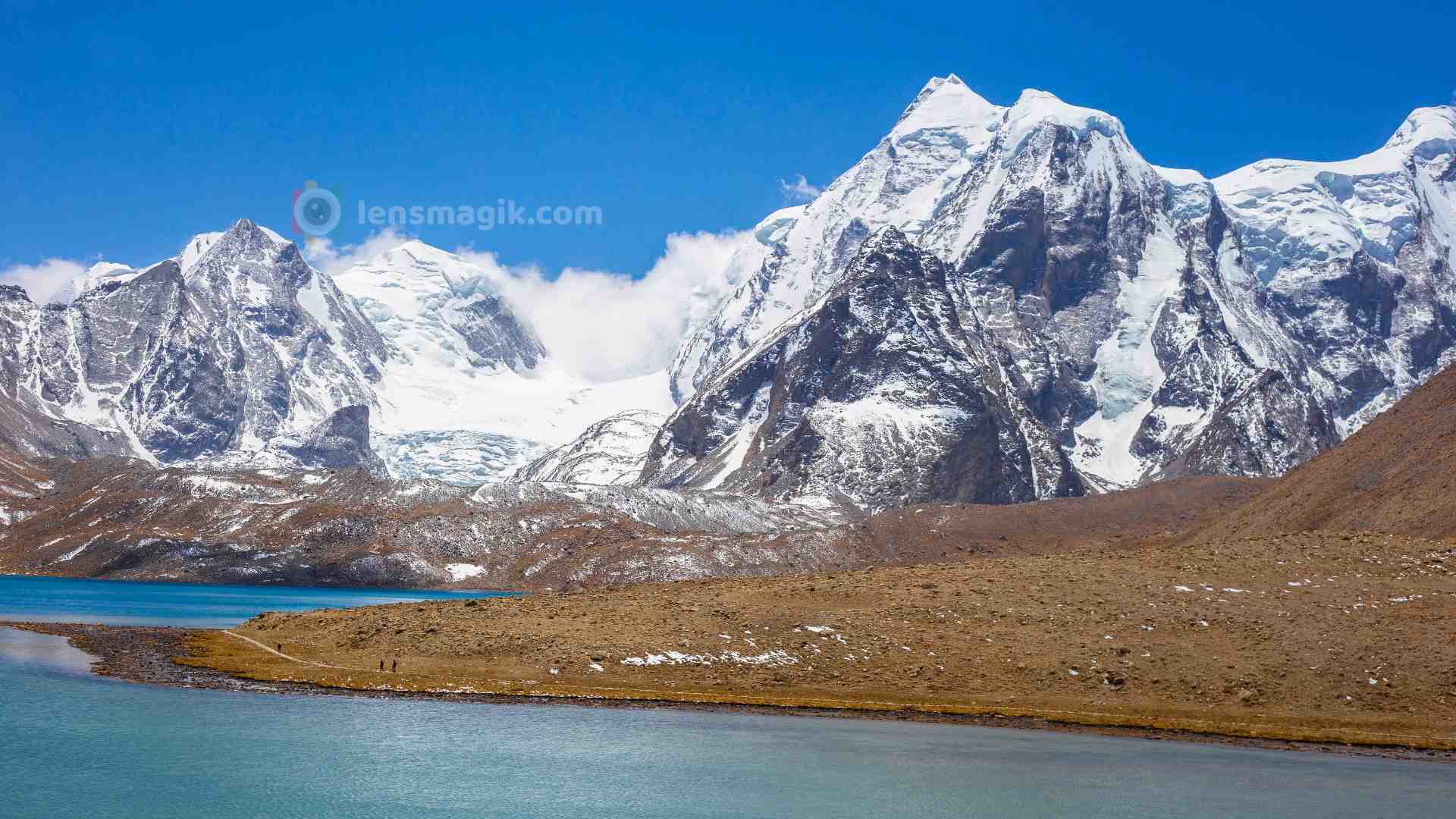
Places to Visit near Gurudongmar Lake : Lachen, Thangu Valley, Chopta Valley, Lachung, Yamthang valley, Zero Point, Gangtok, Darjeeling
Photos Taken : Canon 80D, Canon 50mm Lens, Samsung S22 mobile

Dhankar lake is high altitude lake located in Spiti Valley in Himachal Pradesh. Dhankar Lake is at 13580 ft height. Lake is located near to Dhankar village and you can go by trek from Dhankar Monastery around half hour walk. During Winter the temperature drops up to -14 degree and in summer average temperature is 5 - 20 degree. Dhankar Lake is the hidden beauty of Spiti valley. From Manali Dhankar lake distance around 6 -7 hours drive and after that 3 km trek to reach lake. Very less crowded place so you can enjoy the peace of Himalayan mountains. Also it is high altitude lake so the 3km moderate trek turns into hard trek.
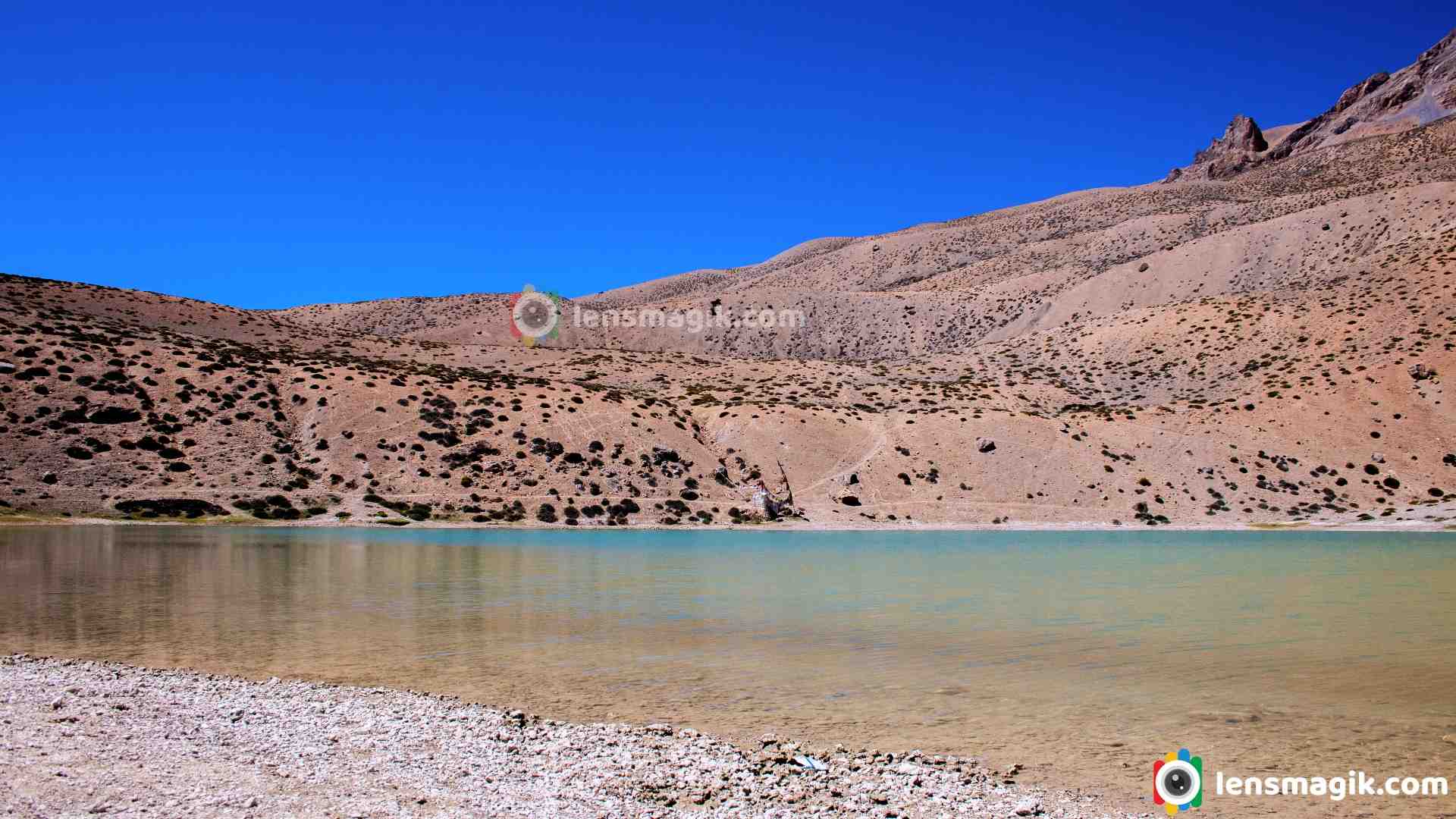
Interesting Facts about Dhankar Lake :
- Lake surrounded by mountains make breathtaking views and also crystal clear water make incredible landscape for photographer.
- Dhankar Lake at peaceful place make you feel escape from city life.
- Dhankar Lake is associated with local religious and folklores beliefs.
- Dhankar Lake trek is challenging because of high altitude. Its a 3 km trek but you may face some difficulty of low oxygen. Also very less people do this trek during spiti valley tour. If you want to do this trek then you need atleast 3-4 hours spare time for it. Early morning and evening is the best time to do this trek.
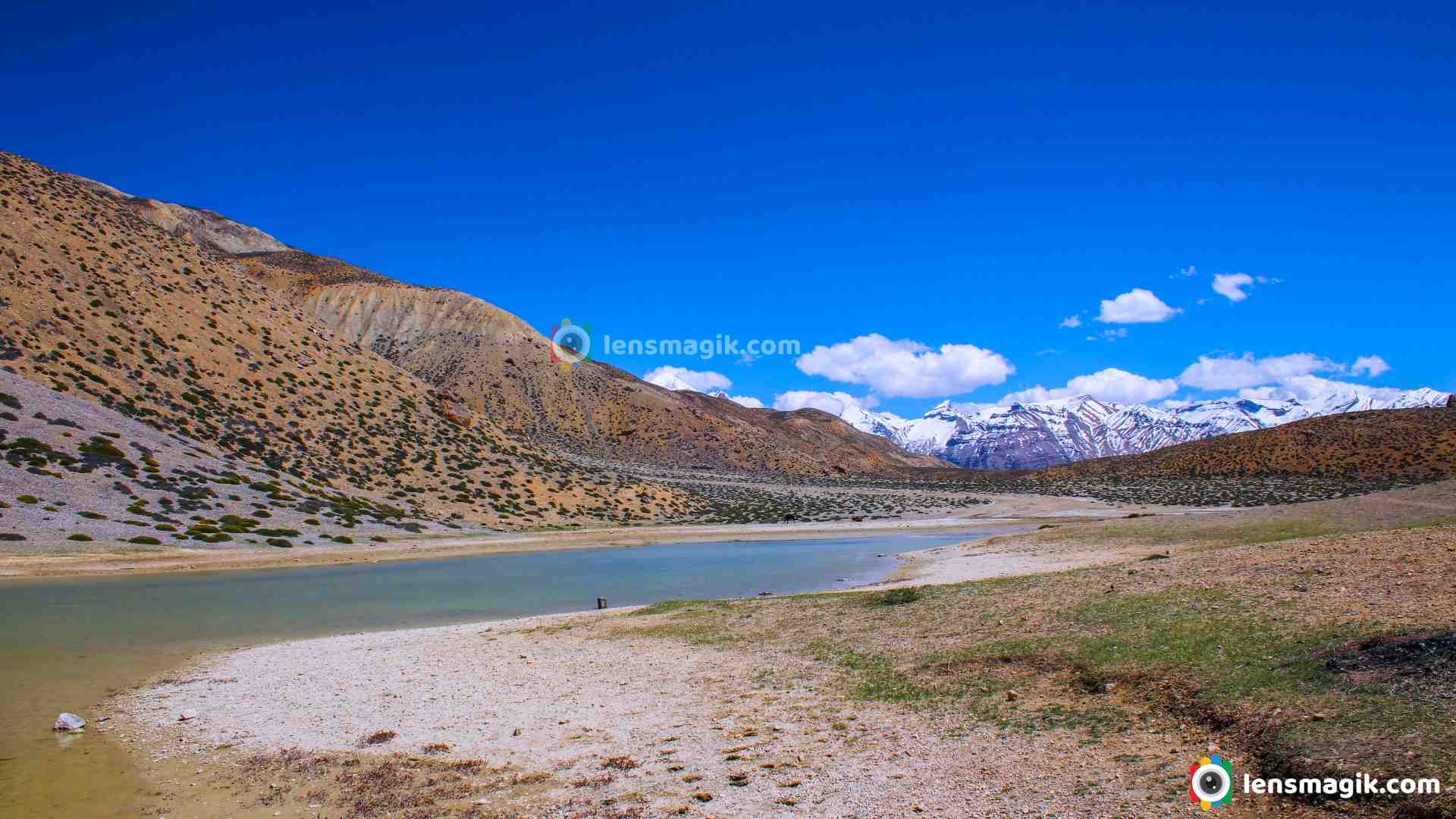
Best Time to Visit Dhankar Lake and Spiti Valley
Best time to visit Dhankar lake is in Summer during June to September . During summer atmosphere is pleasant and also trek is open. In winter trek is full of snow. You must have to be prepare for extreme cold condition and high wind. Dhankar lake trek is starts from Dhankar Monestery and it is around 3 km trek. It is moderate trek but as it is high altitude trek above 13000 ft so it make difficult and hard trek because of low oxygen and cold and windy.
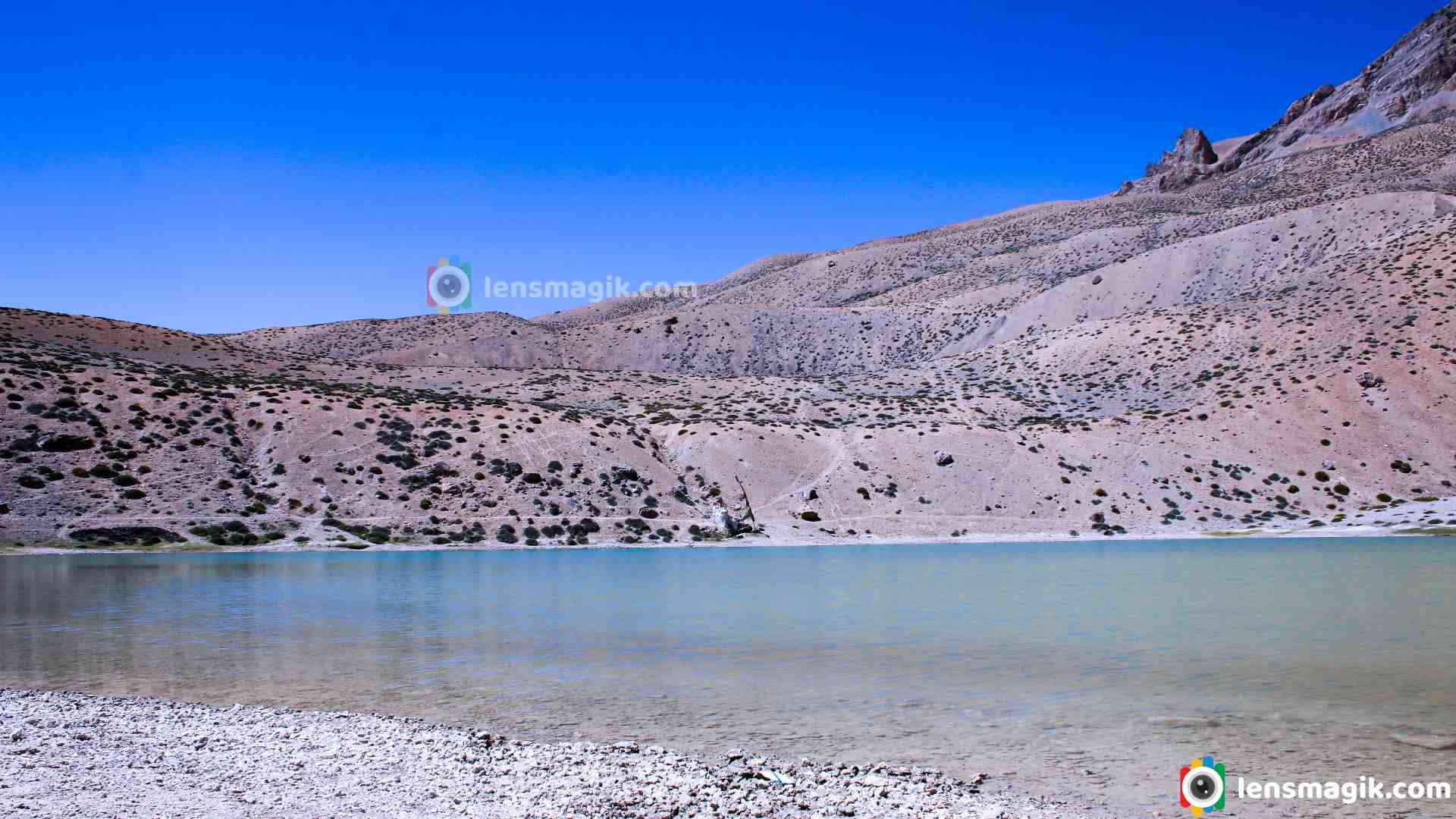
What should i prepare for Dhankar Lake trek ?
Aged people , Lung Diseases people, Who is suffering from mountain sickness avoid this trek. During night temperature drop significantly. You should drink water at regular interval and keep your body hydrated. Also wear full cloths and cover whole body. Do not throw garbage during trek. Keep some chocolates with you for energy. Hire local guide for trek so in critical situation he may help you. Also it provide information about local religion and culture too.
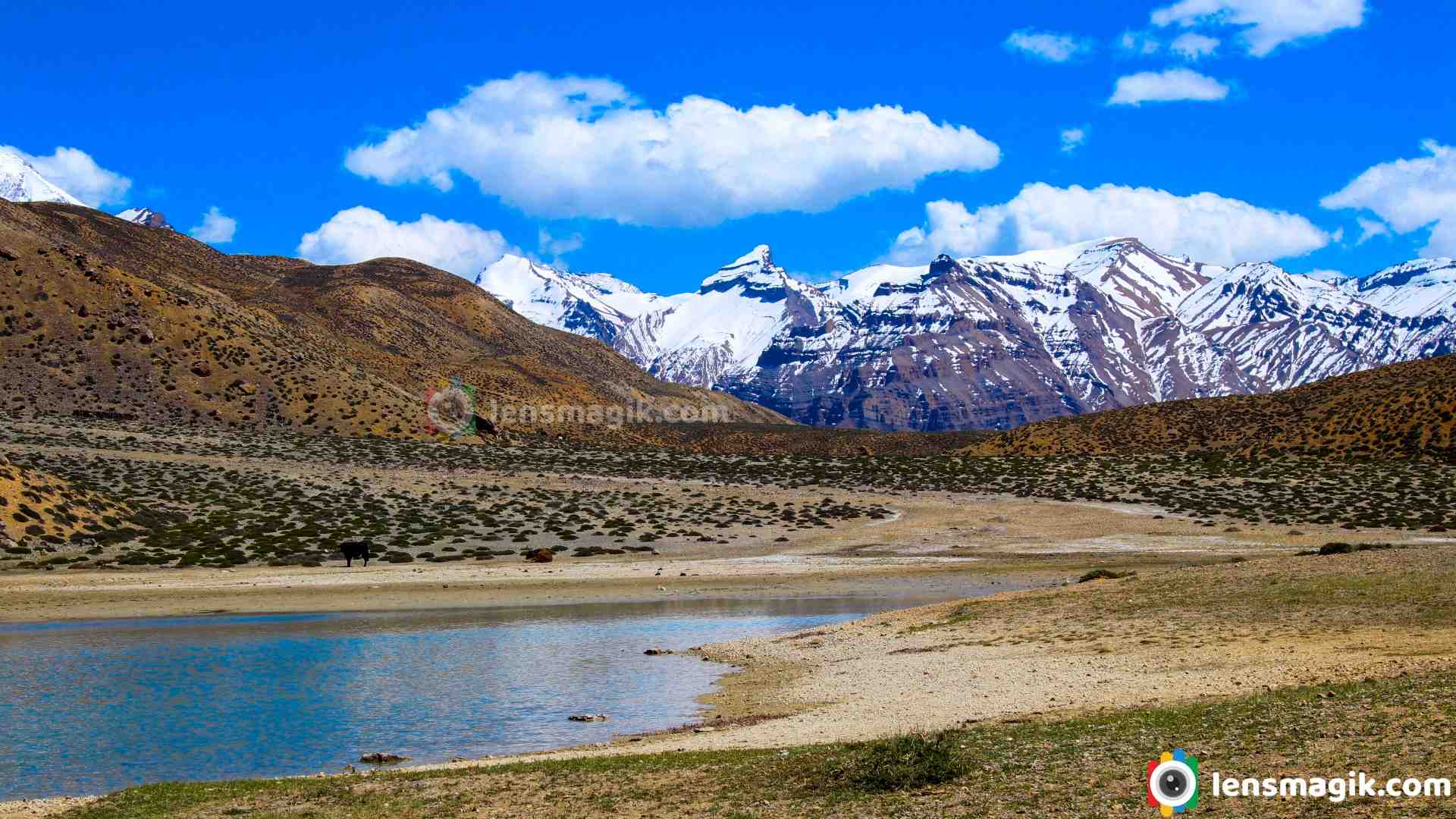
Memory of Dhankar Lake and Spiti Valley :
Dhankar lake is one of the memorable place i have ever visited. Lake is surrounded by mountains make perfect landscapes and remote location. It is peaceful place and also small monastery near to lake. You can enjoy at lake bank and feel relaxed and enjoy beautiful landscapes and Himalayan mountains covered with snow. Spiti valley is most popular place in Himachal pradesh now a days. It is an adventurous tour and lots of travel. Road conditions are very good.
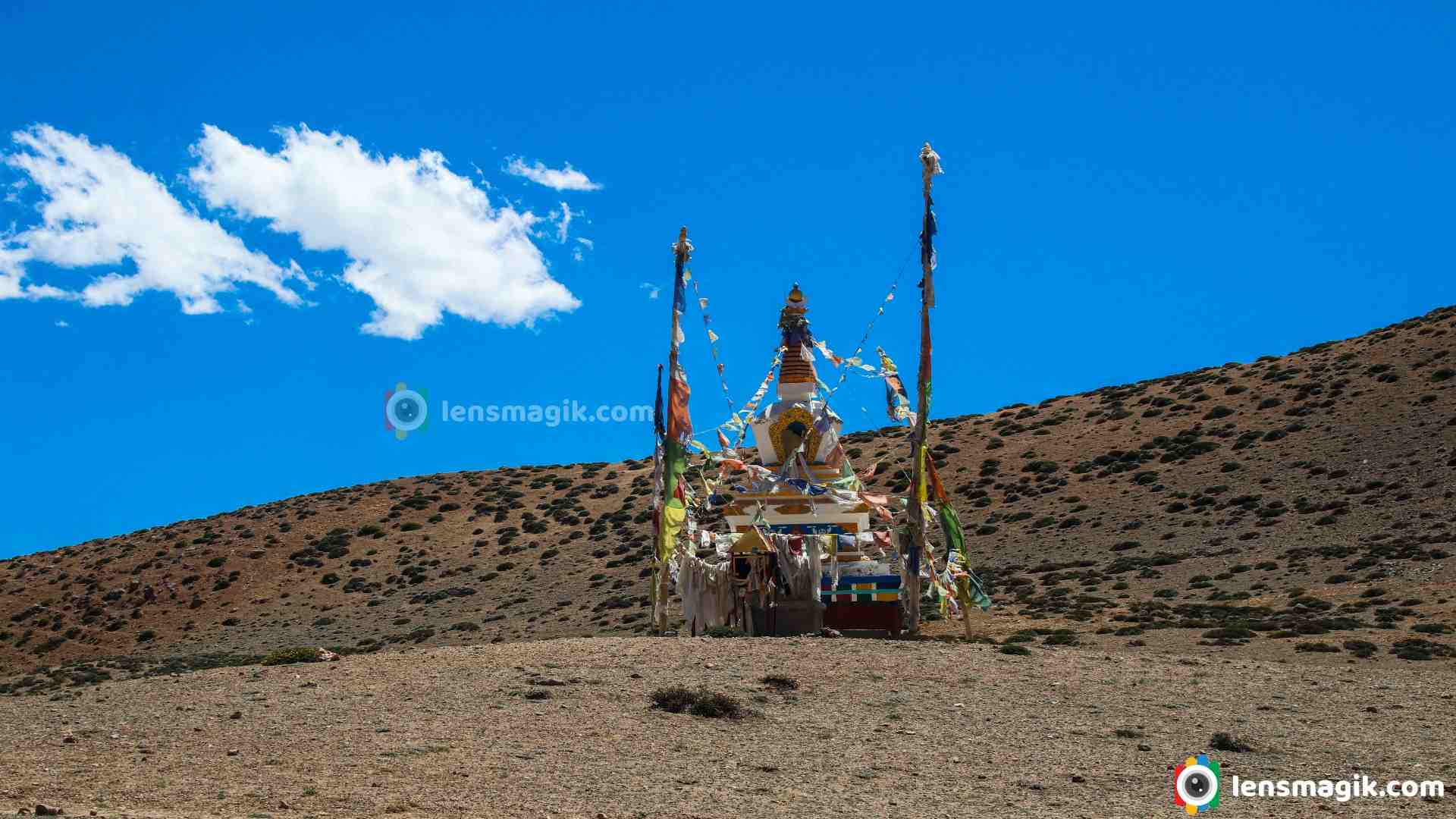
More attractions in Spiti Valley :
Kalpa, Giu Mummy , Dhankar Monastery, Nako, Nako Monastery, Kaza, Langza, Kunzumpass, Chicham Bridge, Komic. World's Highest post office, Tabo, Tabo Monastery, Kaza Key Monastery, Kibber Village ( famous for Snow leopard ), Chandra Taal Lake.
Camera Used : Canon EOS 6D, Canon EOS 80D, Canon 50mm Lens, Canon 18-55 mm lens
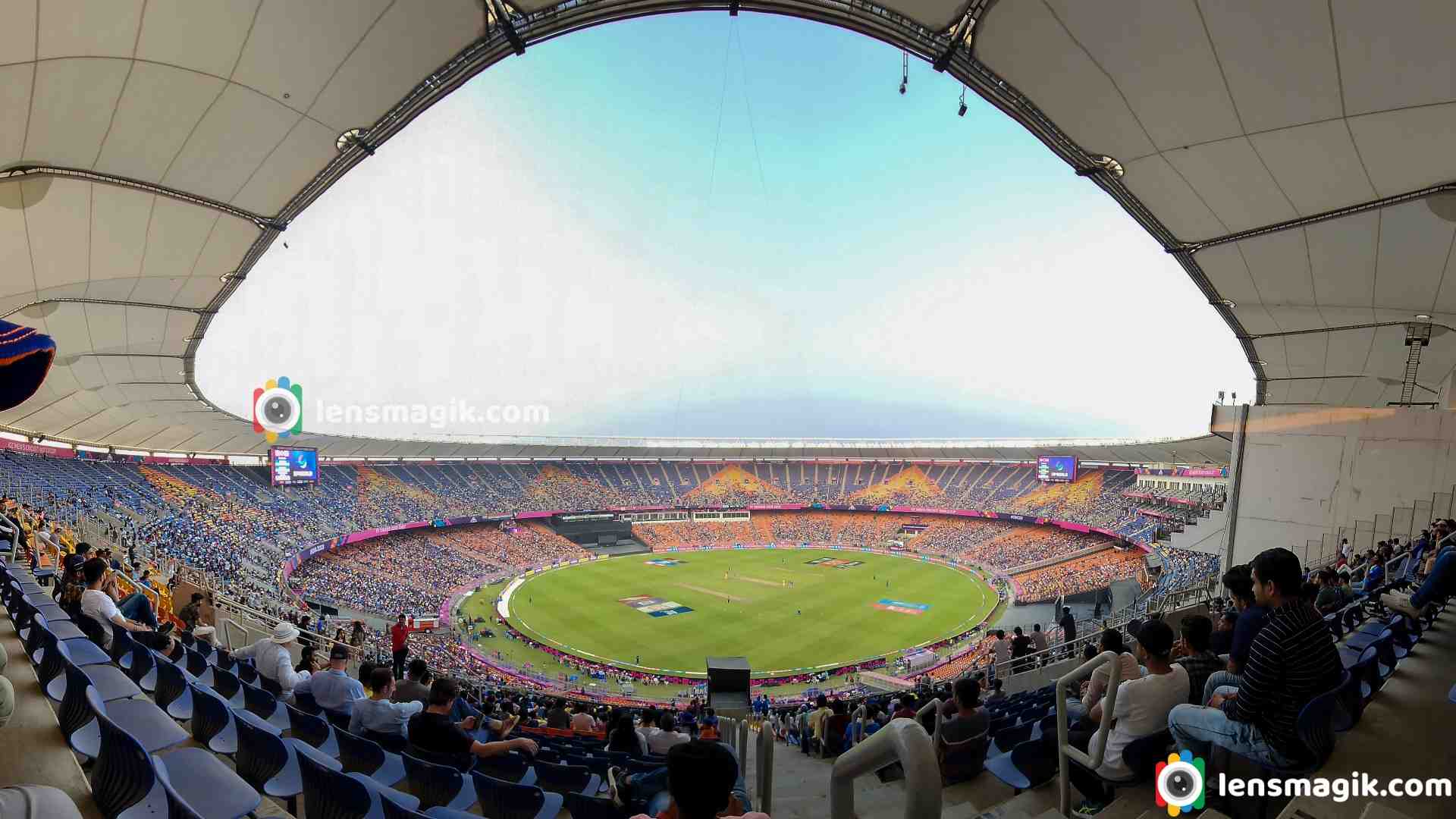
Narendra Modi Stadium is located in Ahmedabad. It is an International Stadium of Cricket. It is the World's largest cricket stadium with capacity of 1,32,000 peoples. The stadium is own by Gujarat Cricket Association and hosts International and Domestic cricket matches. The stadium named after 14th prime minister of India , Narendra Modi. Before renovate the stadium its old name was Sardar Vallabhbhai Patel Stadium or Motera Stadium. The Stadium hosted high profile matches in 2023 world cup like India Vs Pakistan and World Cup Final 2023 India vs Australia. Also IPL ( Indian Premier League ) matches are hosted here. Watching a match in this stadium is one of the most great experience of Cricket lovers. The stadium also hosts Live concerts too. Recently it was hosted the famous " COLDPLAY " live concert in 26 January 2025 which was largest event of Coldplay and was attended by 1,34,000 peoples. Total 2 days concert 25/26 January and total 2,23,000 peoples were attended which was the largest stadium concert of 21st century according to Guinness World Records.
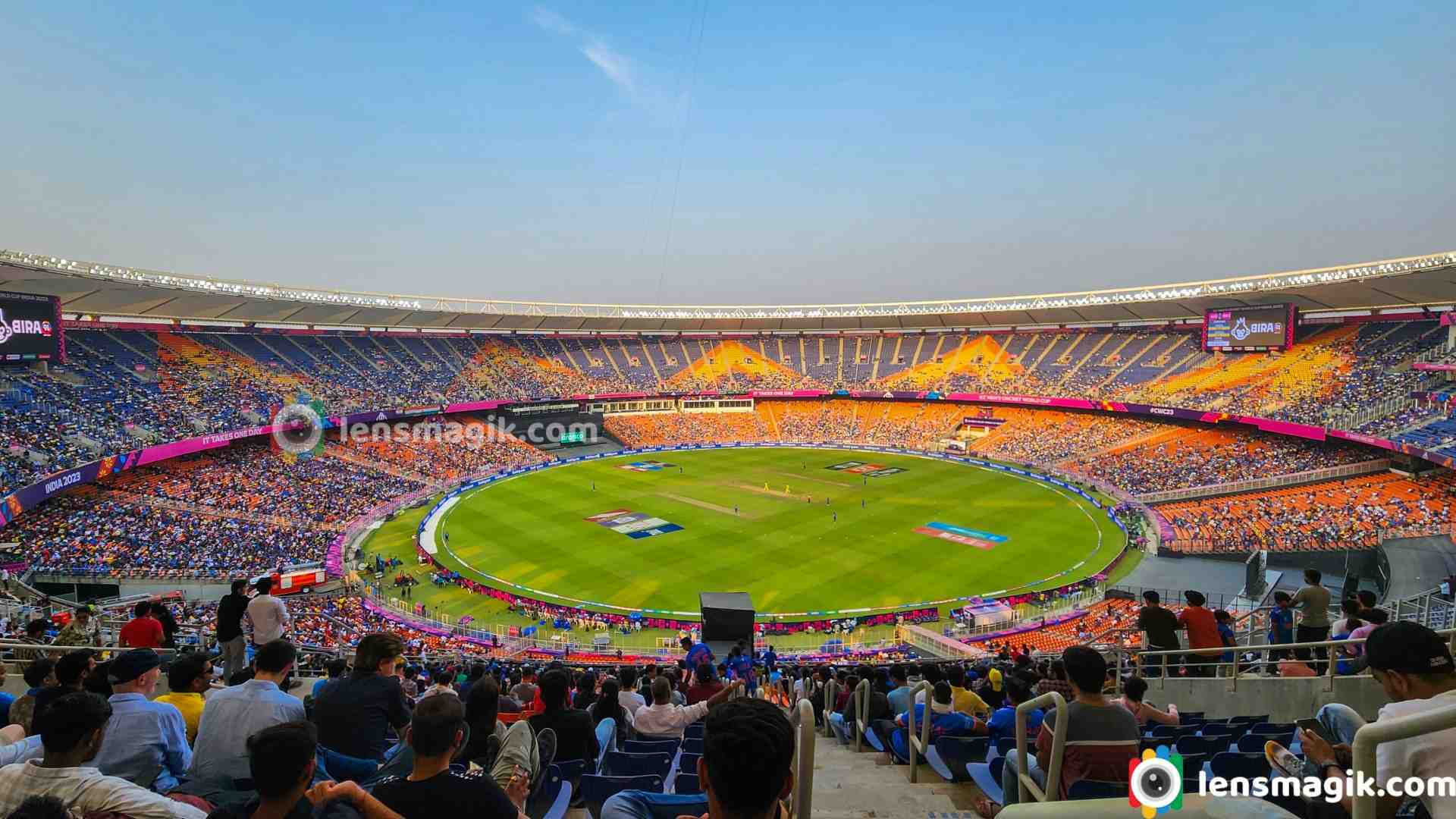
Key Features of The Stadium :
- Stadium has modern amenities like VIP boxes, Indoor Cricket Academy and clubhouse.
- Stadium design as Indian Traditional Architecture .
- It is the World's Largest Cricket Stadium.
- In the Stadium many matches of Domestic and International hosted. T20, ODI and Test matches and also IPL matches are hosted here.
- In 2014 it was decided to renovate stadium and built on a same plot.
- Stadium designed by Populous which is famous Australia's design firm which specialized in sports facilities.
- Stadium was built by Larson and Turbo.
- The estimate cost to built the Stadium is around 800 Crore ( 92 million USD ) and take 5 years to complete the construction of stadium.
- The stadium has 11 center pitches , 4 dressing rooms and 2 practice grounds.
- The new stadium opened in 2020 to the public when US president Donald Trump visited India. The Stadium was inaugurate by Indian president Ram Nath Kovind.
- The first match played on stadium was India vs England Test match. It was also first Day-Night test match also.
- Two ends of the stadium named Jio End and Adani Pavilion End.
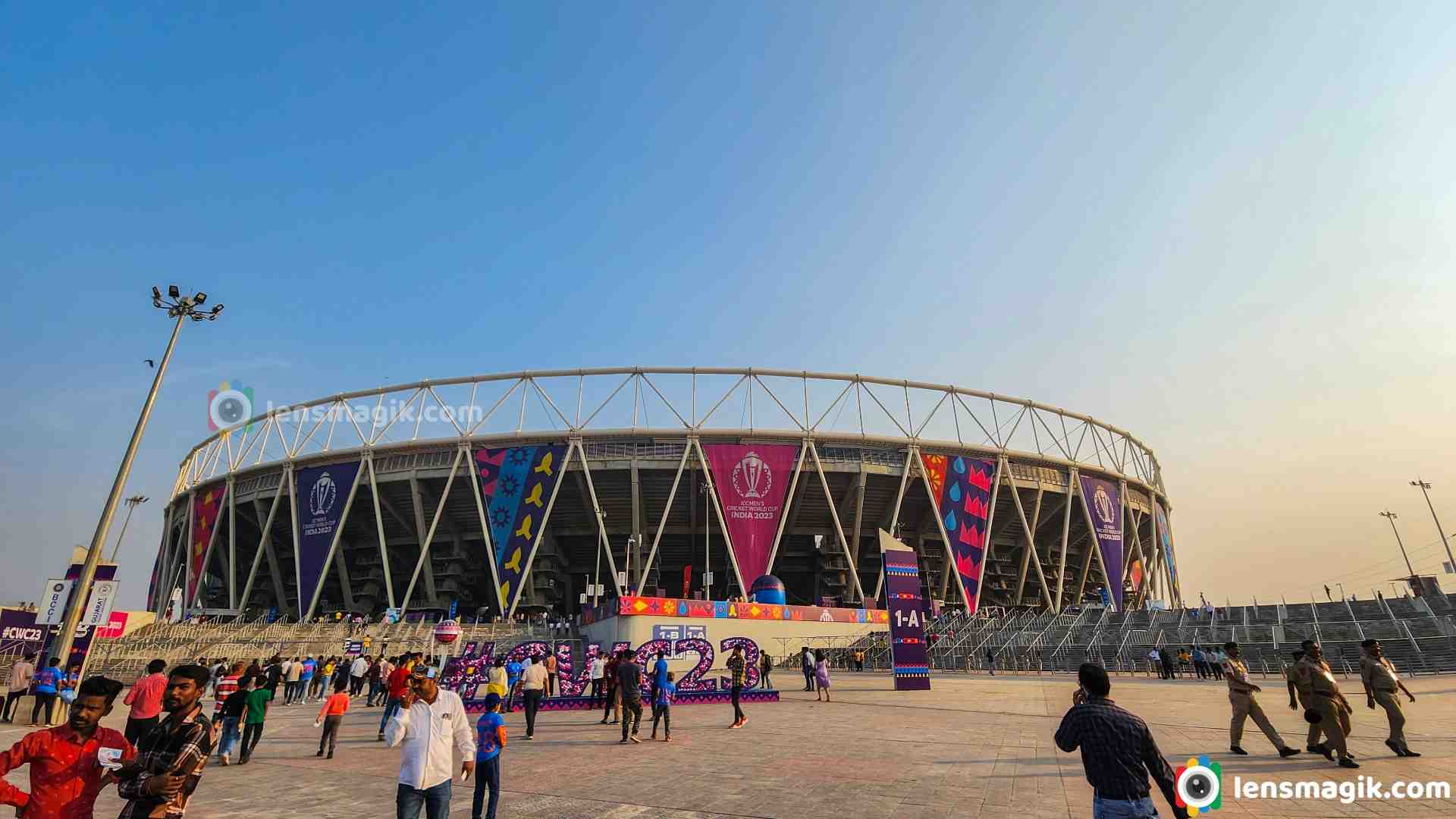
The Stadium decorated looks like from outside in World Cup 2023. Also big size World Cup Trophy was put in the way from main gate to stadium entrance.
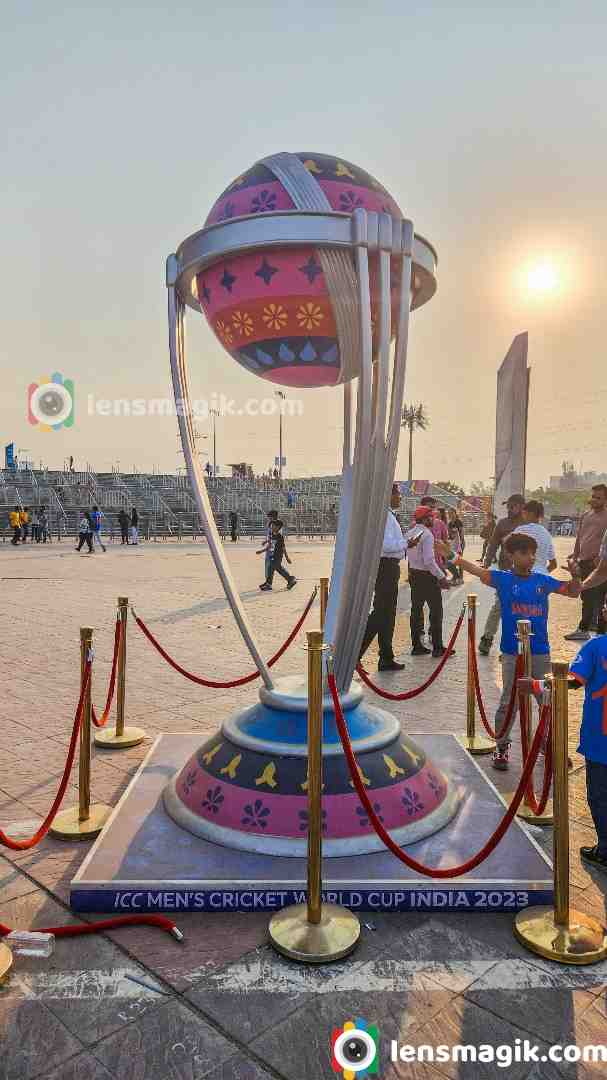
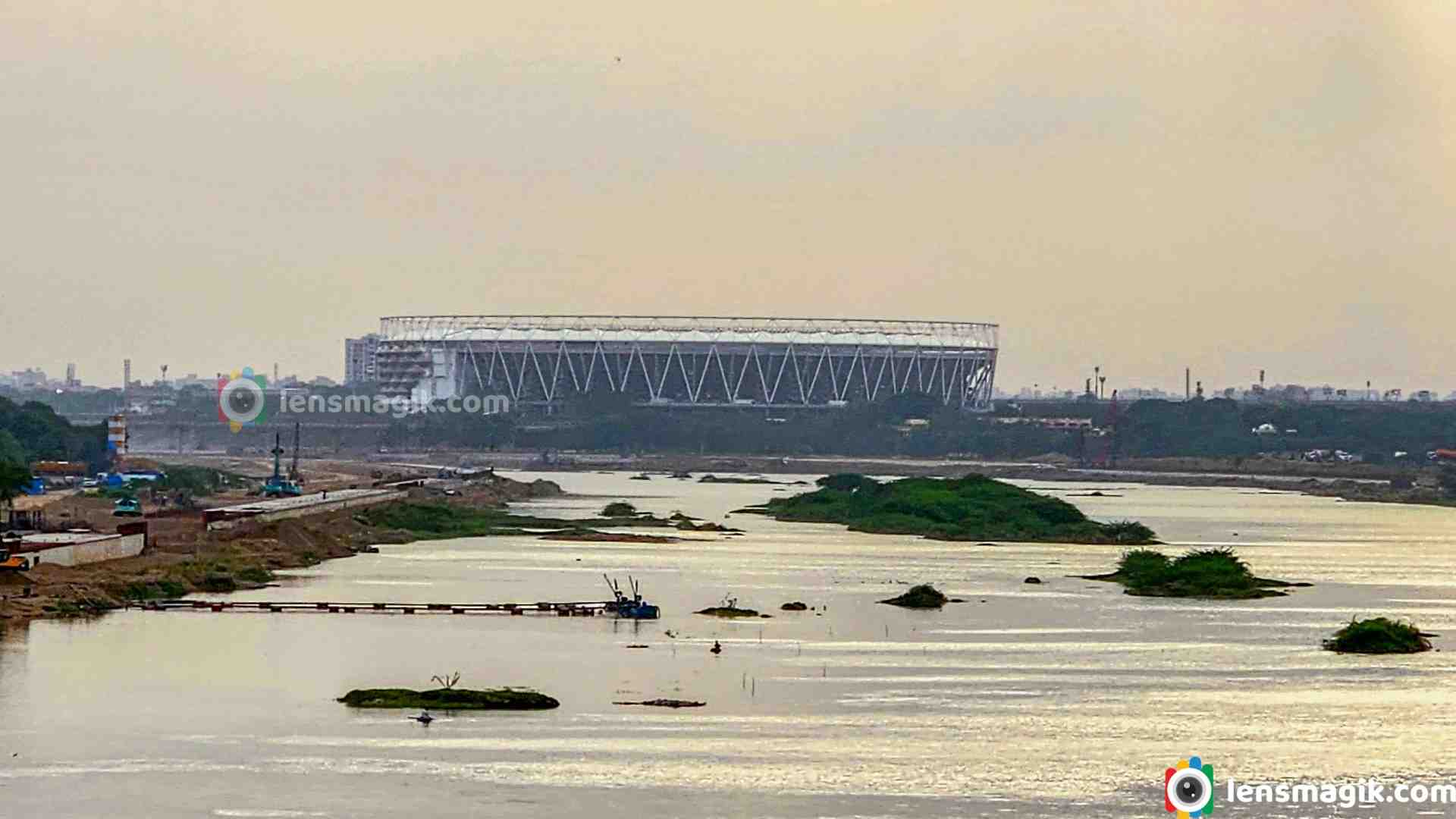
The Stadium looks from Indira Bridge.
I went to see Narendra Modi Stadium in IPL and also World cub 2023 match between Australia vs England. Matches was intense and love to watch live. Also crowd was amazing. Watching a world cup match on world's largest stadium is a unique experience. The Stadium was built in 63 acres area. There are four entry points in the stadium. There are 72 corporate boxes and maximum 25 persons allowed in boxes. Stadium designed was amazing and you can watch uninterrupted view from all of the stadium. The light system lines inside the roof of the stadium which helps to reduce shadow on pitch.
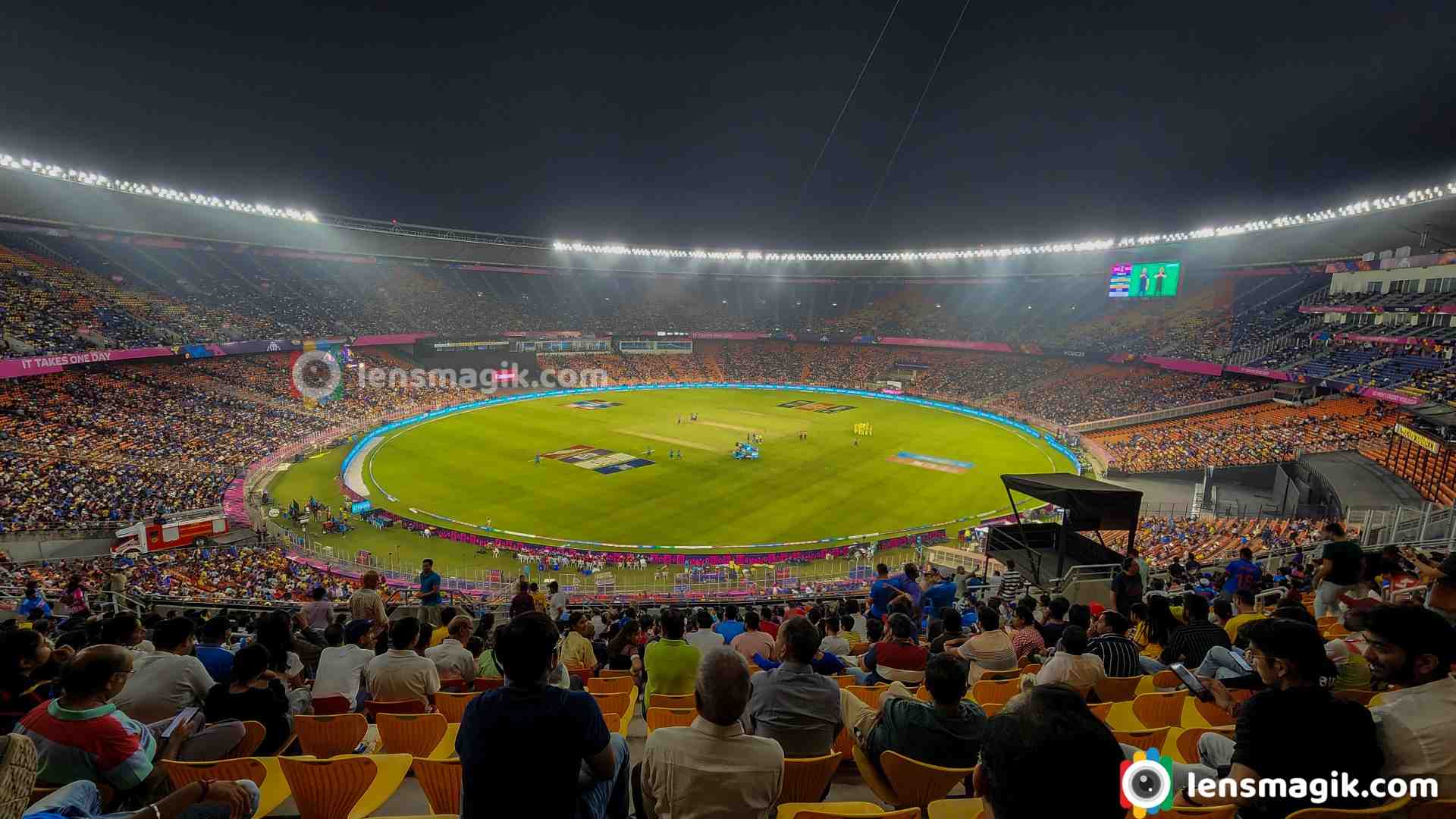
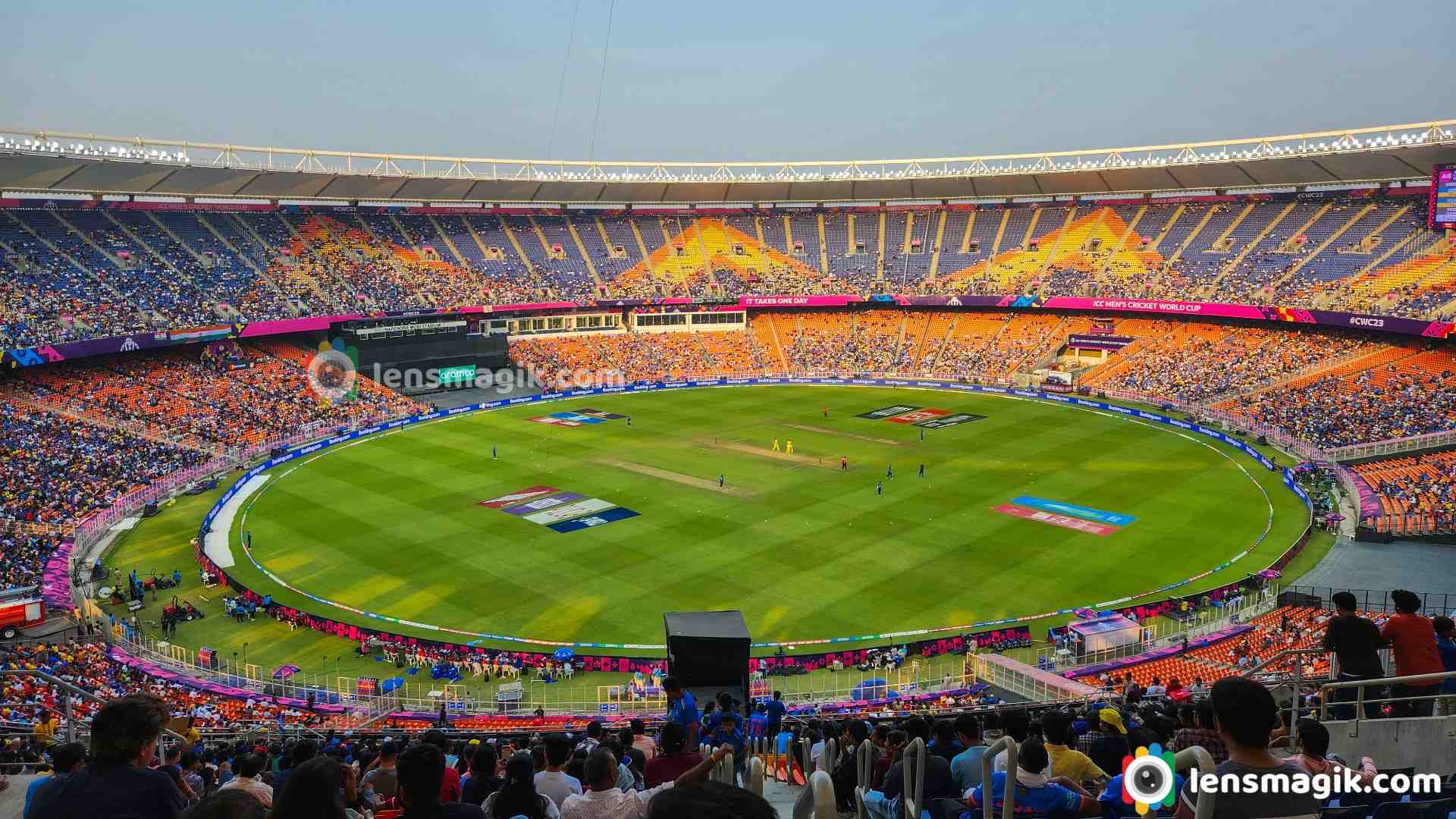
How to Reach Narendra Modi Stadium :
Nearest Airport is Ahmedabad ( Saradar Vallabhbhai Patel International Airport )
Nearest Railway station : Kalupur, Maninagar
Ahmedabad Metro : Sabarmati Metro Station in Ahmedabad
Places to Visit near Narendra Modi Stadium :
Adalaj Ni Vav, Mahatma Mandir, Gandhi Kutir, Gandhi Ashram, Akshardham temple Gandhinagar
Narendra Modi Stadium Ticket Booking : Mostly tickets are available on Bookmyshow website. Also you can collect tickets at Booking counter at the stadium. You need to bring physical copy of tickets to enter in the stadium. Or online booked tickets can be check at the security level via barcode.
Read more
Pangong Tso Lake is located at Eastern Ladakh and West Tibet. It is divided into five sub lakes. Pangong lake is high altitude lake of Himalayas. Lake one third part is in India and rest part is in Tibet. Five sub lakes of Pangong Tso is called Pangong Tso, Tso Nyak, Rum Tso ( Twin Lakes ) and Nyak Tso. Almost 50% of lake of Tibet administrated by China, 40% of lake administrated by India and rest 10% of lake is disputed and buffer zone between India and China. Pangong Lake is world's highest Salt water lake situated at 4350 mt ( 13862 ft ) height.
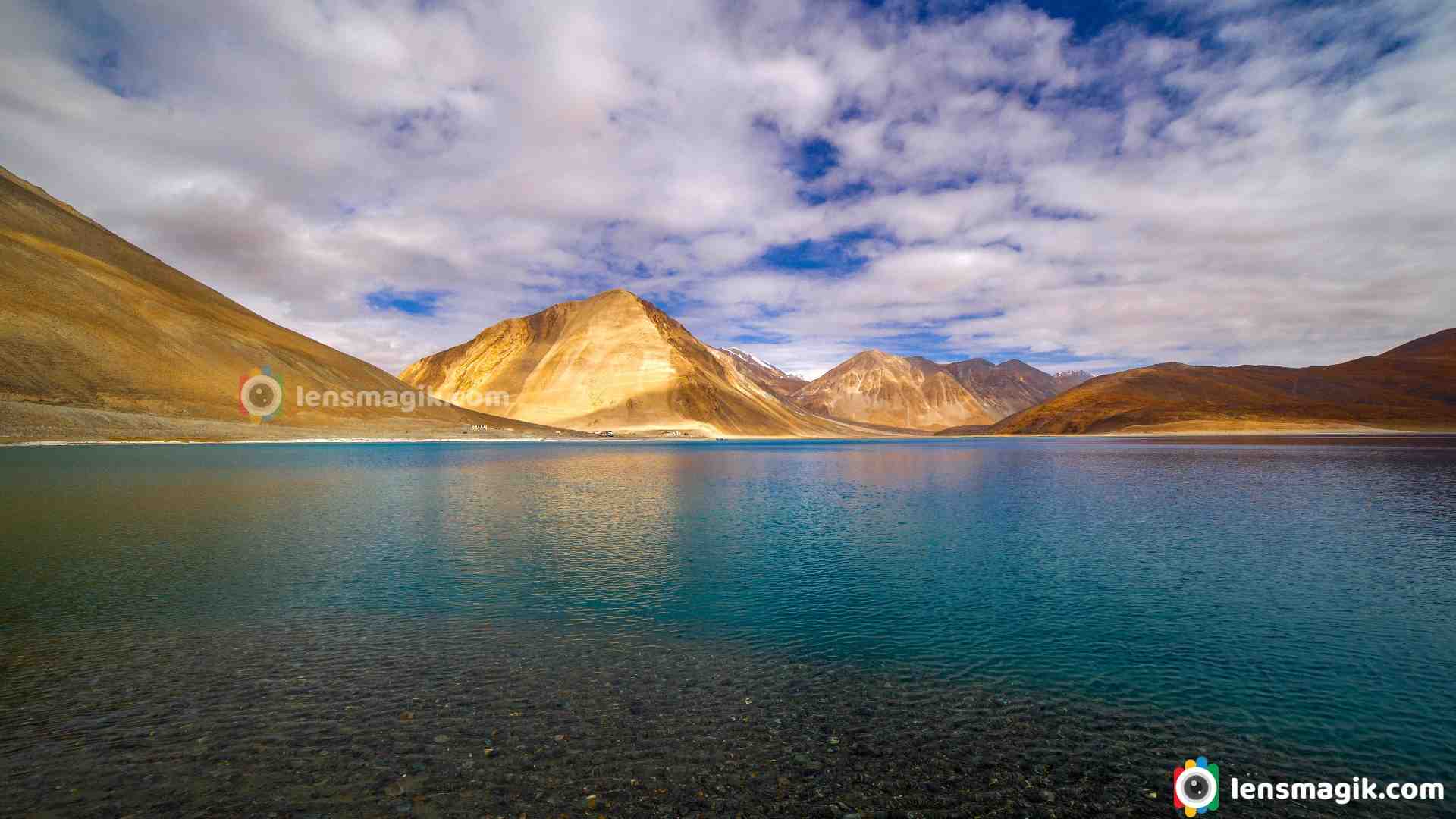
Key Point of Pangong Lake :
- It is one of the highest altitude lakes around the world approx. 14270 ft height from sea level.
- Lake between borders of India and Tibet ( China ) which is stretched around 134 km long.
- One interesting thing is lake water color changes according to weather and light. In morning, evening and afternoon lake color is different in different condition.
- Tibetan Wild Ass and Himalayan Blue Sheep found here. Also Himalayan Marmot found in the way to pangong lake. Some sites like valley and open land you can found Marmot.
- Lots of camp sites made here during summer for night stay at pangong lake. Tents are neat and clean and food they serve also very good. Most challenging for them is water. when i asked them they bring water from long distance and provide us that is good hospitality of locals. So don't waste water on camp site and also don't throw garbages in the way and on site.
- You can capture stunning photographs of lakes in different time. Beautiful sky , mountains and neat and clean crystal clear water make your photo farmable.
- Very cold at night in Pangong lake and also daytime its too windy. So prepare for it during night stay at Lake.
- Boating is not allowed now a days in Pangong Lake.
- While visiting Pangong lake check Indian Government latest advisory because it is a border area so you need to aware of Govt. Advisory and follow strictly.
- Drone flying is not allowed because it is Military area and also Border area. So don't try to fly Drones also in Leh, Nubra and other places.
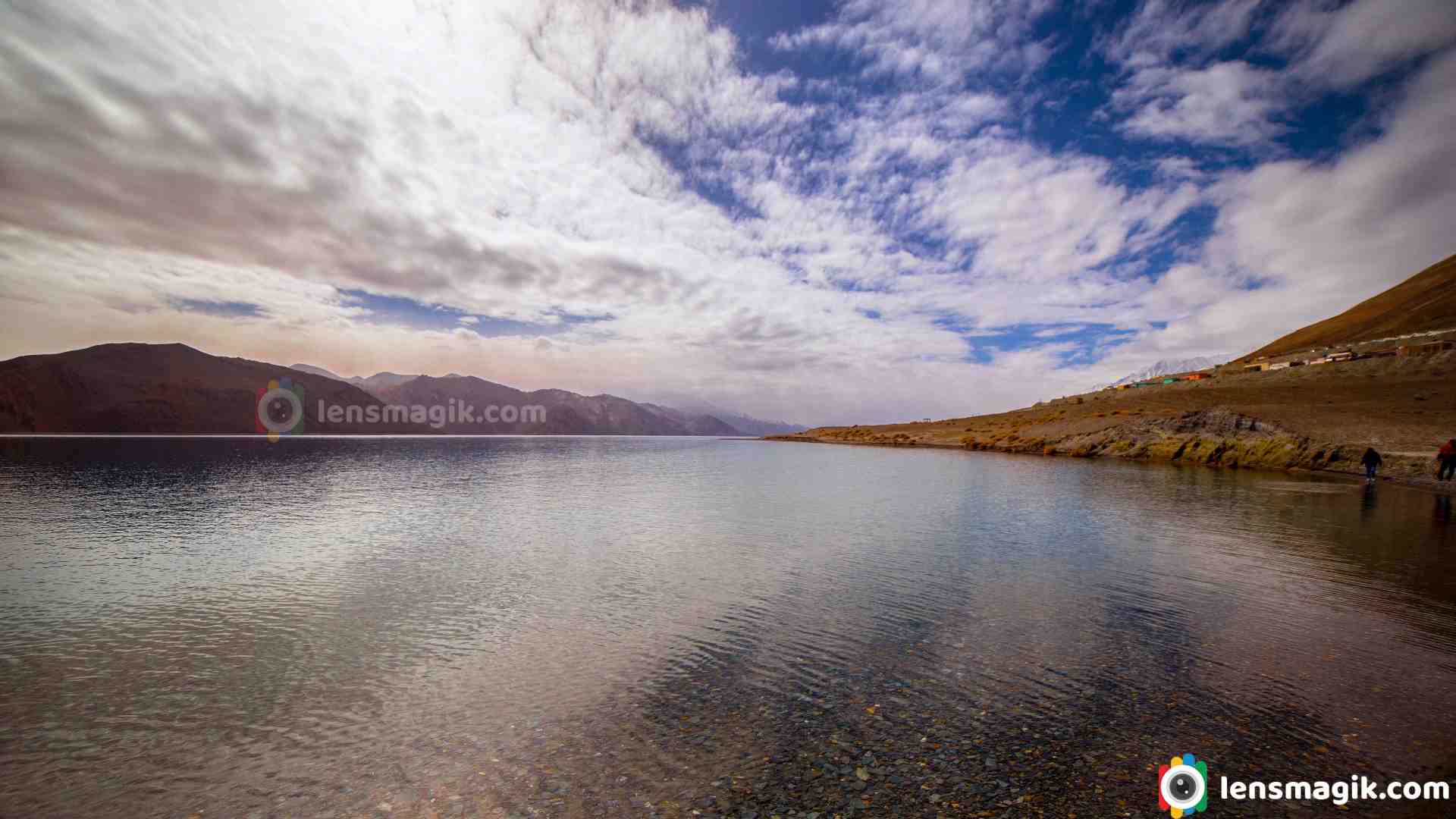
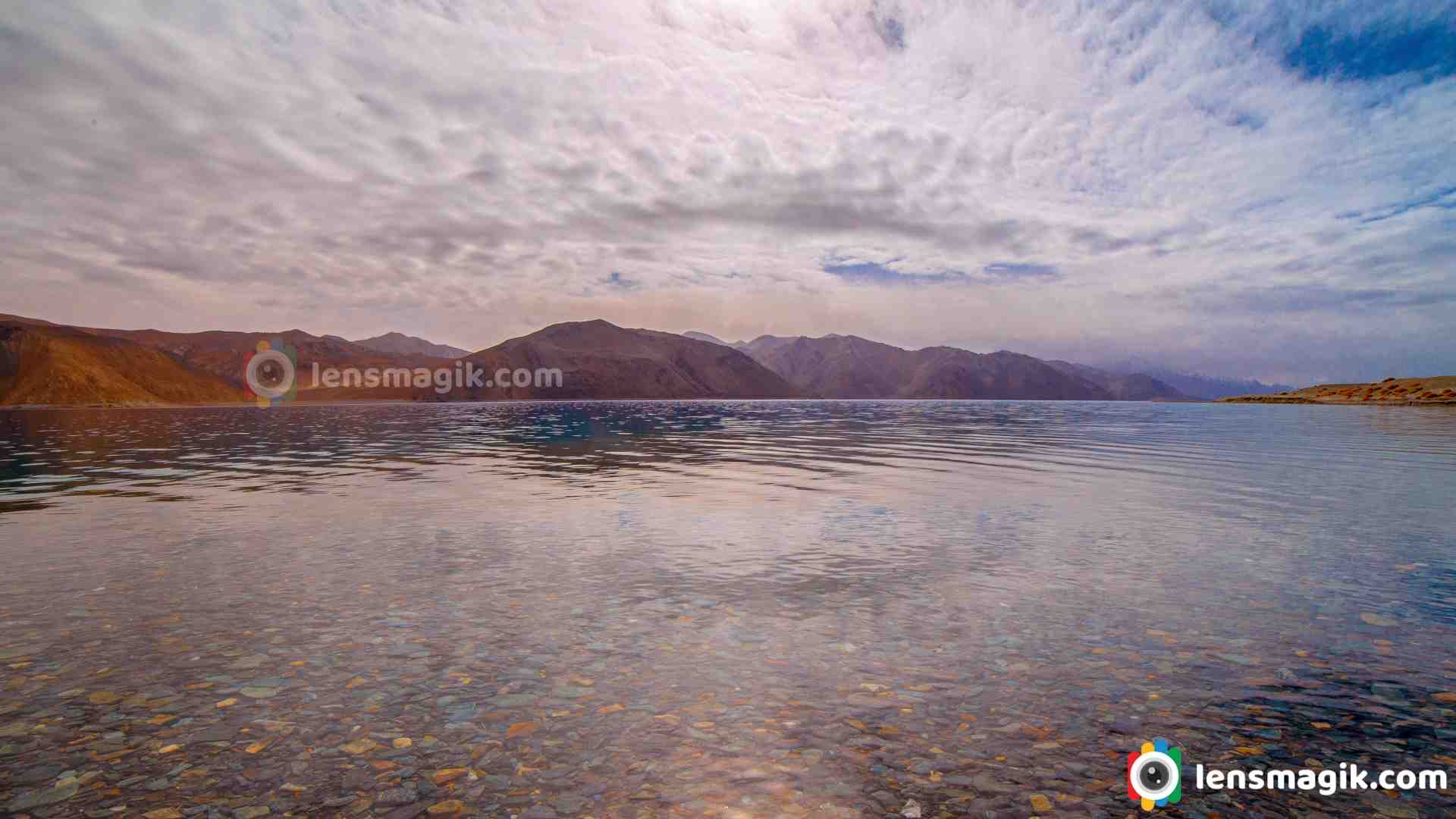
Do and Don't at Pangong Lake and Ladakh Trip :
- Leh Ladakh is at high altitude location so acclimatize your self first for a day. Stay atleast 1 night at Leh and do not walk much just acclimatize your body with wind and cold.
- During travel from Leh to Khardung La pass you can feel motion sickness and also altitude sickness too. Low oxygen level and altitude climbing make you feel not better.
- Headache, Dizziness, Vomiting Nausea, Isomnia and Appetite loss are common symptoms of Altitude sickness. So keep proper medicines with you and i also suggest keep Oxygen bottle with you while travelling from Leh. Your tour manager can manage it. If you feel not much better after that then reduce your altitude level back to hotel and rest or go to local hospital.
- Do not throw garbage on road or anywhere. Do not waste water. Listen to your guide instructions carefully and follow them.
- Children below 5 years are not suggested to visit Leh Ladakh.
- Do not drink alcohol during Leh ladakh Trip.
- Keep necessary medicines with you before Leh Ladakh Trip. Consult your doctor before visiting Ladakh if you are a patient of Blood pressure , Diabetic and lung diseases. Smoking is also avoid in Leh Ladakh trip.
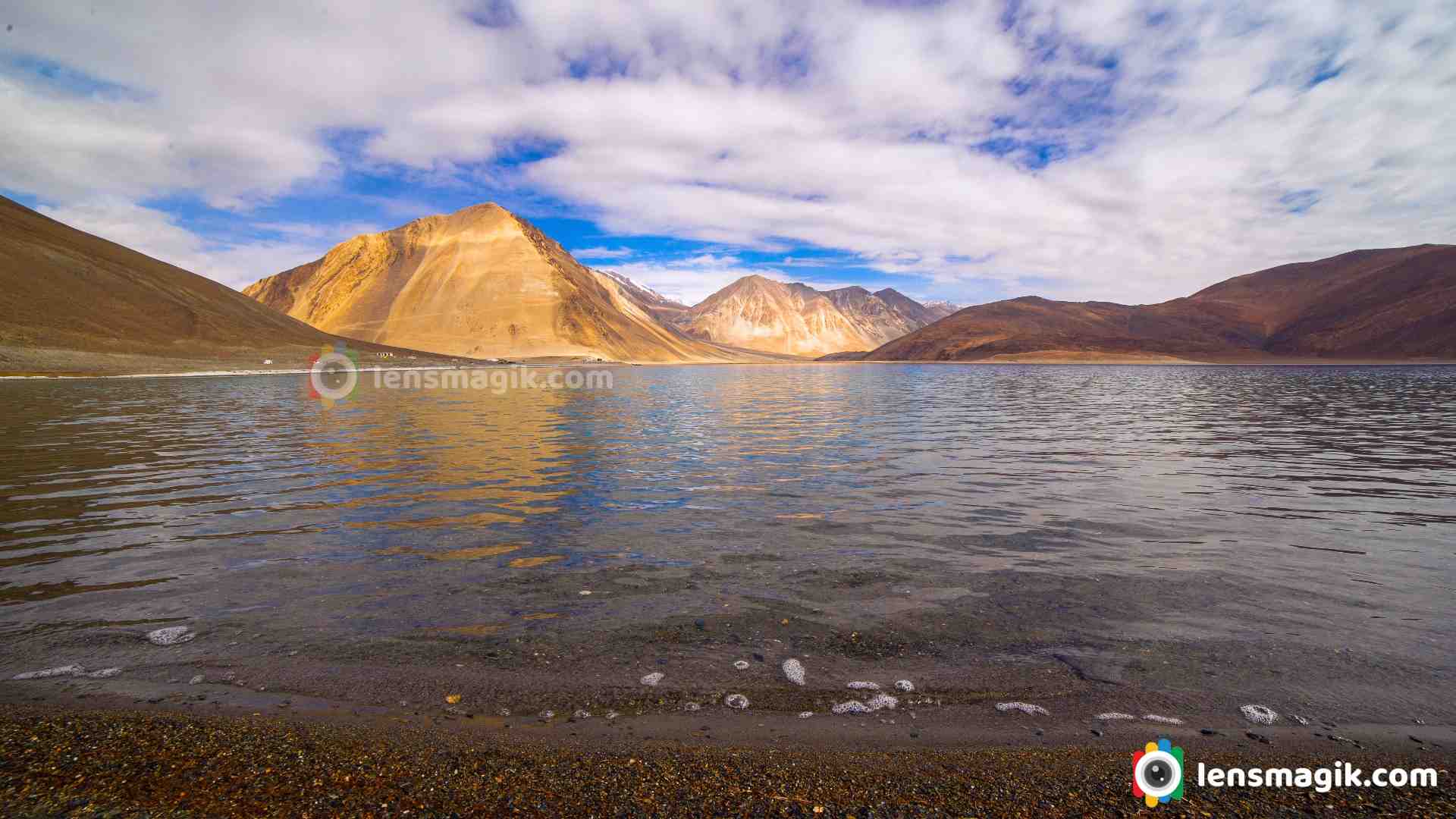
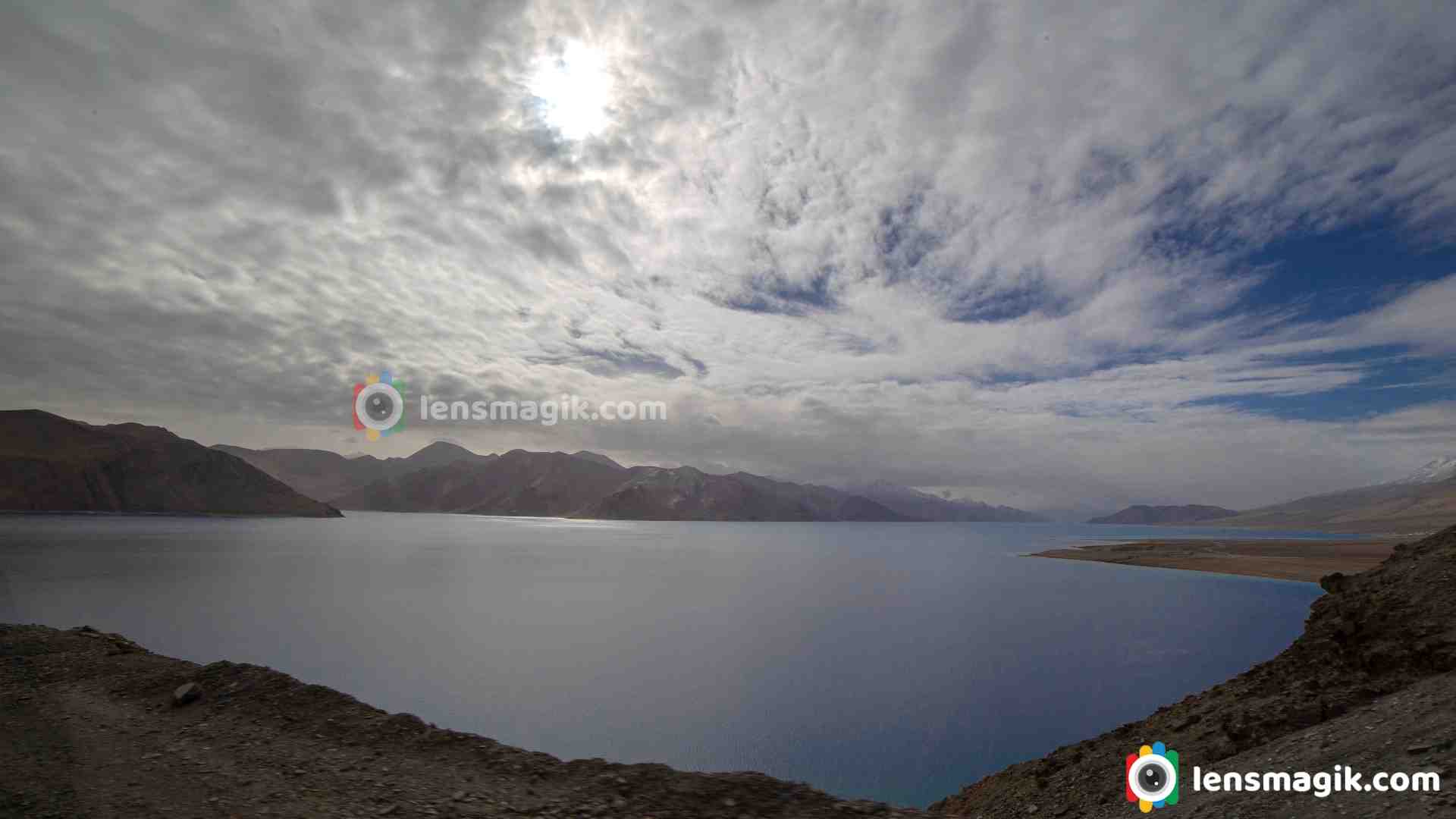
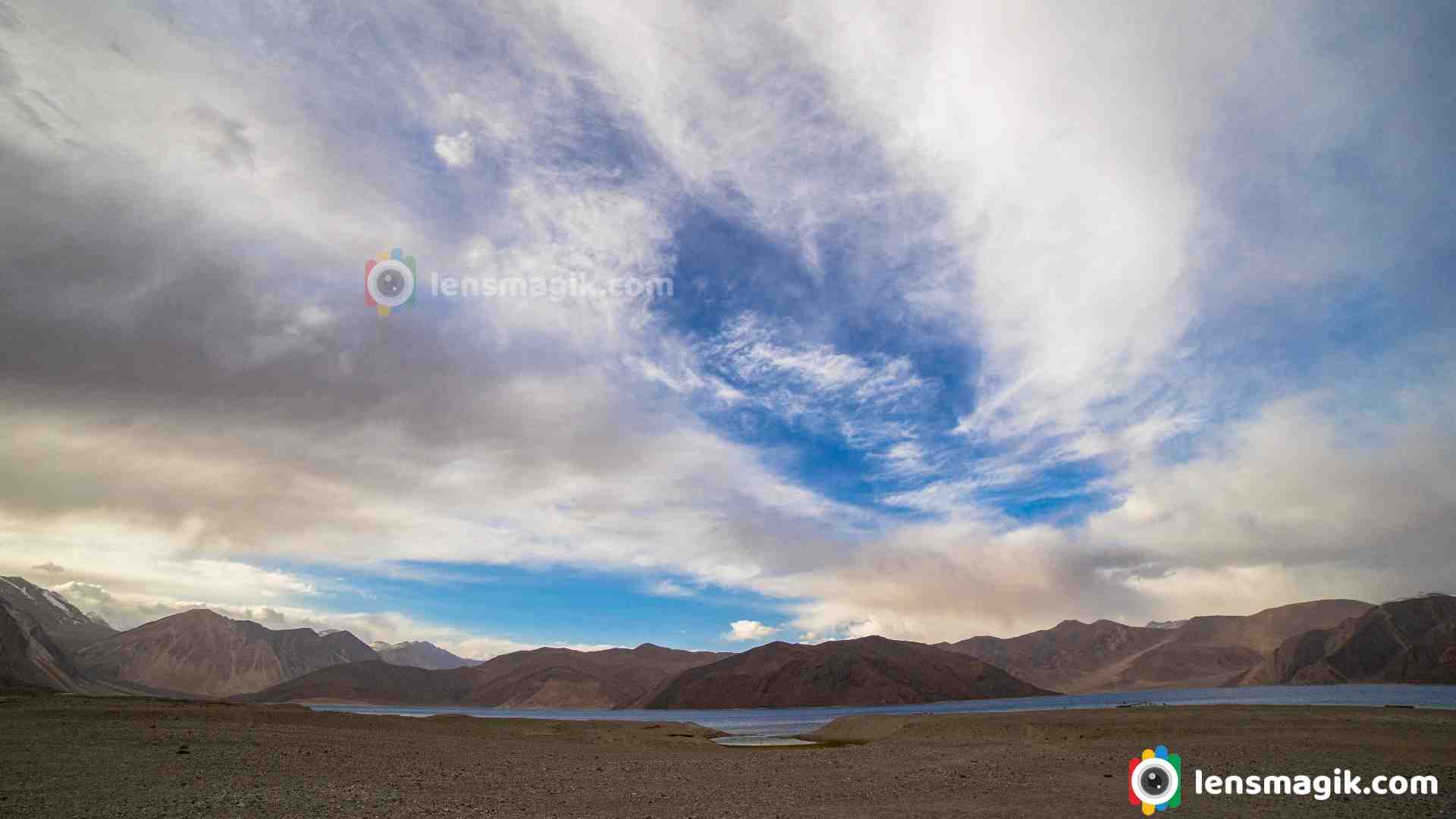
Places To Visit In Leh Ladakh Tour :
- Leh Palace
- Shanti Stupa
- Thiksey Monastery
- Hall of Fame
- Magnetic Hill
- Gurudwara shri Pathar sahib
- Leh Main Market
- Nubra Valley
- Diskit Gompa
- Khardung La pass
- Changla pass
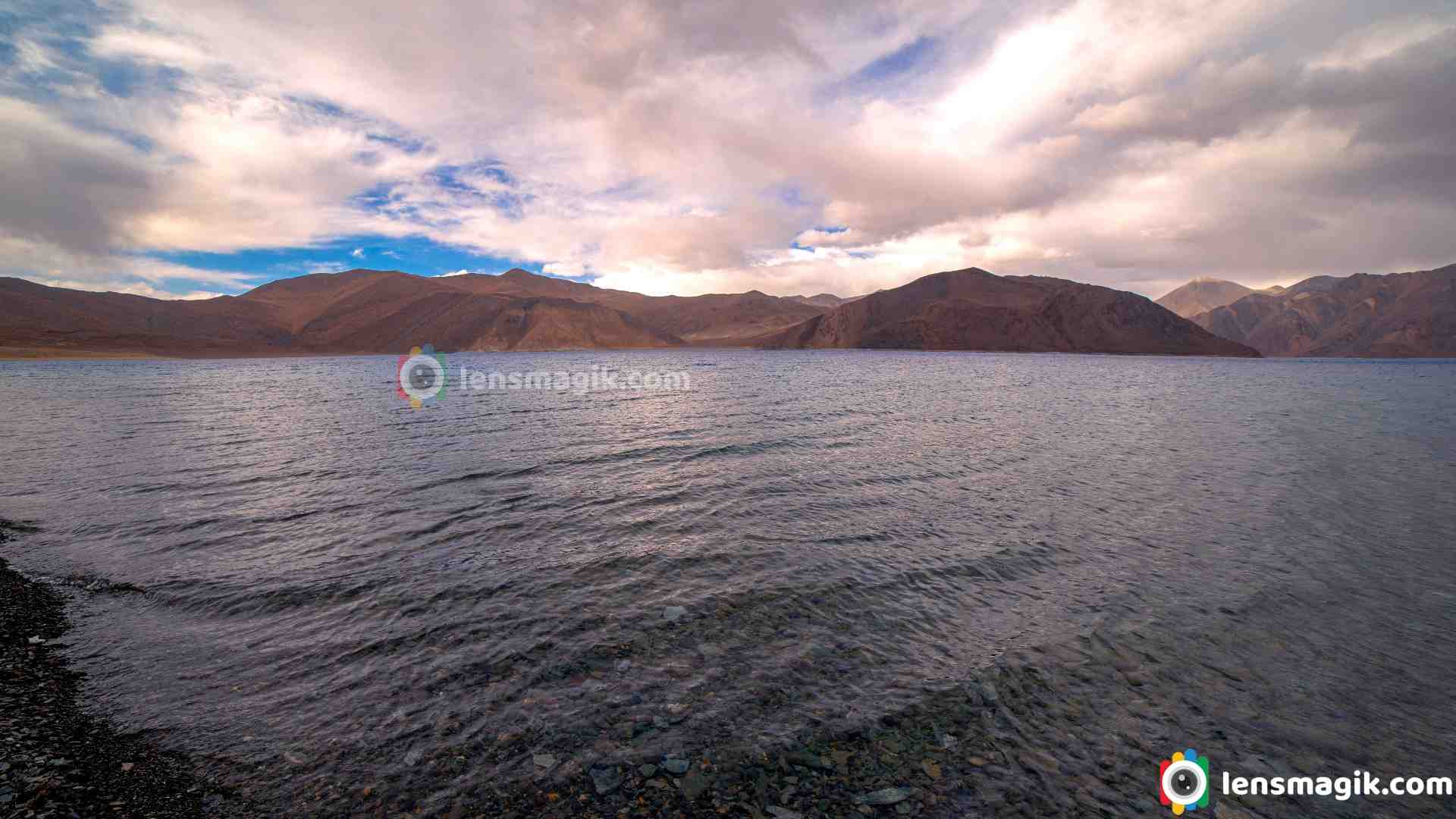
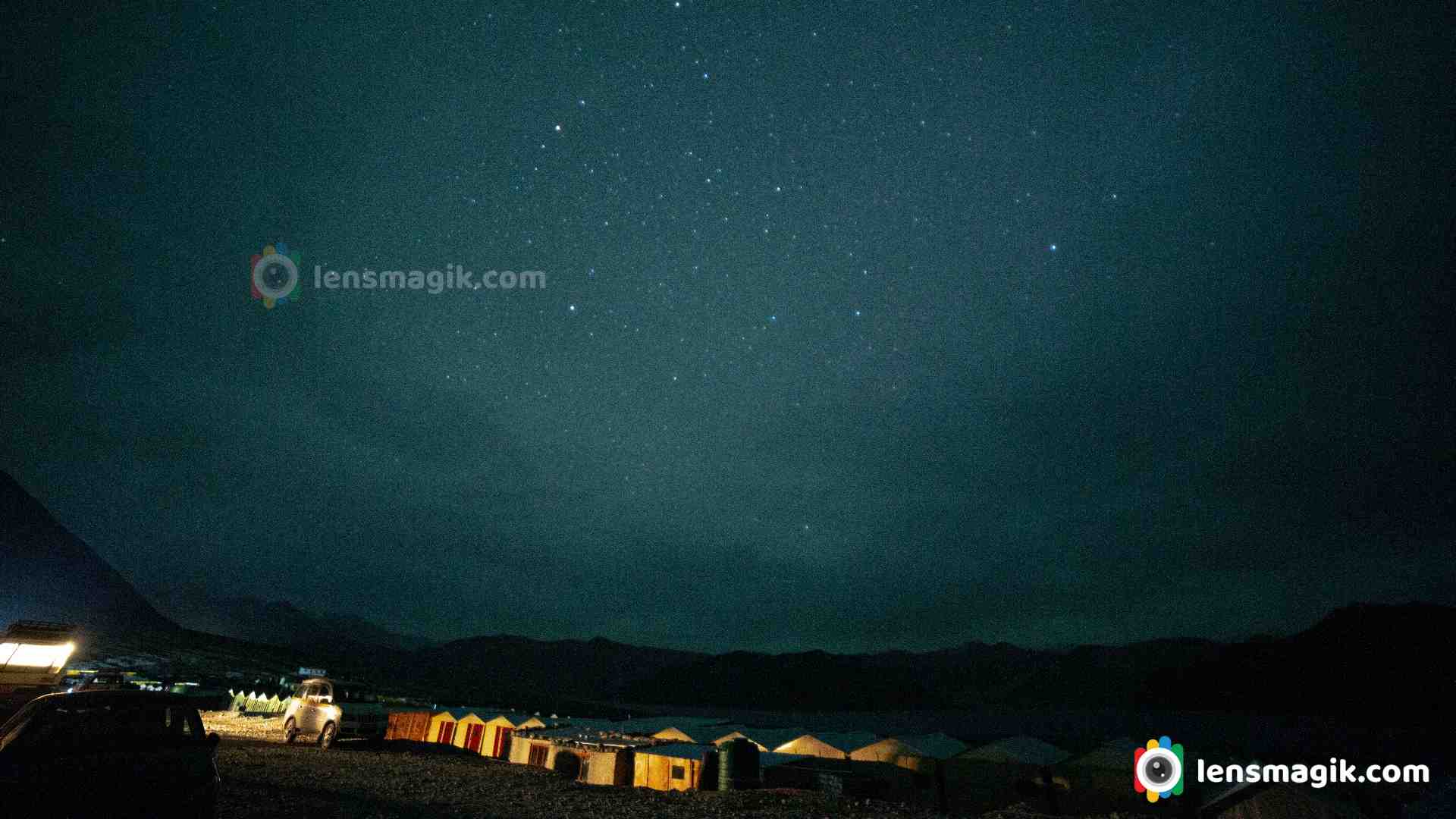
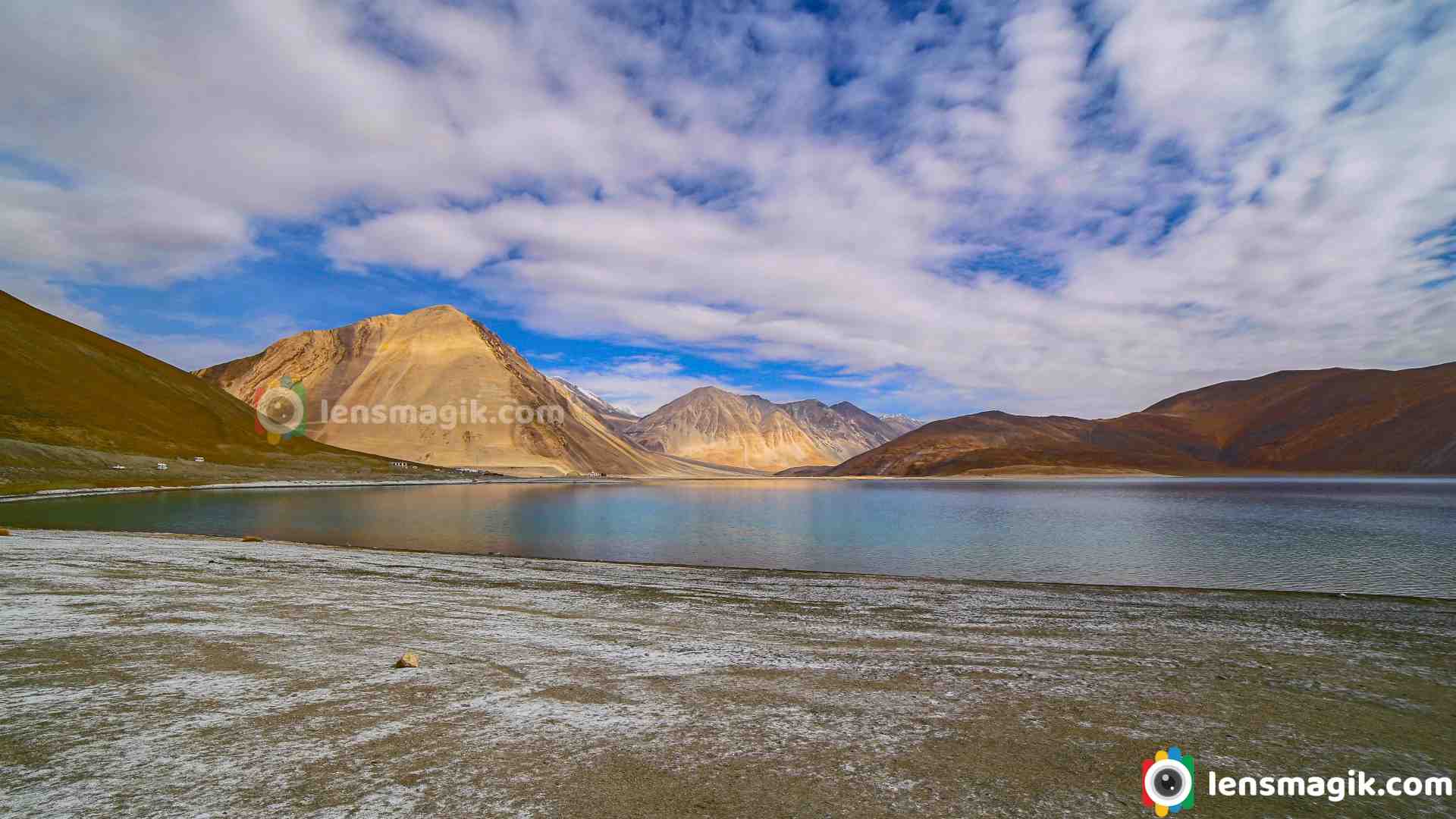
Leh Ladakh is cold desert mountain . Minimum temperature is below freezing during the winter. In summer weather is warm and fine. Average rainfall is 35mm only. Line of Actual Control (LAC) passes through Pangong Tso lake. So the area is most sensitive area border point. Several times Indian Army and Chinese Army (PLA) face off and engaged with sticks, punching, kicking and stone throwing. So may cause casualties both side.
At night at Pangong lake you can see beautiful night sky. When i visited Pangong lake the sky full of cloud so i didn't see much stars but if clouds are not their then you can see much star that you never see in your life. I got good night sky photo at Nubra valley and also got milky way photo too at Nubra valley.
Camera Used : Canon 6D, 14 mm Lens
Read more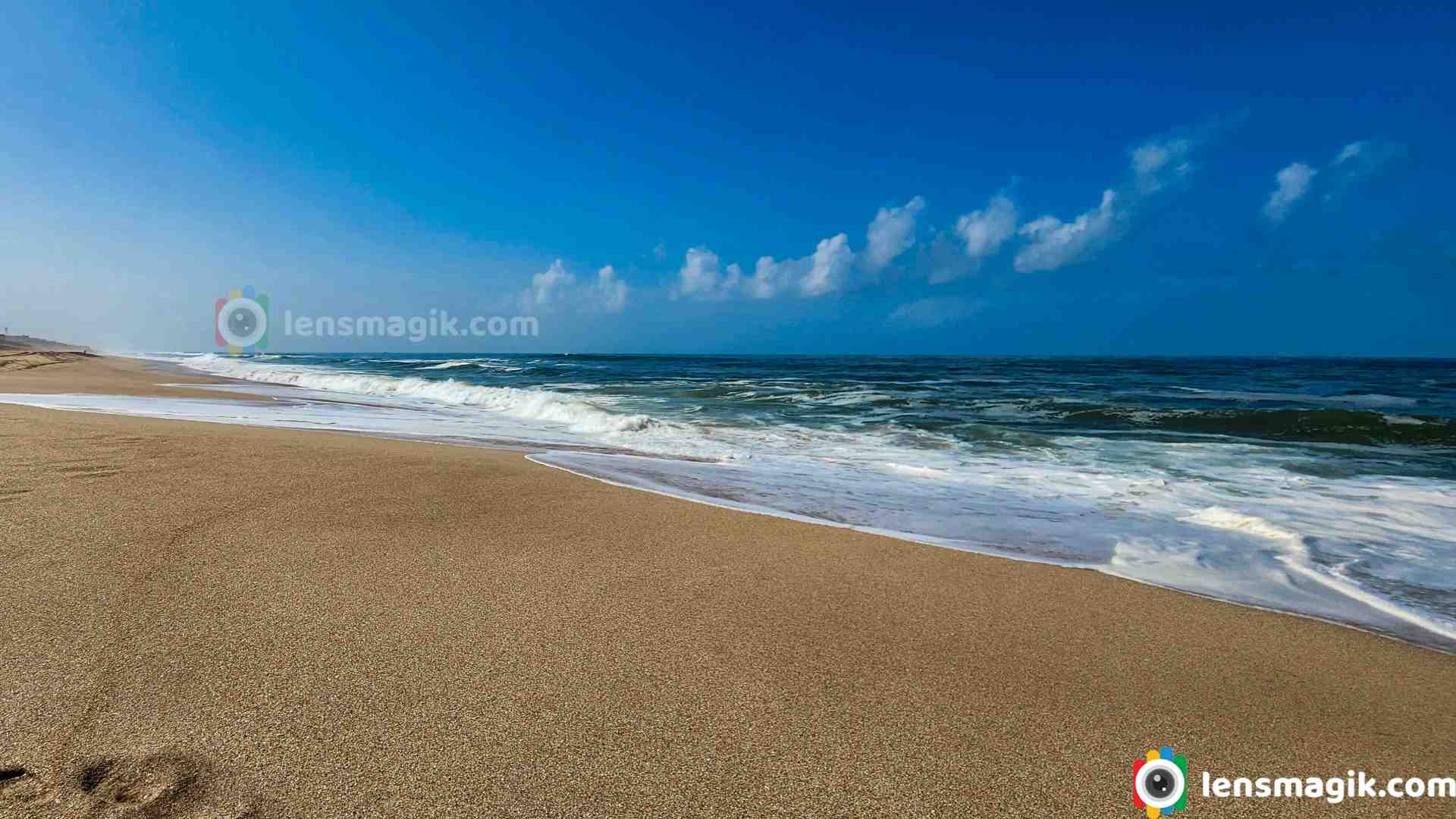
Madhavpur beach is pictorial beach destination located in Porbandar in Gujarat. Madhavpur beach is one of the well known beach of Gujarat. Madhavpur Beach is just 58 km away from Porbandar. The beach is at coastal area between Porbandar to Somnath road. Madhavpur beach is one of Gujarat's beautiful sandy beaches. Name of beach Madhavpur based on King Madav Rao. The beach is at coastal area and the road have stunning views of coastal area and beach vibes. Madhavpur beach has golden sand and very neat and clean beach. Also some water activities done here like camel riding, ATV bike and some more.
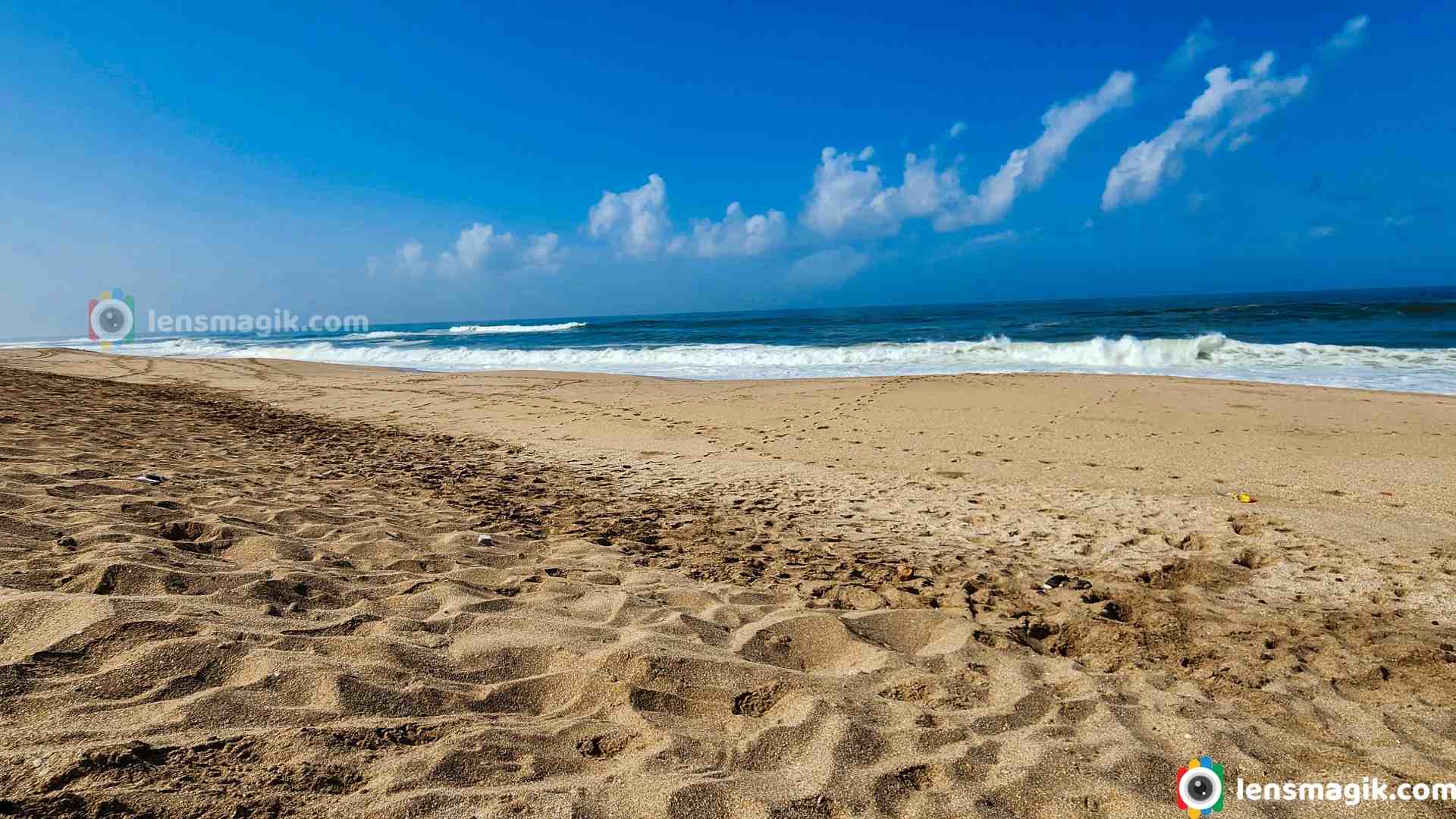
Activities and Attractions of Madhavpur Beach :
Walking On a Beach : You can go for leisure walk on golden sand beach of Madhavpur. During walk you can enjoy sea breeze and also a panoramic view of coastal area.
Go for Picnic : You can go for half day picnic with your family. Come with some food and playing games for kids. Kids can enjoy by playing at beach shore.
Sunset View : A fabulous sunset scene you can enjoy from here. Beach landscape always remembered. You can click some romantic couple shots with sunset vibes.
Can Go for Swimming : If you know swimming then you can enjoy beach with sunbathing and swimming . Also some water activities you can do here. Along with you can do camel ride, ATV bike ride and some more interesting things.
Local Food and Art : At beach you can have some snakes like Kutchhi Dabeli, Snakes , Packed Snakes, Butta and some fresh drinks and Coconut. Also some kids and locals sell Sea Shells so you can buy them for helping them and also for art collections if you interested in it.

Cultural Significant :
Madhavpur beach has important significance of it culture. There is a believe that it is a birth place of Lord Krishna. As per Hindu mythology Lord Krishna arrived here from Dwarka on celestial Chariot . At that time Madhavpur Ghed celebrate grand fair on arrival of Lord Krishna.
Places to Visit near Madhavpur Beach :
Actually you can visit Madhavpur beach when you visit Somnath or Dwarka.
Dwarka : Dwarka is a holy place with lots of temples dedicated to Lord Krishna. Famous temple at Dwarka is Dwarkadhish Temple. From Madhavpur beach to Dwarka is around 164 Km and it takes 2 h 30 min approx. depend on traffic.
Porbandar : Porbandar is a coastal town which is birth place of Mahatma Gandhi and Sudama . Porbandar is also known for historical significance. Distance from Madhavpur beach to Porbandar is around 57 Km and it will takes around 1 hour.
Somnath Temple : Somnath Temple is one of the most popular Hindu Temple and also it is one of the 12 Jyotirlingas of Lord Shiva. Somnath Temple is around 75 Km from Madhavpur beach and it takes around 1 h 30 min .
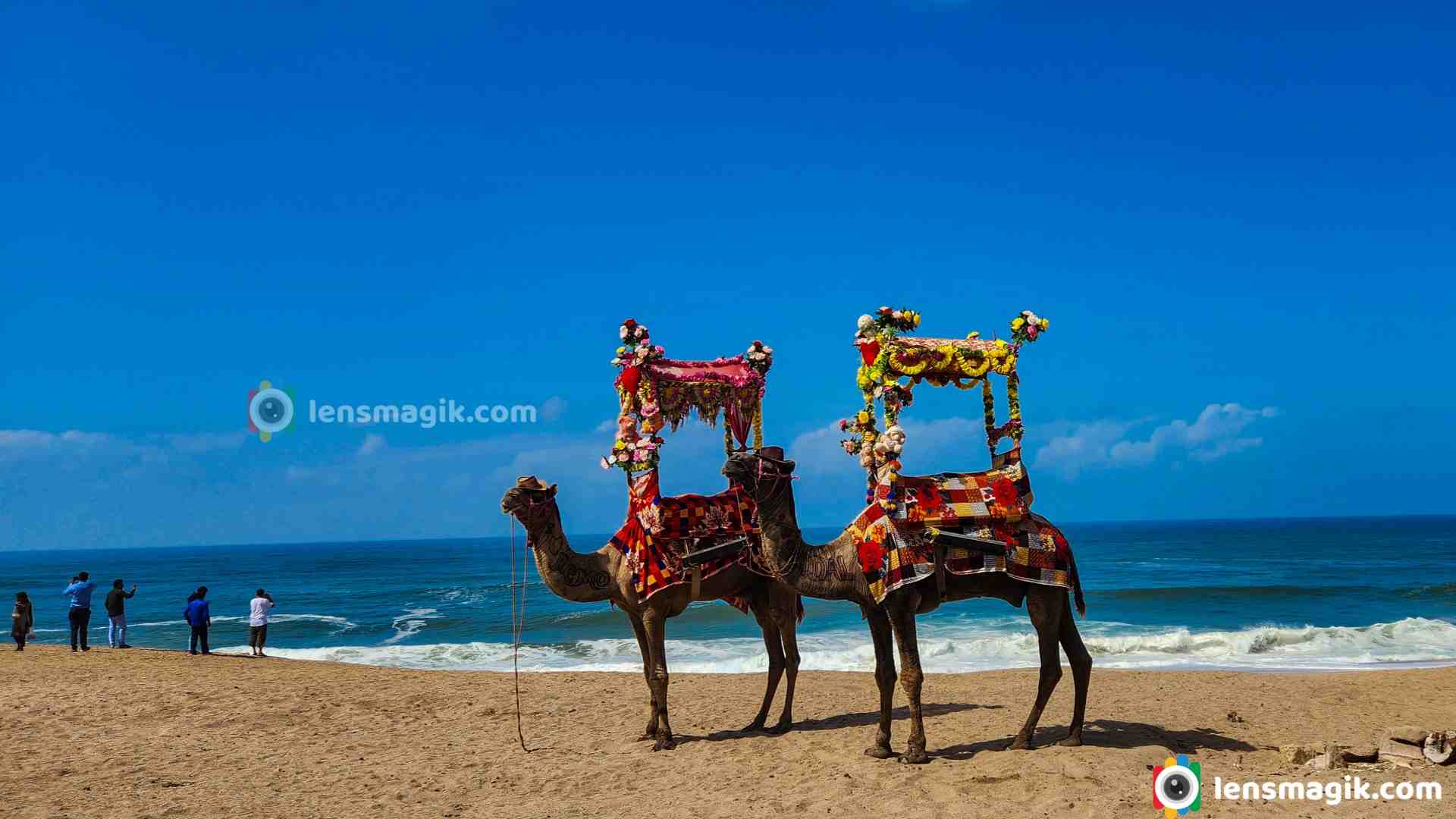
Madhavpur beach is one of the best beach of Gujarat. It is also neat and clean beach. Low crowd and golden sand beach where you can enjoy with your family. I would suggest to visit Madhavpur beach while visiting Somnath or Dwarka or Saurashtra Tour. Somnath and Porbandar is the nearest place to visit and also for stay. Lots of Hotels at Somnath and Porbandar where you can stay. Madhavpur beach if perfect beach for beach lovers. Also for sunset view and photographers you must visit this beach.
Photos taken with Samsung S22 Mobile
Places to Visit Near Madhavpur : Porbandar, Somnath Temple, Gir National Park, Junagadh
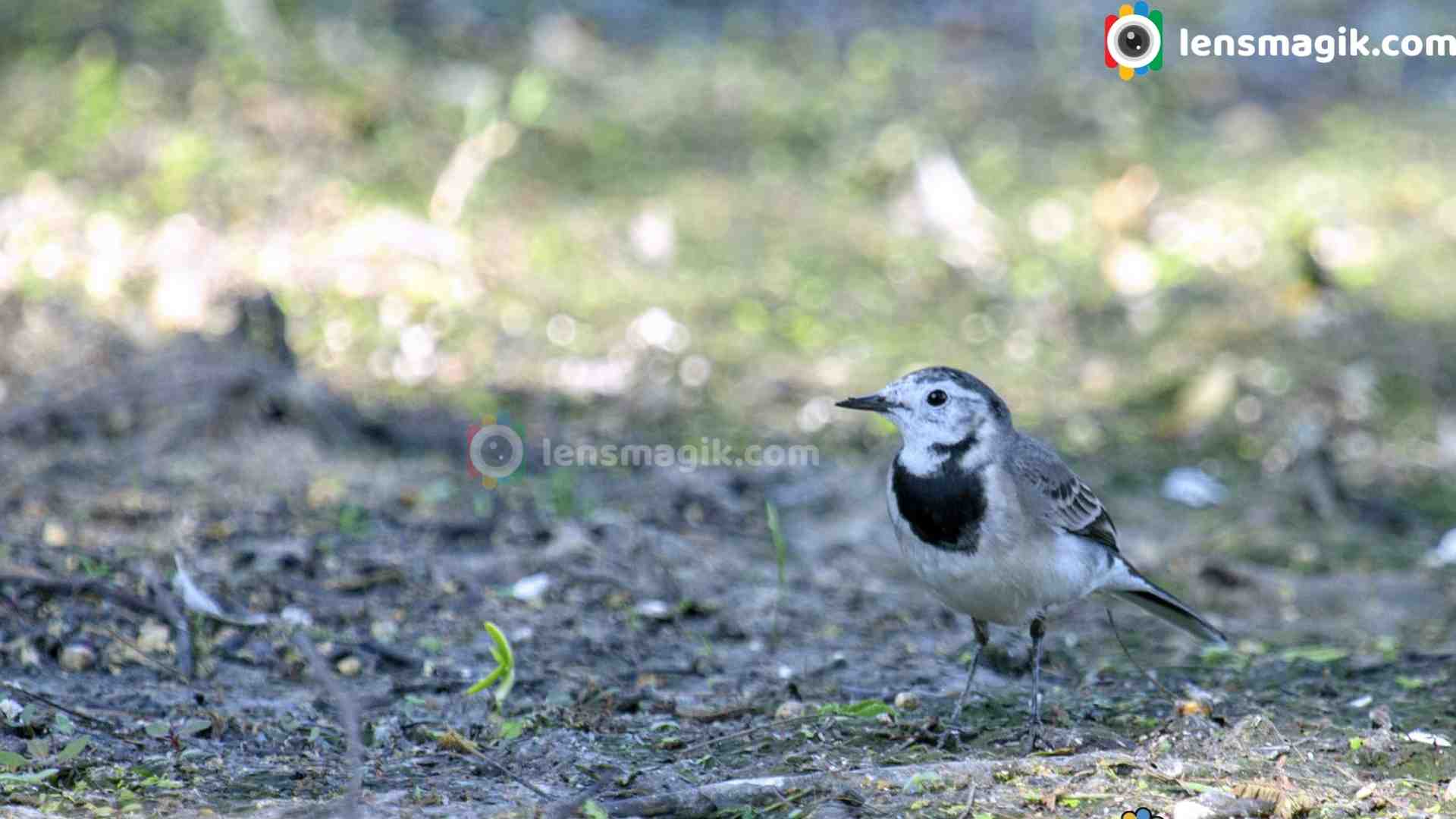
White wagtail is a small passerine bird. It is included in family Motacillidae. It is also included in Pipit and Longclows. White wagtail is a charming little bird. It is recognized by its constant tail wagging. So that its name on its behavior Wagtail. It is resident bird of Mideast parts or migrates to Africa. Some dark sub spices like Pied Wagtail and water wagtail found in Ireland and Great Britain. It generally found near water, ponds, lakes, wetlands and some agriculture areas.
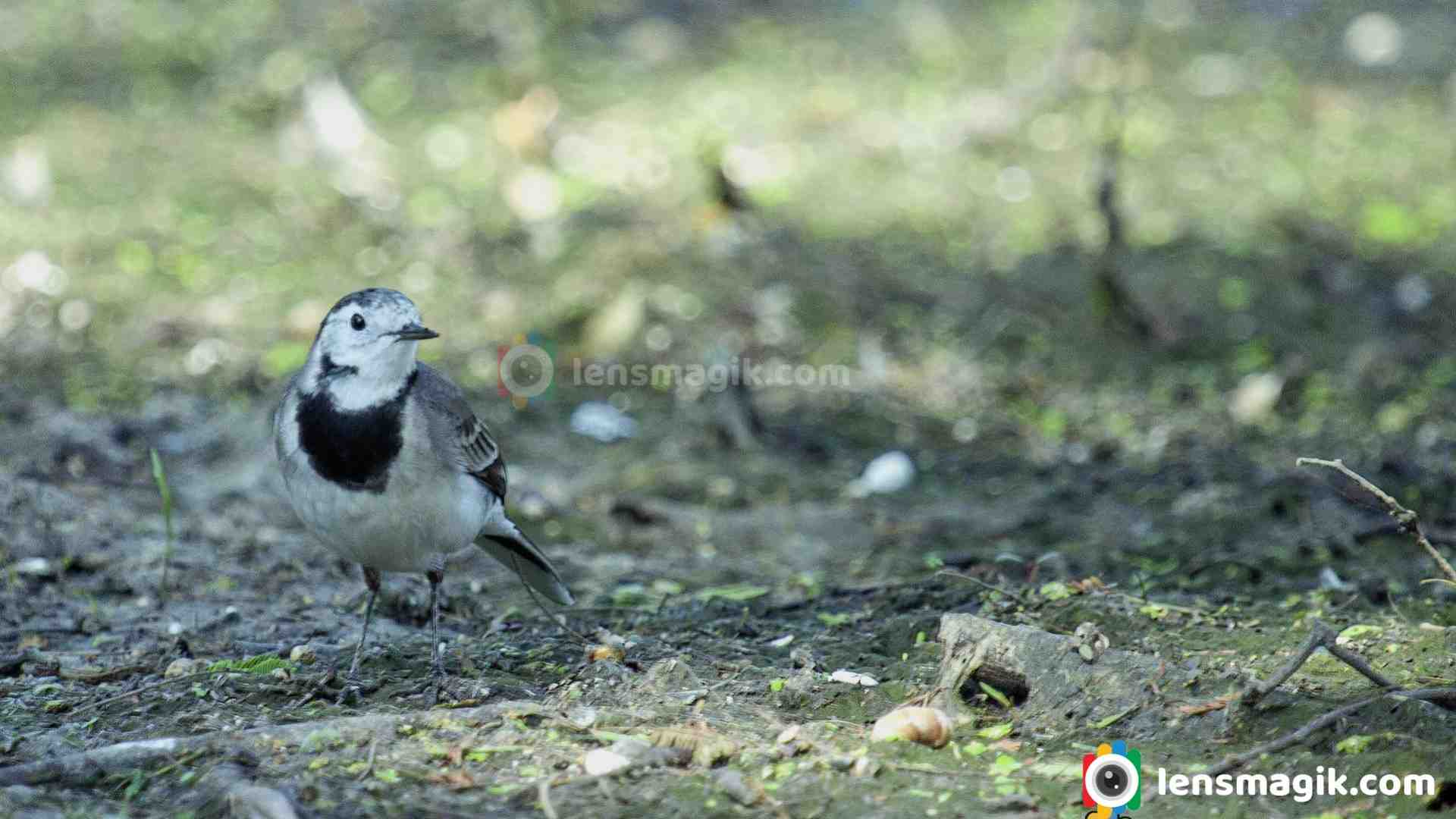
Facts and Description about White Wagtail :
- Size : It is small in size about 16 -19 cm. Weight around 25 gm. It has slender body and Long tail.
- Color : It is black and white in color. Sub spices has some variation in color.
- Diet : It feeds invertebrates and small insects.
- Habitat : It generally found near water bodies like pond, lake, wetland. They are adaptable and also found in urban areas also.
- Behavior : It is active foragers and active all the time lookout for insects. Most distinctive characteristic is its tail constantly moving for balancing , attracting mates and communications.
- White wagtail is National bird of Latvia.
- Lifespan of white wagtail in wild is up to 12 years.
- There are many sub spices with little varying plumage pattern.
- White wagtail generally seen in Pair or in group.
- It breed in Europe, Asia and some part of North Africa.
- The call of White Wagtail is Chisick .
- Breeding season for white wagtail is April to August.
- They lay 3-8 eggs cream colored.
- It is in Least concern in IUCN list.
White wagtail bird is found in many sanctuaries in Gujarat like Thol Bird Sanctuary, Nal Sarovar Sanctuary, Pariej Wetland and many more wetland and lakes in Gujarat. I found first time at Thol Lake in Gujarat during summer. It generally migrate for food and cold season. It was very long time i capture in my camera. I shoot it at ground level by crawling and get good result as well .
Location : Photos taken at Thol Bird Sanctuary
Camera Used : Canon 1000 D, Canon 100-400 mm lens.
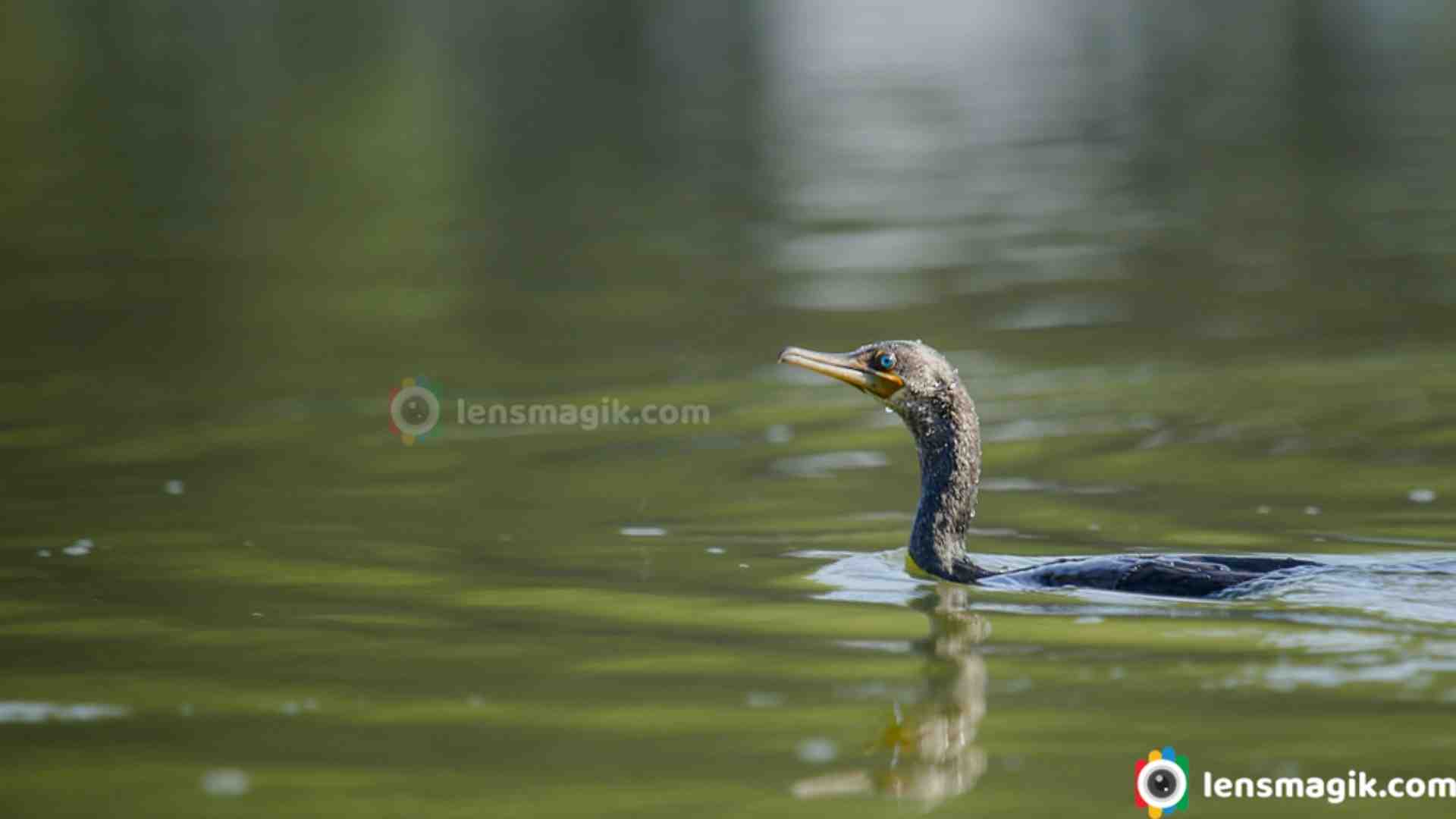
Little Cormorant is a member of cormorant family. It is widely distributed in India. It is found in Sri Lanka, All over India, Bangladesh, Myanmar, Pakistan and lower Nepal. They generally found at pond, lake and wetlands near agriculture and village areas. In Gujarat they found at many places like Thol Bird Sanctuary, Nal Sarovar Sanctuary, Velavadar Sanctuary and also some wetlands near Little rann of Kutch and many other areas. They are good diver in the water and also famous for fishing expert dive into water and catch the fish. In Gujarat the best place to see Little Cormorant is Thol Bird Sanctuary and Nal Sarovar Sanctuary.
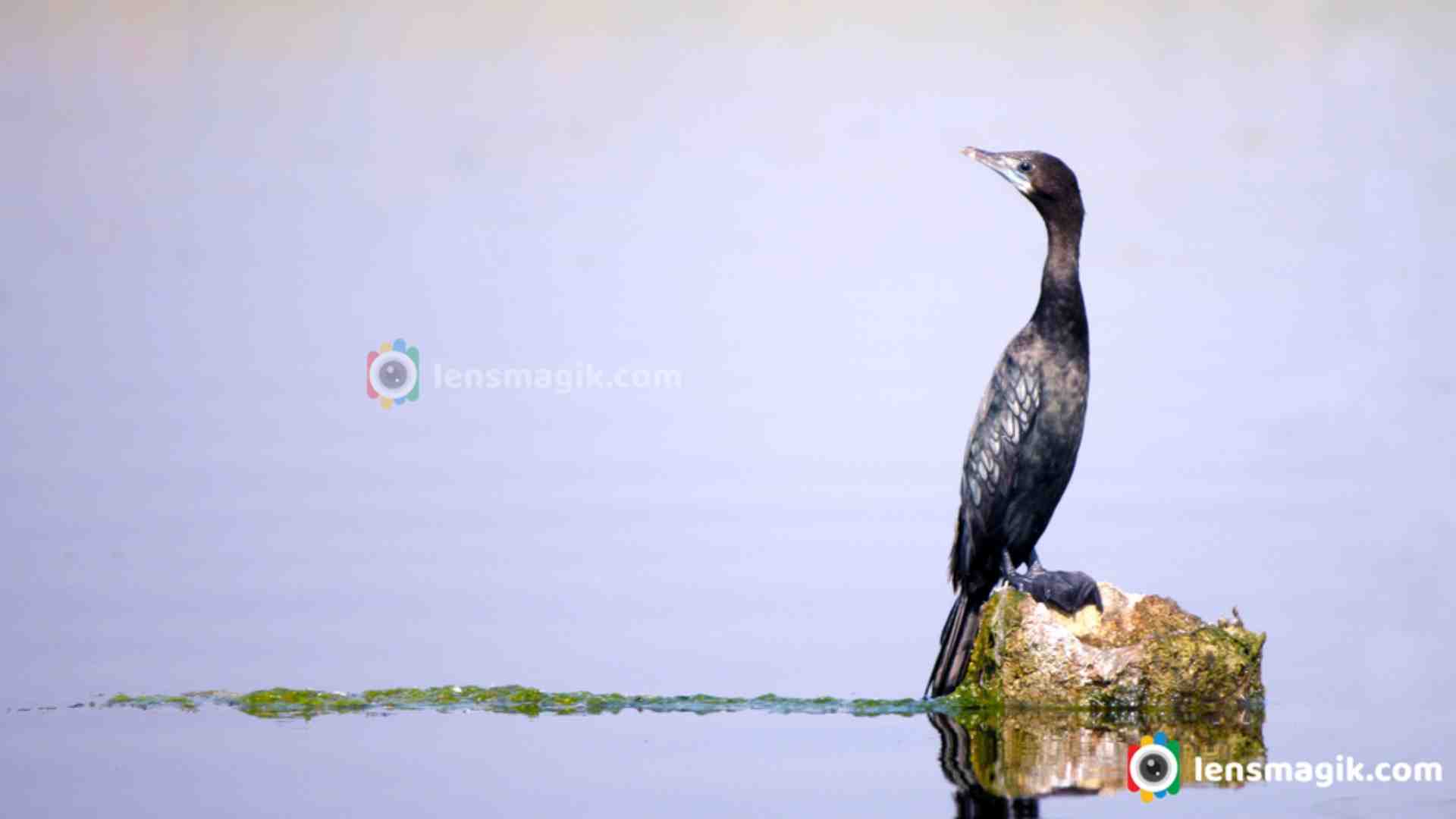
Description of Little Cormorant :
- Size of Little cormorant is smaller than Indian Cormorant. The Length of little cormorant is around 50 cm.
- The bill of little cormorant is shorter and stouter compared to Indian Cormorant.
- Color of Little Cormorant is black. There is some variation during breeding and plumage in different season. Breeding adult have white spot on their face.
- The main diet of Little cormorant is Fish. They can dive into the water and catch the fish underwater.
- Little Cormorant found in Inland and Coastal water bodies including ponds, lakes, rivers and coastal areas.
- They generally seen in small groups but can also be solitary.
- Breeding season for Cormorant is July to September in Pakistan and in India season is November to February.
- Both male and female built nest together. It will take two weeks to built nest.
- They lay eggs in interval of two days around two to six eggs.
- Incubation period around 15-20 days. After that eggs hatched. After one month young birds are free to leave nest.
- The call of Little Cormorant is ah-ah-ah and kok-kok-kok .
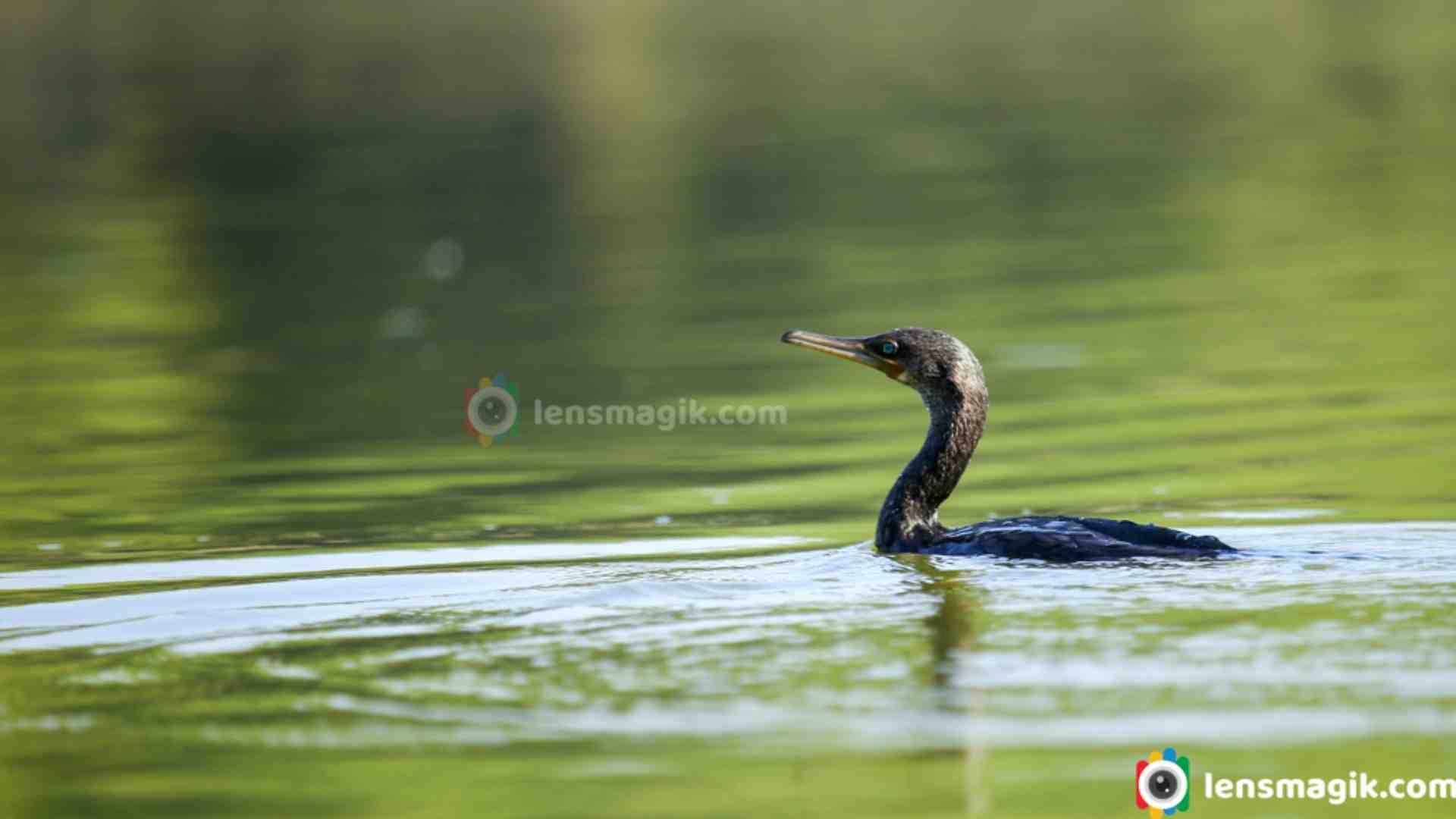
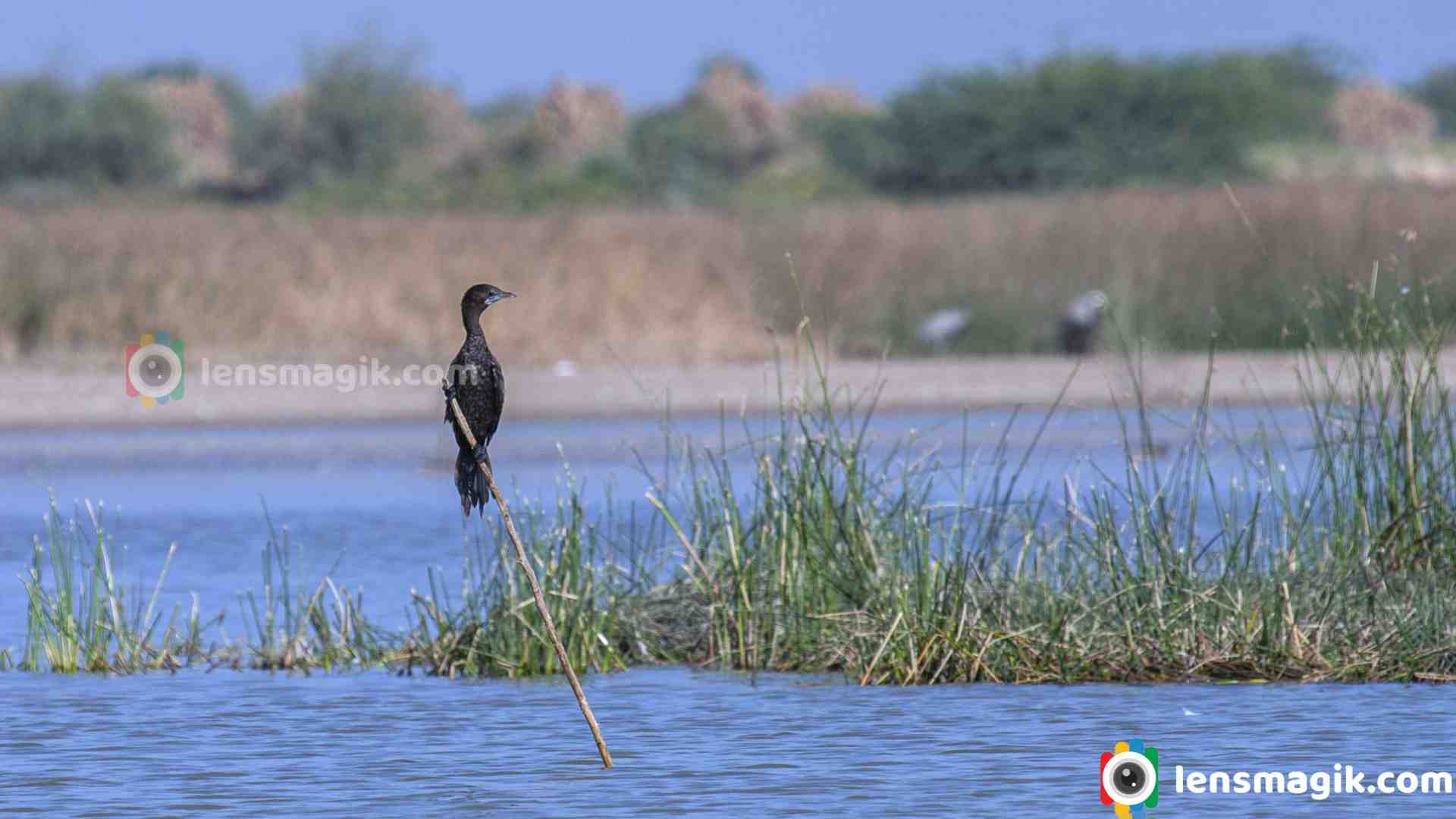
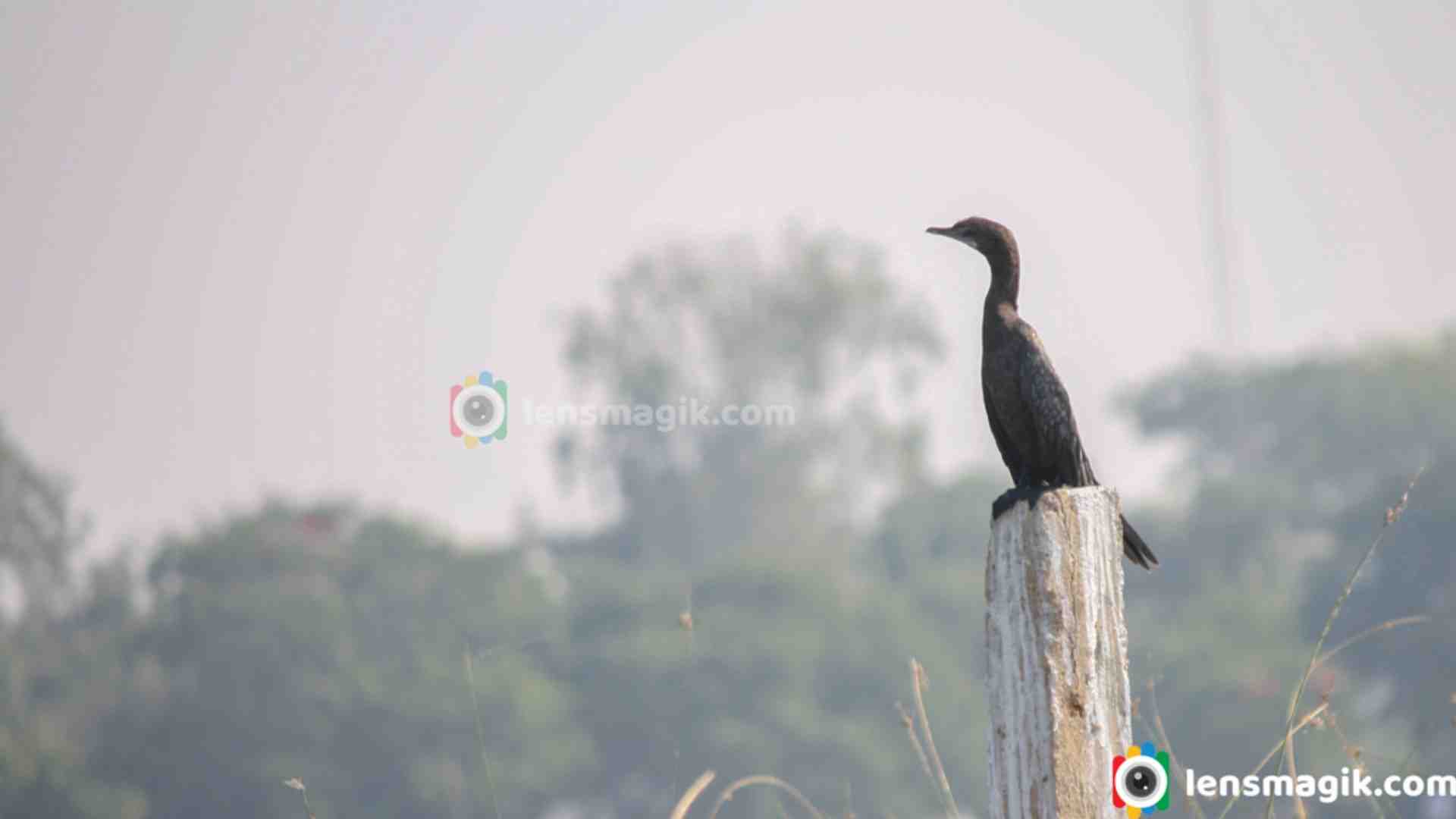
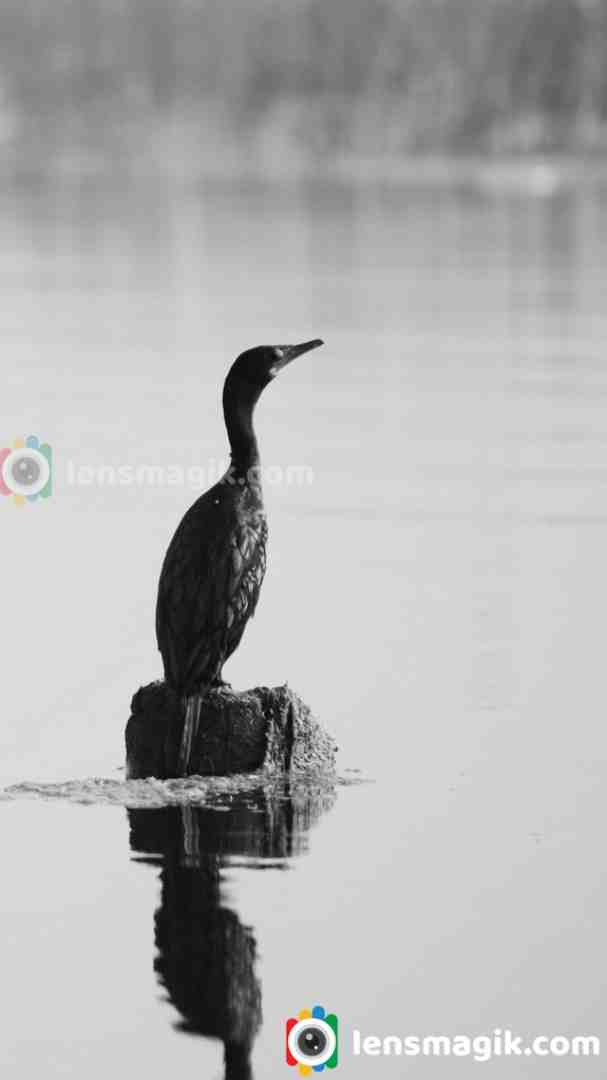
Little Cormorant is widely spread in India. You can easily find them near pond, lake and many wetland areas . You can easily identify little cormorant as its color is full black and its beak. Also they stand on tree trunk or on tree with spreading their wings for a long time. After waiting for sometimes little cormorant dive into water and catch fish and come out from water. Little cormorant is famous for its hunting skill. It is resident bird in India. Also Greater Flamingo, Great White Pelican, Bar Headed Goose, Eurasian Spoonbill, Many Ducks and many migratory birds found at Nalsarovar and Thol Bird sanctuary.
Location : Thol Bird Sanctuary, Little Rann of Kutch, Nal Sarovar Sanctuary
Camera used : Canon 1000 D, Canon 80 D, Canon 6 D, Canon 100-400 mm lens
Read moreAccentor is a small bird of prunellidae family. In India it is generally found in East Sikkim area. It built its nest low in a bush. When i was on a trip to Singalila National Park. I found at sandakphu area. Sandakphu is high altitude place in Singalila National Park located in West Bengal. From here you can see Mt. Kanchenjunga very clear which is highest peak of West Bengal. Lots of Birds here. To visit Singalila Park November to February you can found lots of snow and good landscapes too with snow on Mt Kanchenjunga. Also if you are going for birding you can visit March to May/June Month is the best . It is very cold weather during winter November to February at Singalila National park.
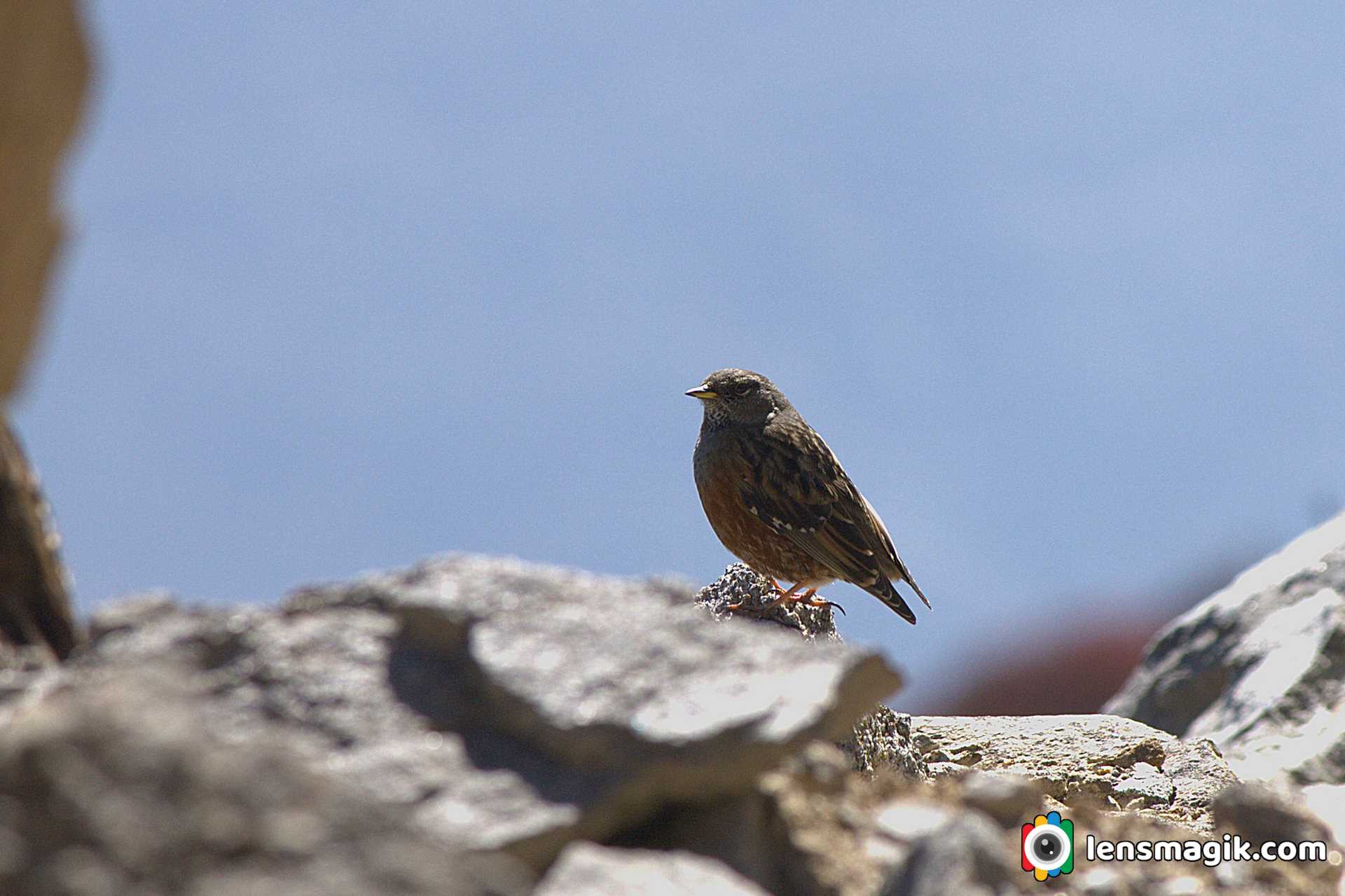
About Alpine Accentor Bird :
- Alpine Accentor bird is robin size bird. Length of bird is around 15 -17 cm.
- Bird just like similar to house sparrow in color with brown back streaked.
- Adult Alpine Accentor have red brown spotting on underparts
- Also adult have grey head too.
- In Asia Accentor found at 2000 m above height. Specially at Himalayas.
- It build nest in bush.
- It laying 3-4 plain (not spotted) eggs of sky blue color.
Singalila National Park :
Singalila national park is located in West Bengal. There are lots of birds in this sanctuary. Also its good for trekking at Sandakphu. From here you can see Mt. Kanchenjunga easily and very closely. Also a beautiful Himalayan Mountain range with snow. Amazing weather very cold in winter and moderate in summer. Summer season is the best for birding at sandakphu.
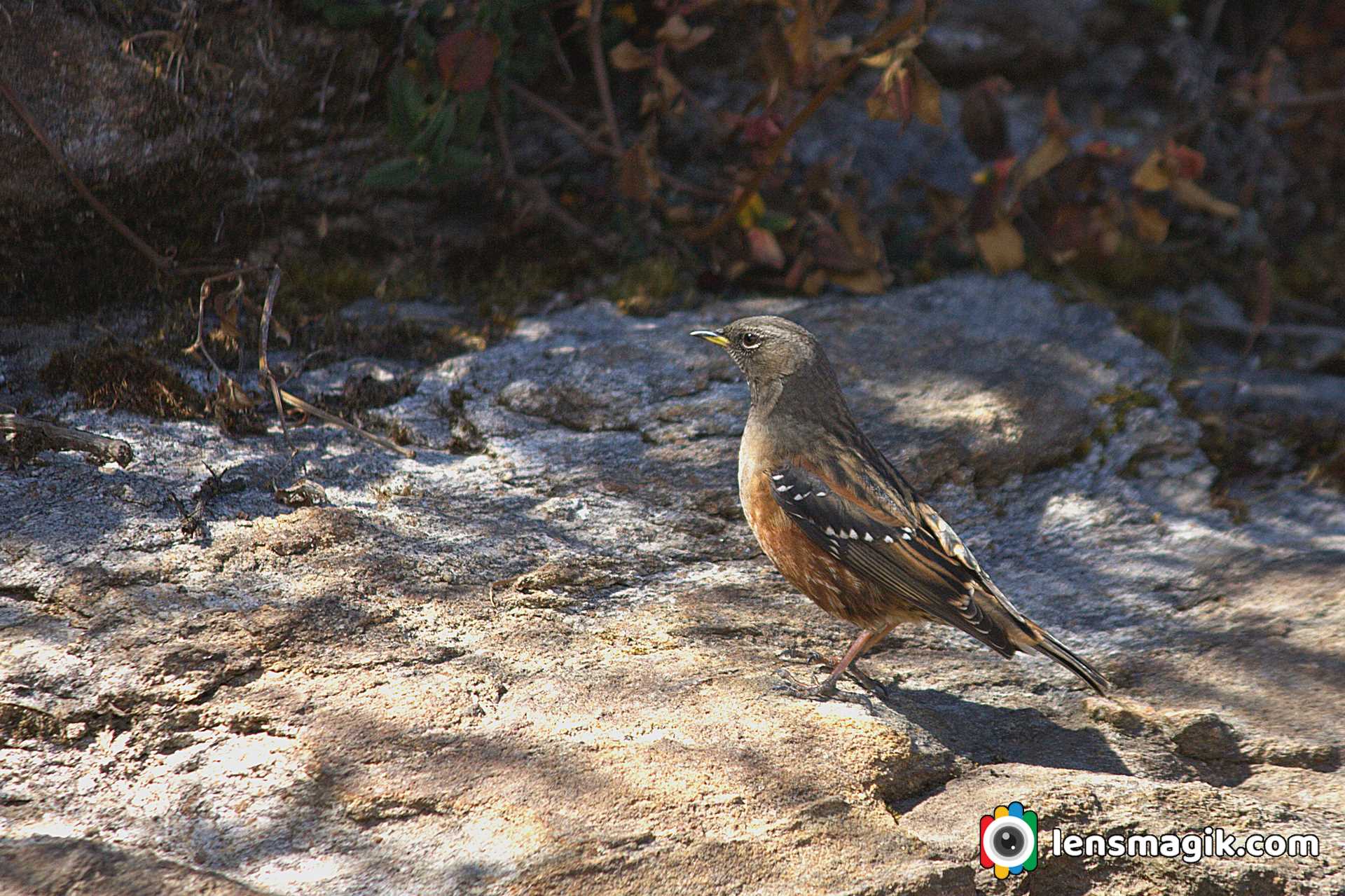
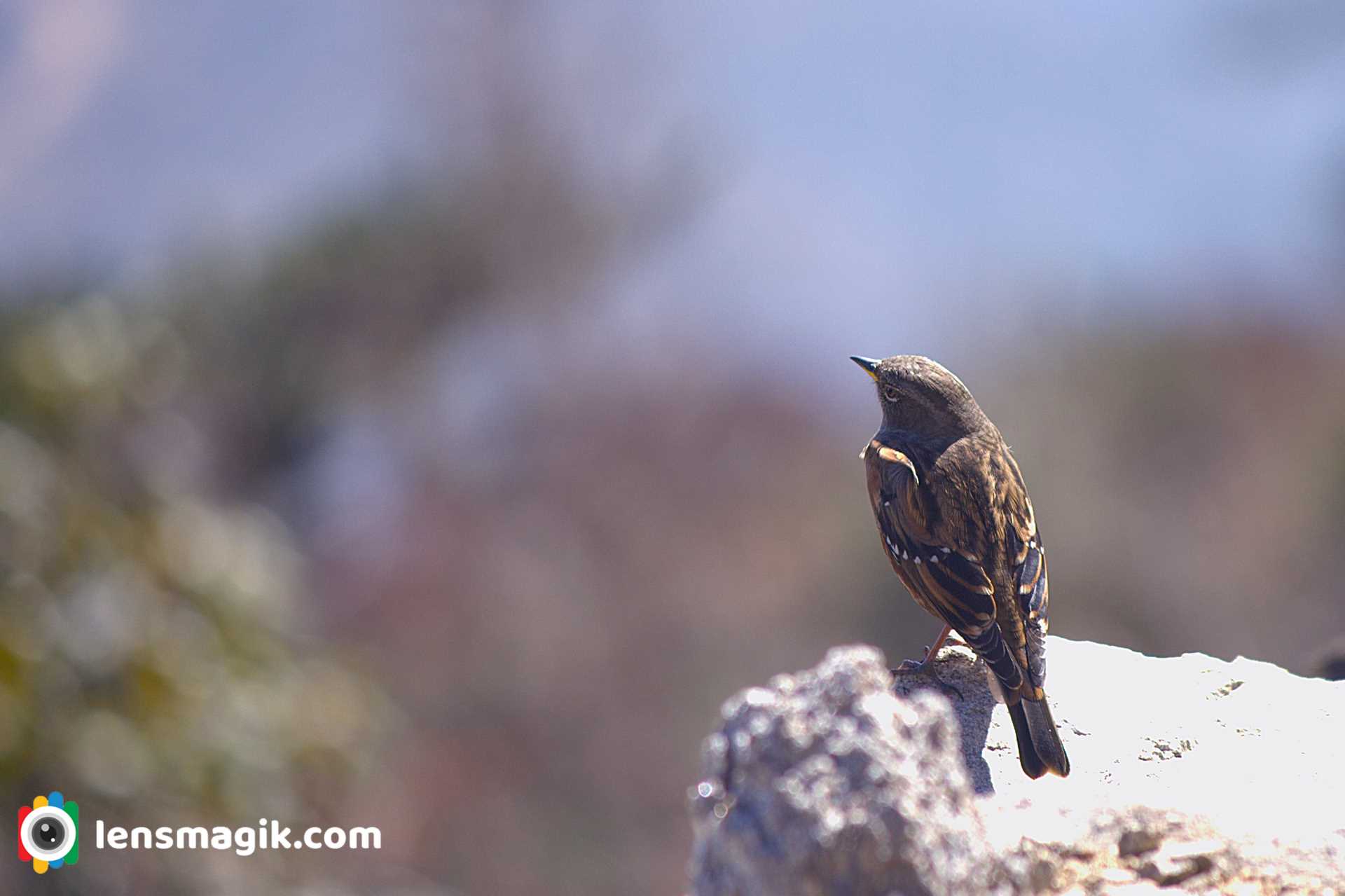
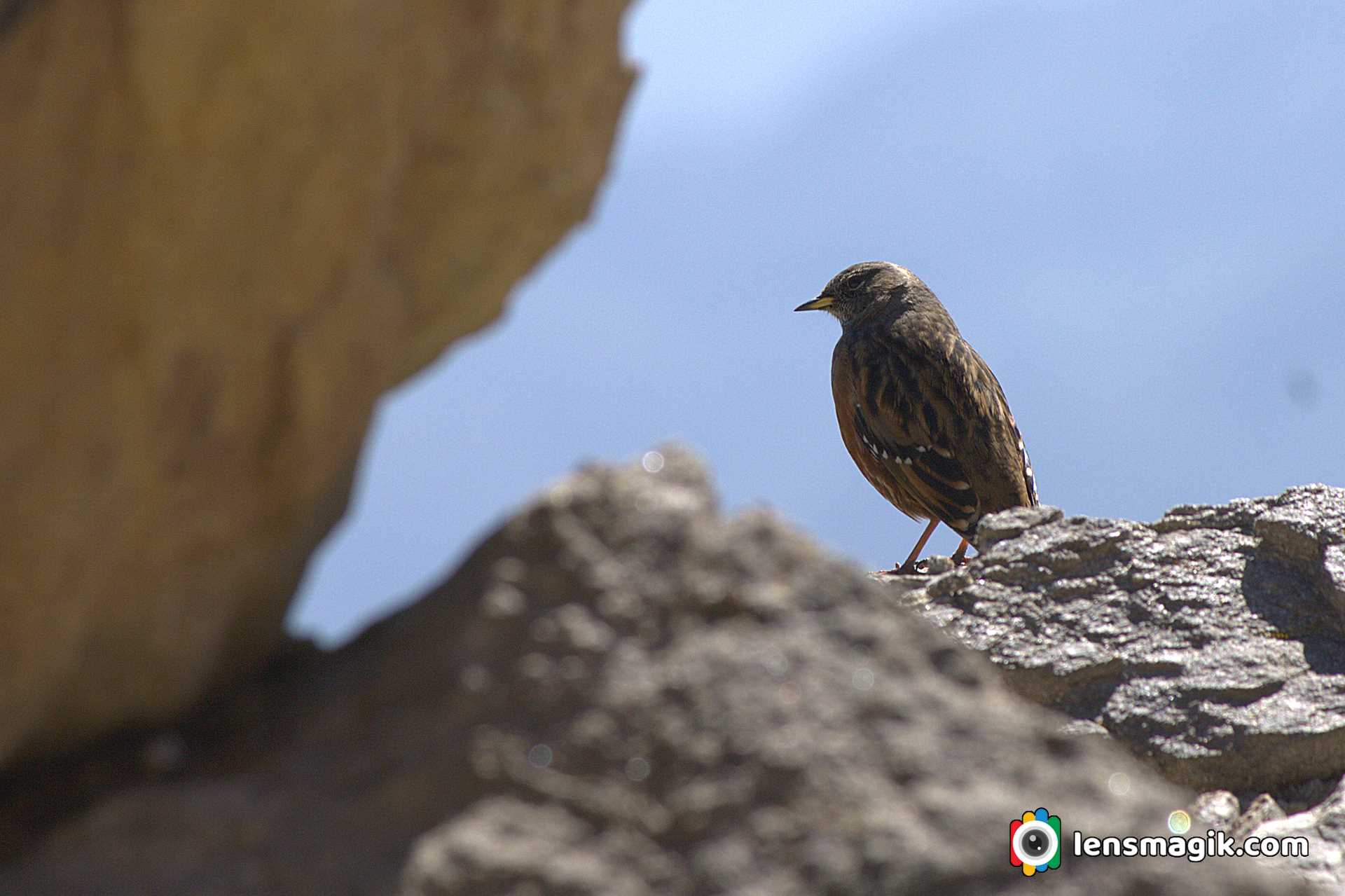
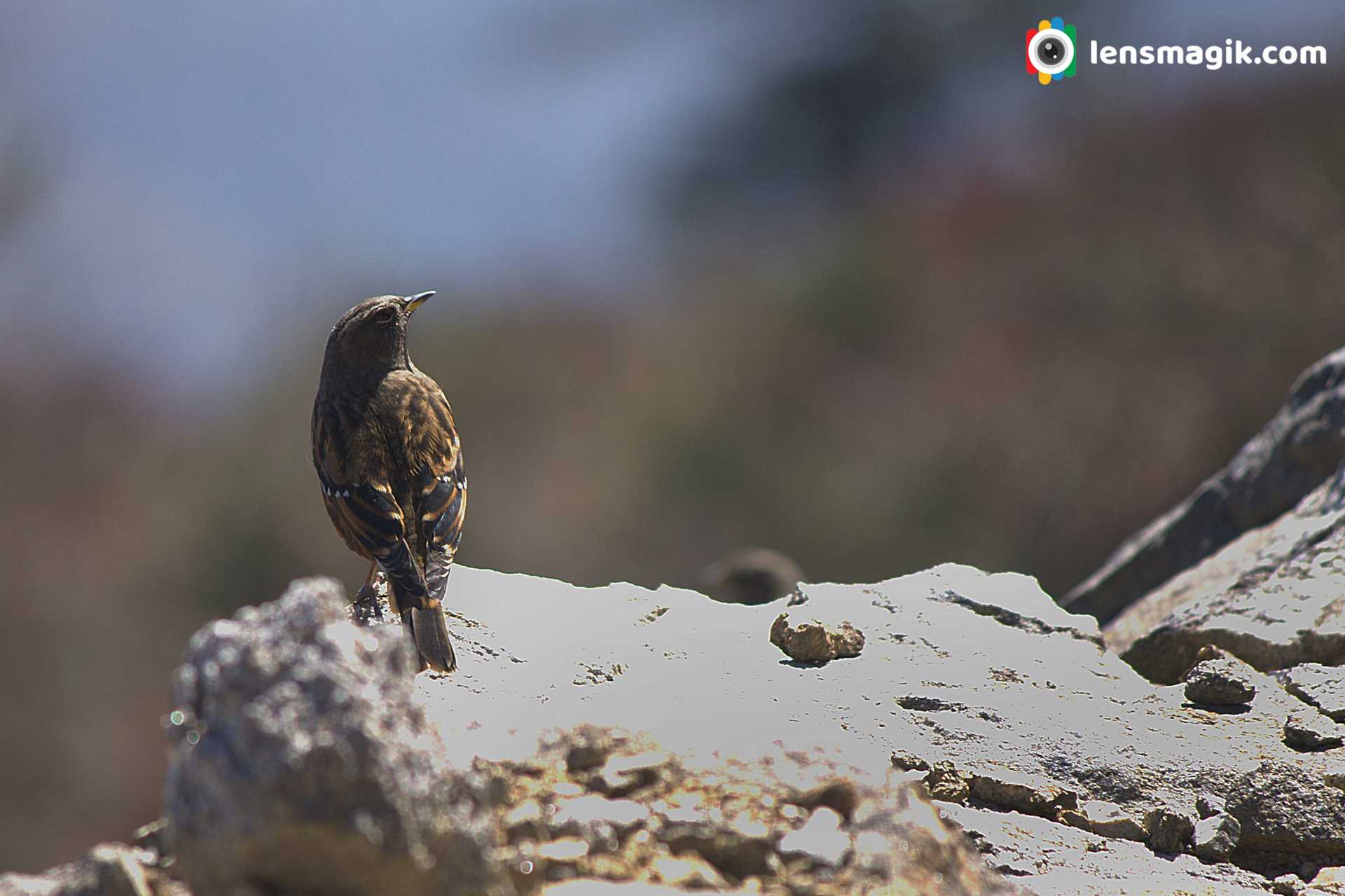
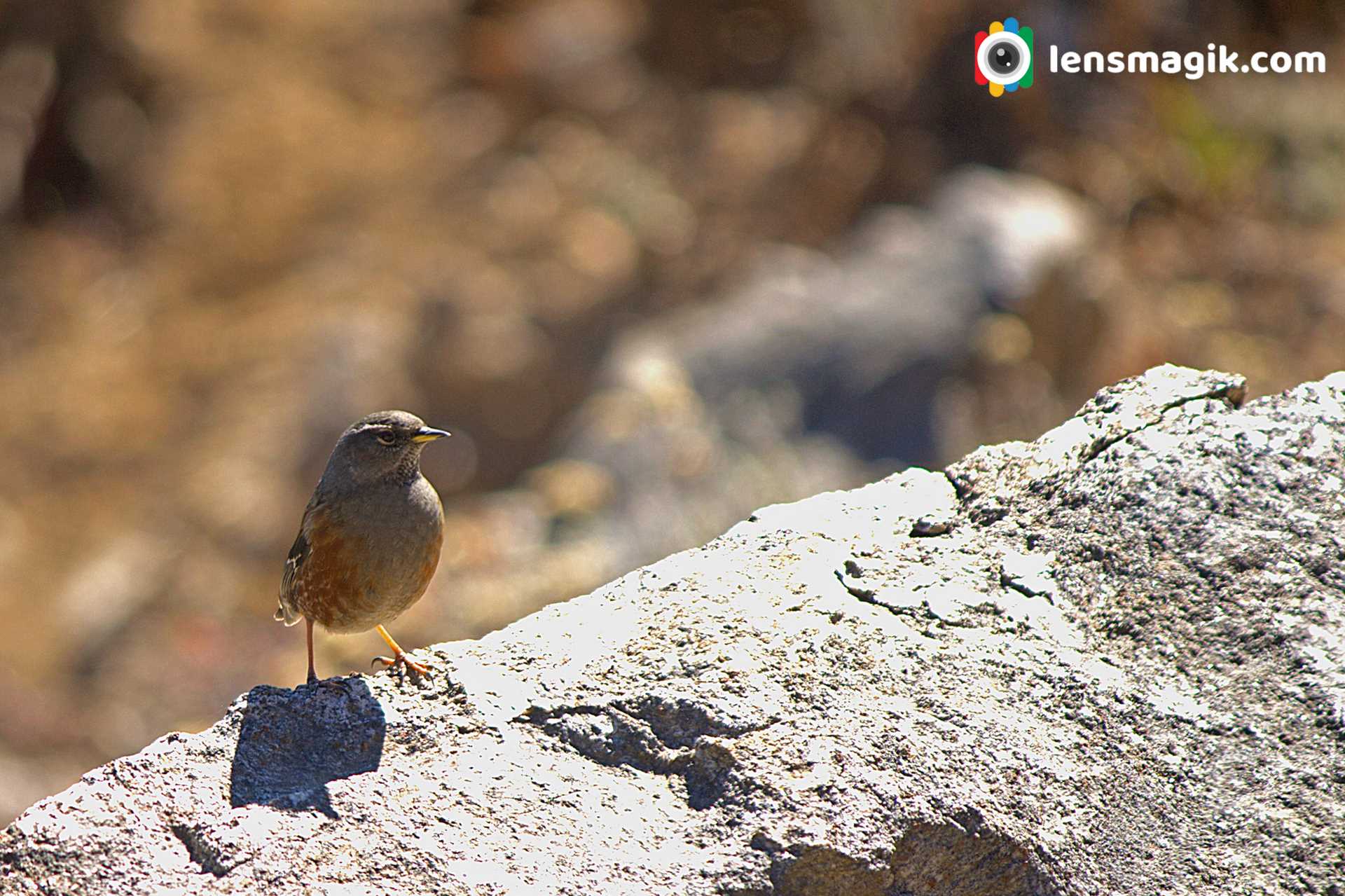
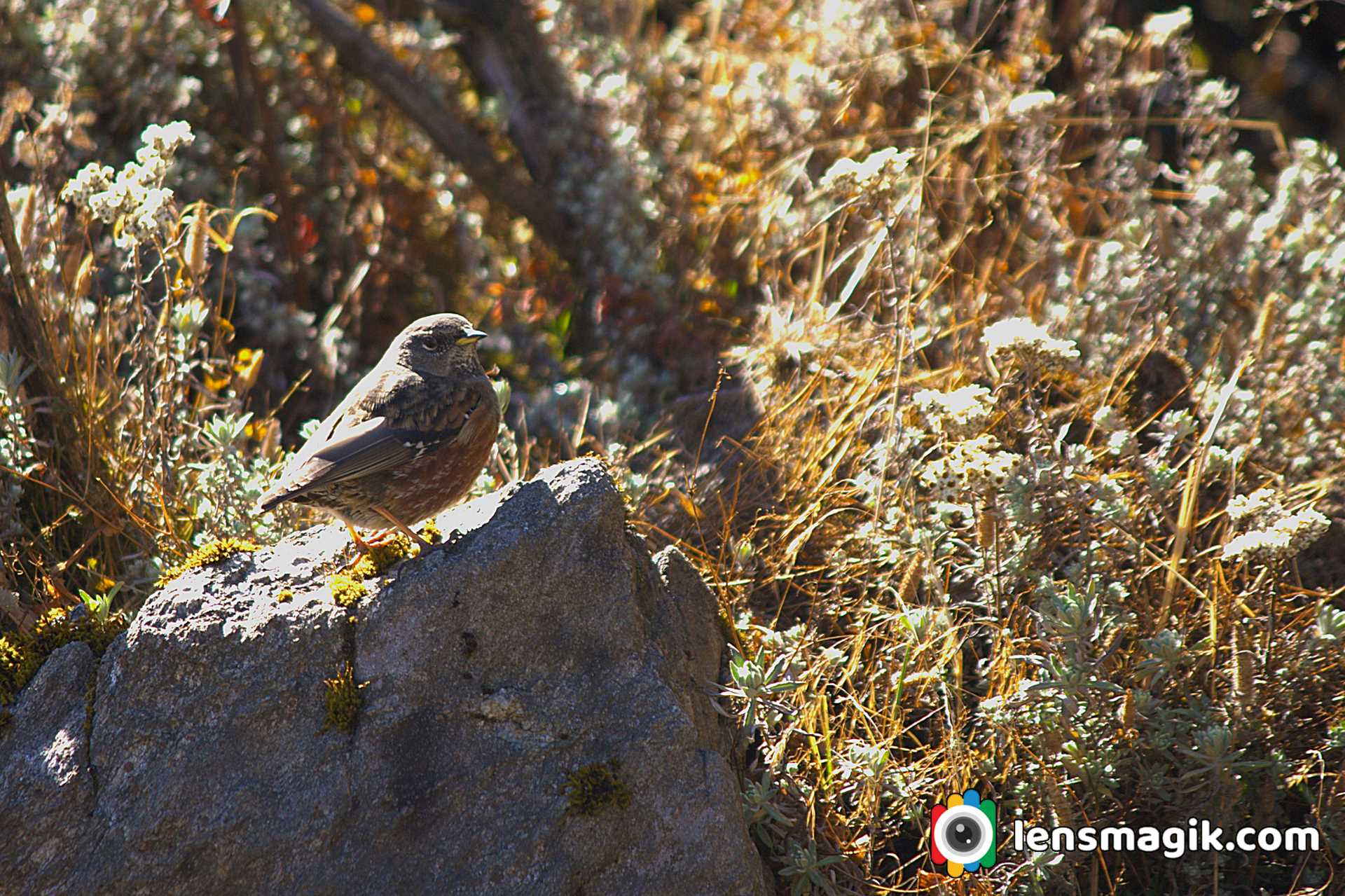
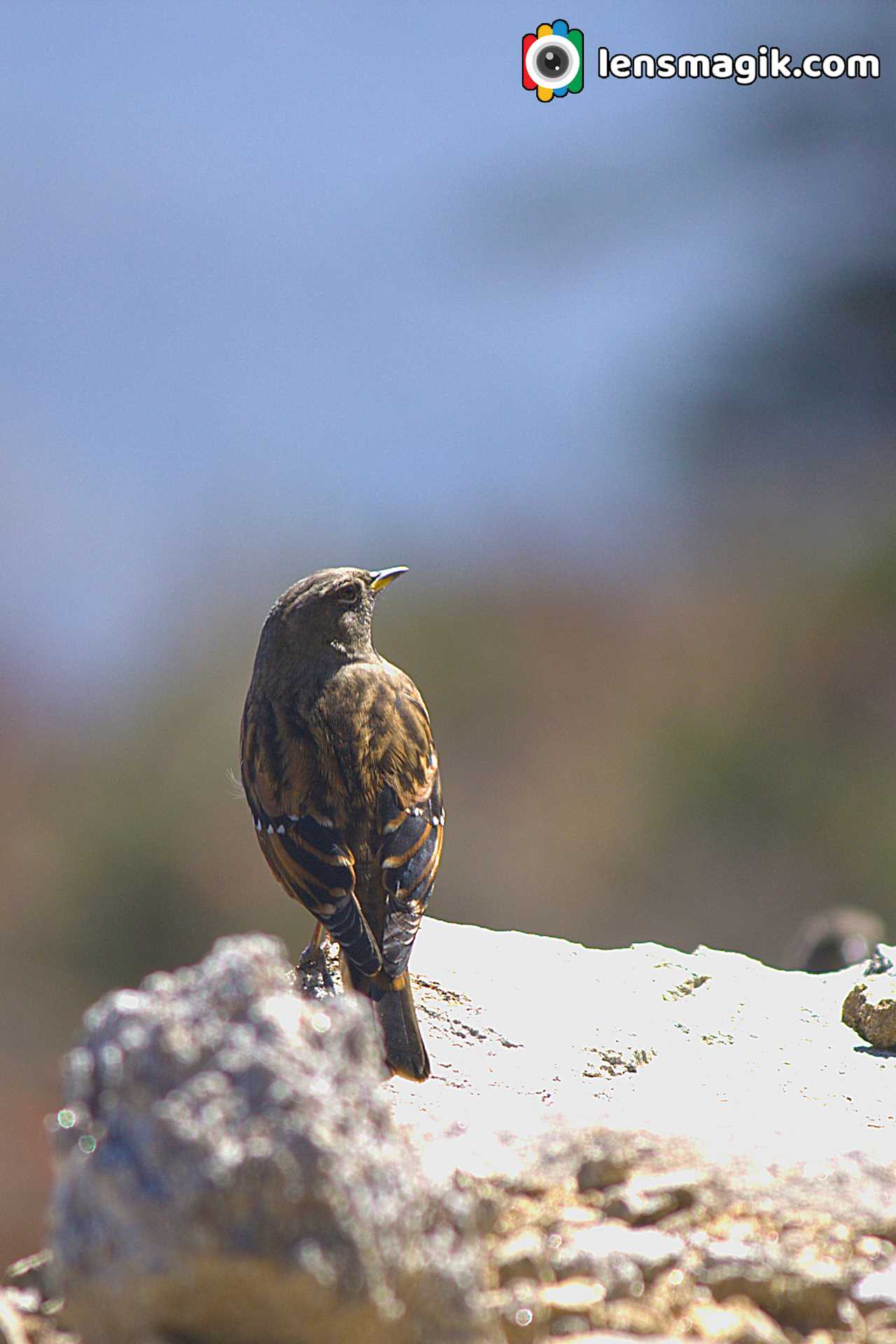
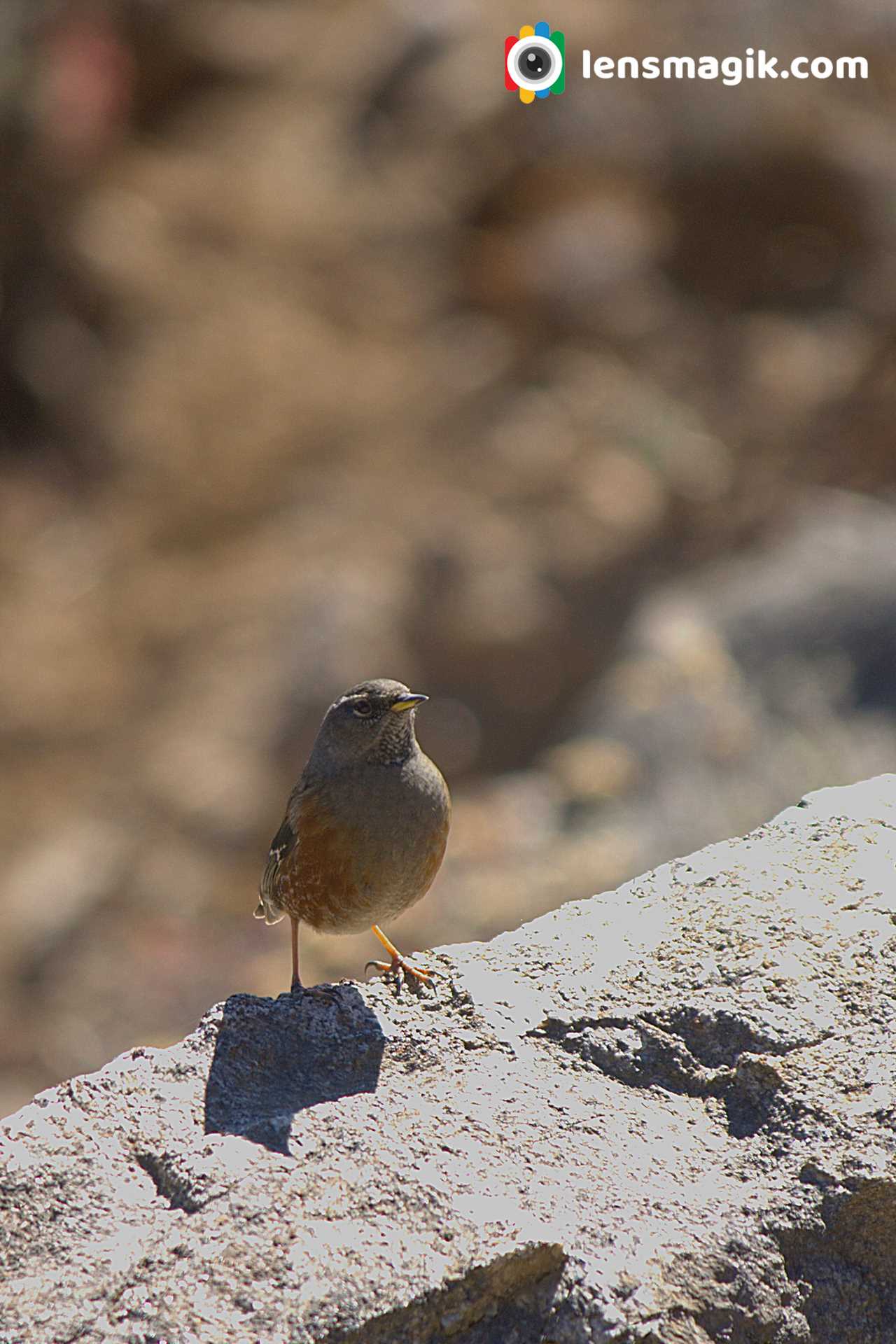
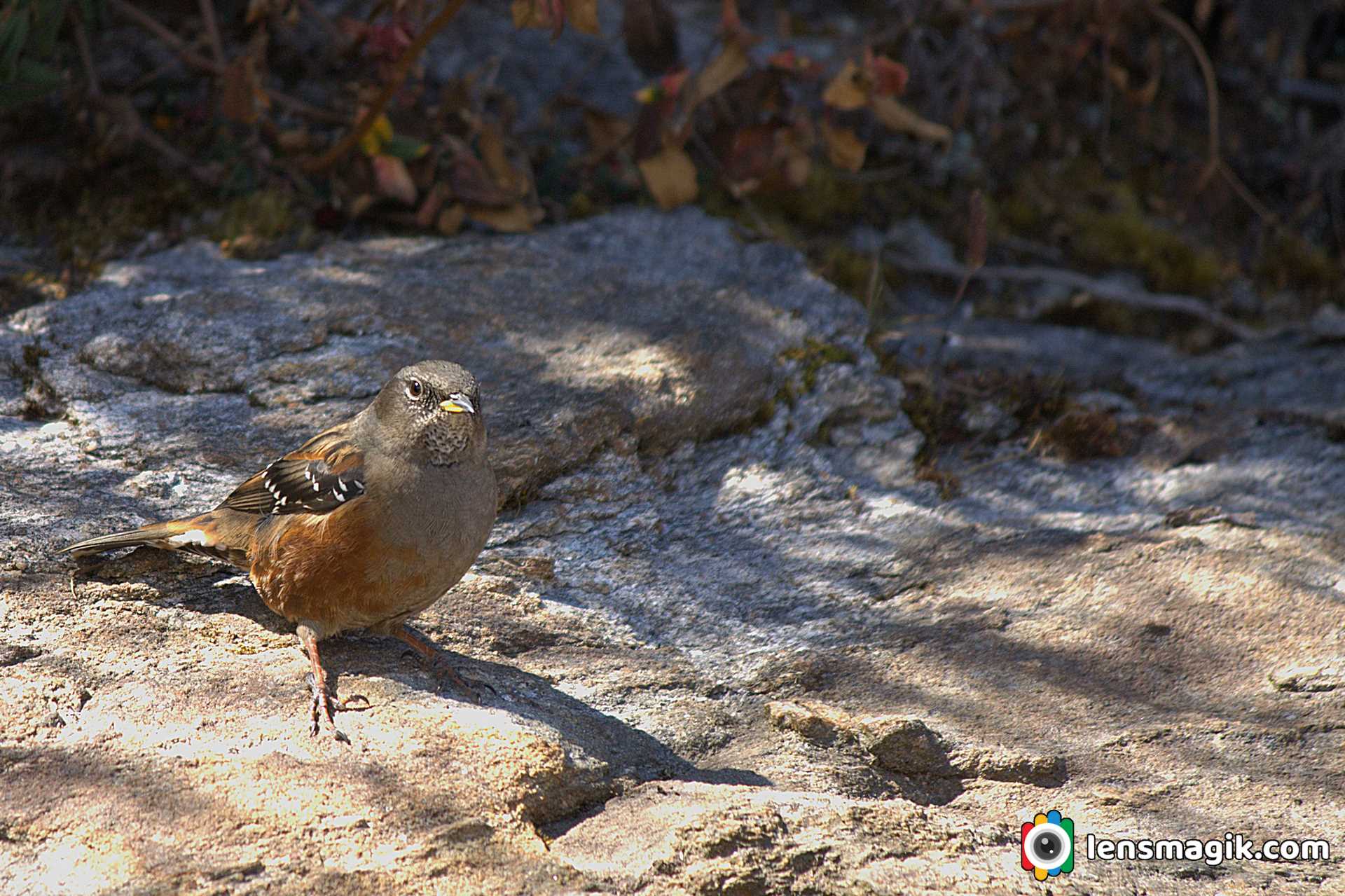
Alpine Accentor bird Binominal Name is Prunella Collaris . Total 9 subspices are recognised of Alpine Accentor bird.
Gear used : Canon 1000 D, Canon 55-250 mm Lens.
Road To Heaven is named to the road from Khavda to Dholavira in Kutch Gujarat. The road is so wonderful and scenery so it known as Road to Heaven . Khavda to Dholavira distance is around 58km but from Khavda there is a single line narrow road passes through small villages around 15-20 km approx. The main road starts after it and it is around 30-35 km approx. strait to Dholavira. Road is under constriction but almost 70-80% work done. The road heading to the city of Harappan Civilization Dholavira which is one of the largest site of Harappan Civilization and Indus valley Civilization.
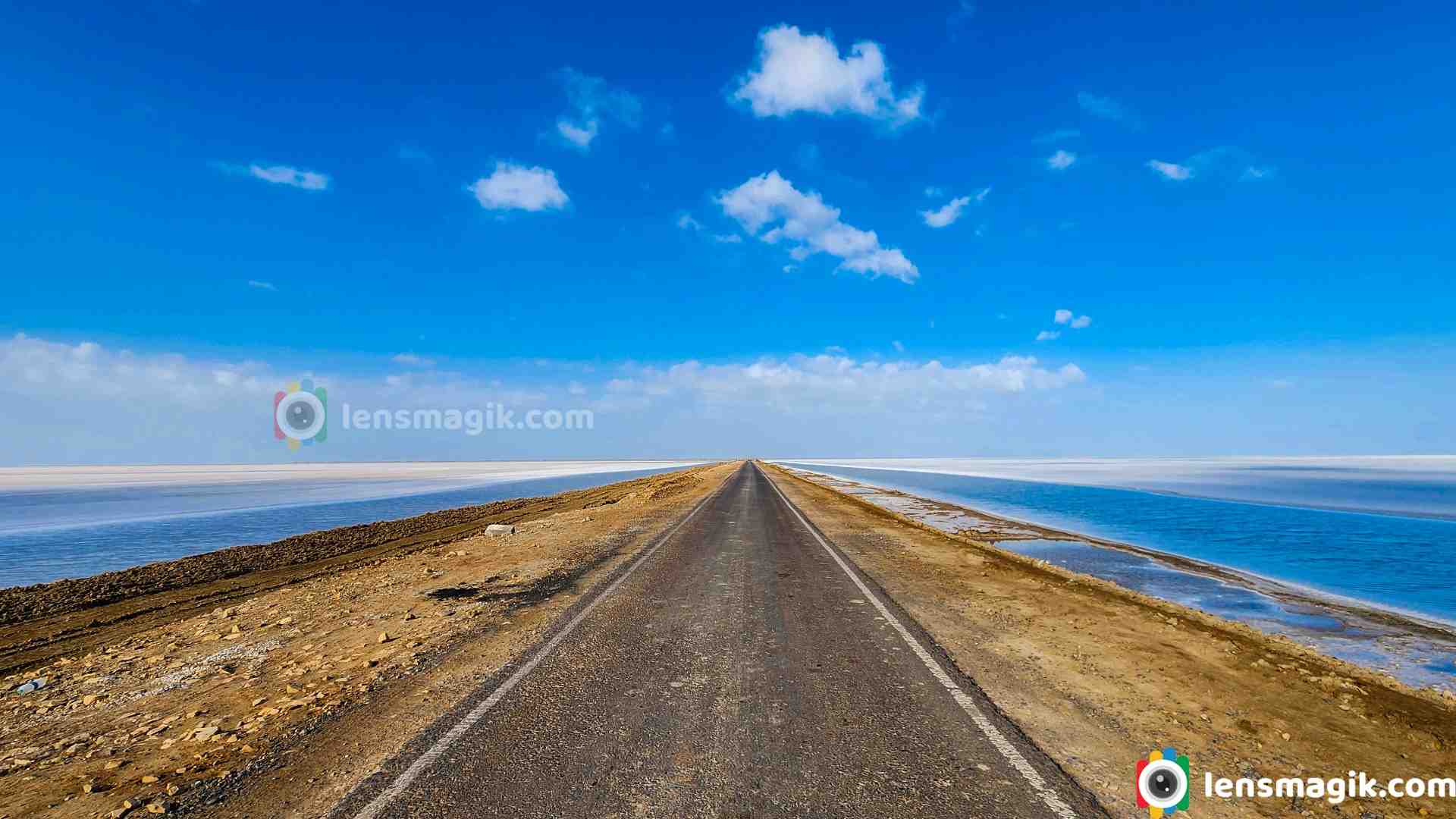
Kutch is a largest district of Gujarat and also of India. Main City or Headquarter of Kutch District is Bhuj. Kutch is famous for White Desert or White Rann. In Every winter season from December to February celebrate “ Rann Utsav “ to attract foreigners and also locals. Tent City made in white desert to stay and also cultural programs arranged in it. The main Rann Utsav held in Dhordo of Kutch.
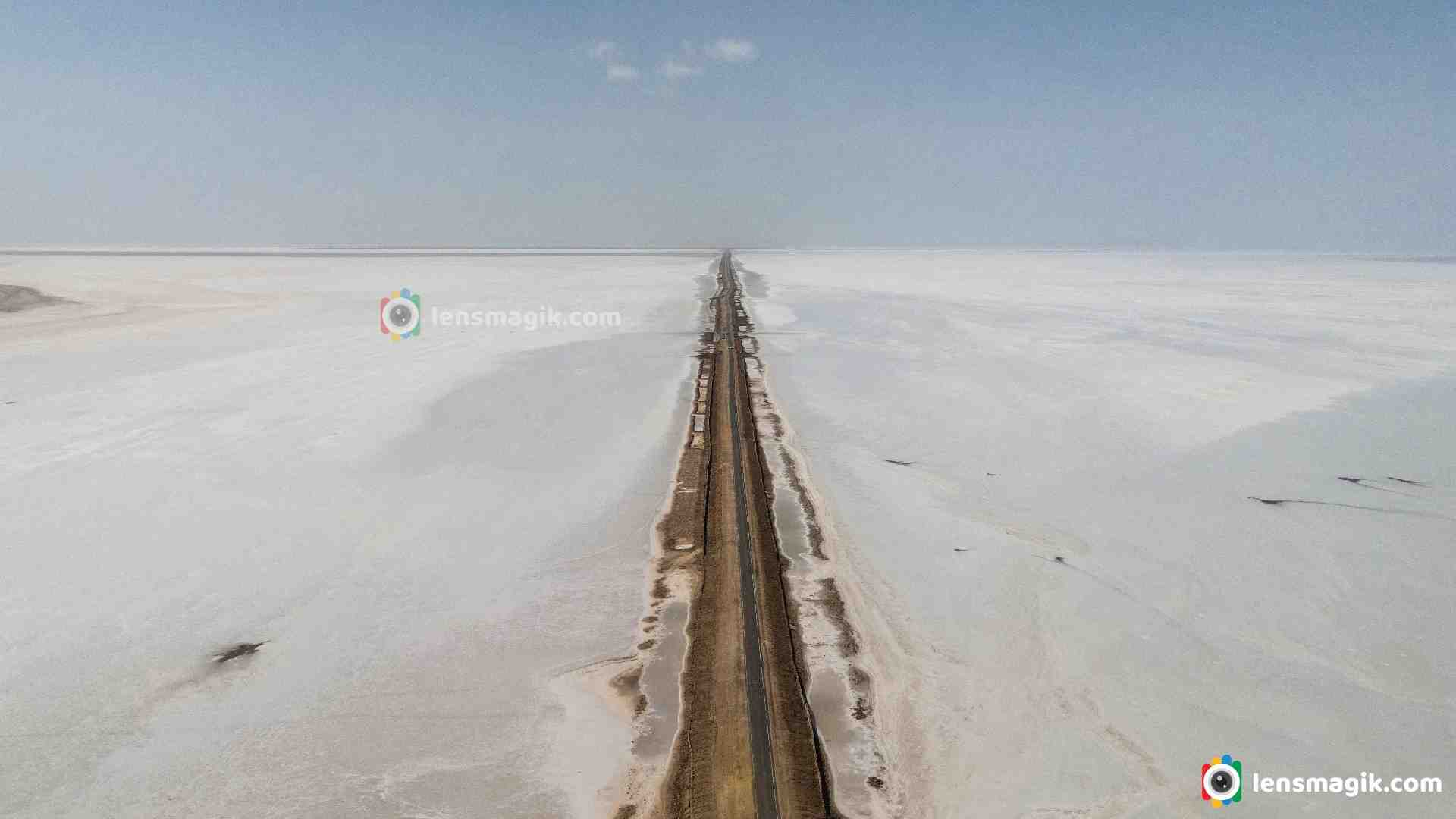
After visit White desert people also visit Dholavira which is nearest destination from Dhordo and also Kalo Dungar in between. From Dhordo you will have to go Khavda first and then from Khavda to Dholavira which is connected through “ Road To Heaven “. Dholavira is located at Khadir Bet. Khadir bet is separated because after monsoon the water filled outer side of bet. So the Road To Heaven is the way to connect Khadir bet to main city Bhuj.
About Road To Heaven Dholavira / Road to Heaven in Kutch :
- · It connected from Khavda to Dholavira.
- · Road to heaven distance around 30-35 km.
- · After monsoon the rain water on the both side of the road. You can see beautiful Greater Flamingo birds in between. Water level is low but muddy.
- · After winter in January –February the water on both side of the road is evaporated and turn into salt. Not all water but some areas during the road.
- · Water on the both side of the road or Salt/ white layer on both side of the road make the beauty of the road and that’s why it name as “ Road To Heaven “
- · When you are on the road there is hardly some traffic you face the open road with both side water or salt at morning or evening make the scenery like a Heaven.

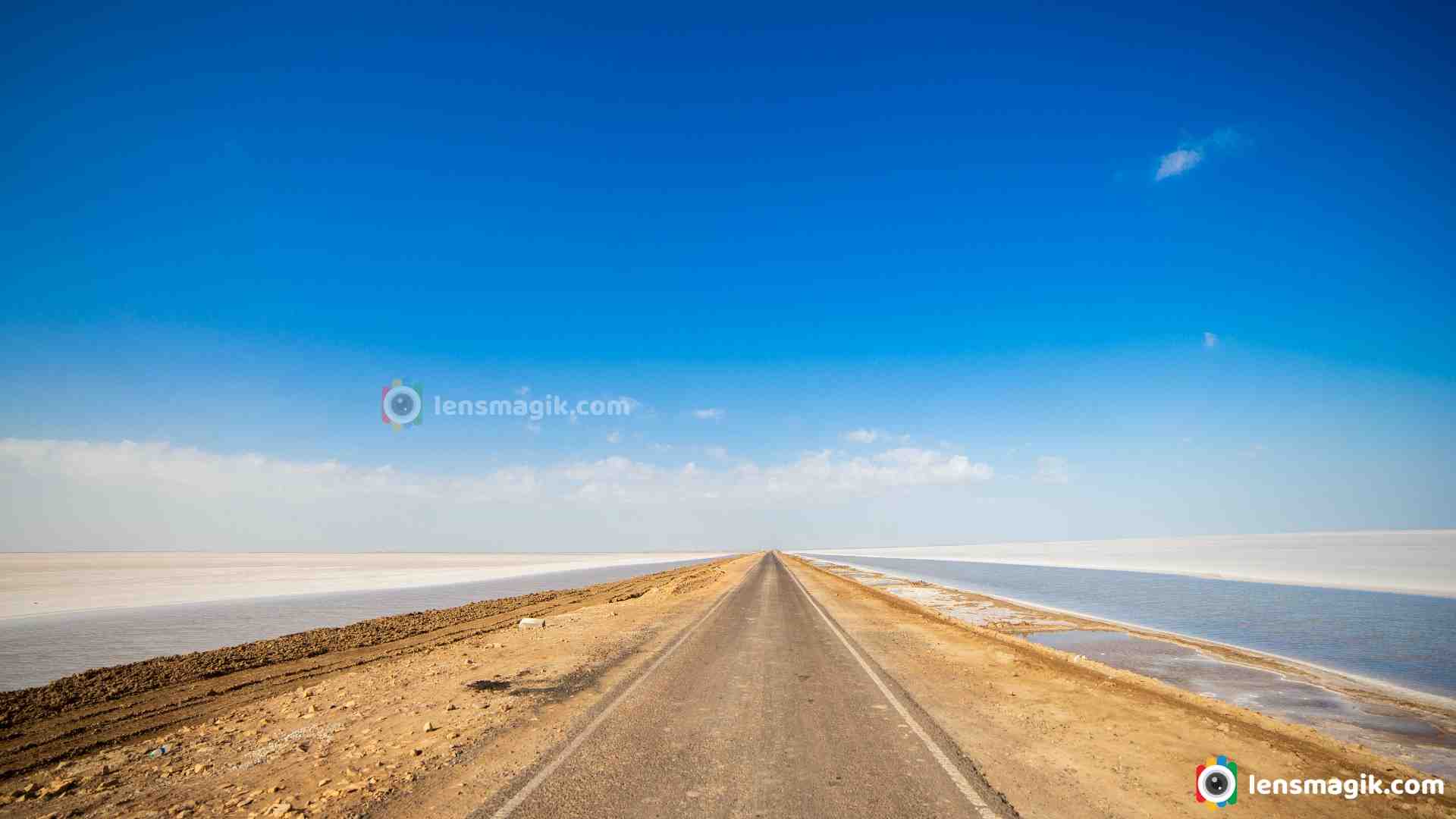
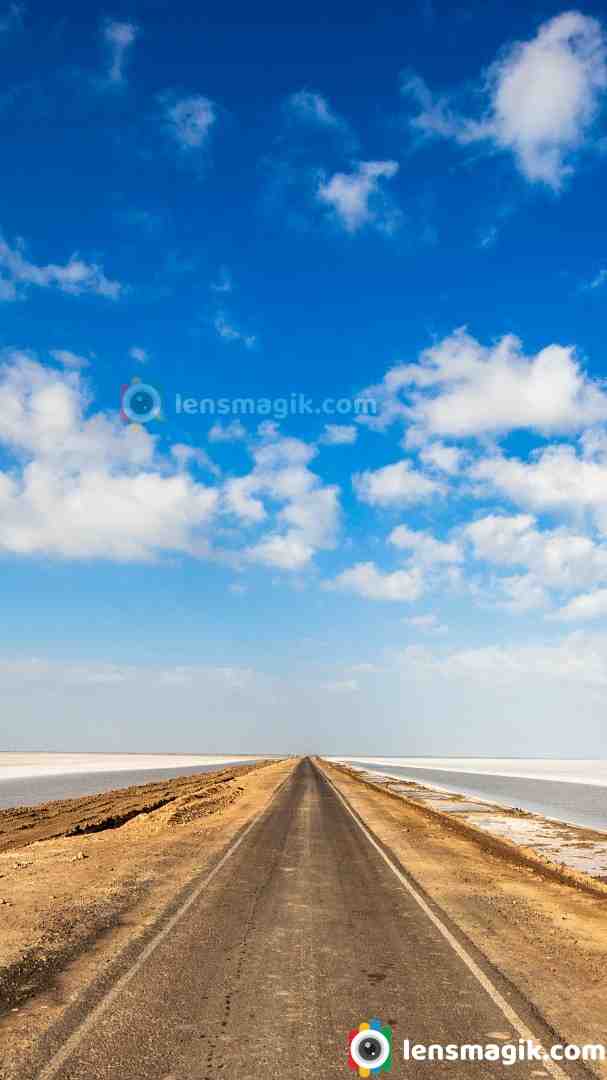
I must suggest to visit Road To Heaven in Kutch while you visit Kutch. Also Visit Dholavira which is one of the largest Harappan Civilization site.
Places to visit near Road To Heaven :
Dholavira, Kalo Dungar, Dhordo, White Desert
Places to Visit near Bhuj : White Desert , Kadiya dhro, Chhatardi, Mandvi beach, Vijay vilas palace, Bhujyo Dungar, Smriti Van, Vande matram memorial
Camera Used : Canon 80D, Canon 6D, DJI Mavic Air2
It is the largest species of Flamingo bird family and also a most widespread species of flamingo family.It is found in India ,south east , middle east and Africa. It is migratory bird. They also breed in India. In Gujarat they breed in Rann Of Kutch , Little Rann of Kutch also found in Thol Bird Sanctuary. I often visit Thol sanctuary so got good shots of them. Best time for shoot them is may-Jun at Thol bird sanctuary bcz of water level is too low . It is been recorded that some flamingo birds are resident in Gujarat at many places like LRK, Khijadia sanctuary, Nalsarovar and Thol Sanctuary. They also breed here and stay for all seasons. So you can find greater flamingo birds in all seasons in Gujarat at many places.
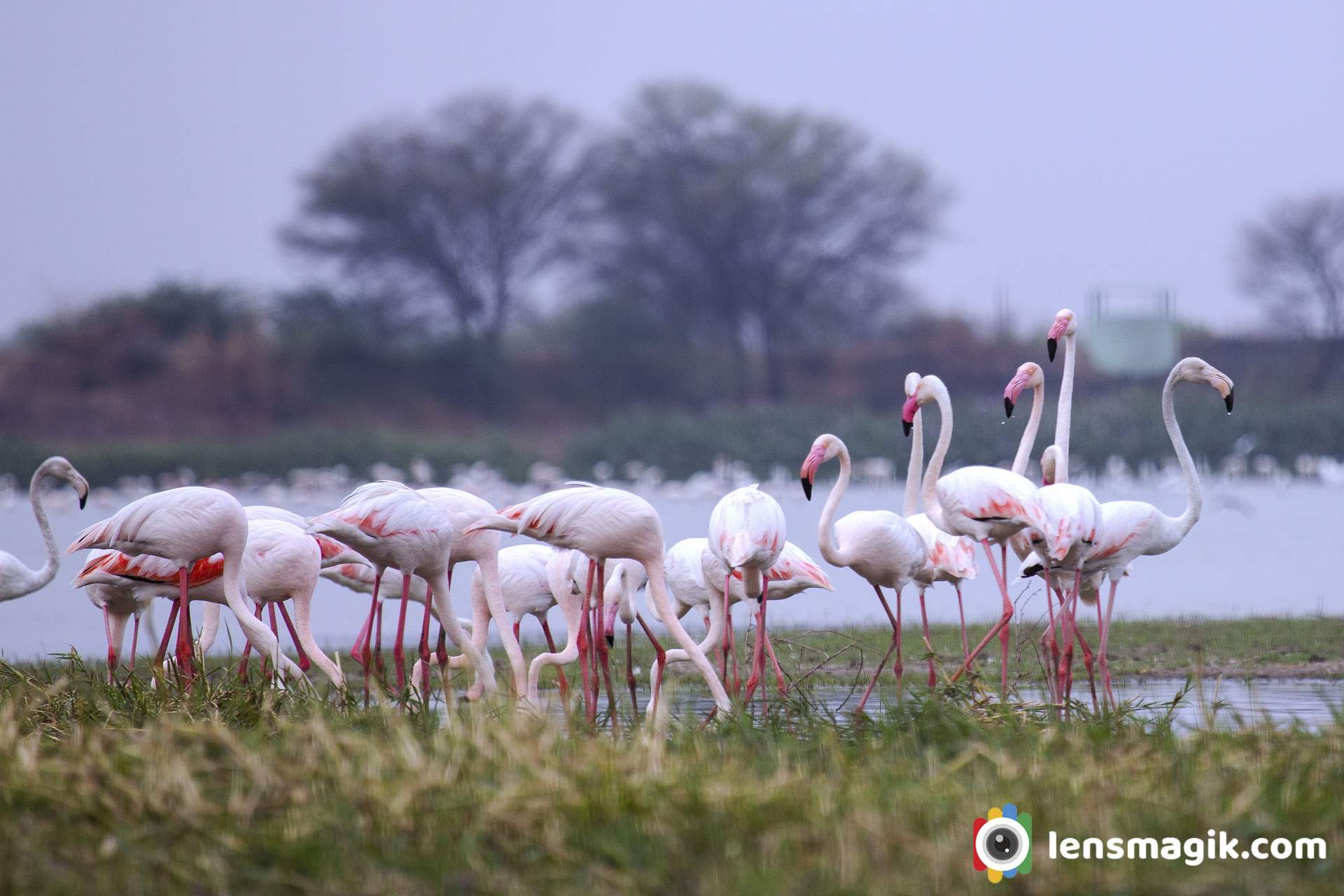
Flamingo bird facts and description :
- Greater flamingo bird is the largest living spices of flamingo.
- Greater flamingo has no subspices.
- Flamingo color most of pinkish white in plumage. Wings are red and feathers are black in end.
- Greater Flamingo bird call is like honking.
- The average lifespan of flamingo bird is 30-40 years.
- Main Difference between Greater flamingo and lesser flamingo is height . Lesser flamingo is shorter than greater flamingo. Also Greater flamingo has pale pink bill and black tip. In other case lesser flamingo has dark crimson bill. Lesser flamingo is also more red in color than greater flamingos.
Greater Flamingo birds In Thol Lake : Thol sanctuary is often i visit. Flamingo birds are stay here all seasons. I got good numbers of Greater flamingo and lesser flamingo bird images in a group when i visit Thol. This is my best time with flamingos. Also i got some beautiful pictures of flamingo birds with group and also in duo with some masti. Flamingos looks very good in frame bcz of their color. Thol lake is good place for birders because more than 150 birds spices found here. Also some mammals like Blue bull and black buck also found here. Lots of water birds and tree birds found here. Also sanctuary is not so big so you can find all birds in around 6 sqkm area. Best time to visit thol lake is November to March. All migratory birds are visit in winter so that is best time. Early morning is best for birders.
Timing And Fees of Thol Sanctuary :
Thol Sanctuary open at 6 AM in morning and close at around 5 PM
Fees of Thol Sanctuary is 50 INR per person and camera fees are 200 INR. Car fees are 500 INR.
Weekend fees may change that actually i don't know about it.
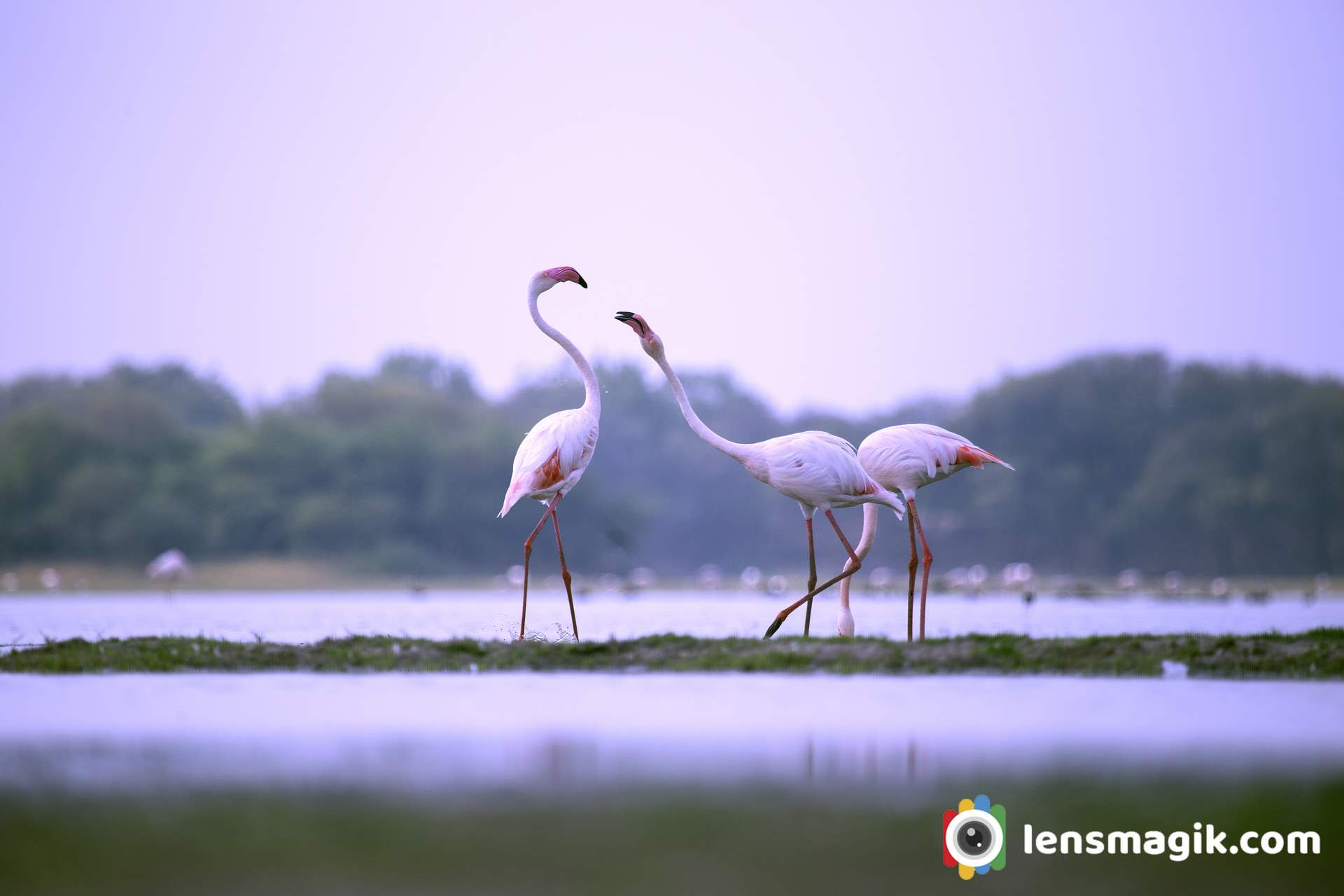
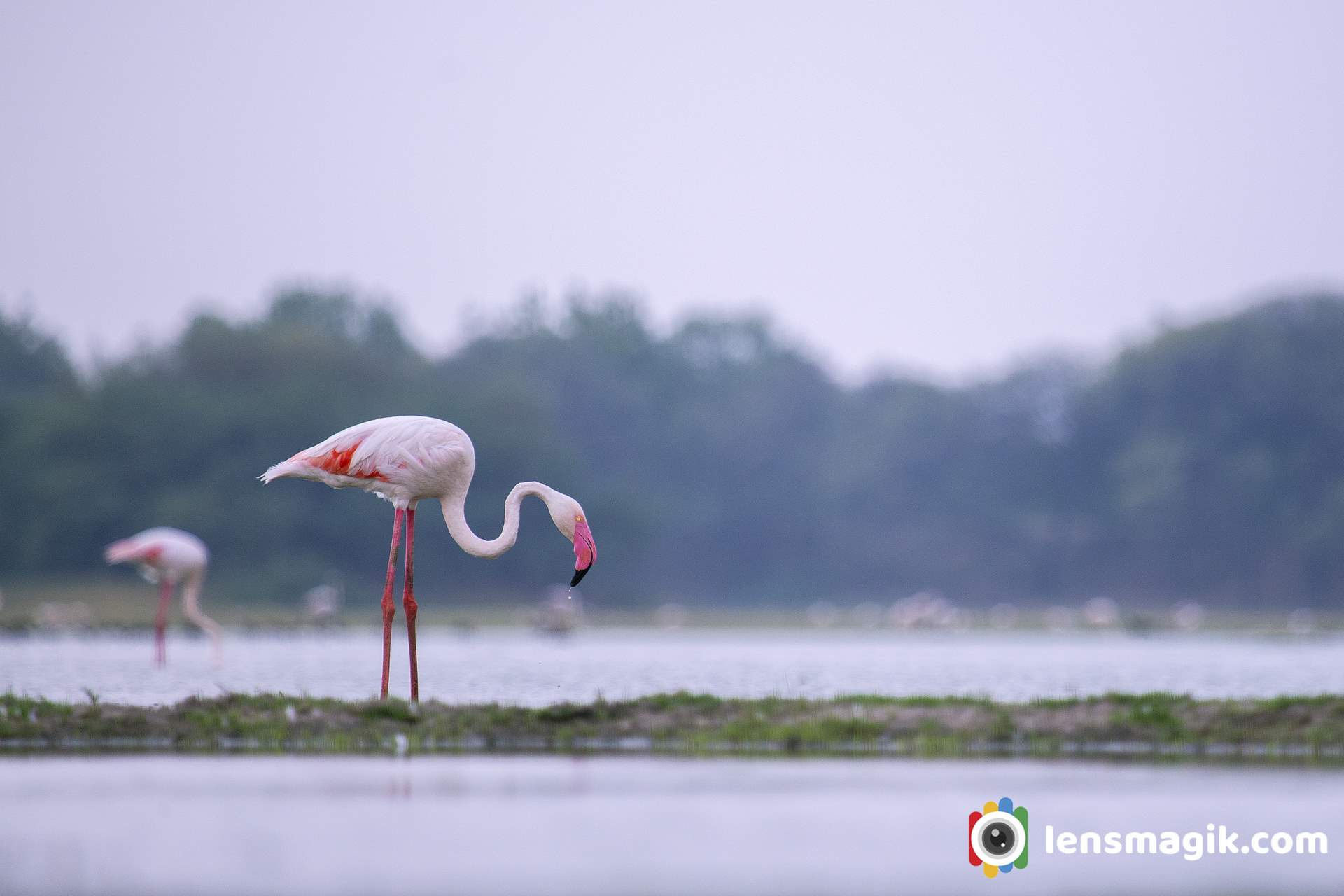
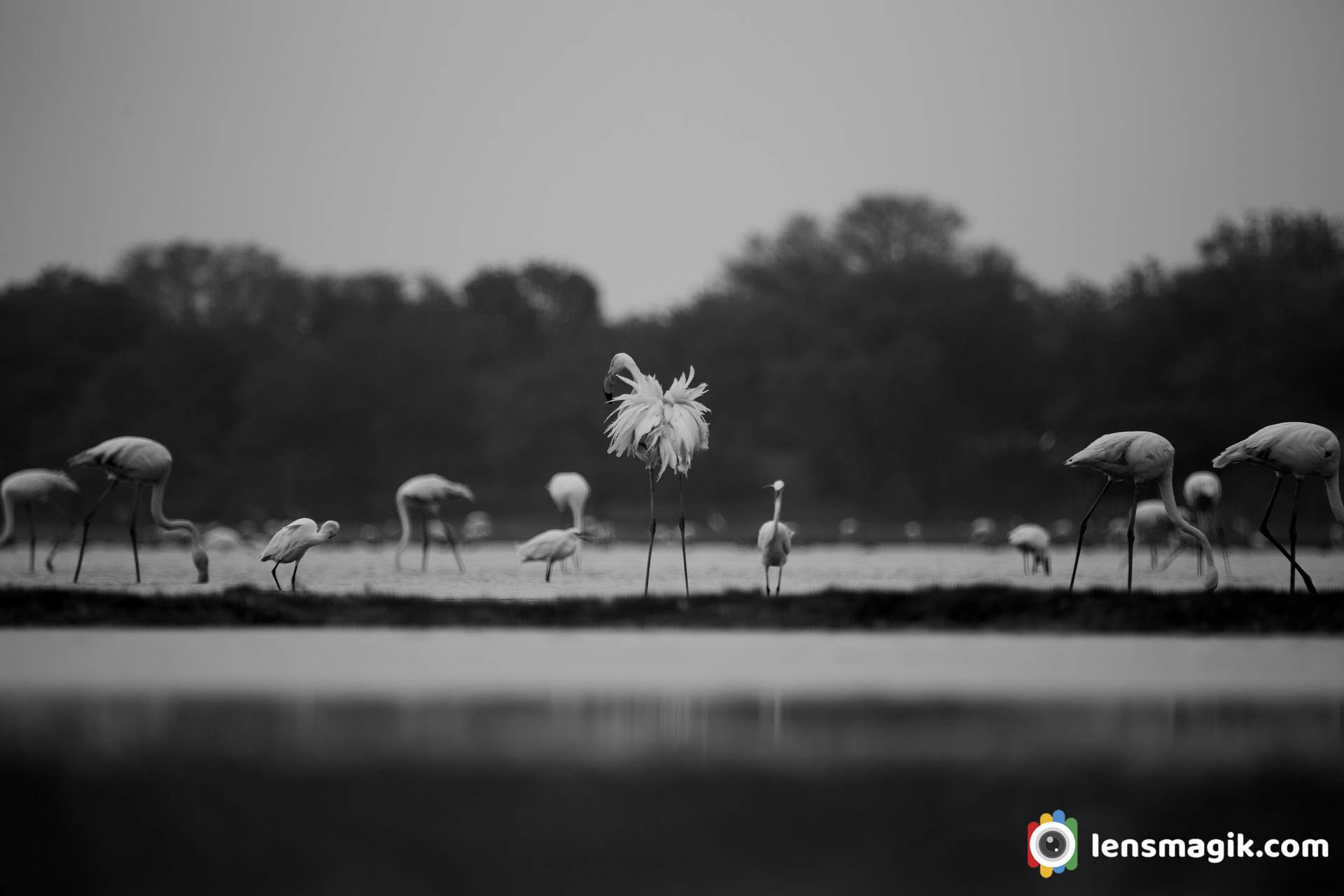
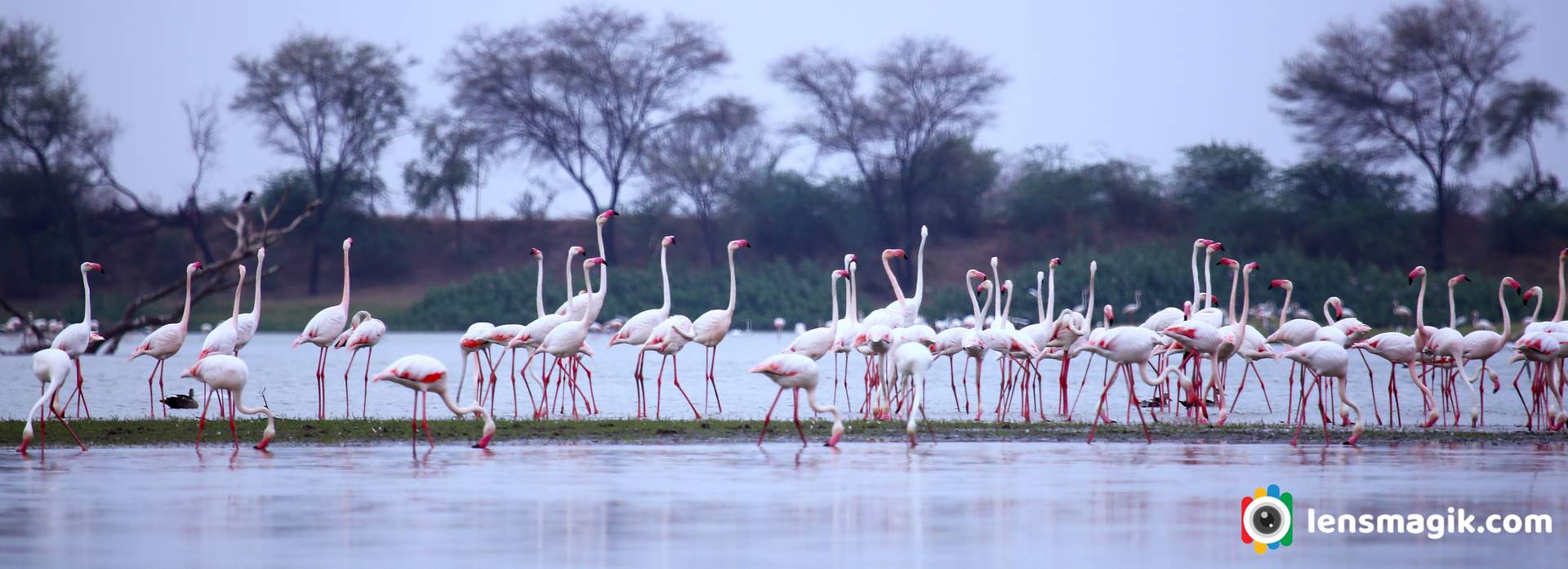
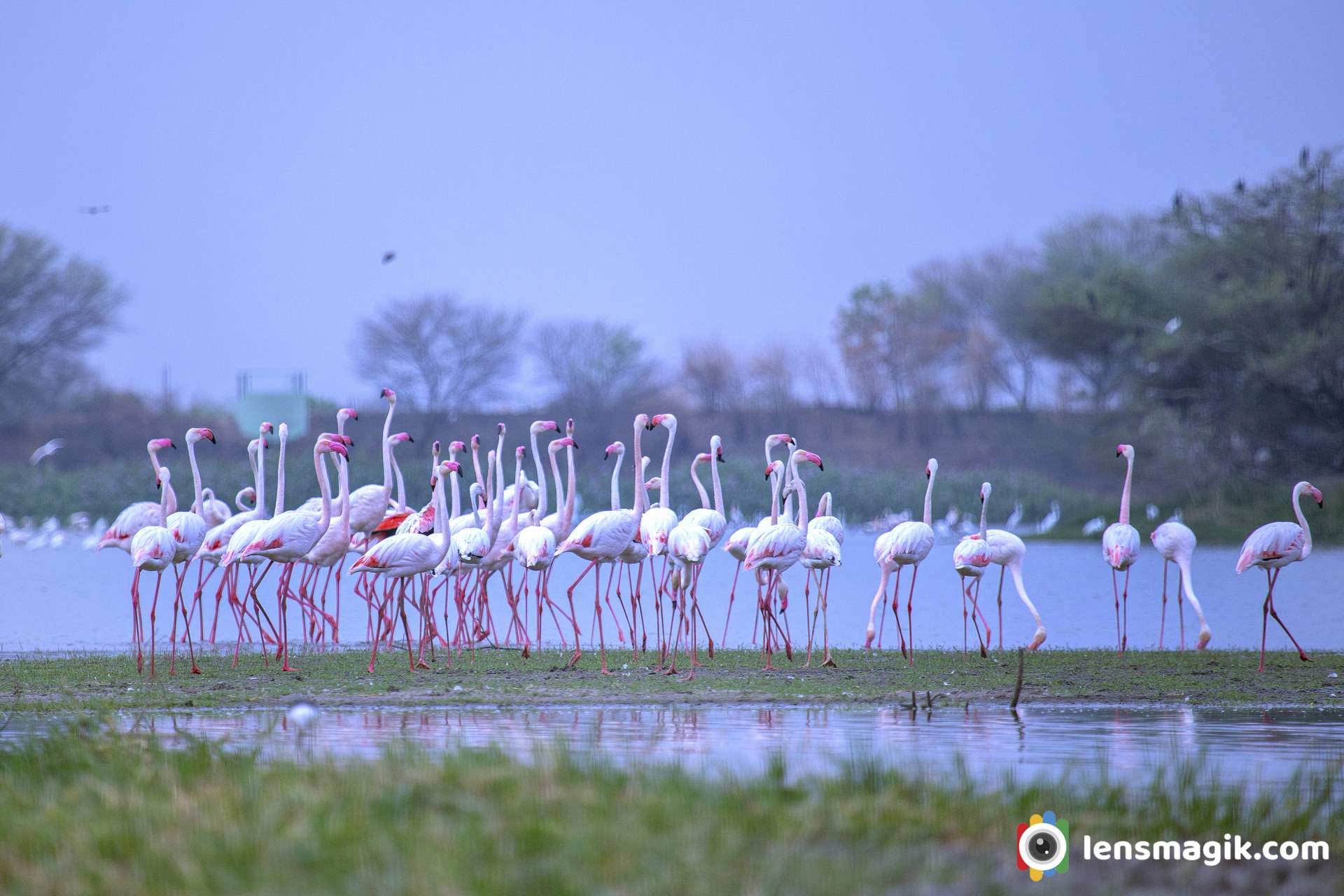
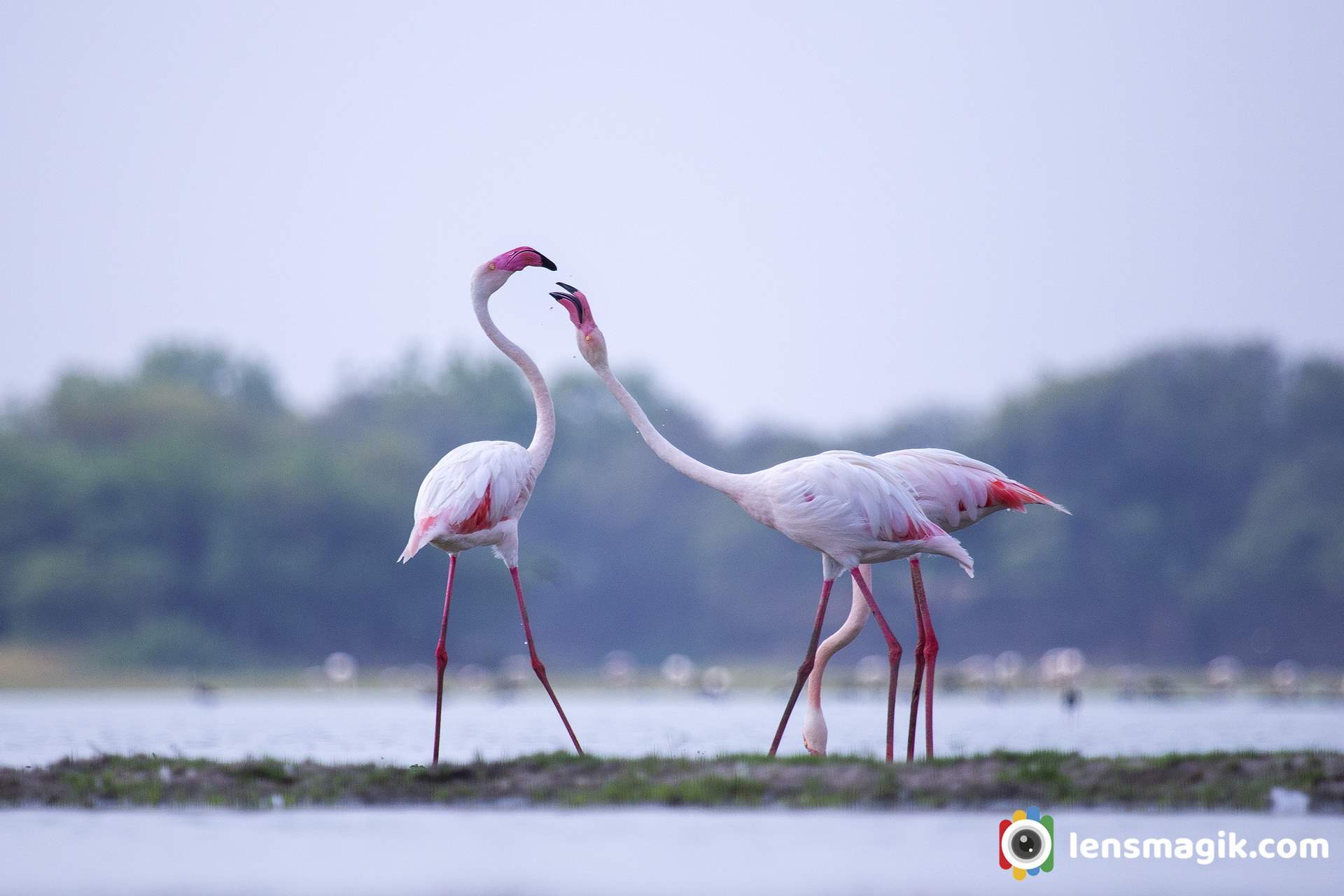
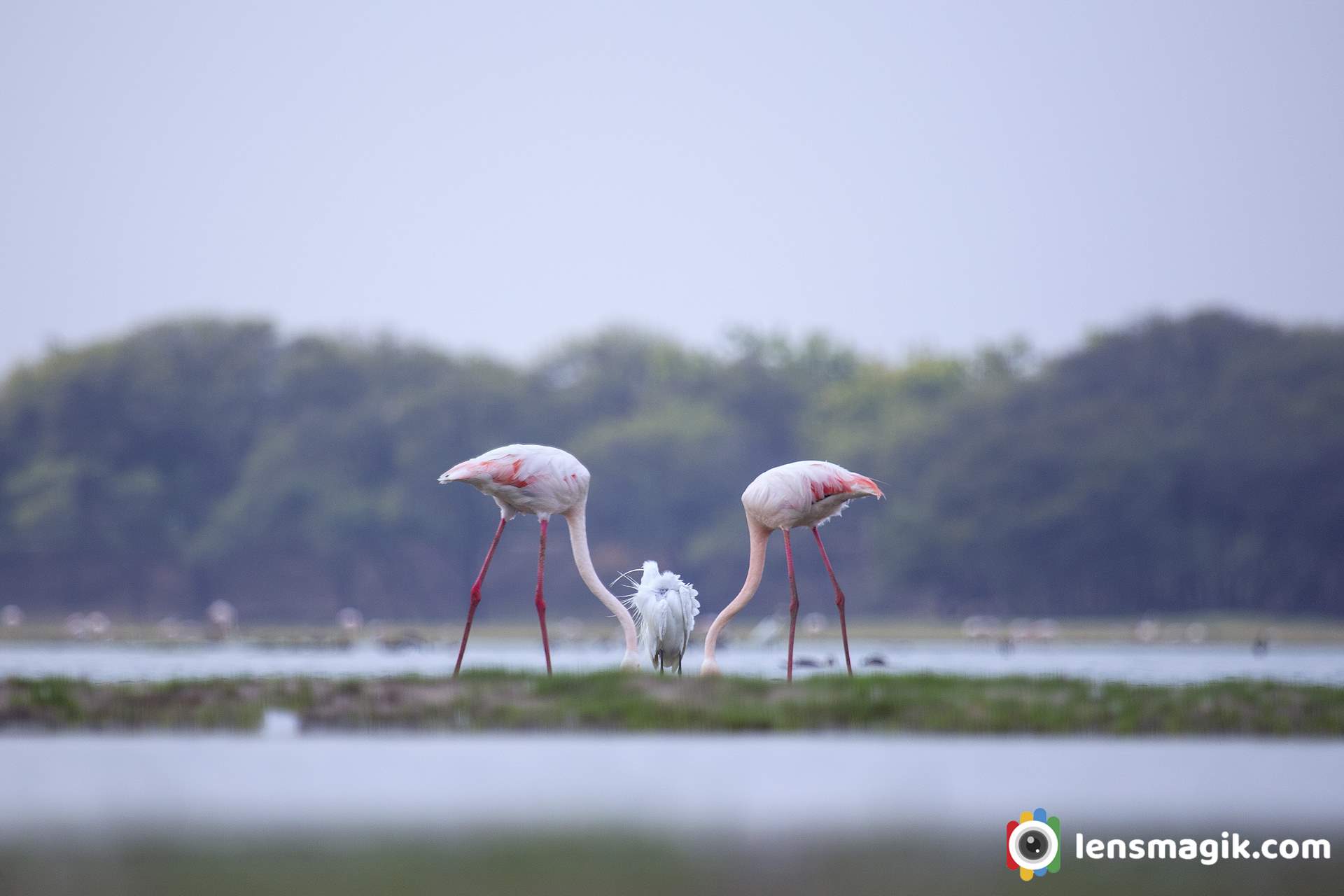
Two flamingos with little egret in between of them with down head all. The images of flamingo bird making a good frame. Because of its color flamingo birds images are very attractive and also their grouping make a perfect frame of flamingo bird picture.
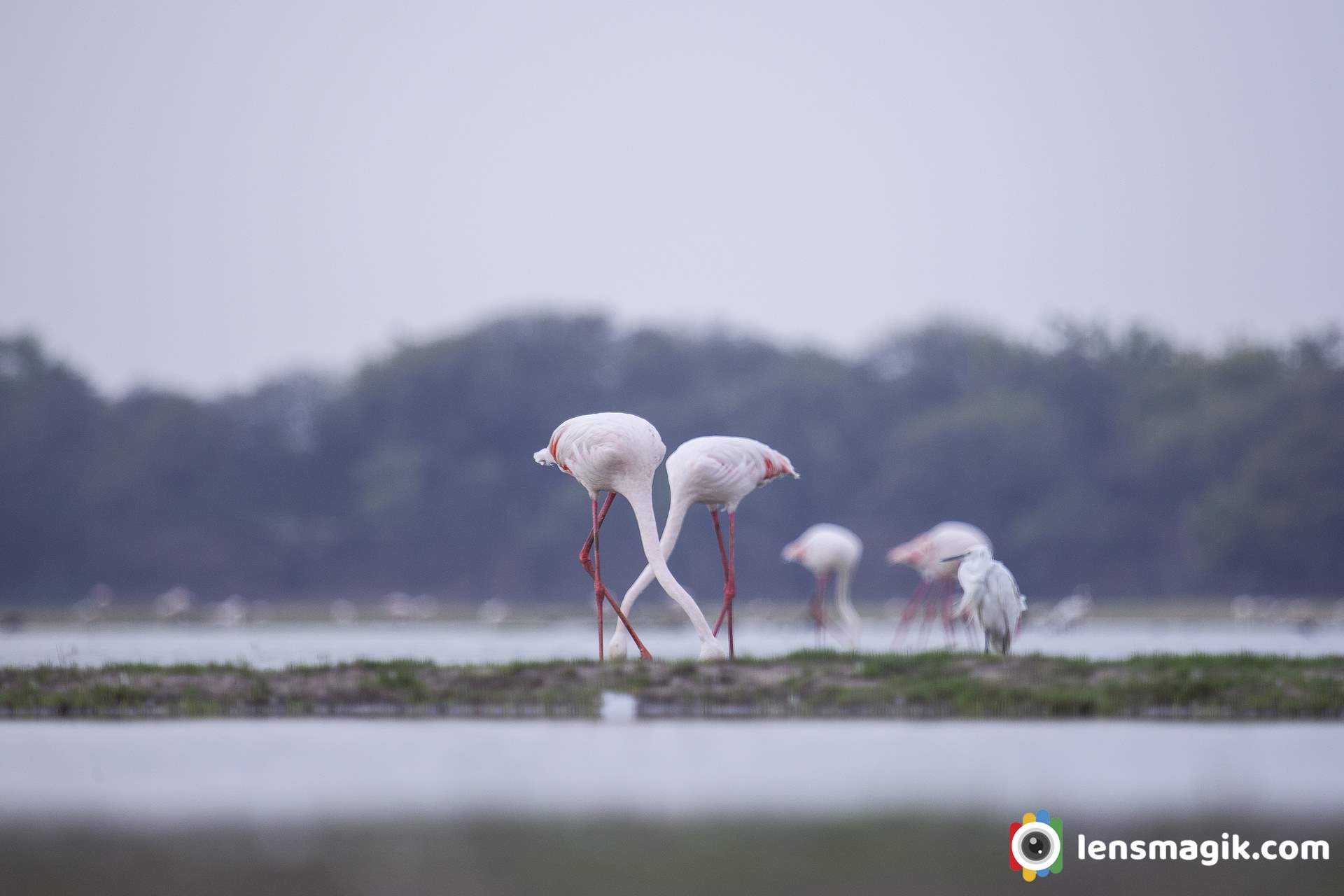
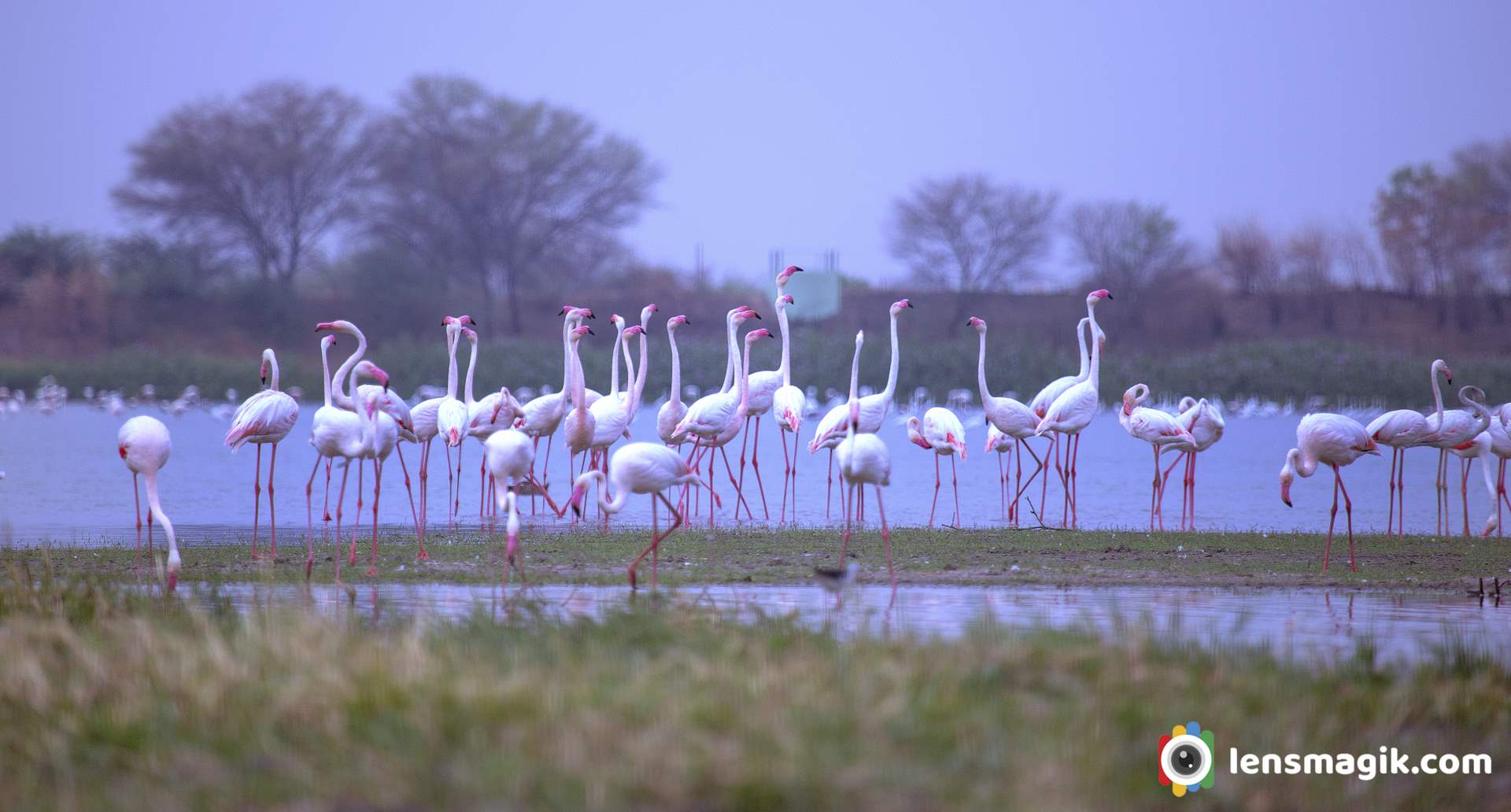
A morning pared time for flamingo birds. A beautiful Greater flamingo birds are in a raw make image nice and show their unity.
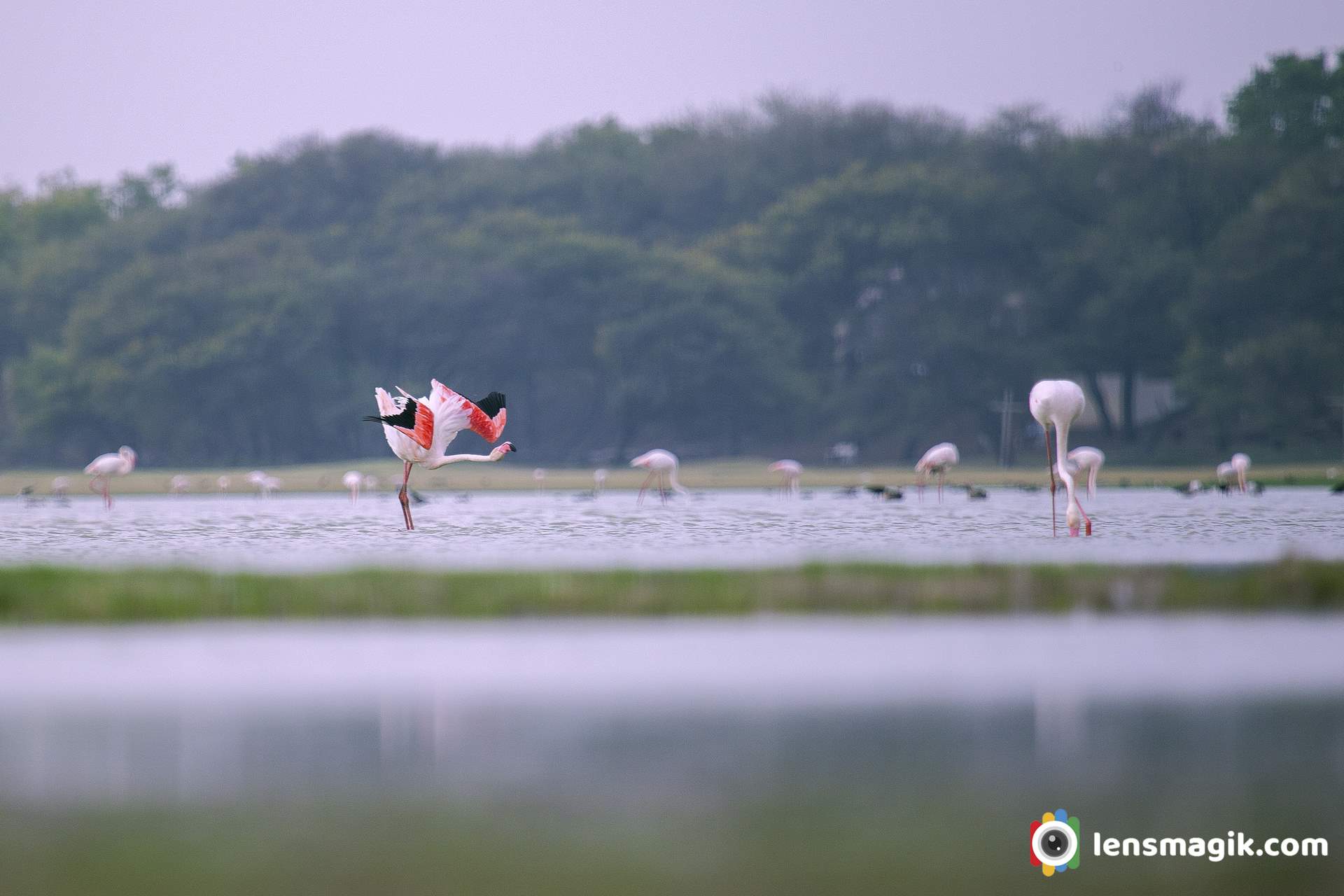
Perfact wingspan of Flamingo bird looks great. Pink Wings make image more attractive.
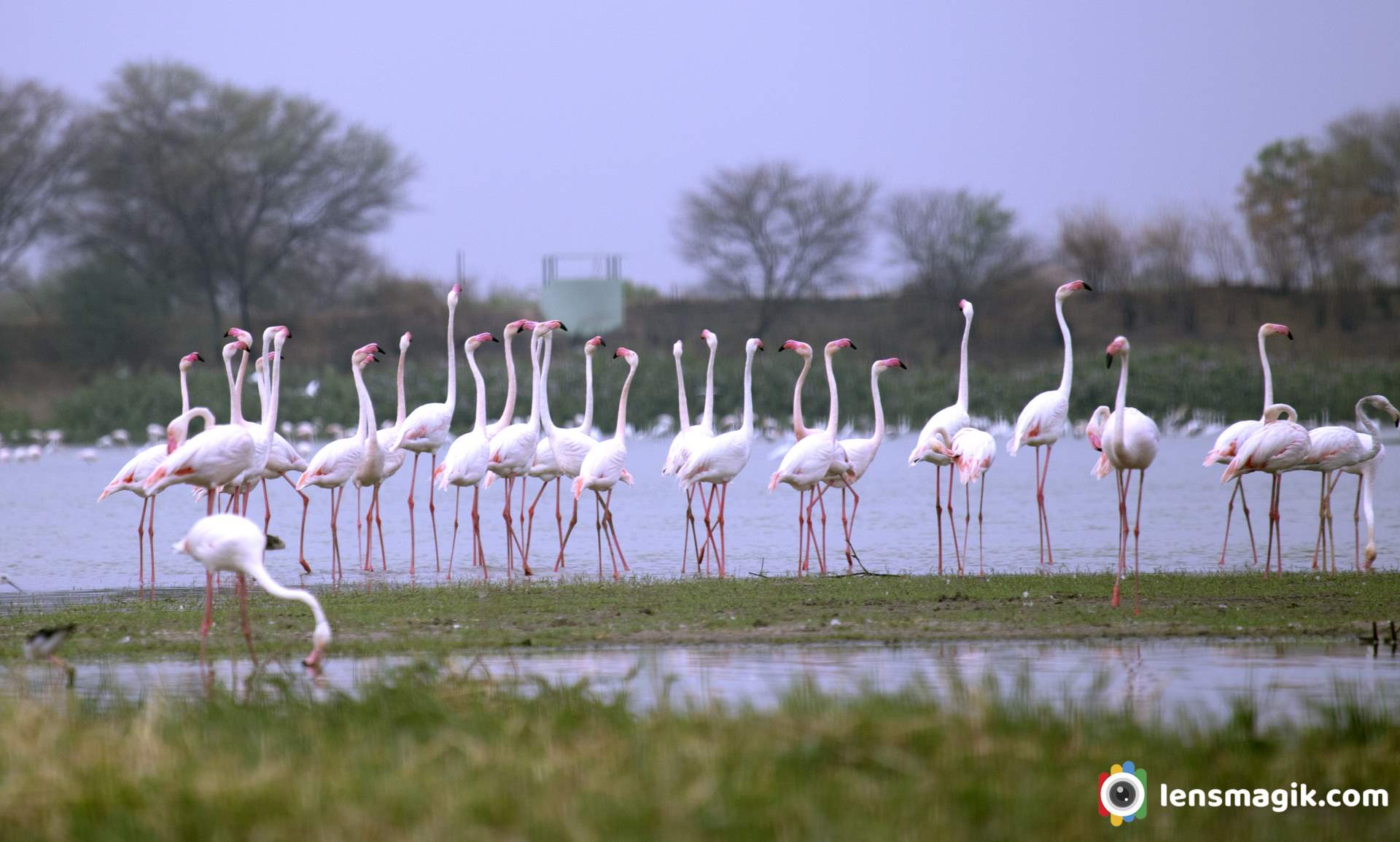
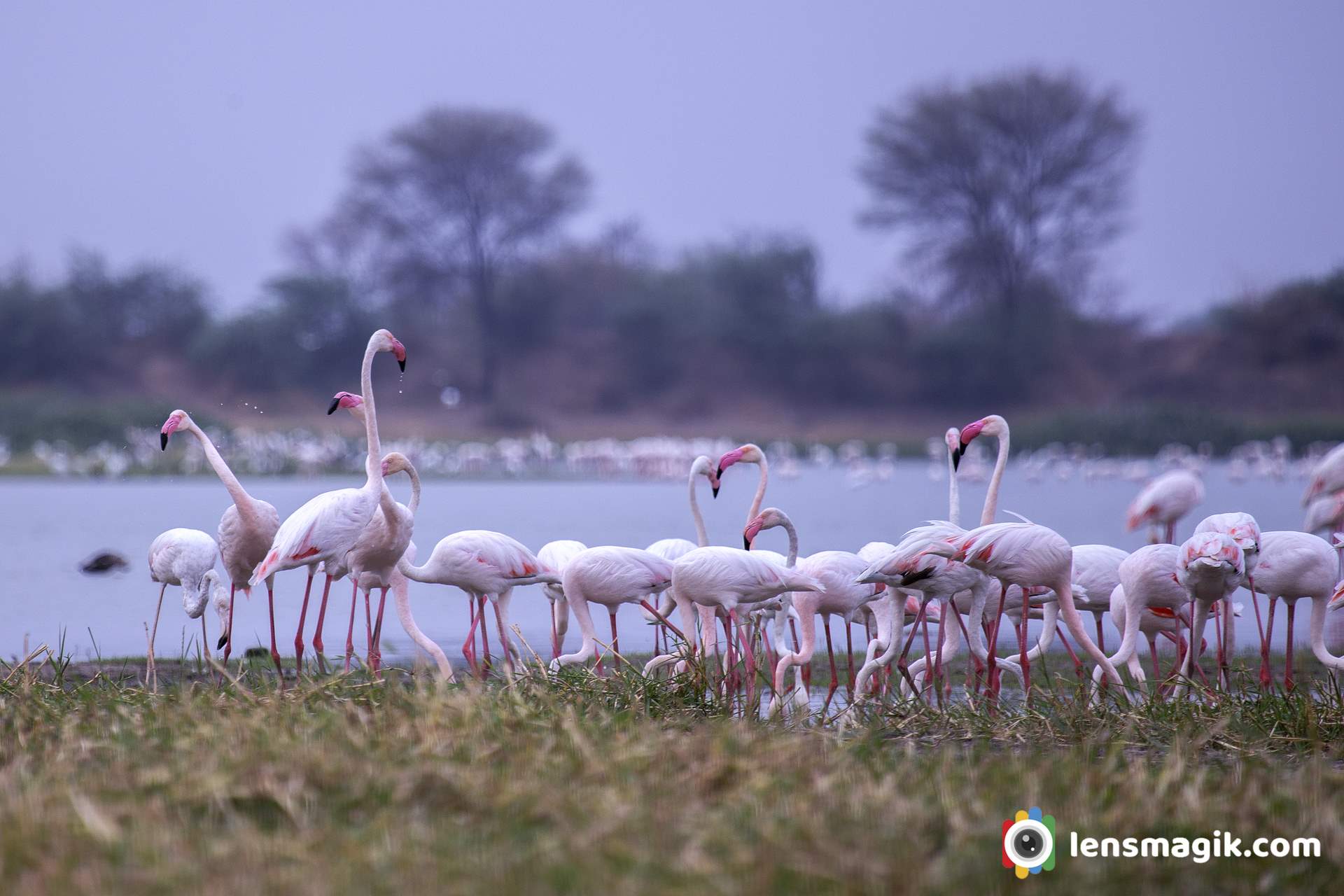
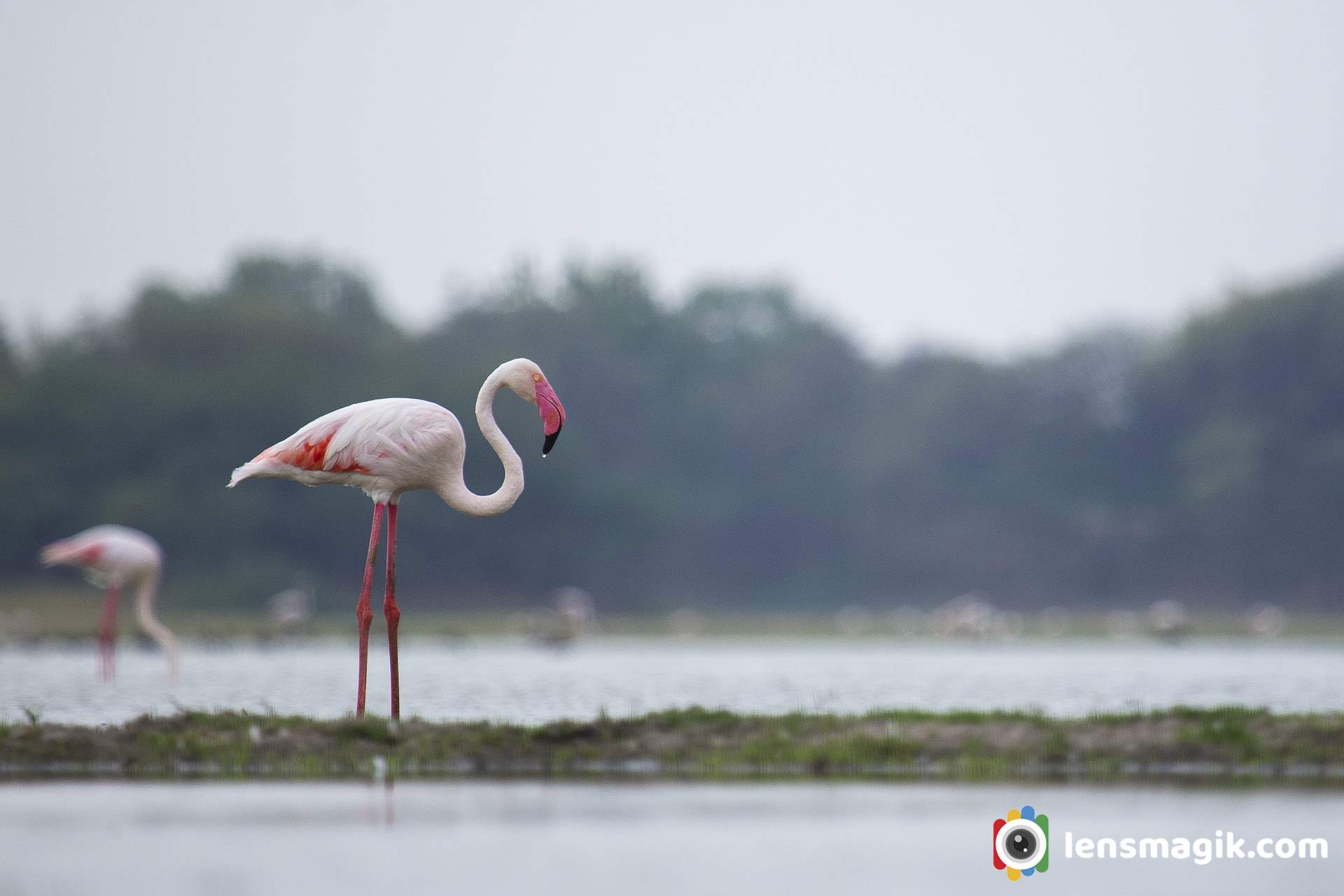
Solo Greater flamingo bird
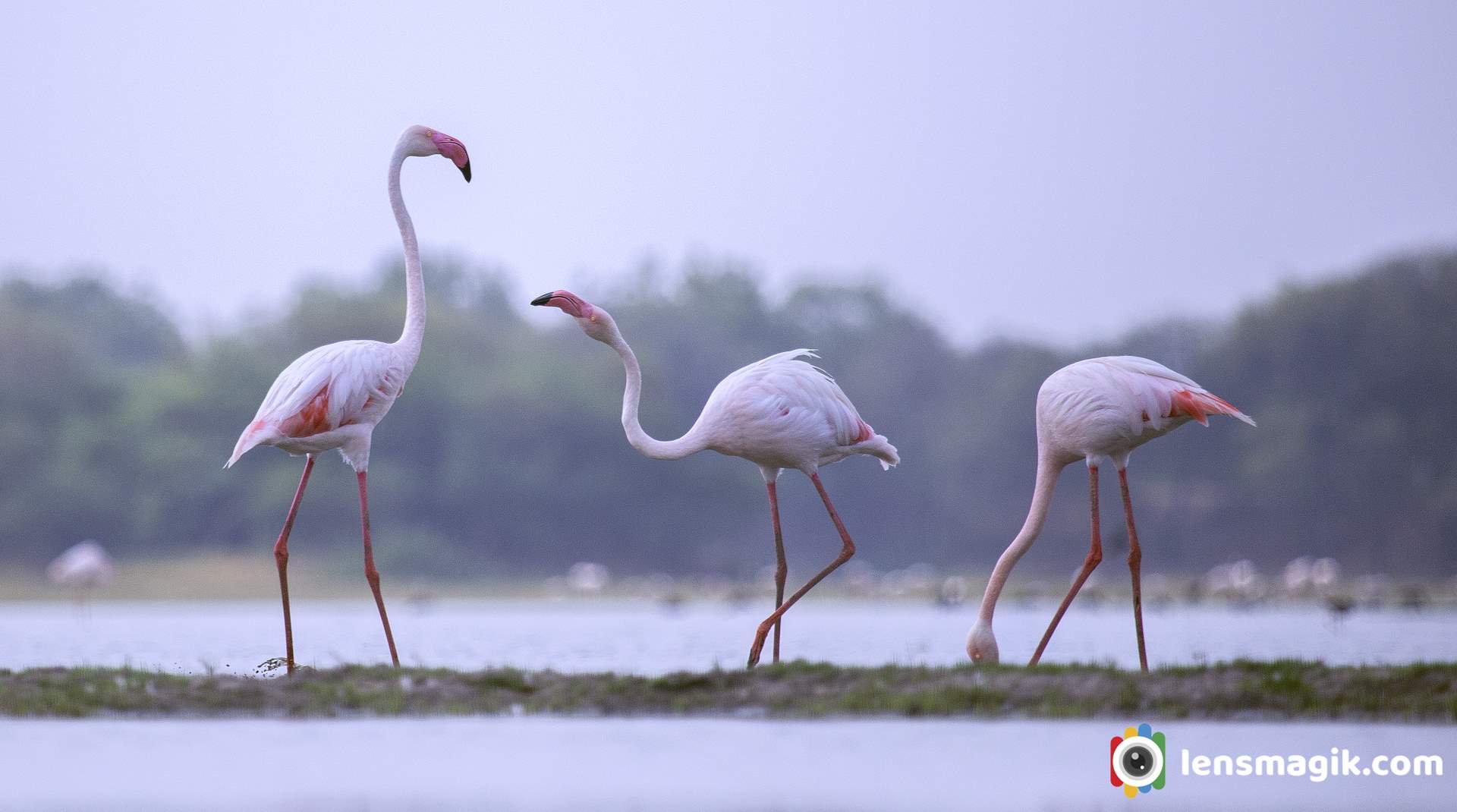
Some masti time for two flamingo birds .
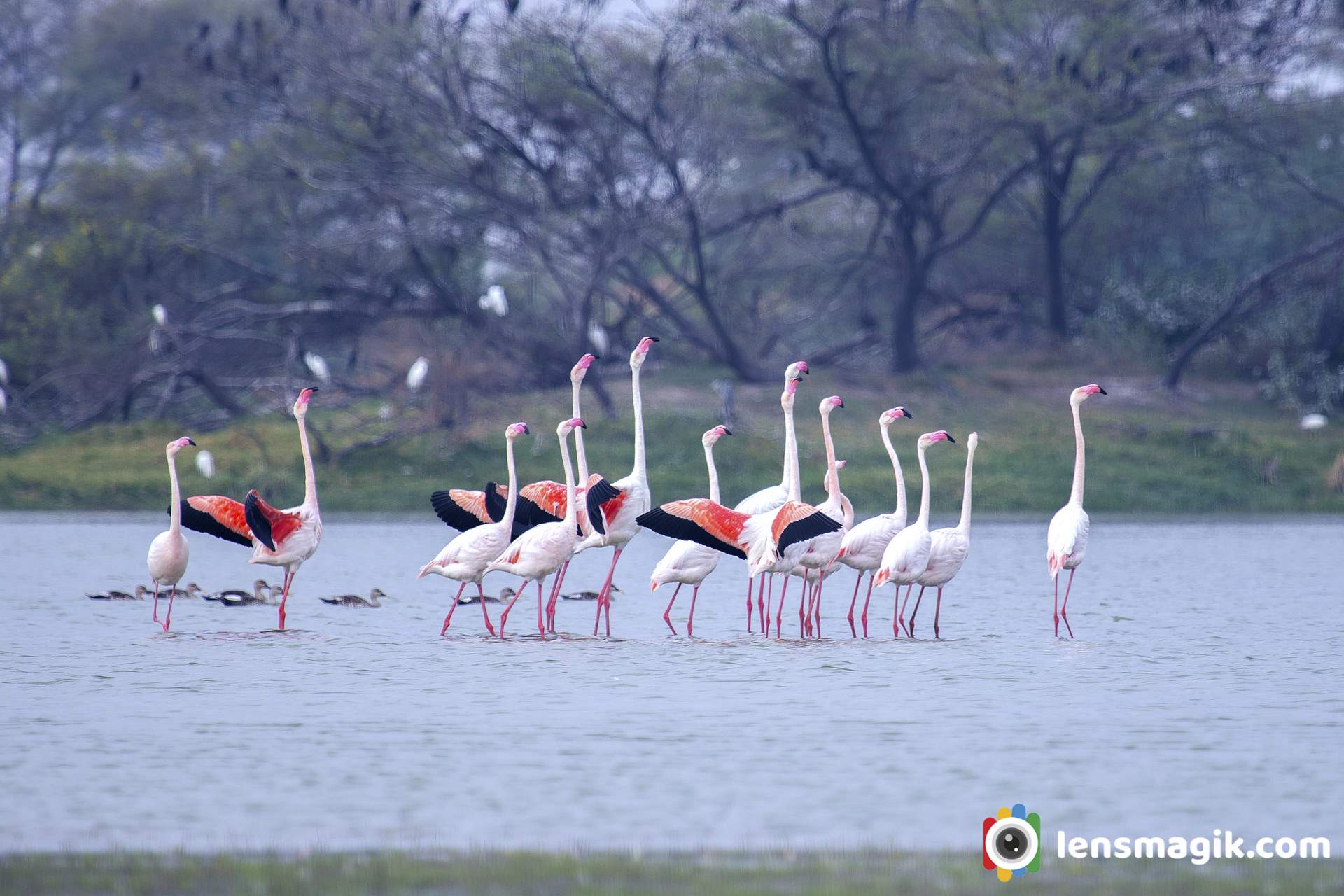
Above image shows the discipline of Flamingo Bird and looks like a morning pared they are doing .
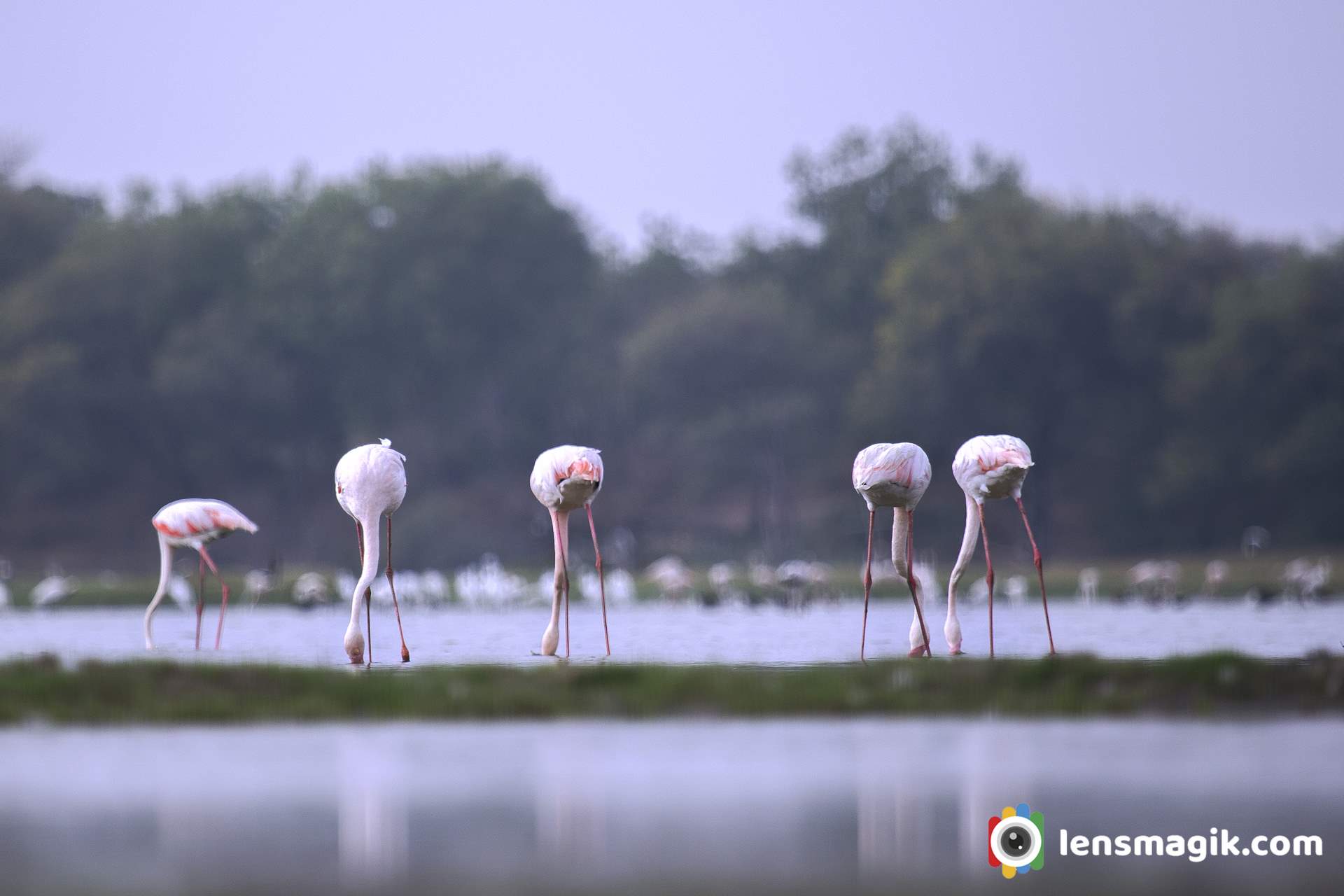
https://youtu.be/9dVBrR9NSOo
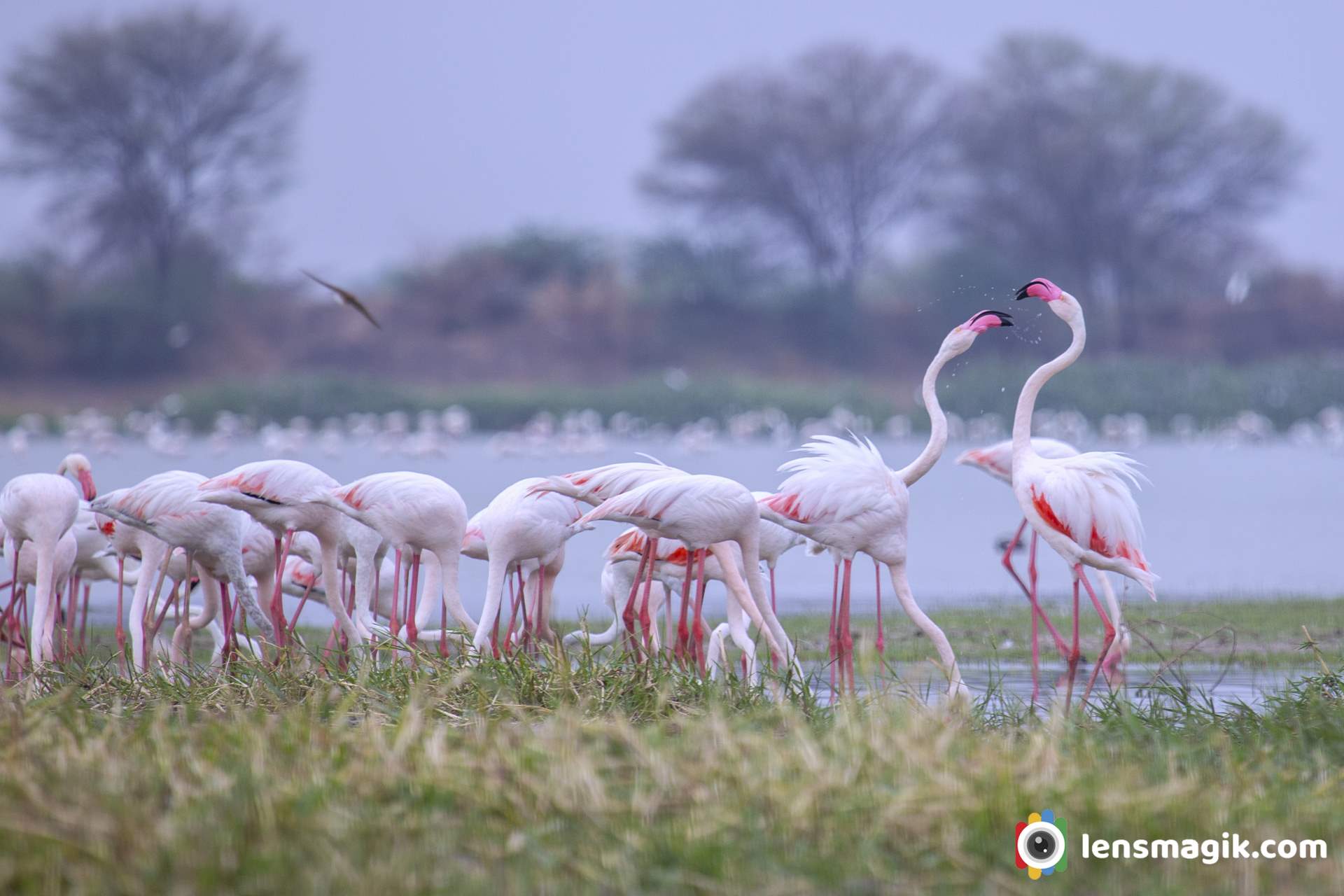
A group of Flamingo Birds at Thol Lake make your frame awesome.
Location : Thol Lake, Gujarat
Thol lake is just 25 km approx. from Ahmedabad. You can visit one day for Thol lake is enough. Also you can find another migratory birds like pelicans , bar headed goose, river tern and many more resident spices.
Ahmedabad to Thol lake distance about 25km
Thol bird sanctuary is located in Kadi Taluka in Mehsana District near sanand Gujarat. It is an artificial lake located near village Thol. In 1912 thol lake was built and it was declared as a Sanctuary in 1988. The main use of lake is use of water for irrigation. The Thol Bird Sanctuary or a Thol lake wildlife Sanctuary India is a habitat of more than 150 spices of birds. Also it is famous for migratory birds Flamingos and Sarus Crane which breeds here.
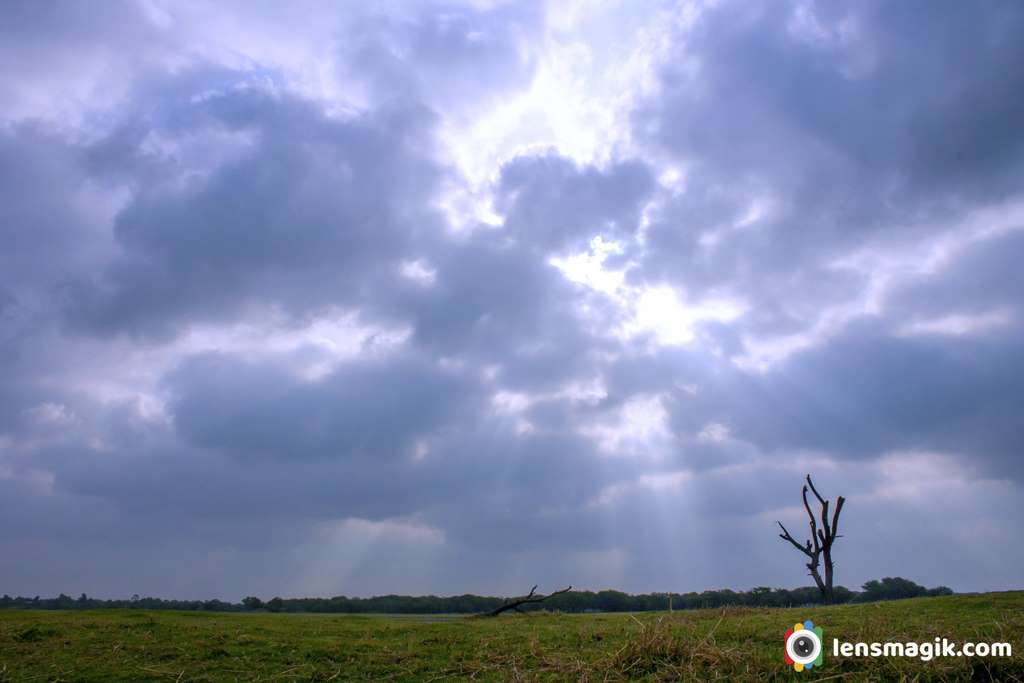
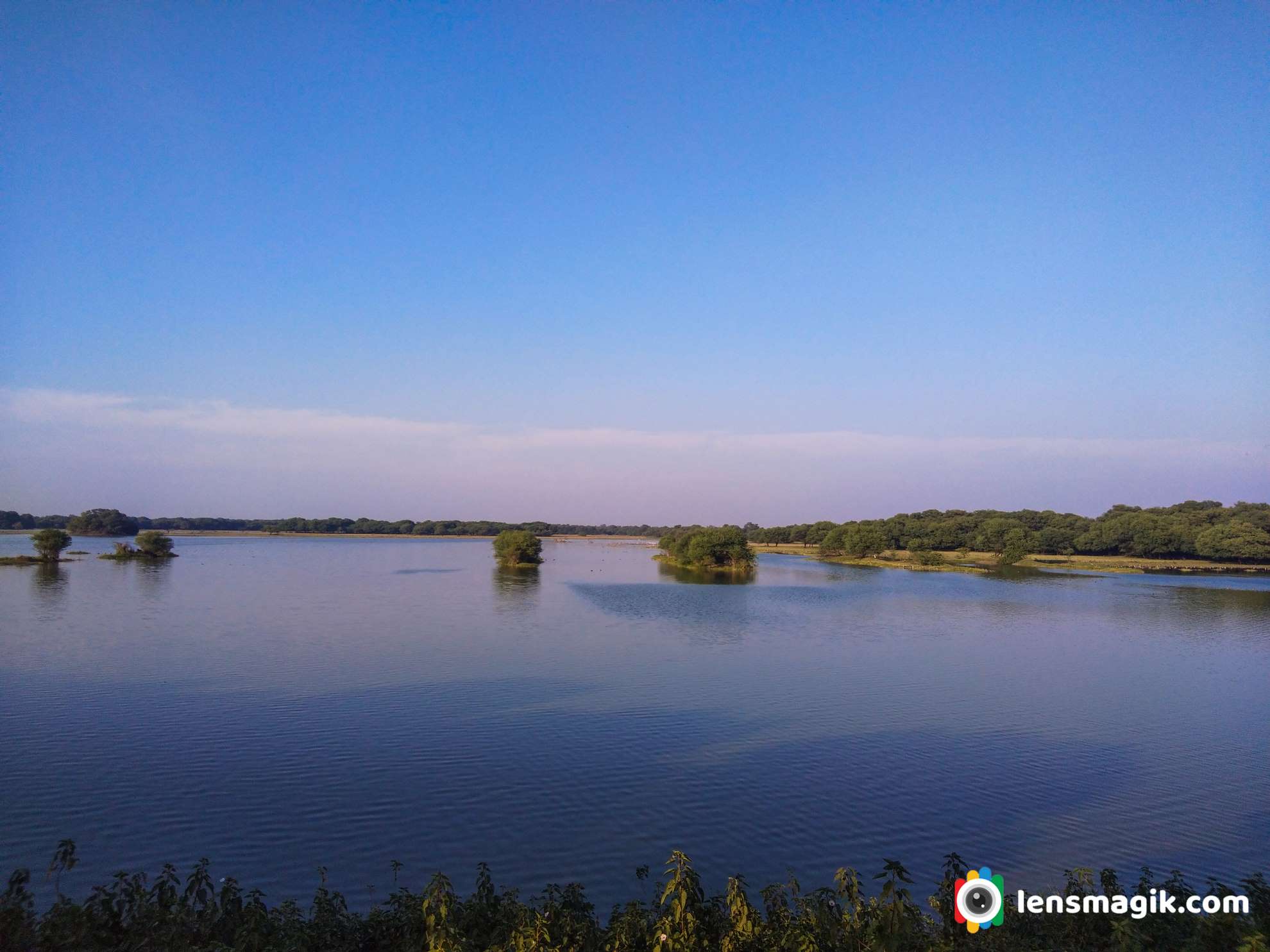
About Thol Lake / Thol Bird Sanctuary
Thol lake is located near Thol village and its area around 38000 acres. Lake faces all season winter , summer and monsoon. During winter temperature goes to 8 degree and in summer temperature goes to 43 degree. Thol lake is under control of Forest and Irrigation department of Gujarat. Thol lake water storage capacity is around 84 million cubic meters. Thol wildlife sanctuary is declared as Eco Sensitive Zone .
Flora and Fauna Thol Sanctuary :
Thol lake has many vegetation plants like Zizyphus, Acacia nilotica, Ficus, Capparis, Azadirachta indica etc. There are also some mix flora of Marshy and Aquatic plants reported in Thol Lake.
Thol lake is protected area and it is very good habitat for water birds. In thol bird sanctuary there are more than 150 spices of birds found . Among these more than 60 % of birds are water birds. Flamingo bird is most prominent bird of Thol Lake. Also Sarus Crane nest in large number here.
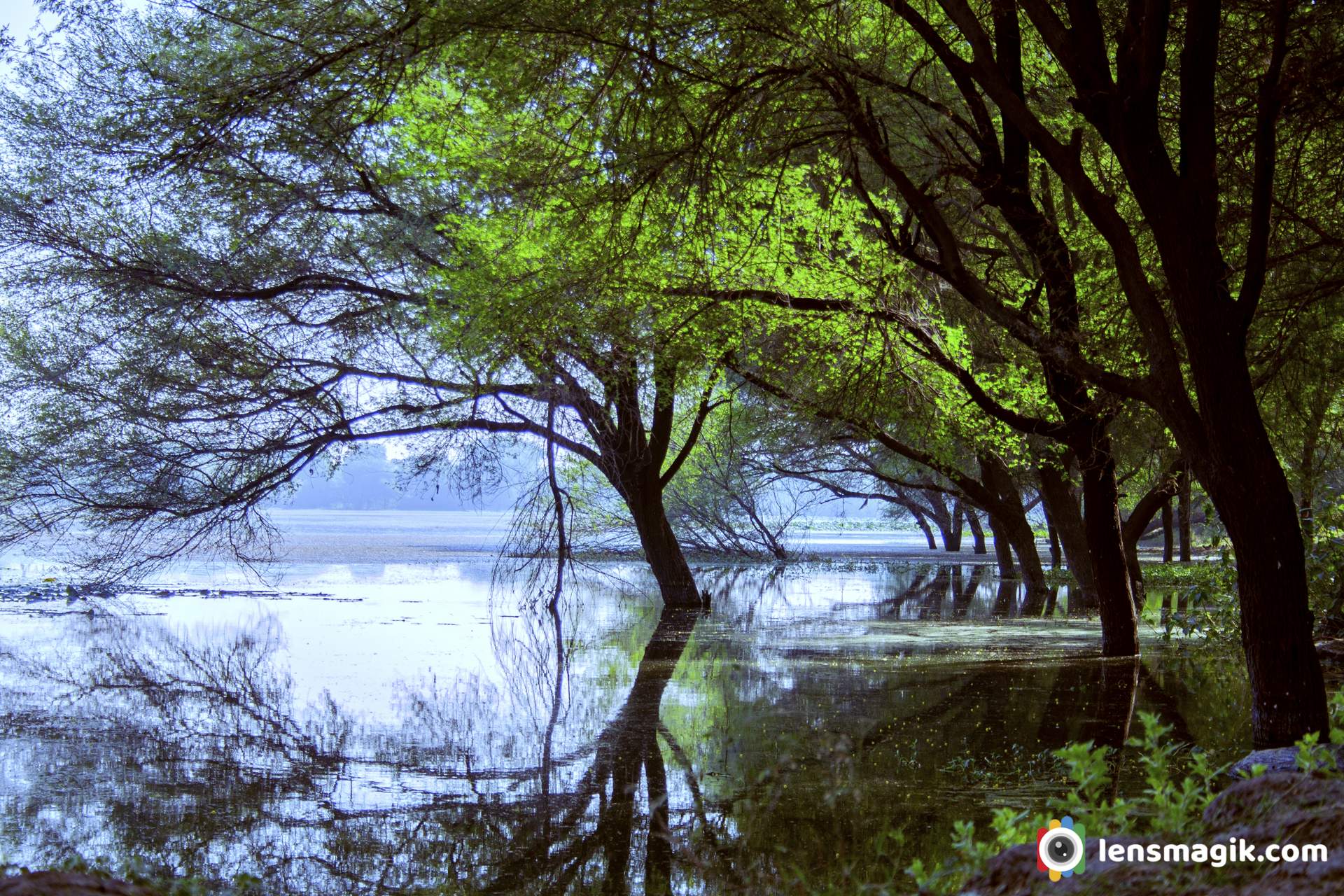
Famous Migratory Birds of Thol Lake
• Flamingos
• Sarus Crane
• Great White Pelican
• Mallards
• Bar Headed Geese , Grey Headed Geese
• Waterfowl
There are also some spices reported here like Dalmatian Pelican, Indian Skimmer, Greater Spotted Eagle, Indian Vulture and white rumped Vulture etc. In Mammals Bluebull, Blackbuck and Golden jackal reported here.
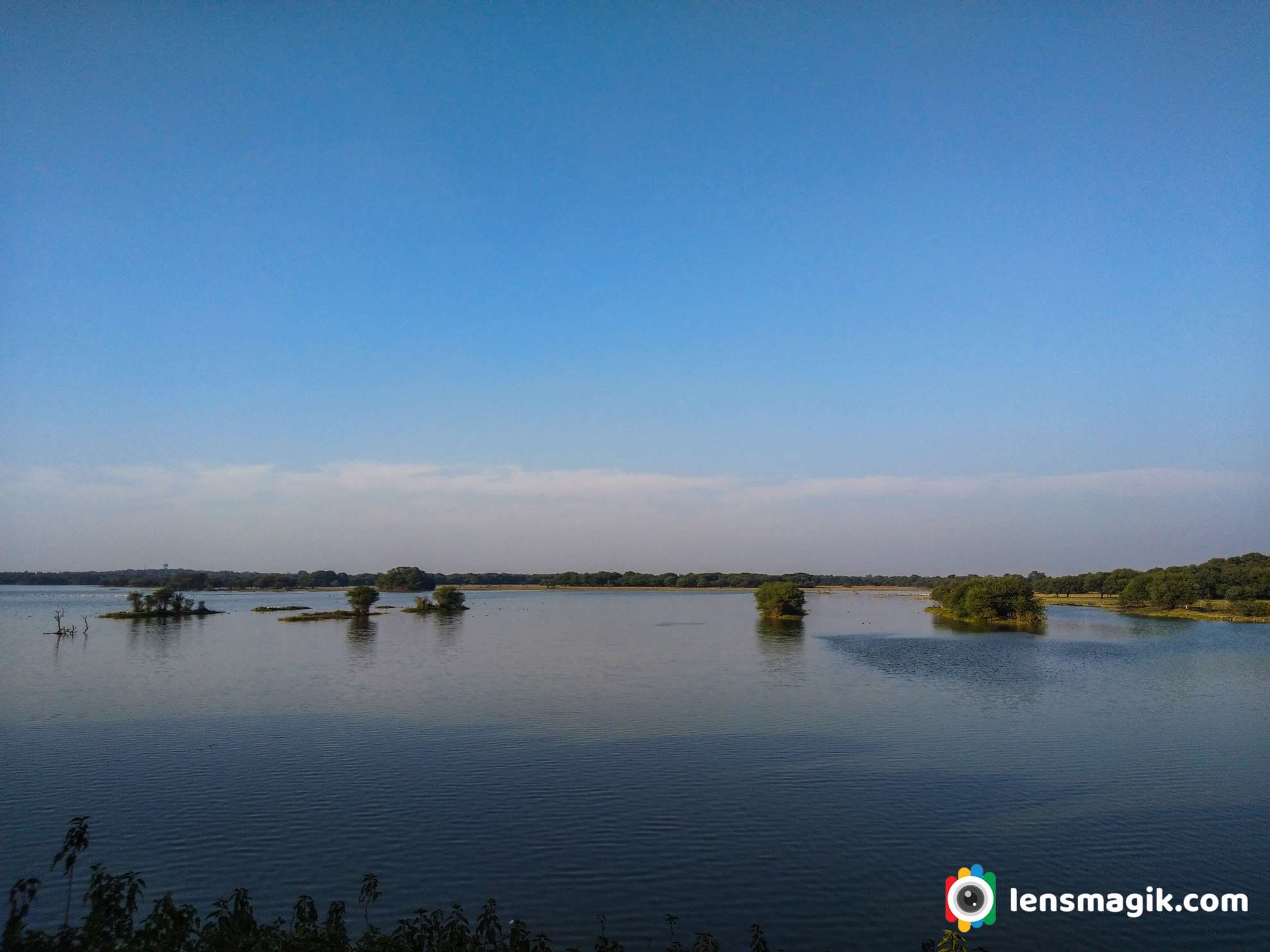
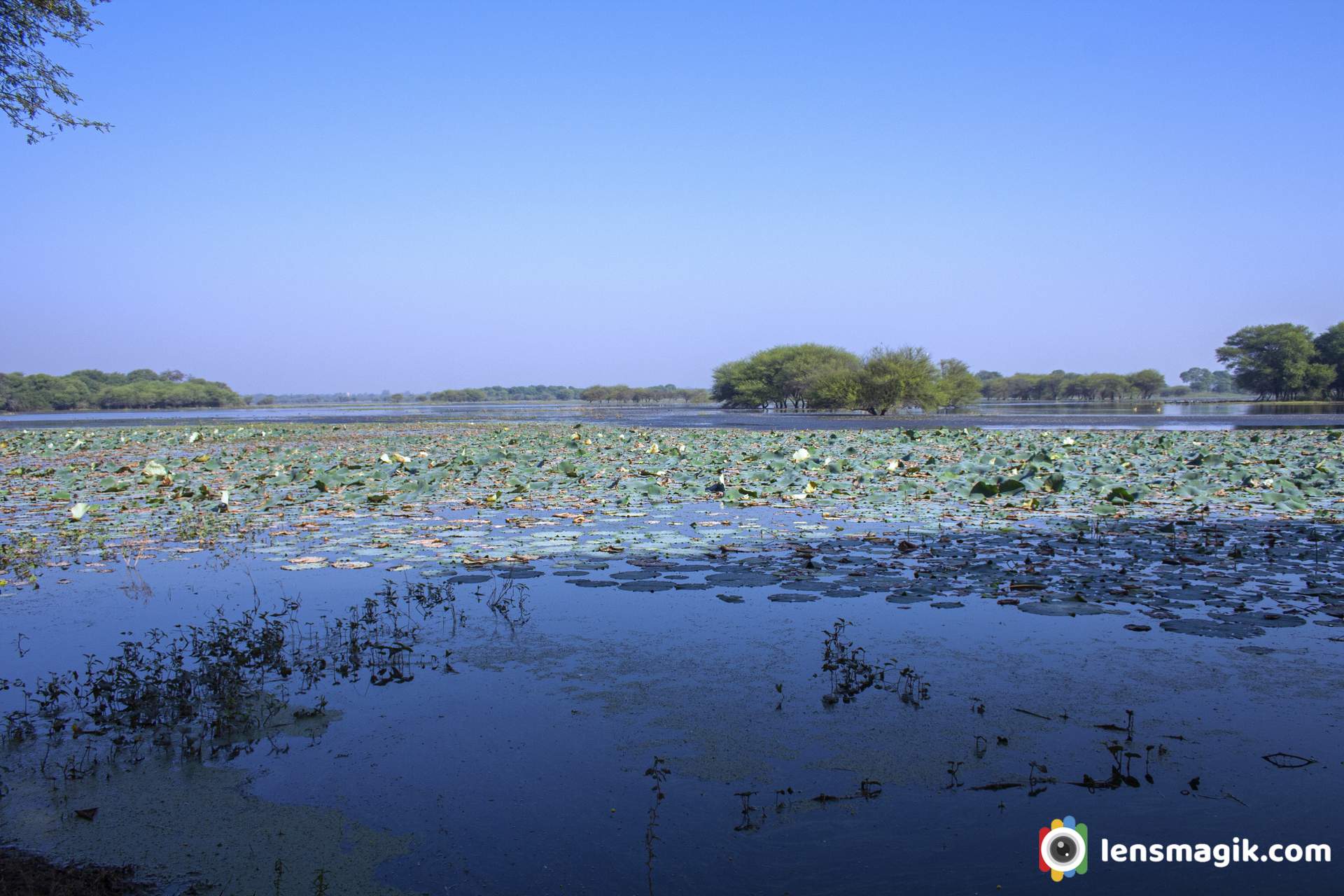
Thol Lake Timing and Fees :
Thol lake open everyday at 6 AM in morning and close at 5.30 PM in evening. Entry fees for Thol Lake or Thol sanctuary is 50 INR for per person. Also Camera fees extra at 200 INR and if you go via car then car fees also 500 INR. Foreigner fees are 10 $ per person.
Best Time to Visit Thol Sanctuary / Thol Lake :
Best time early morning for Thol Lake. In winter if you go before sunrise you can see Twilight sky amazing with lake shore and birds sound .During all season Thol lake has its own beauty. Every season you can visit at Thol Lake. But mostly during winter from November to March season is best for Thol Sanctuary visit. Because during winter lots of Migratory birds came here and stay for long time so for birding winter season is best at Thol Lake. Also during summer some of birds stays here like flamingos and pelicans, geese etc. So you can also see them in summer too. Also during summer water level of lake is low so may be the birds you can get in deep or sometimes closer. During monsoon most people don’t visit but if you like macro photography then you must visit Thol lake in monsoon. You can get some excellent macro subjects like waterdrops , Spiders, Insects etc.
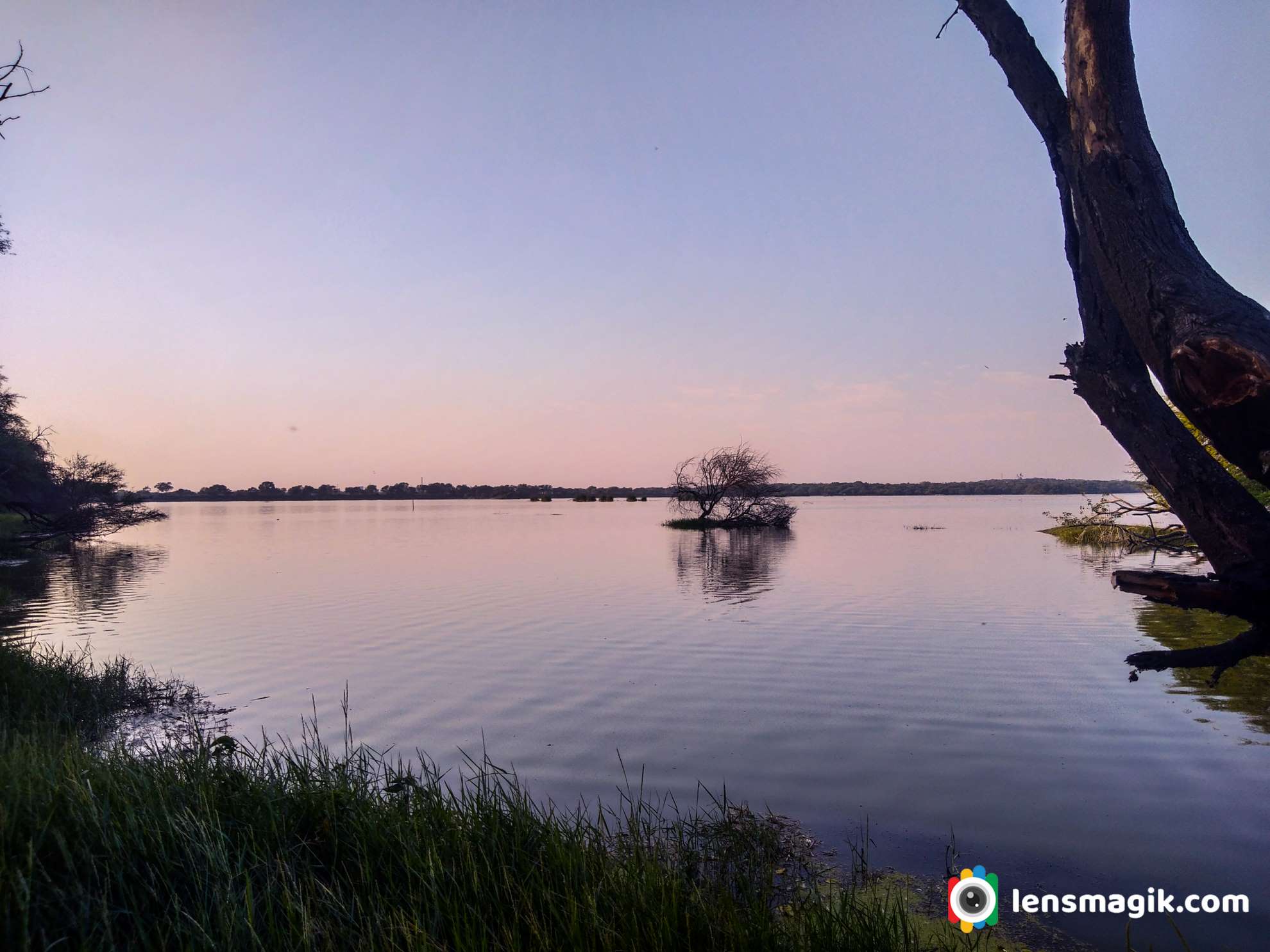
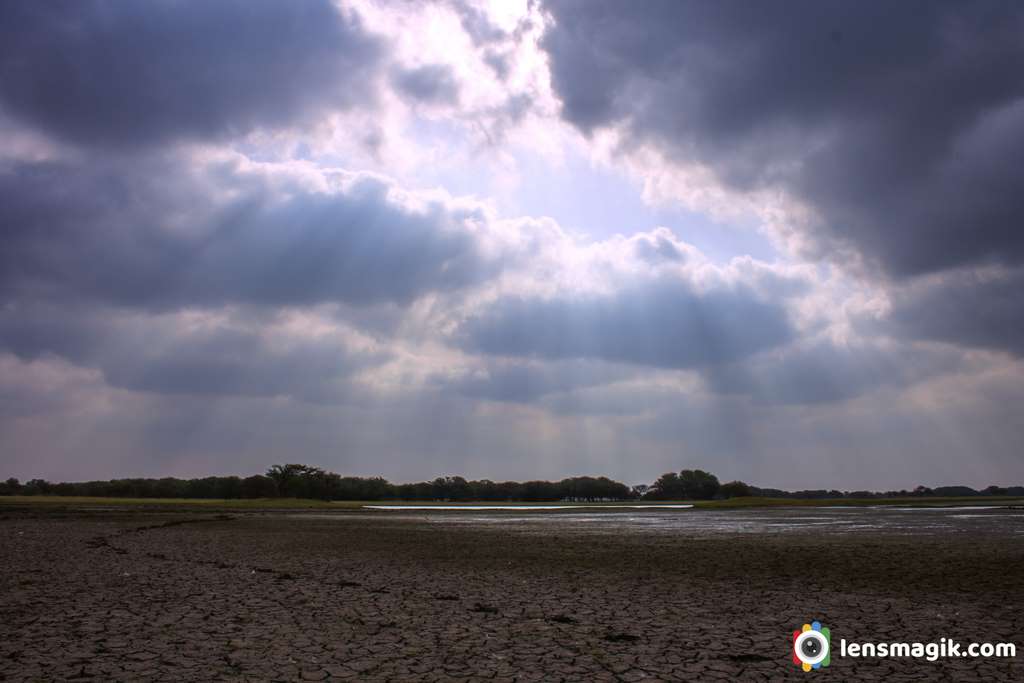
What to do and What not to do in Thol Lake / Keep in mind while visiting sanctuary in India :
• Keep silence in sanctuary
• Maintain discipline
• Keep sanctuary clean
• Do not throw plastic waste anywhere in sanctuary
• Protect wildlife
• Observe birds, mammals etc and protect them and identify them
• Follow rules of wildlife protection act -1972
• Don’t disturb birds and animals
• Don’t enter in sanctuary with liquor and inflammable objects
• Don’t make loud noice.
• Enter in sanctuary with permit only and keep receipt till you leave sanctuary
• Don’t feed birds and animals
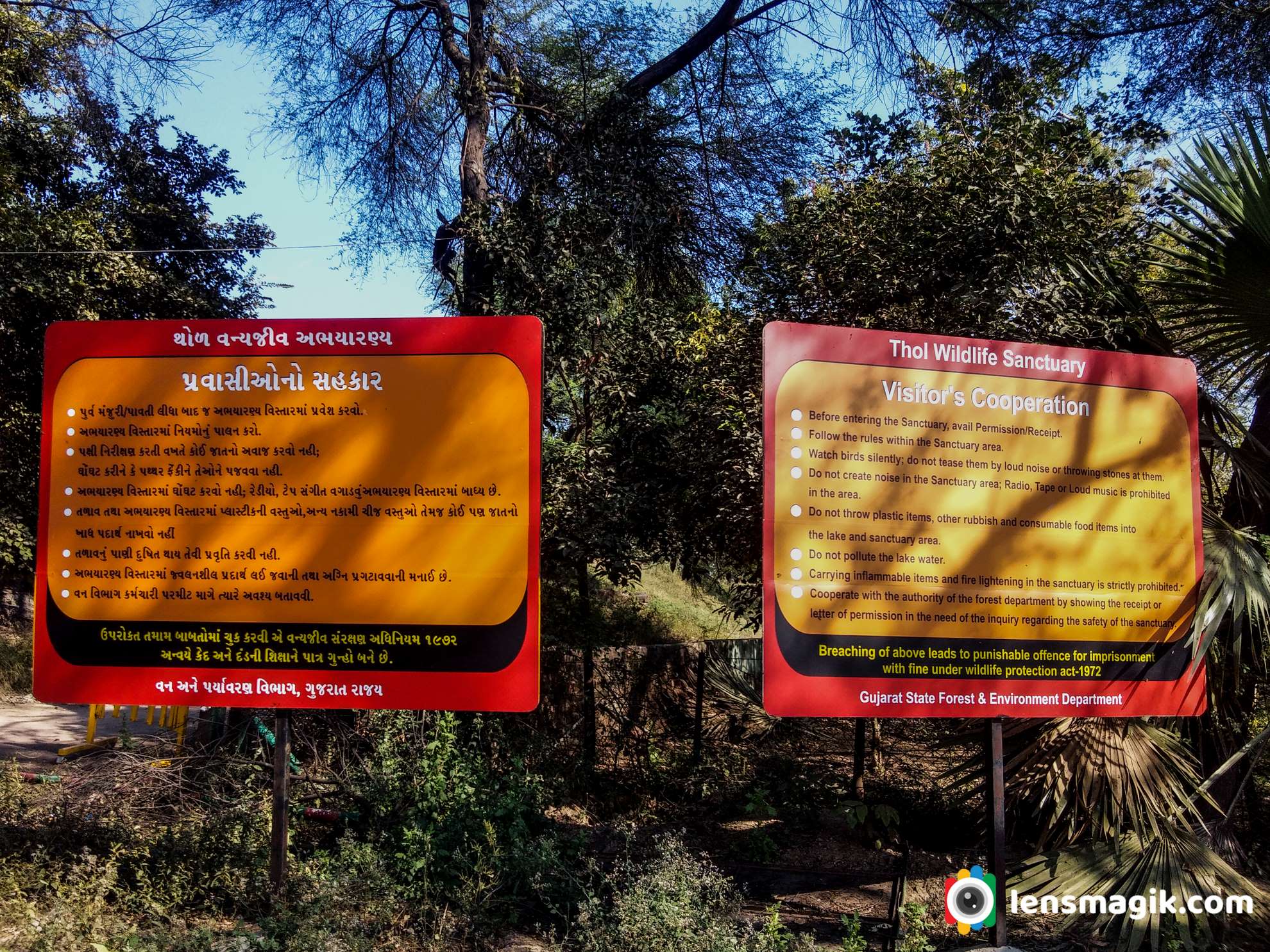
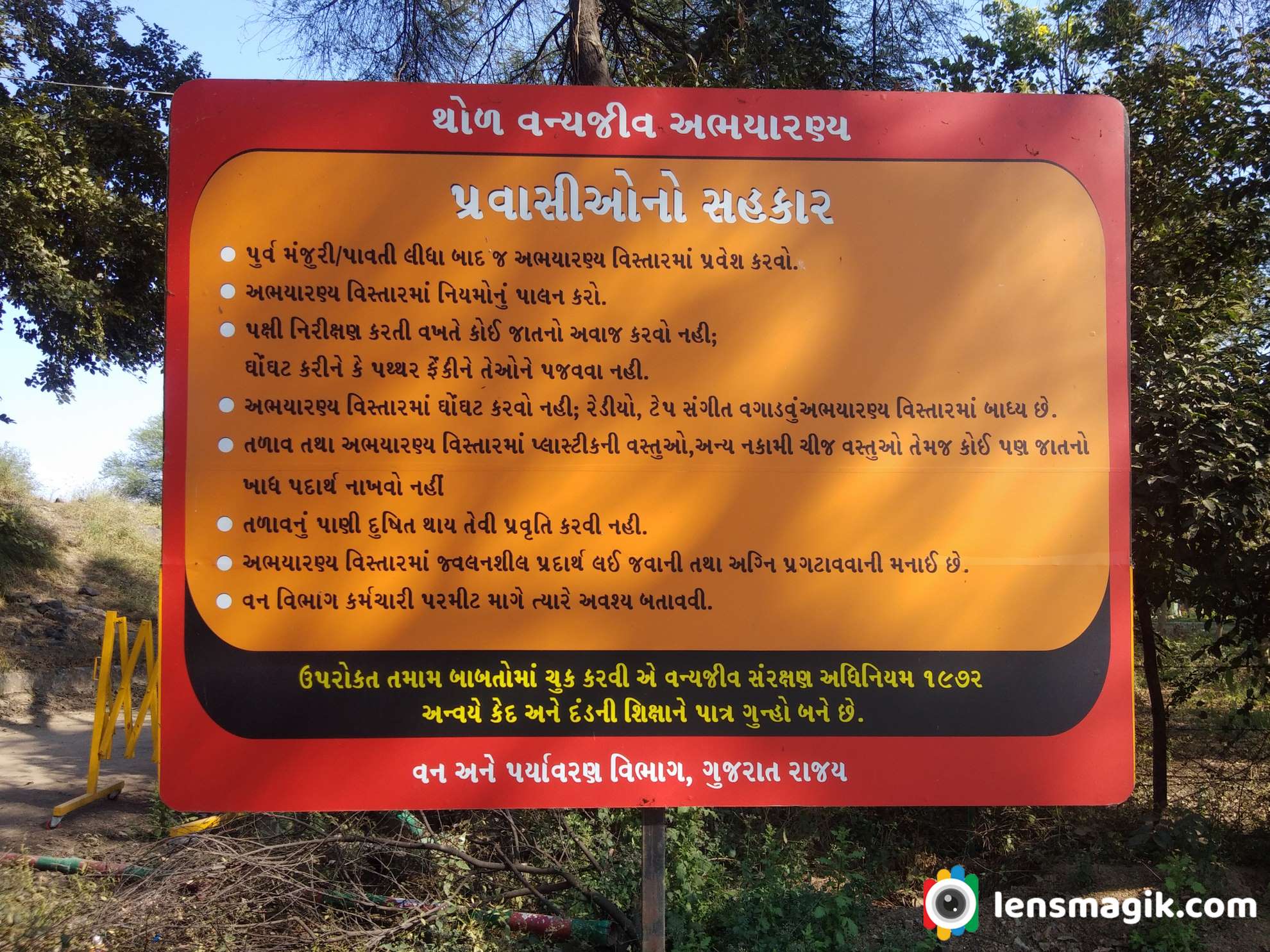
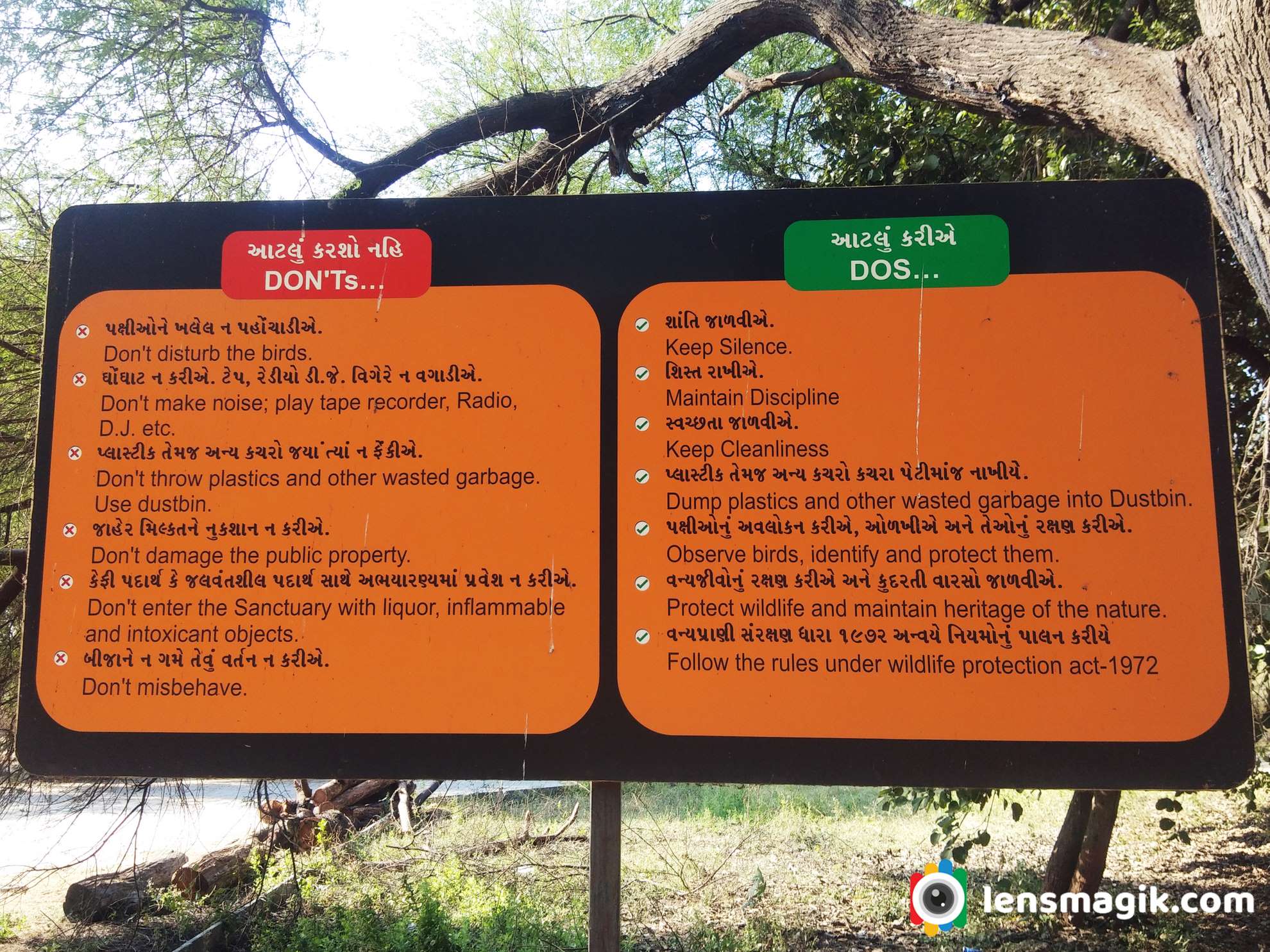
Where to Stay near Thol Lake :
Well near to Thol Lake there are not good places to stay at night but you can go near to destinations like Kadi, Kalol or Gandhinagar , Ahmedabad where you can get good places to stay at night. Nearest I suggest Kalol around 15-18 km or you can go Ahmedabad around 25 km.
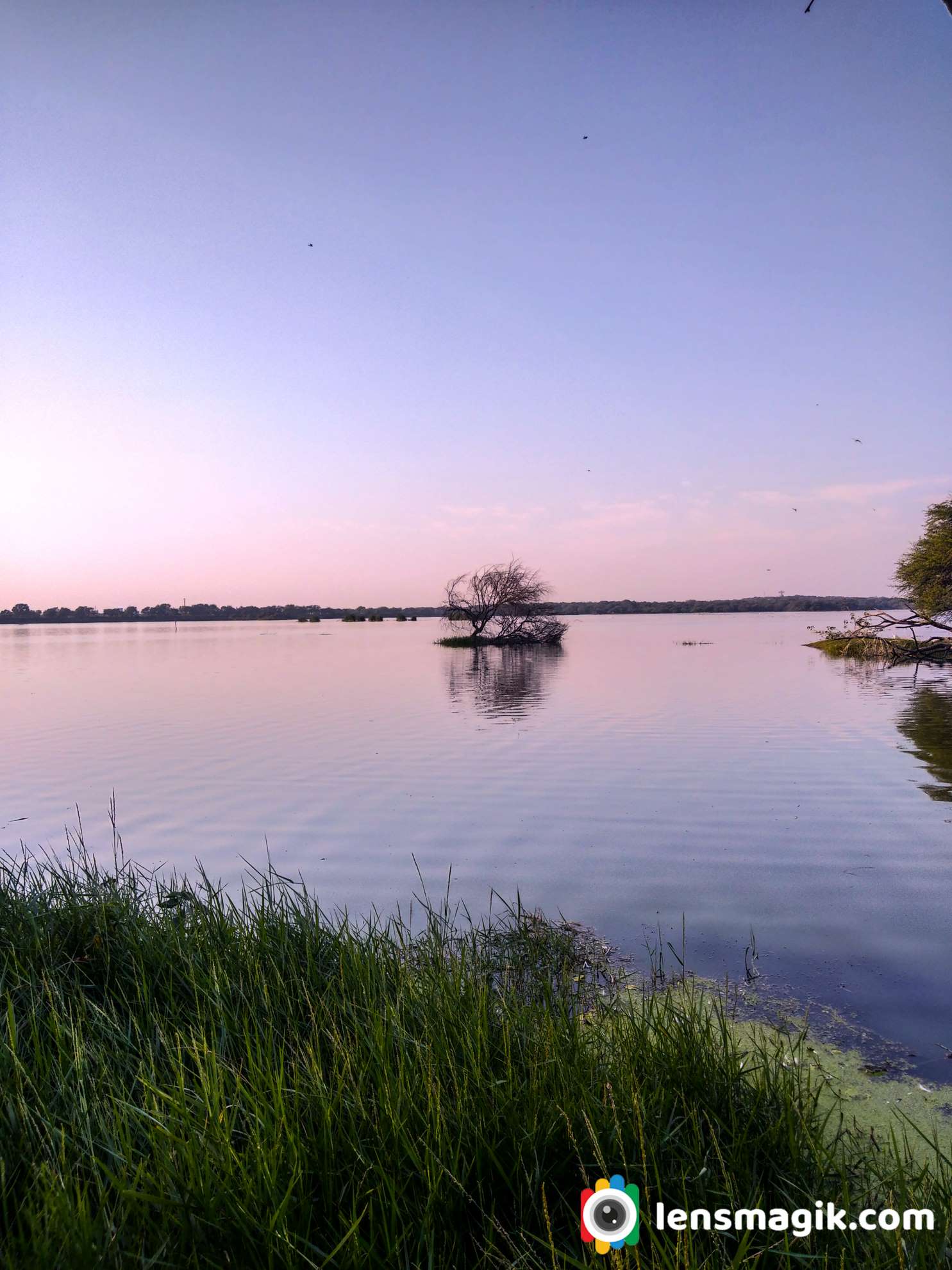

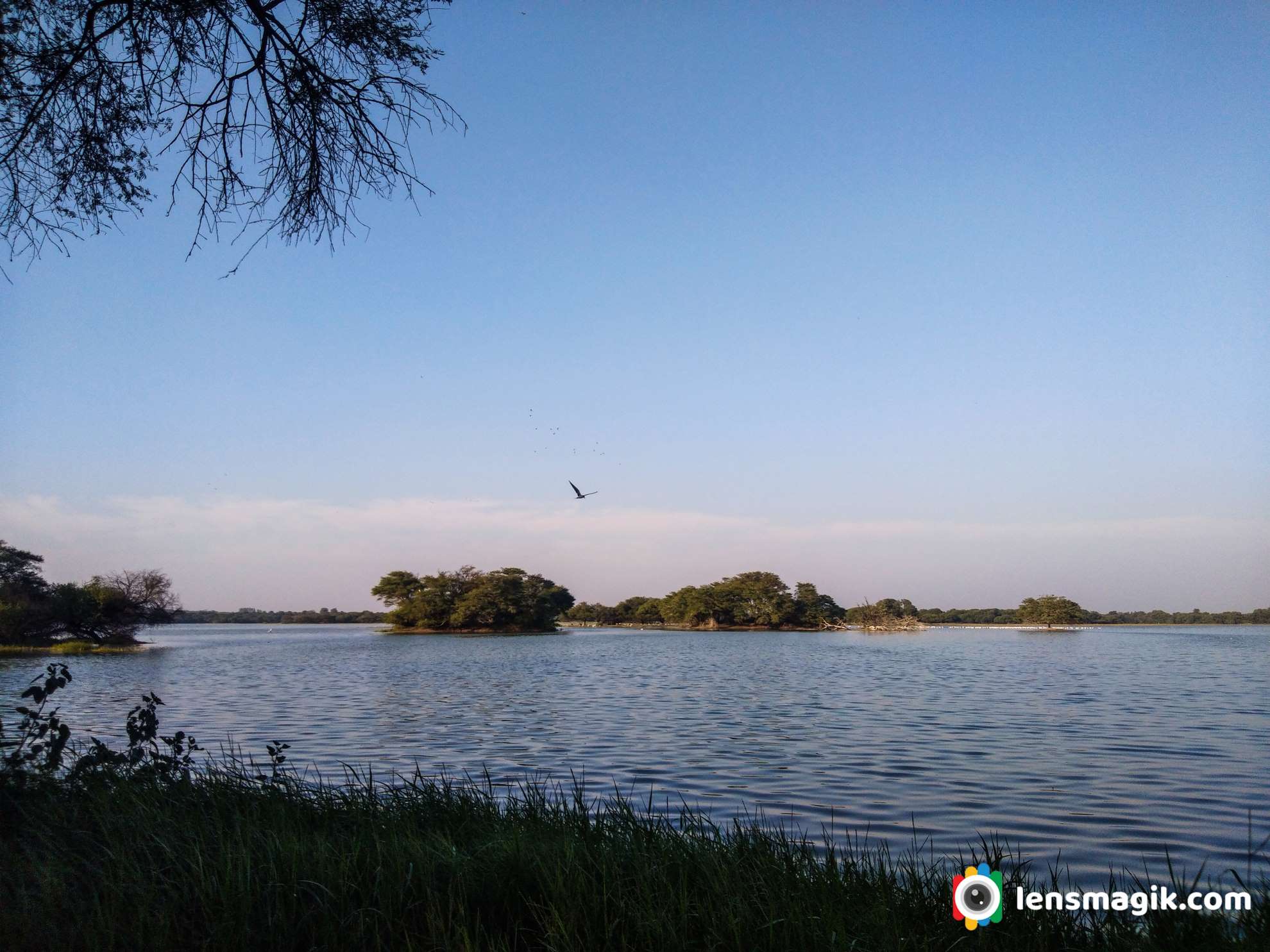


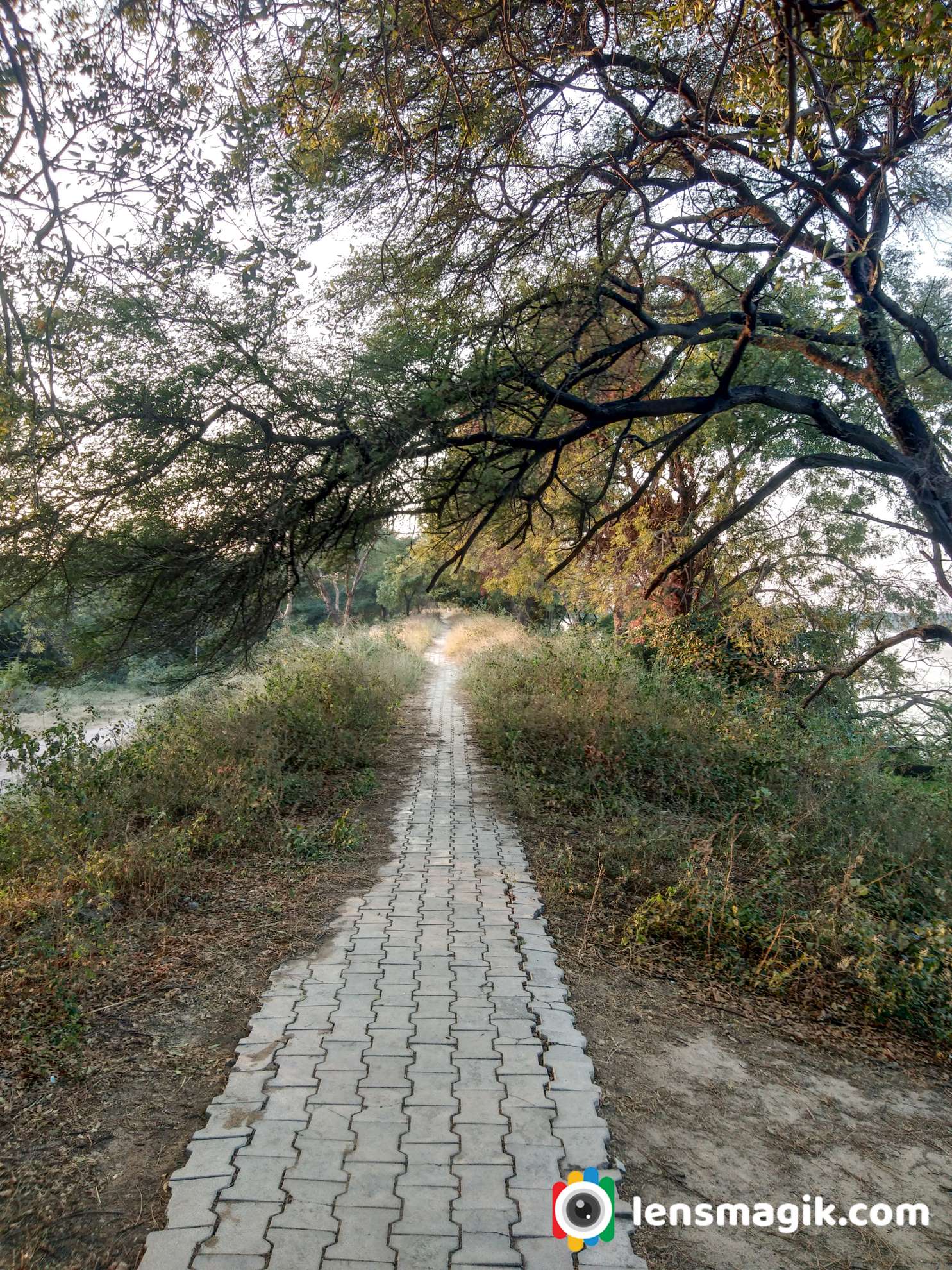
Places to Visit near Thol Lake :
If you are staying at Ahmedabad then go for Ahmedabad Darshan , Pol area of Ahmedabad and Adalaj Ni Vav ( Heritage places ) etc. Also go for fast food test at night at Manek Chauk and SindhuBhavan road there are lots of option for food lovers like Urban Chauk, Freezbee etc.
If you stay at Gandhinagar then visit Mahatma Mandir at Gandhinagar, Sarita udyan , Akshardham Temple etc.
I would suggest Modhera Sun Temple if you had some more time which is around 100km from Ahmedabad. For bird lovers and bird photographer I would suggest visit Little ran of Kutch (LRK) during Winter season, Pariej Lake, Indroda park Gandhinagar, Jessore Sanctuary Banaskantha etc.
How to Reach Thol Sanctuary :
Nearest airport is Ahmedabad and from Ahmedabad thol lake distance is around 30-40 km
Also for Railway station is Ahmedabad because you can get all frequency and destinations from Ahmedabad railway station.
Mt Kanchenjunga or Mt Kangchenjunga both spellings right and whatever you say located in west Bengal India. When i was on my Singalila National park trek i visit it. It was really gesture to see Mt Kanchenjunga from own eyes. A beautiful Mountain surrounded by snow and little bit clouds looks like you are in Heaven. The view i capture makes me very happy to see first time snow mountain in my life. When i was at my last location of my trek at Sandakphu we go for birding and v had a clear mountain view of Kanchenjunga. Kanchenjunga is also spelled Kangchenjunga. Height of Mt. Kanchenjunga/Kangchenjunga is 8586 m . The view of Mt Kanchenjunga from India is amazing as you can see in photos. This Mountain range in wide angle as shown above image looks like Sleeping Budda so this mountain range also known as Sleeping Buddha Mountain Range too.
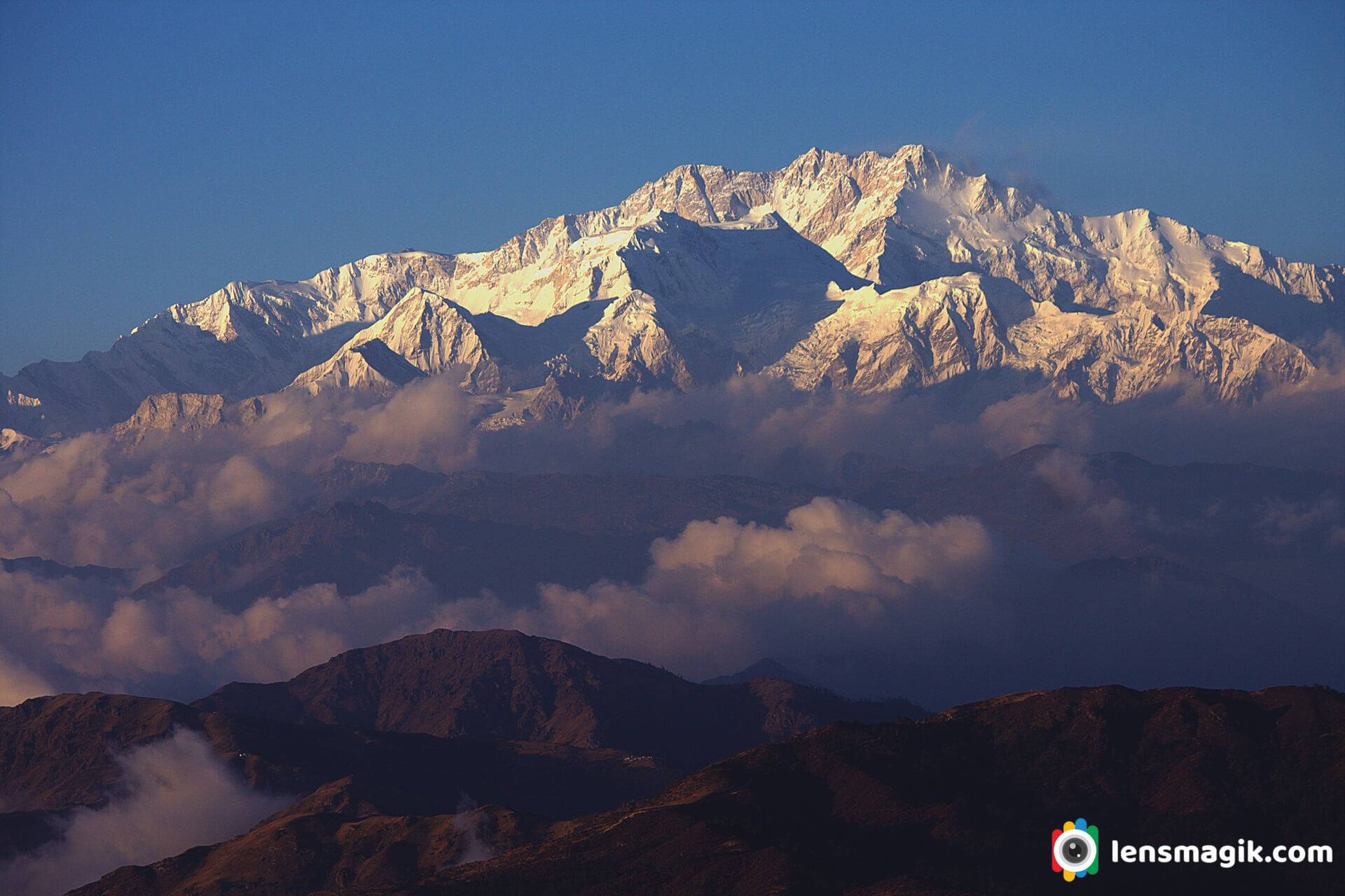
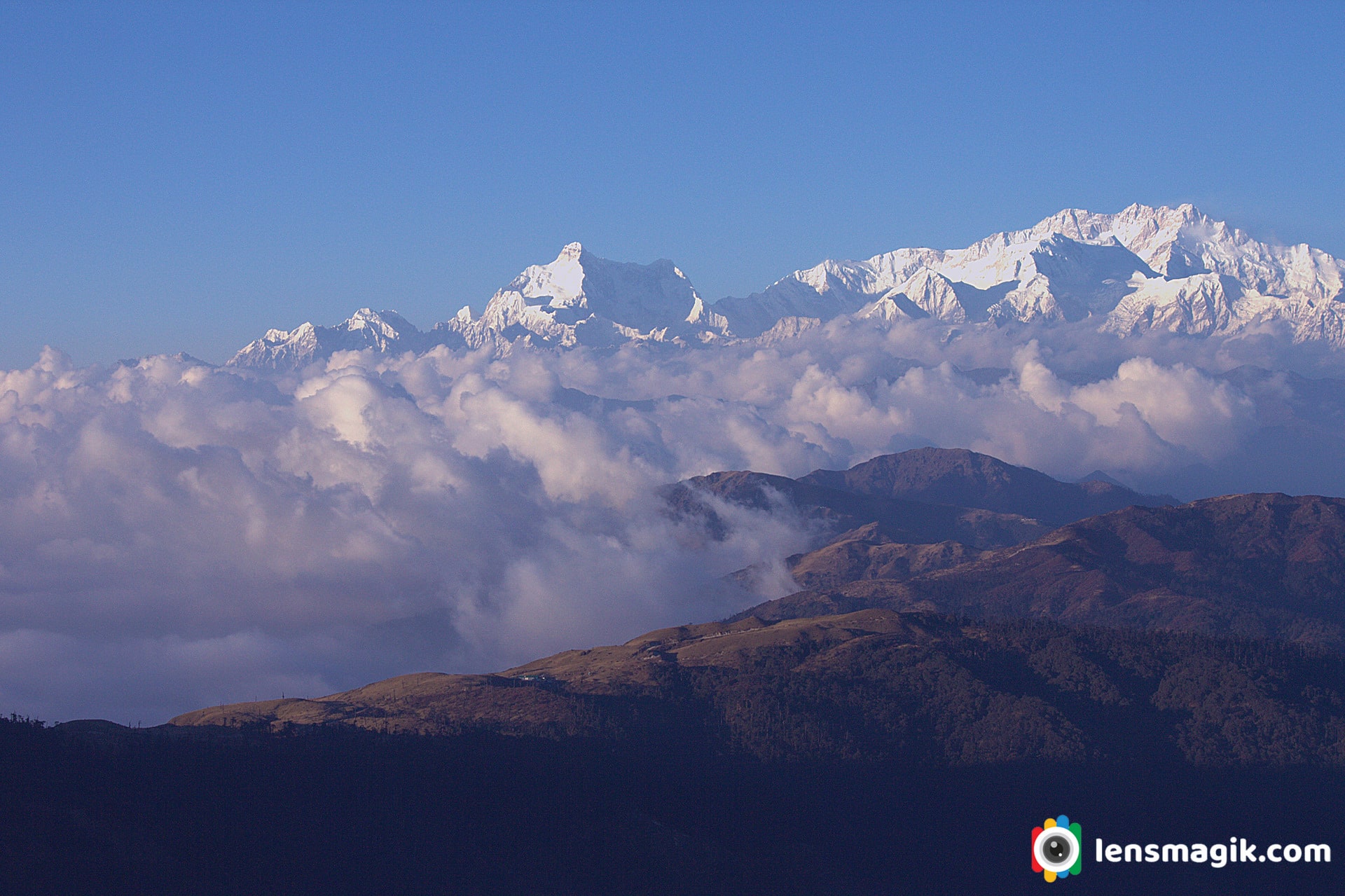
The name Kanchenjunga is derived from sanskrit kanchana ganga . Kanchana means gold and ganga is the river which flows in the region. The river shines like gold and hence the name Kanchana Ganga was given to this mountain.
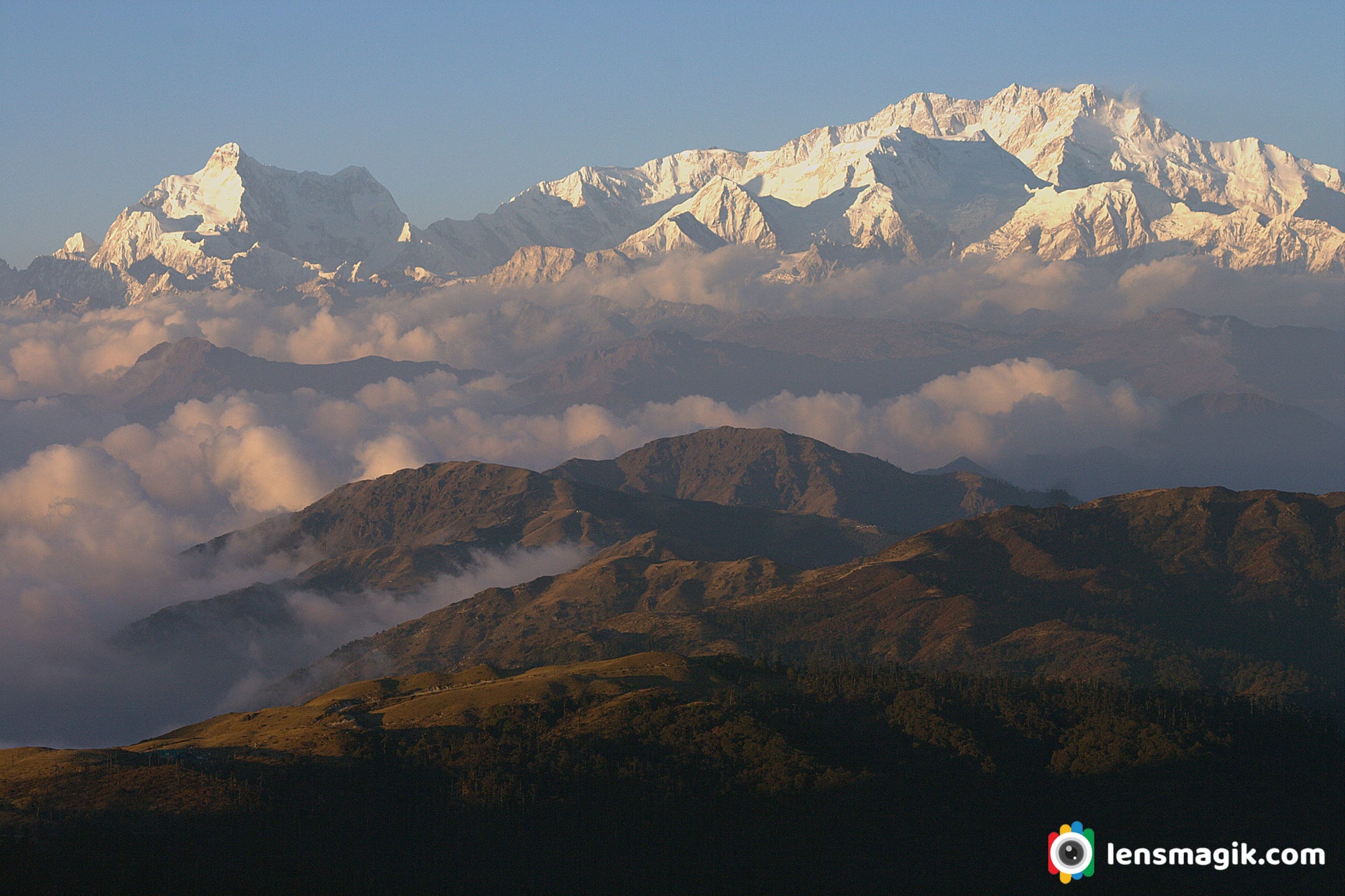
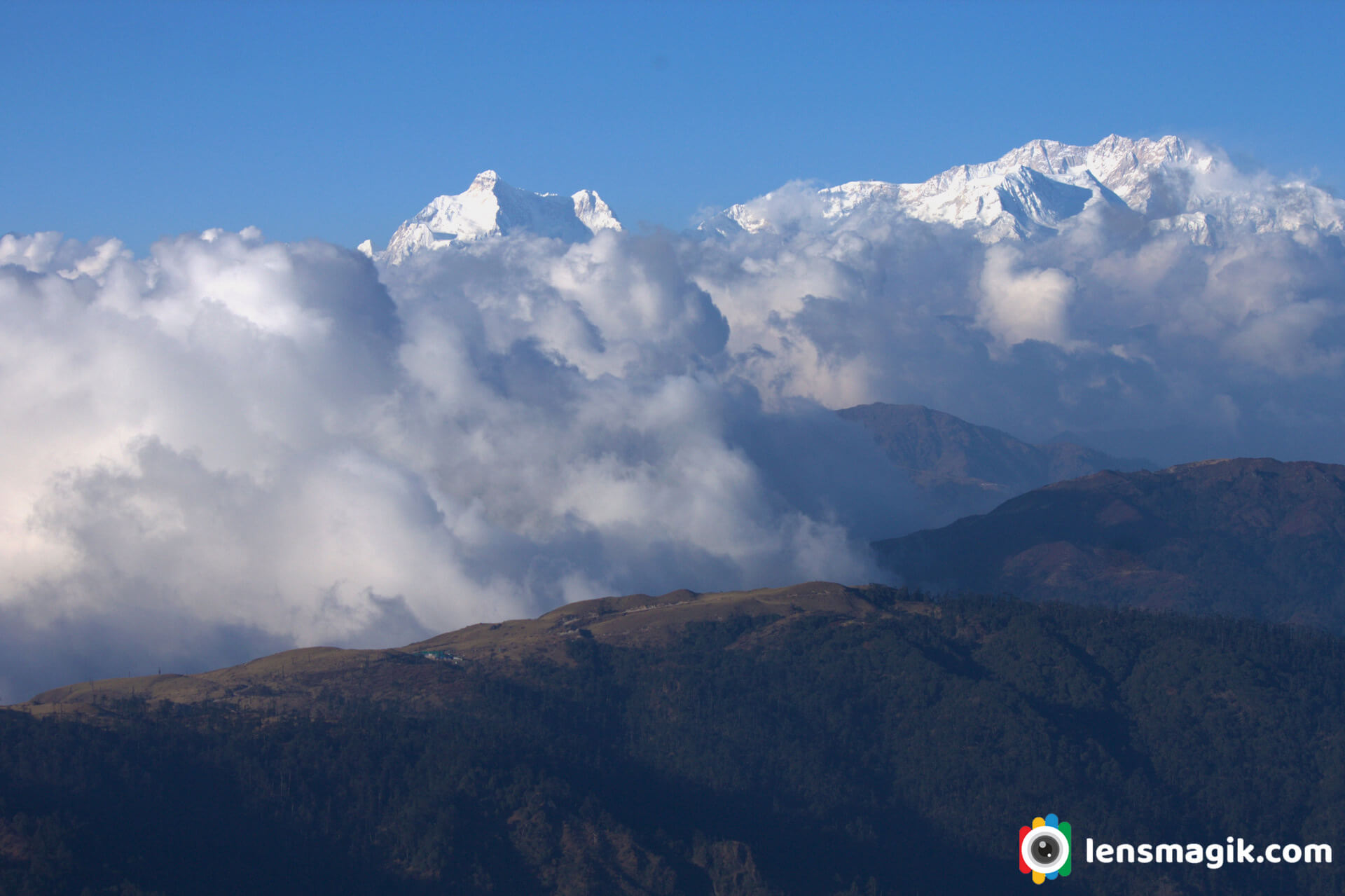
Things to know About Mt. Kanchenjunga/ Mt. Kangchenjunga :
- Kanchenjunga Mountain is about 28,169 ft height and located along the Nepal-India border in the Himalayas.
- It is the third highest mountain in the world.
- It contains 5 peaks and four of them above 27,700 ft of heights.
- Kanchenjunga is also name of surrounding section of Himalayas and means THE FIVE TREASURES OF SNOWS .
- Joe Brown and George Band was the first climber of Kanchenjunga mountain on 25 may 1955.
- Kanchenjunga mountain boundry shared by Nepal, India, China and Bhutan.
- Total 5 peaks of Kanchenjunga are Kanchenjunga Main ( 28169 ft ), Kanchenjunga West ( 27904 ft ), Kanchenjunga Central ( 27828 ft ), Kanchenjunga South ( 27867 ft ), Kangbachen ( 25928 ft ).
- Kanchenjunga Main is the highest elevation of Brahmaputra River.
- There are four climbing route for Kanchenjunga among them 3 are from Nepal and one from Sikkim India.
- It is also known as Sleeping Buddha Mountain range.
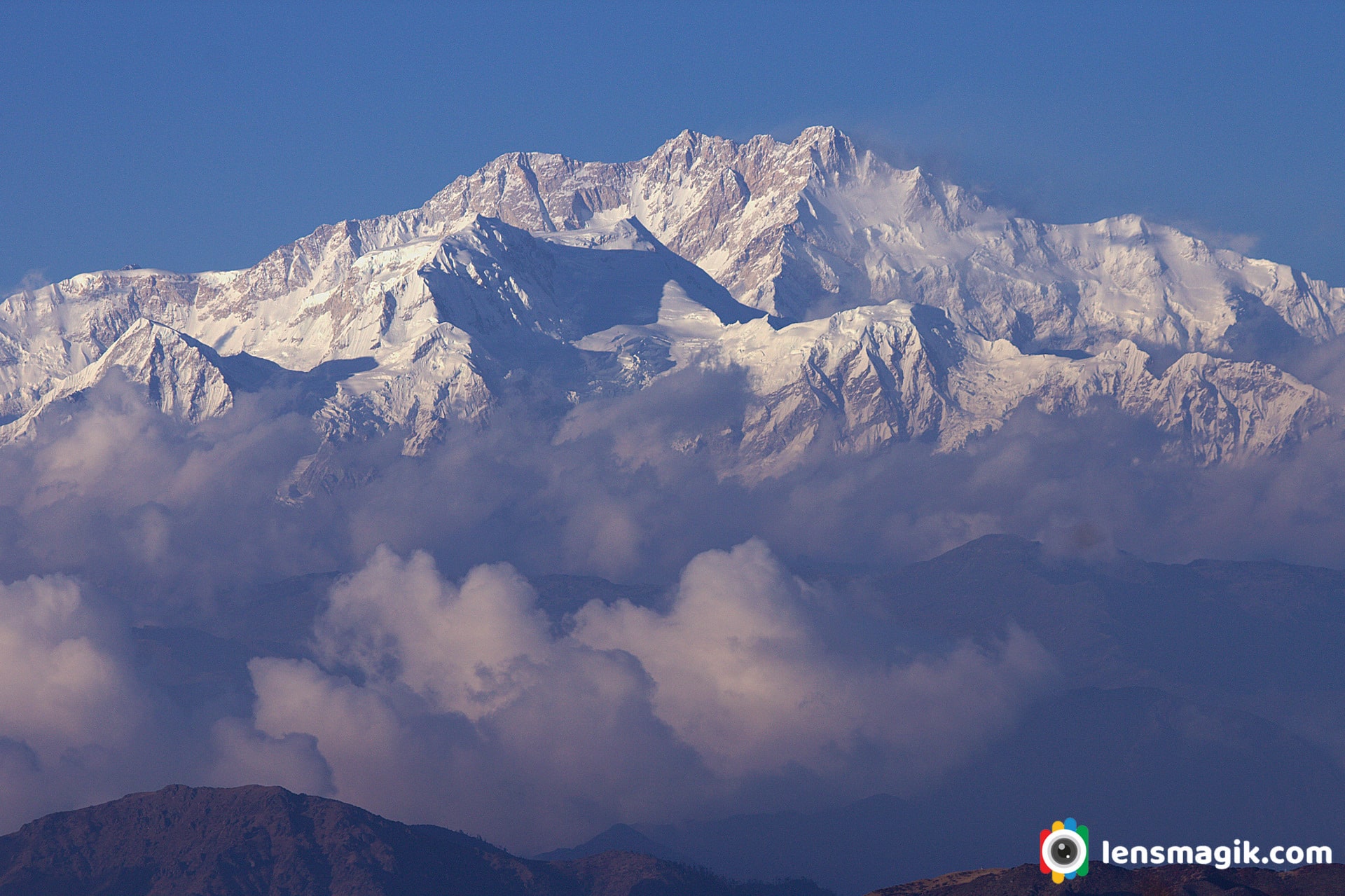
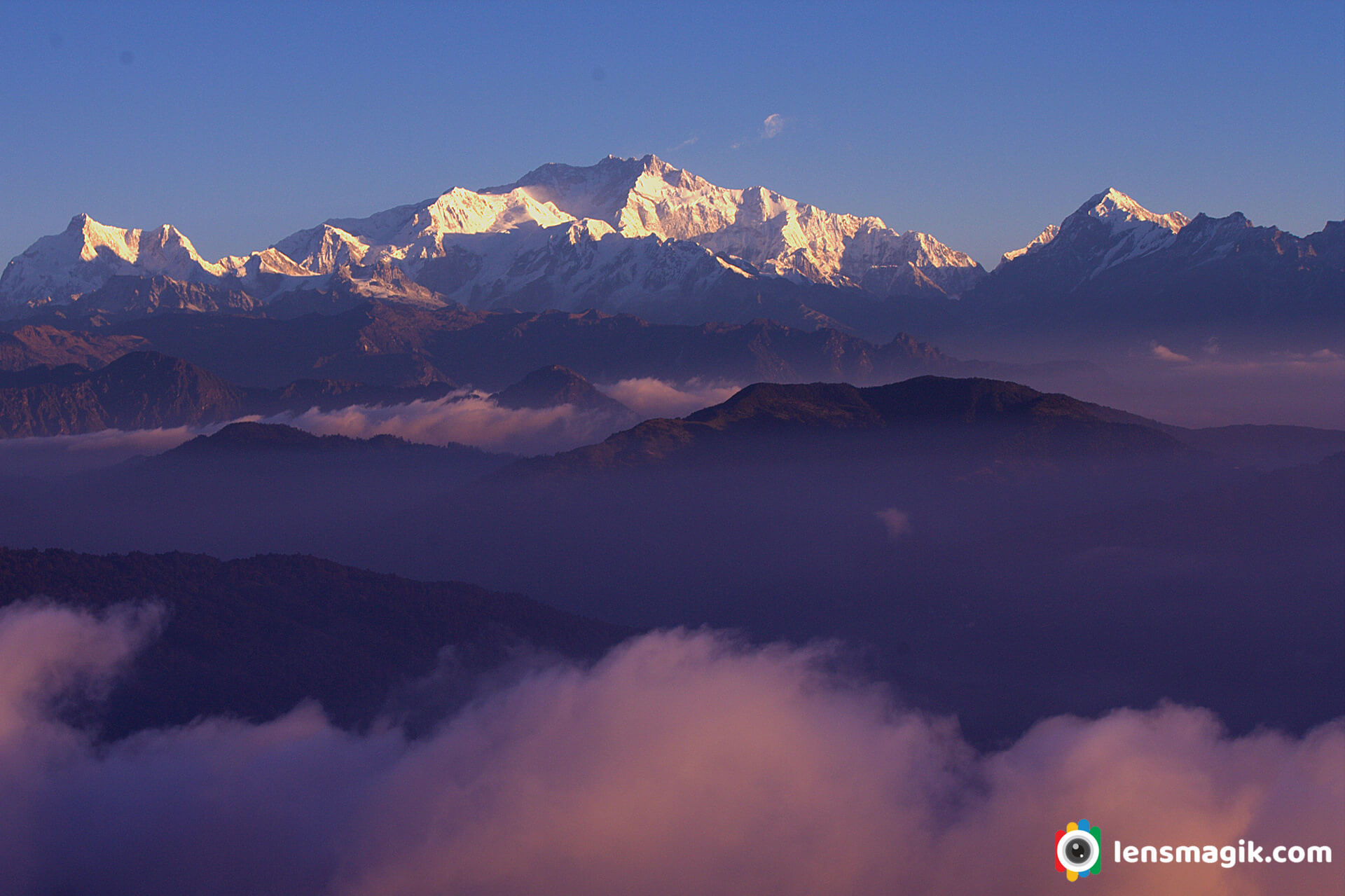
When i was on a tour to Singalila National Park we have a terrific view of Kanchenjunga mountains and also other Himalayan mountains. The best view of Kanchenjunga i saw from Sandakphu located at India-Nepal border. I also saw Mt. Everest from here. Everest is on a long distance but if weather is clear you can see it very clearly.
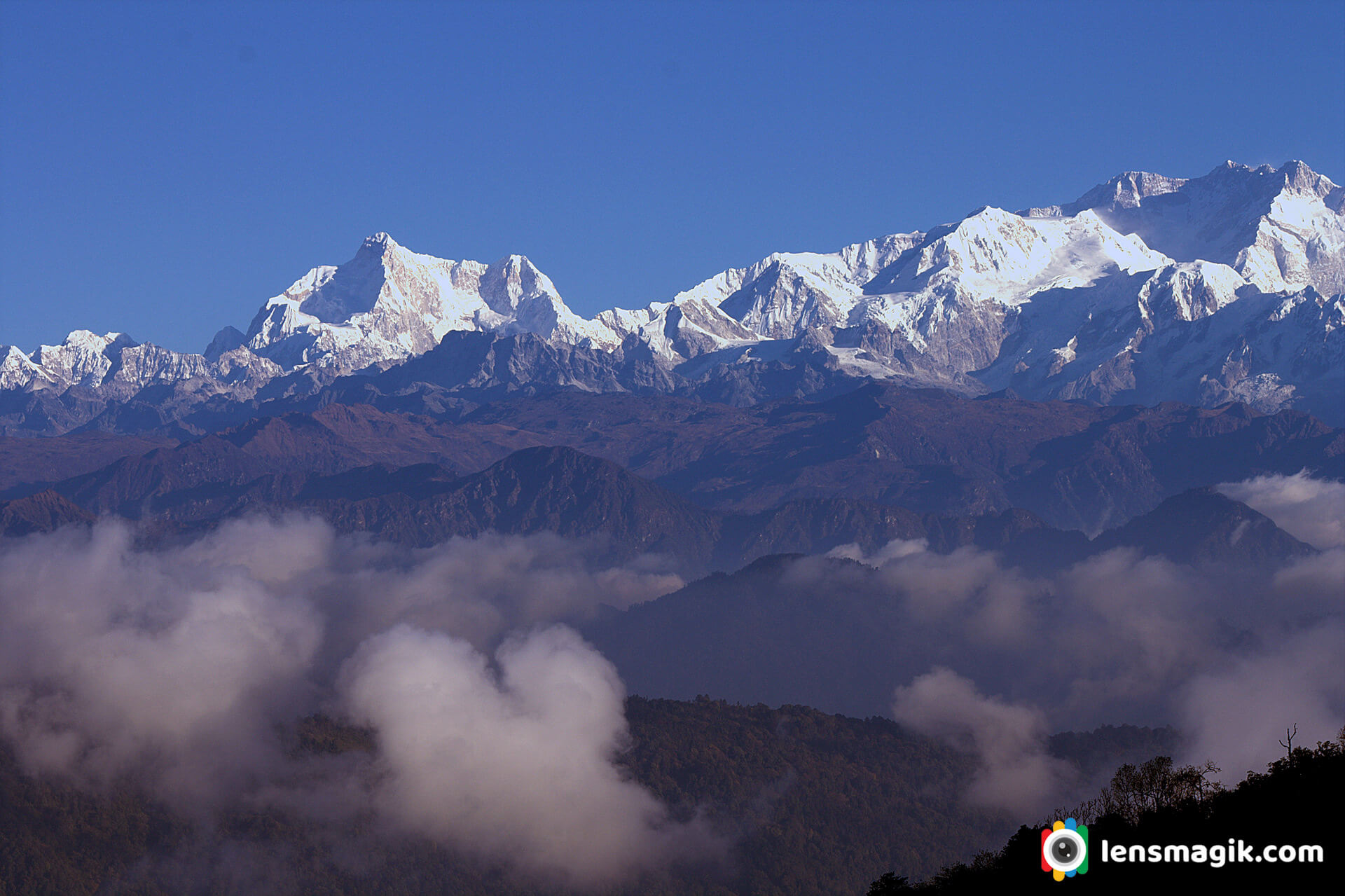
In above picture the mountain shows in left side ( Triangle 3 peaks ) of Mt Kanchenjunga is Kumbhakarna Mountain.
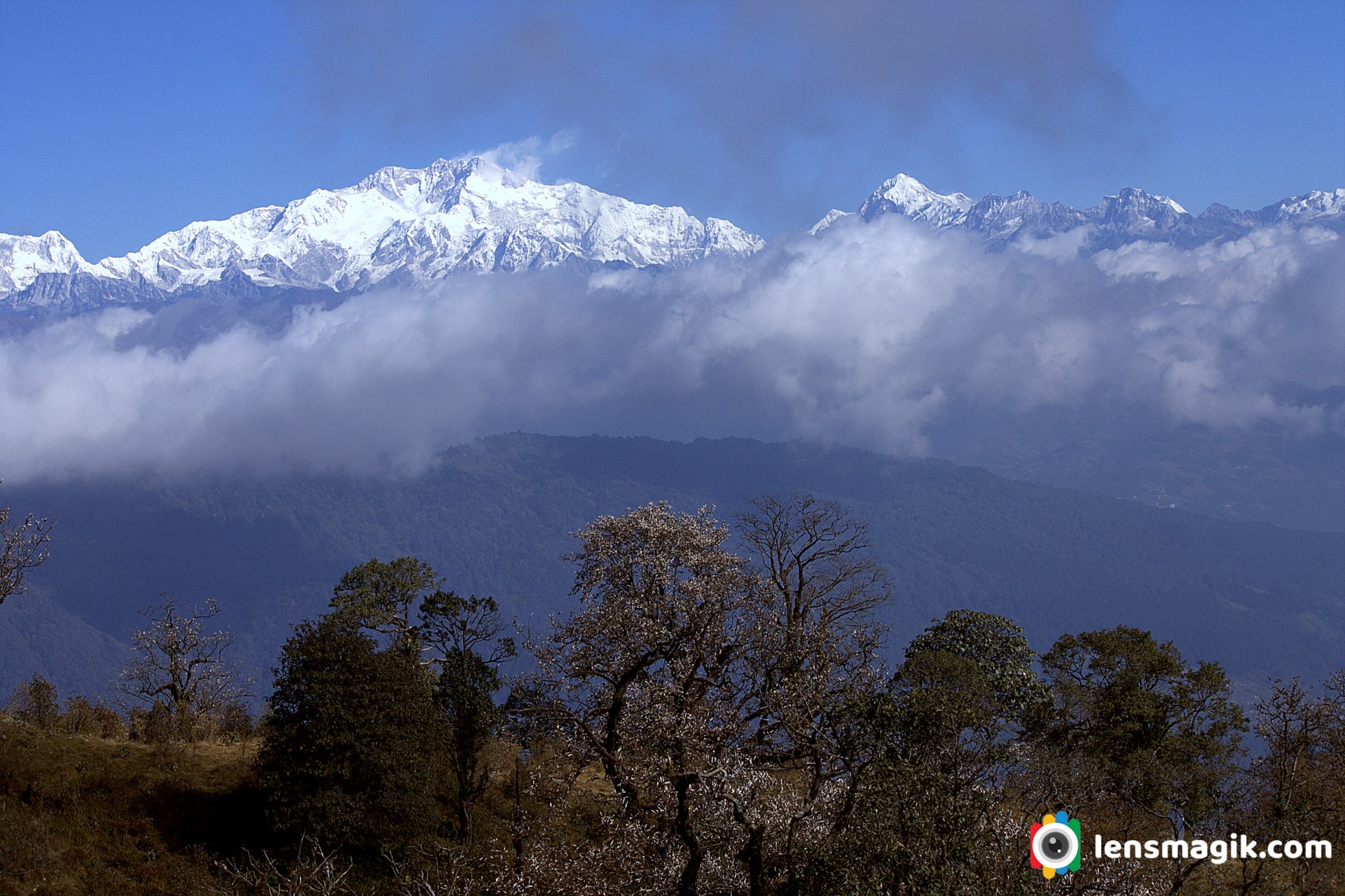
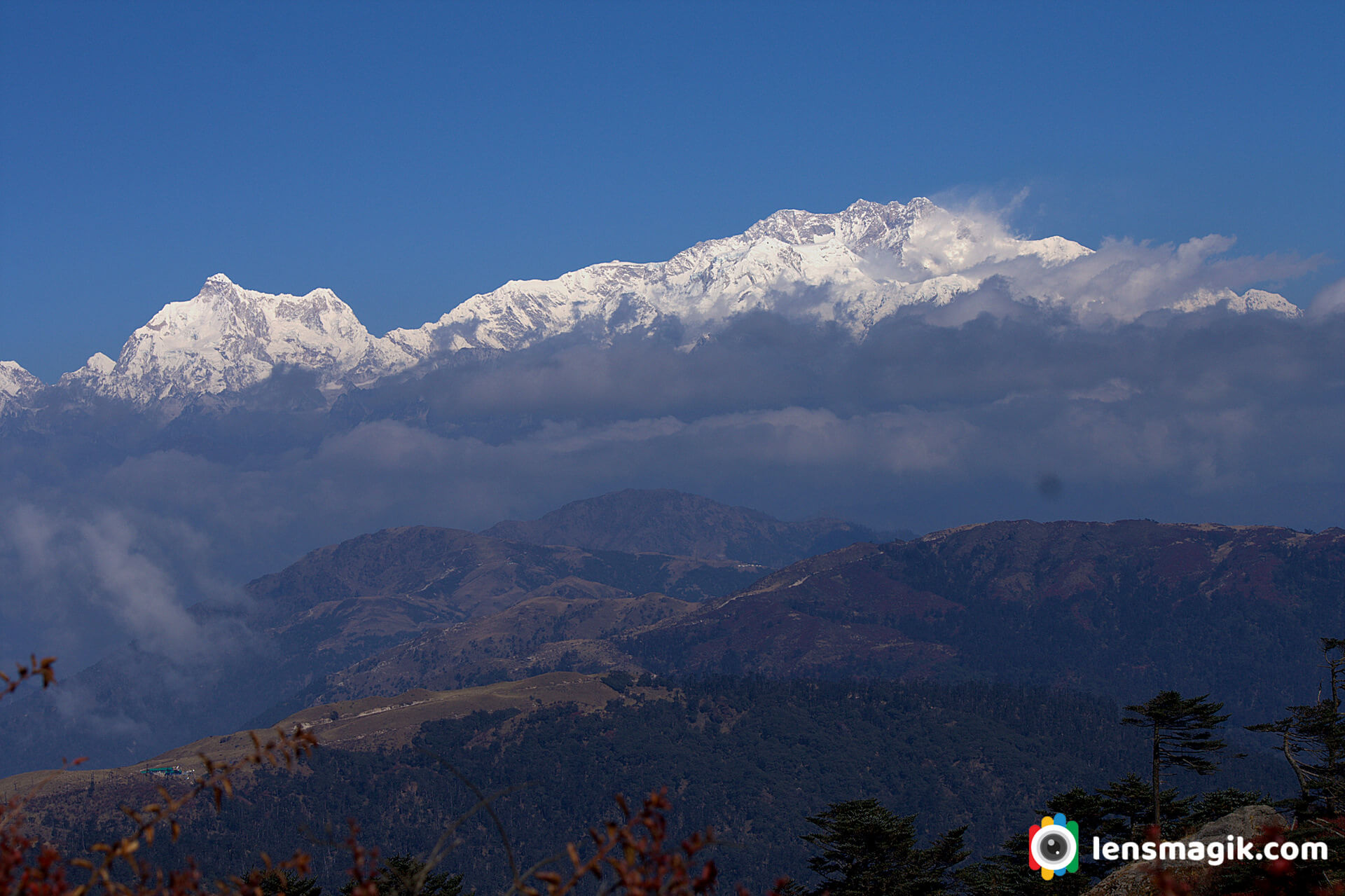
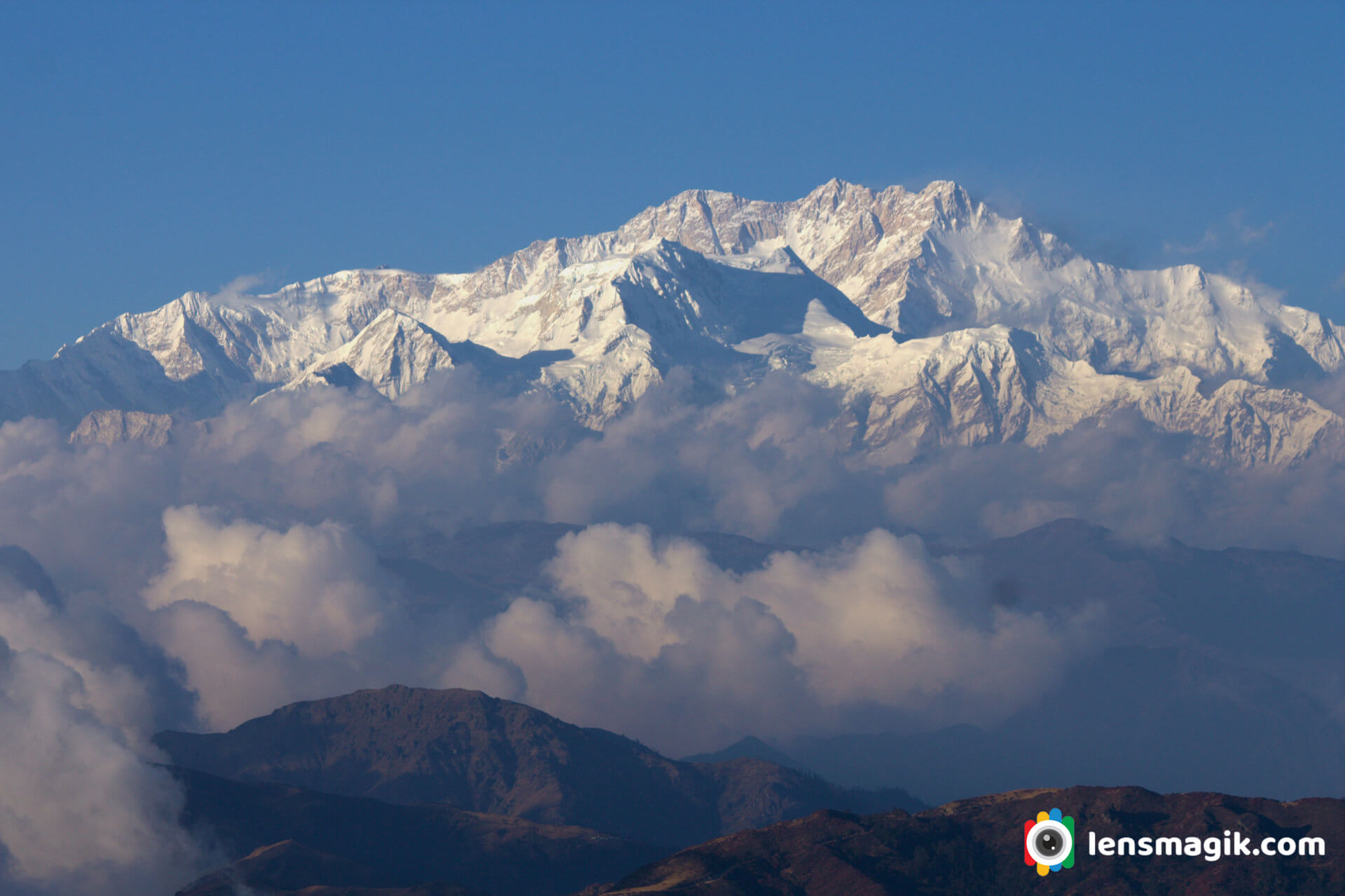
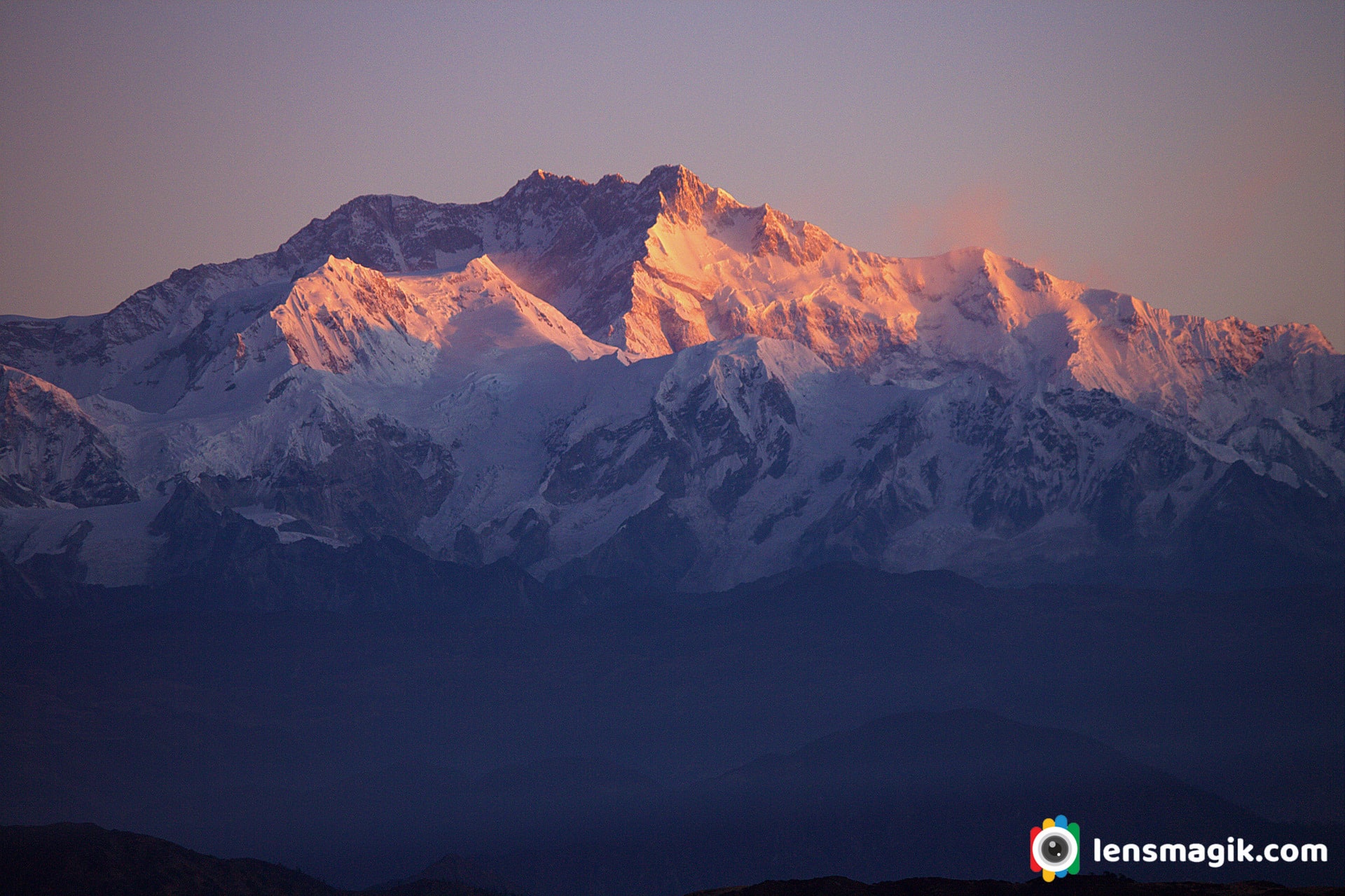
Sandakphu trek is one of the beautiful trek among India and also of Himalayas. During summer lots of trekkers go for these trek and also Phalut trek. At Sandakphu you can stay a night and just see at night the sky is full of stars. I was never seen such stars in my life. A milky way you can see and it was amazing experience of star gazing at Sandakphu. Also after dark a sunrise is beautiful as enough. At 4 or 4:30 am sunrise time and we were ready to see first light of sun rays on Himalayan mountains. The color of rays are red orange color looks beautiful on snow mountain of Kanchenjunga. Thats the beauty of Himalayas.
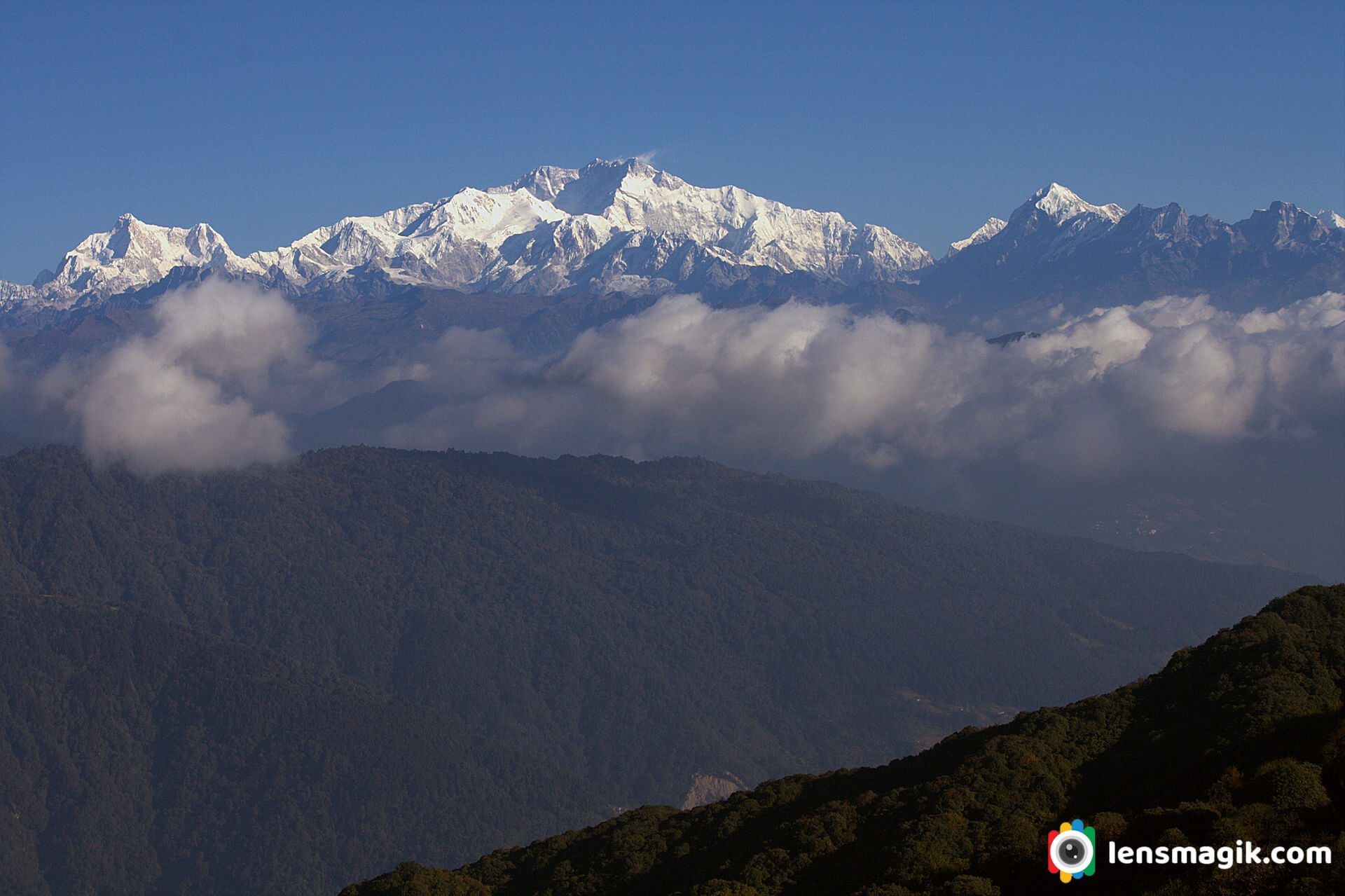
For climbing Mt. Kanchenjunga you can go from Nepal only because Indian Government has been closed Northeastern Sikkim route of Kanchenjunga since 2000. To See Mt. Kanchenjunga from India Sandakphu is the best place. You can go to Sandakphu via Trek or via Range Rover car hire at manebhanjan village. Nearest airport is Bagdogra or you can go to Kolkata and go for overnight train from Kolkata.
Gear used : Canon 1000 D body, Canon 18-55 mm lens, Canon 55-250 mm lens.